What to Bring to Asia
Simple Items to Supplement Your Asia Packing List
:max_bytes(150000):strip_icc():format(webp)/greg-rodgers-adventure-ed92646b25f247049e53af6d36f6c15f.jpg)
There is no one packing list for Asia travel that works for everyone; the goal is to get into the right mindset.
Packing for lots of unknowns can contribute to pre-trip stress. Most items can be purchased inexpensively once you arrive. You'll inevitably take advantage of cheap shopping opportunities in Asia , so your bags are guaranteed to grow. Leave room — being overpacked isn't fun and will certainly make getting around a lot less enjoyable.
Unless you'll really be going into the wild , chances are that you can buy whatever you forgot to pack. There are, however, a handful of items that may be tougher to locate, more expensive, or unavailable altogether in Asia.

Consider Bringing These Items With You
Although there are exceptions, these items are best brought from home:
- Deodorant: The deodorants in Asia rarely contain antiperspirant; many are just sticky perfumes. Others contain whitening agents — check ingredients carefully if they're listed in English. Western brands are sometimes available but may by expensive when you find them.
- Sunscreen: Although whitening creams are common, locals may prefer to cover skin or carry an umbrella rather than apply sunscreen. Much of the sunscreen that you find will either be expired, will contain whitening cream, or will be expensive and less effective.
- Insect Repellent: Despite the prevalence of mosquitoes and dengue fever in tropical parts of Asia, the local insect repellent may or may not work effectively.
- Condoms: Condoms in Asia can sometimes be expired or unsafe because of improper storage in hot climates.
- Passport Photos: Some countries require one or two passport photos when you apply for visas, permits, or mobile phone SIM cards . Bringing your own official-sized photos will save the time, hassle, and expense of having photos made on the spot. Any printing shop at home can duplicate a few sheets of passport photos for cheap.
- Small Padlock: If you intend to stay in hostels or budget hotels, bring along a padlock for securing your valuables in the lockers provided. Also, some rooms in budget hotels can be locked via a padlock on the outside; bringing your own provides an extra layer of security .
- Tampons: Women should bring tampons from home; they can be difficult to find outside of big cities in Asia.
- Small Compass: No need for anything fancy, just a small ball-style compass will do fine when your smartphone maps aren't available or reliable. Sometimes directions come in the form of "turn west at the end of the road."
- U.S. Dollars: No matter the current state of the economy, the dollar still works well as a source of emergency funds in much of the world. The dollar is used frequently in Burma, Cambodia, Vietnam , and Laos.
- Vitamins: Public transportation and jet lag can be tough on the immune system until your body readjusts. Consider bringing vitamins or supplements to boost the immune system, or better yet, take advantage of the delicious fruit in Asia.
- Drink Mixes: The tap water in many countries in Asia isn't safe. Drinking bottled water to replace fluids lost in Southeast Asia's heat gets boring. Many of the choices in minimarts are full of sugar. Consider bringing drink packs with electrolytes that can be added to bottled water.
- Point-It Book: The Point-It book by Graf Editions is useful in places such as rural China and India where communication can be a challenge . The smartphone app is an alternative.
- Rain Cover: Luggage is sometimes put on top of buses and on the decks of ferries. A pop-up storm could leave your stuff soaked, even if you're not traveling during the monsoon season. A lightweight rain cover comes in handy for protecting backpacks. If nothing else, consider lining suitcases with a plastic garbage bag .
Toiletries in Asia
Although toothpaste, shampoo, and other toiletries are relatively cheap in Asia, you may not find the familiar Western brands you prefer.
Check lotions, creams, and deodorants for whitening agents before you buy them.
Medicines and First Aid
Pharmacies can be found throughout Asia, but your prescription medications may be sold under different names and labels. For convenience, bring a few medical essentials along .
If carrying a lot of pills on an extended trip, bring along copies of a prescription or doctor's order. Many prescription medications can be purchased directly over the counter in Asia.
Items to Carry at All Times
- Toilet Paper: Many countries in Asia do not provide it in public toilets. Always keep some handy for encounters with squat toilets . Don't flush toilet paper unless you're certain doing so won't cause a problem. Although there are a few exceptions, the sewer systems in many countries cannot process paper. Instead, put the toilet paper into the bin beside of the toilet.
- Hand Sanitizer: Those same public toilets that do not have toilet paper also will not have soap for washing your hands afterward.
- Smartphone or Small Camera: The most random things can be seen when wandering the streets of big cities in Asia — be prepared! Although a larger camera such as an SLR will help you to capture great pictures , you may not always have time to get it out fast enough.
Stuff to Leave at Home
Travelers end up packing a lot of things they don't need. These items should be left at home:
- Voltage Converter: Most electronic chargers can operate between 120 and 240 volts; look on the power adapter for the operating range. Unless you carry devices that specifically only work on the U.S. standard of 120 volts, you do not need to bring a heavy power converter . USB chargers for most modern devices are typically dual voltage.
- Phrase Books: Although guidebooks may be somewhat useful and most have limited language guides in the back, phrase books are becoming a remnant of the past. Smartphone apps will better help with pronunciation, or better yet, ask a local to teach you one or two new words daily. At least you'll learn the right usage and pronunciation with human help.
- Personal Protection: Pepper spray, stun guns, and other weapons that are legal in Western countries may not be legal where you are going. You could get yourself into trouble when crossing borders with such items. Don't worry: with crime lately far lower than expected in big cities, it's easy to stay safe in Asia.
Should You Bring a Smartphone?
Many U.S. mobile phones will not work in Asia. Unless your phone is GSM compatible (T-Mobile and AT&T) and will work with SIM cards, it will not work for making calls in Asia. On the other hand, a smartphone can be used solely for internet access and to make internet calls with services such as Skype and WhatsApp. There are many options to call home from abroad . Find out if you can use your cell phone for international travel .
The 14 Best Survival Kits of 2024
The Best Travel Camera Cases and Backpacks of 2024, Tested and Reviewed
The Ultimate Thailand Packing List
33 Packing Hacks That Will Change the Way You Travel
Bali Packing List
The Best Daypacks for Hiking of 2024, Tested and Reviewed
Packing List for an Overnight Hike
Prepare for Overseas Travel With This Checklist
Independent Trekking in Nepal
What to Pack for Mexico
The 10 Best Travel Adapters of 2024
The 11 Best Travel Money Belts of 2024
Asia Travel
Vacation Packing Checklist for France
The 9 Best Power Adapters for European Travel of 2024
Top 10 Travel Essentials
The foolproof packing list for Asia: 16 must-have travel essentials
Welcome to our ultimate packing list for Asia travel essentials
From mountainous jungle to enticing oceans, massive religious monuments to historical ruins, Asia has so much to discover. When you also consider how cheaply you can travel much of the continent, there is no wonder it is one of the best backpacking destinations in the world.
Given that Asia is so immense, many visitors opt to travel slowly across Asia to absorb as much of the beauty and culture as possible.
With that in mind, we have come up with this handy packing list for Asia travel fundamentals and gadgets to help long term travelers and short term tourists alike.
Where the recommended product is a little expensive, we have also recommended a budget option too.
You may also enjoy:
- Best International Travel Surge Protector
- Best Extension Cord For International Travel
- Best Travel Crib For Flying | Top 10 And Buying Guide
Coming up Traveling Fundamentals Recommended travel tech Travel Health The ultimate must-have essential Affiliate disclosure: The links to tours or accommodation in this post are affiliate links. This means if you purchase after following one of these links, I make a small commission at no cost to yourself. Think of it like a win-win ?
Traveling Fundamentals
A bloody good backpack.
You gotta have one of these if your backpacking right? Since there is tons of walking when visiting Asia, a comfortable and well-organized backpack is a travel necessity.
There are a couple of things you may want to consider before investing in a backpack. First is if it has waterproof features, it is common to get caught in sudden downpours in certain parts of Asia frequently.
The other important consideration is if you be checking it in. If you plan not to, make sure it fits the requirements of a carry on backpack .
We recommend: Osprey Packs Farpoint 40 travel backpack
Of course, the backpack you need will depend heavily on the size you require, however you cannot go far wrong with the Osprey brand. One such backpack is the Osprey Farpoint 40 that opens like a suitcase. Made of a durable material osprey Farpoint 40 boasts of roomy compartments, a plethora of pockets and lockable zips to keep your all your travel gears intact. For maximum comfort when covering long distances, the pack has generous padding and adjustable straps for perfect fitting. The long-term traveler will appreciate the padded laptop sleeve and a lifetime warranty that comes with Osprey products.

On a tight budget? Try the Gonex 55L hiking backpack with rain cover

Packing Cubes
When I discovered packing cubes, it was a game changer when packing for long-term travel. They maximized space and helped my previously disaster zone of a backpack to stay organized. They also come in handy when separating clean clothes from dirty ones. The good thing is that they come in various sizes to accommodate different sizes of clothes. For easier identification of the piles of crap that will accumulate in your backpack, you may find it easier to pack in cubes of different colors.
We recommend: Eagle Creek Pack It Original Starter Set
Eagle Creek makes excellent packing cubes. They are lightweight, washable, and made of top quality fabric. With over four colors and different sizes to choose from Eagle Creek is a must have for every backpacker.

On a tight budget? Try the 7-pc Travel Packing Cube System

Backpack lock
Traveling with unlocked luggage can weigh on your mind, especially when you are in dorms. Now I will happily say that almost all of the hostels that I have stayed in, I have felt confident that my stuff is safe, but there is always one or two where you feel a little nervous about leaving things behind. opportunity. That is why I have tracked down some backpack locking systems for my packing list for Asia.
We recommend: Pacsafe Backpack and Bag Protector
For ultimate peace of mind, take a look at this full on wire mesh backpack lock. You just slip the backpack in there, lock it up and no one will be getting in.

On a tight budget? Try the TSA Approved Luggage Locks
While these locks aren’t perfect, most thefts are a spur of the moment decisions and by adding a lock to your backpack, it will certainly deter thieves. The cables on these locks are a good length and should slip over most buckles as well as zips. If it is too small, you can always connect two together.

Ultra-portable water bottles
To keep well hydrated and save on the cost of purchasing bottled water ever time, one of the best travel accessories to pack is a lightweight bottle. Reusable water bottles also help in reducing plastic waste accumulation. Since drinking water is readily available in Asia, you just fill your bottle before long day adventures and enjoy your travels.
We recommend: Vapur Element BPA Free Foldable Water Bottle
Vapur element flexible bottle is a great solution. It is foldable, takes up little space, is cheap and BPA free. You can freeze water with them, and they are easy to clean.

On a tight budget? Try the Qnch Collapsible Water Bottle

Portable luggage scale
Overweight luggage can decimate your budget quicker than an ice cream melts on the equator. So to avoid this, a great little accessory is a small luggage scale.
We recommend: Camry luggage scale
With Camry portable travel scale, there is no more guesswork or excess baggage you can travel confidently. Camry is accurate, easy to hook on the bag, and is small enough to fit in your backpack. This handheld digital scale comes with a battery that holds power for a long time. The digital readout display is visible and large.

A headlamp is a great travel accessory for outdoor activities, especially for long-term travelers backpacking Asia. Whether it is during unexpected power outages, hiking at dusk or merely trying to find the toilet at midnight in a dorm room when others are sleeping, headlamps are part and parcel of your travel packing list.
Unlike a flashlight, the great thing with headlamps is that they free your hands so you can multitask while ensuring your path is well lighted.
We recommend: GRDE rechargeable headlamp
We love the GRDE rechargeable headlamp, it is one one the brightest headlamps available while also being waterproof should you get caught in the rain. We also love the fact that it is a rechargeable headlamp but it can also be powered by standard batteries should you find yourself away from power for an extended period of time. Finally, it boasts of three brightness level that can be adjusted by the switch (perfect for not disturbing dorm mates), lightweight and has a comfortable and adjustable strap.

On a tight budget? Try the LE Headlamp with 4 lighting modes

Microfiber travel towel
Trust us when we say a packable travel towel is essential travel gear. We have seen many of the rentable towels in hostels, and quite frankly, we’d rather not see them again. Look for a towel that occupies minimal space in your backpack yet a quality product that lasts. Due to variation in climate travelers envy a quick-drying material that is washable and durable.
We recommend: ECOdept microfiber travel towel
The Ecodept microfiber travel towel is a great choice. Made of a soft, absorbent, quick drying, and feather-light material, the microfiber towels comes in different sizes. When rolled, it will fit comfortably in your carryon without eating space.
Note: To ensure they retain their absorbency, avoid using fabric softeners and detergents.

On a tight budget? Try the 4MONSTER packable microfiber towel

There will be a stage in your journey where these come in handy. Crossing the Zambezi to take a leap into the Devil’s Pool or just swimming in the ocean and don’t fancy leaving your valuables behind, a dry bag can come to the rescue.
They are great little things to stow away as they really don’t take up much space and offer plenty of use.
We Recommend: Freegrace Waterproof Dry Bags
These dry bags feature double closure strip seals at the top to prevent water from coming in and the larger bags also have added protection with a roll top fastening. They are extremely sturdy, lightweight, tear resistant and best of all, it floats.

Recommended Travel Tech
Portable travel charger .
These have been a lifesaver for many travelers visiting Asia. Not much is more irritating than getting a flat battery in a foreign land. Given that while traveling, you will often find yourself outdoors or in transit and away from power outlets, the chances are that at some point, your phone is going to run out of juice. Don’t underestimate how much Google mapping, communicating with loved ones that you’re safe, and of course taking millions of amazing pictures to show off to your friends stuck at home. These are all battery sapping behaviors, so a backup powerpack is borderline essential .
Note: Most power banks use lithium-ion batteries that most airlines won’t allow to be checked I, so make sure you keep it in your carry on. Having been over the Atlantic ocean while smelling burning on a plane as one of these set fire in the hold, I can promise, it is for a reason. It is not a nice feeling!
We recommend: Anker PowerCore Lite 20000mAh Portable Charger
The Anker 20000Mah power bank offers great value. With two USB ports, Anker is super fast at charging and easy to use. Just make sure you remember to charge the charger, plugging your phone into it to see it too is dead is awful, trust me, I’ve been there.

On a tight budget? Try the ZMI PowerPack 10000mAh Fast Charging Portable Battery Pack

Lightweight but great travel camera
While phones are getting better at taking photos every day, for most serious photo-backpackers, a camera is an absolute essential travel accessory. There is nothing more fulfilling than capturing your best travel moments, scenic landscapes, and iconic attractions. Given that Asian destinations are a dream for photographers, an excellent lightweight camera is a must have for backpackers. While DSRL seems to do a great job, they are heavy and may not be an excellent choice for the minimalist traveler or long term traveler traversing Asia due to portability.
We recommend: Sony Alpha 6000 mirrorless camera
The Sony Alpha 6000 mirrorless camera is a great choice. Apart from being reasonably priced, a6000 captures fantastic photos and record great videos at 1080/60p. Thanks to its easily accessible manual settings featuring the menu button, dual function dials, and function button beginners can easily customize the settings. It has an in-built Wi-Fi and is light to travel with. It features filters, epic low-light performance, and autofocus system to ensure the quality of your images is maintained.

On a tight budget? Try the Nikon COOLPIX B500 digital camera

Pocket wifi
An international wifi hotspot is incredibly useful when it comes to long-term travel. A connection has become an essential ingredient of everyday life. The most common challenge travelers’ face is slow speed, unstable and insecure WI-FI. Since most long-term travelers work online to sustain their nomadic lifestyle, stable and robust portable Wi-Fi is non-negotiable. Portable Wi-Fi comes in handy when traveling across many countries as you need to keep in touch with your clients.
We recommend: GlocalMe 4G LTE International WiFi Hospot
If you plan on spending much time exploring Asia, then Glocalme mobile hotspot is your perfect match. It is super fast and can basically keep you connected in most countries, especially in Asia. Glocalme comes in three different packages depending on the number of countries you intend to visit. This wireless connectivity password protected to avoid data leakage and can connect to multiple devices.

On a tight budget? Try the ZTE Velocity 4G LTE Mobile Pocket WiFi Hotspot

Noise Cancelling Headphones
Crying babies, snoring passengers or noisy neighborhoods, we’ve all had our peaceful journeys affected by one of these at some point, right? This can be frustrating, especially at night or during long flights, making it hard to sleep, read, or simply stay calm. Well, the good news is that noise canceling technology is fantastic and a great travel accessory.
We recommend: Bose QuietComfort 35 II
Bose quiet comfort 35 is an excellent choice that guarantees calm and peaceful travel experience. It has unparalleled noise cancellation, long battery life, and superior sound quality and is Bluetooth enabled.

On a tight budget? Try the COWIN E7 Active Noise Cancelling Headphones

Travel extension cord with USB
If you are an avid traveler, you’ve probably noticed that power outlets are not always located in the most convenient spots. Whether you are in hotels, hostels, cafes, or airports, you may find that outlets are too few to charge all your gadgets. A power strip with multiple outlets and extension cord is your ideal travel companion. It gives you the freedom to charge multiple tech devices at once and close to your desired spot.
On a tight budget? Try the TESSAN 3 outlets travel power strip with surge protector
When it comes to Asia TESSAN portable power strip is the best. For your convenience it futures 5 feet extension cord, three USB ports, two power plug slots, and fireproof material. If you want extra protection for your devices, you can bring a surge protector along.

On a tight budget? Try the UPWADE Outlet Travel Power Strip

Travel Health
Basic first aid kit.
One of those things you hope to never have to use, but you’ll bless the stars if you need it and you have it. Nothing too fancy, just have some plasters, anti-septic wipes, that kind f thing in the case that you get a nasty cut or even have to patch up some leech bites . . . tasty.
We recommend: 66 Pieces Soft Shell Travel First Aid Kit
This little pack is the perfect size for stuffing in your back pack and forgetting about it. For the tiny space inside, it packs a lot in there with almost everything you may need for any unwanted scrapes on the road. apart from tiger attacks. If you get attacked by a tiger, you’re probably better off heading straight to hospital rather than putting a plaster on it.

Portable UV sanitizing wand
OK, time for you to gross out for a minute. Have you ever considered the number of bugs on hotel sheets or even hostel mattresses? Trust me, it’s a lot more than you would probably think.
For the most part, they are harmless. But a lot of travelers don’t fancy sharing their bed with the microscopic hitchhikers. So, luckily some technology will help, the bug killing wand.
We recommend: UV Care ultraviolet sanitizing wand
This portable device uses the power of concentrated UV Rays to kill off many of the germs and bacteria that get in its way. While it’s not going to get everything, it will undoubtedly be an improvement. It will even come in handy for your own sleeping bag if you are traveling long term.

Other recommend health essentials
I just wanted to give you a few extra suggestions that you may want to consider picking up from a local pharmacy before you travel. While they may take up a bit of space and you may never use them, trust me when I say searching for a pharmacy while suffering from crippling diarrhea in a foreign land just to save a bit of space is not fun.
- Insect repellent
- Diarrhea Medicine
- Hand sanitizer
- Rehydration sachets
Final product
So here it is, my top recommendation that I swore like a trooper when I didn’t have it and have never left it behind since. A plug. Yep, it’s that simple. It was when traveling through Africa that I had to do some laundry and none of the damn sinks had plugs. Now I don’t know if you have ever tried cleaning your underwear under running water, but it is bloody difficult. The great thing about a universal plug it is that you will never expect to use, it, you may not even do so, but when you need one, it is very hard to plug a sink with a sock. for the price vs. space vs. how useful it is should you need one, I highly recommend packing one.
We recommend: Universal Silicone Sink Plug
There’s not much I can say about it but look . . . It has a world map on it, that’s cool. ?

If you wanted to know more about my trip through Africa, I have a fun travel diary, How to clean your underwear in Africa , available on Amazon. You can also get a digital copy by joining my mailing list . Only updates, no spam 🙂
Final Words
Travel accessories make trips smooth and more enjoyable. They save space, time, and money and offer traveler peace of mind. While the packing list may differ from each individual, the above-listed items are very beneficial and are worthy of investing in.
Leave a comment Cancel reply
This site uses Akismet to reduce spam. Learn how your comment data is processed .
- Meet the Team
- Work with Us
- Czech Republic
- Netherlands
- Switzerland
- Scandinavia
- Philippines
- South Korea
- New Zealand
- South Africa
- Budget Travel
- Work & Travel
- The Broke Backpacker Manifesto
- Travel Resources
- How to Travel on $10/day
Home » Southeast Asia » Packing List
Southeast Asia Packing List • ESSENTIAL Items you NEED (2024)
Traveling through Southeast Asia is the definition of backpacking. Not only does it offer an adventure at every turn – it’s also gorgeous, diverse, culturally-rich, party-packed (if you’re into that sort of thing) and hospitable – and did we mention that it’s super cheap? If you like the idea of comfortably covering costs of accommodation, transportation, and meals for less than $50/day, you’ll be in heaven.
South east Asia covers nine different countries – Cambodia, Indonesia, Laos, Malaysia Myanmar, the Philippines, Thailand, Vietnam – and the 9th is Singapore. Each country has varying activities, traditions and weather conditions – so you probably have a lot of questions about exactly what to pack for Southeast Asia.
And you’ve come to the right place to get your answers! We’ve put together this Southeast Asia survival guide that includes your top needs packing list, tips on what to wear in SE Asia to be comfortable and culturally appropriate.
Ok, let’s dive right in!
The Ultimate Southeast Asia Packing List
Pack for southeast asia checklist: personal gear, the basic stuff to pack for southeast asia, final thoughts on what to pack for southeast asia.
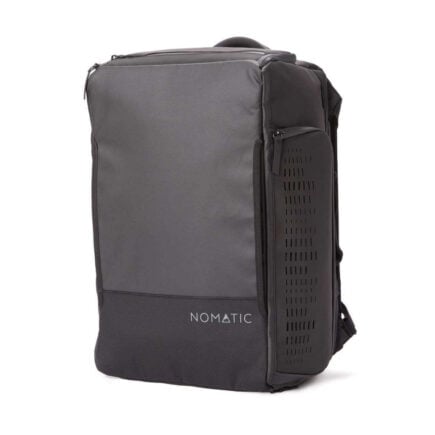
Nomatic Travel Bag
- Capacity > 30L
- Price > $299
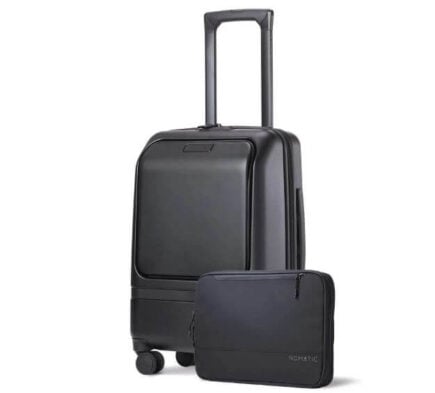
Nomatic Navigator Carry On
- Capacity > 37L
- Price > $400
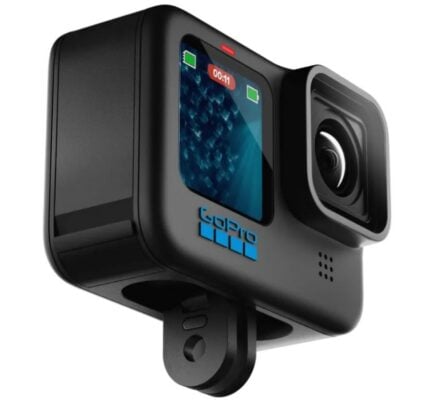
GoPro Hero 11
- Resolution > 5k
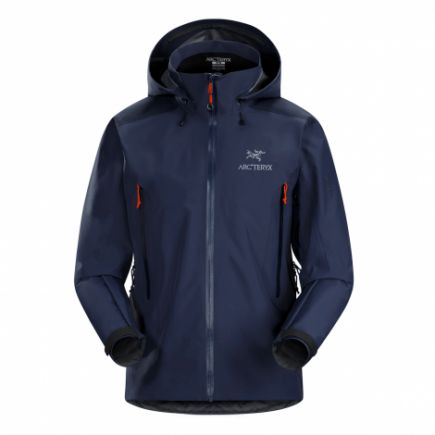
Arc’teryx Beta AR Jacket
- Price > $600

Insurance From World Nomads
- Price > Click For a Quote
For many of you, this may be your first proper backpacking trip. With that in mind we shall ease you in and tell you exactly what to bring to Southeast Asia.
By the way, Southeast Asia is very popular with bloggers, influencers and ex-pats. If this is you, then check out our Digital Nomad packing list too.

Unlock Our GREATEST Travel Secrets!
Sign up for our newsletter and get the best travel tips delivered right to your inbox.
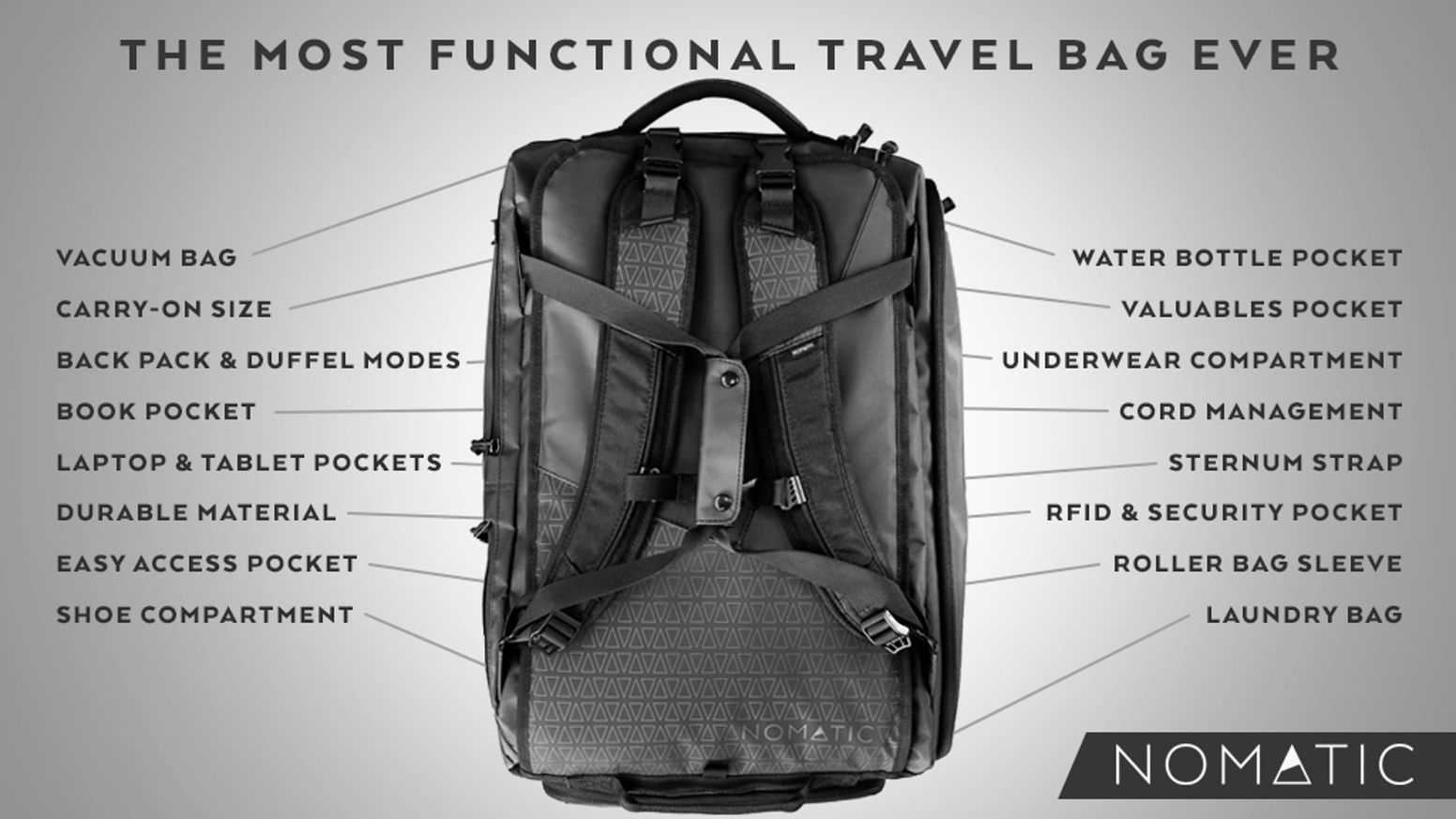
Best Backpack For South east Asia: Nomatic Travel Bag
Before you even take on the task of figuring out what to pack for Southeast Asia, you’ll need an amazing backpack to pack it all into. For all types of travelers and destinations, our number one recommendation is the Nomatic Travel Bag .
The Nomatic travel bag covers every detail to make backpacking travel the best experience. Because of its smart design, it manages to provide loads of packing space in a convenient, carry-on size package! Its handy built-in pockets make plenty of room for all the necessities on your what to pack for SEA checklist – you’ll find separate compartments for important items like shoes, water bottle, electronics, underwear and darn tough socks . As an added bonus, there’s also an RFID-safe and cord management pocket.
You have a choice between backpack or duffel bag carry, and extra carrying comfort for your back thanks to its innovative strap system and detachable sternum strap. And its black, waterproof material is every bit sleek and modern as it is durable and tough. There is a reason why most Broke Backpacker staff swear by this backpack.
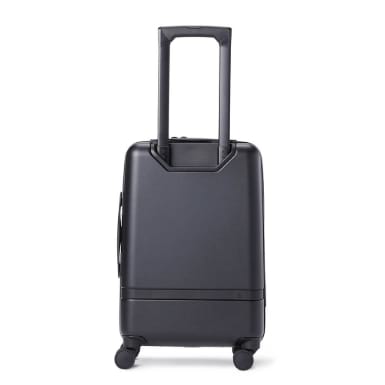
Best Suitcase For Southeast Asia: Nomatic Carry-On Pro
Backpacks not your thing? That’s ok. Our friends at Nomatic are back again with a great alternative to their badass Travel Bag; the Nomatic Carry-On Pro.
This suitcase is ultra-durable, sleek, and comes with a handy tech compartment for transporting your laptop and other electronic bits. Nomatic has been an industry leader when it comes to travel gear and that reputation is reflected in the quality build design and functionality of the Carry-On Pro suitcase.
This is another one for minimalists. However, the big advantage is that you carry it on meaning you get to take advantage of the ultra cheap flights within Southeast Asia.
Check out our Nomatic Carry-On Pro review to learn more about this epic suitcase.
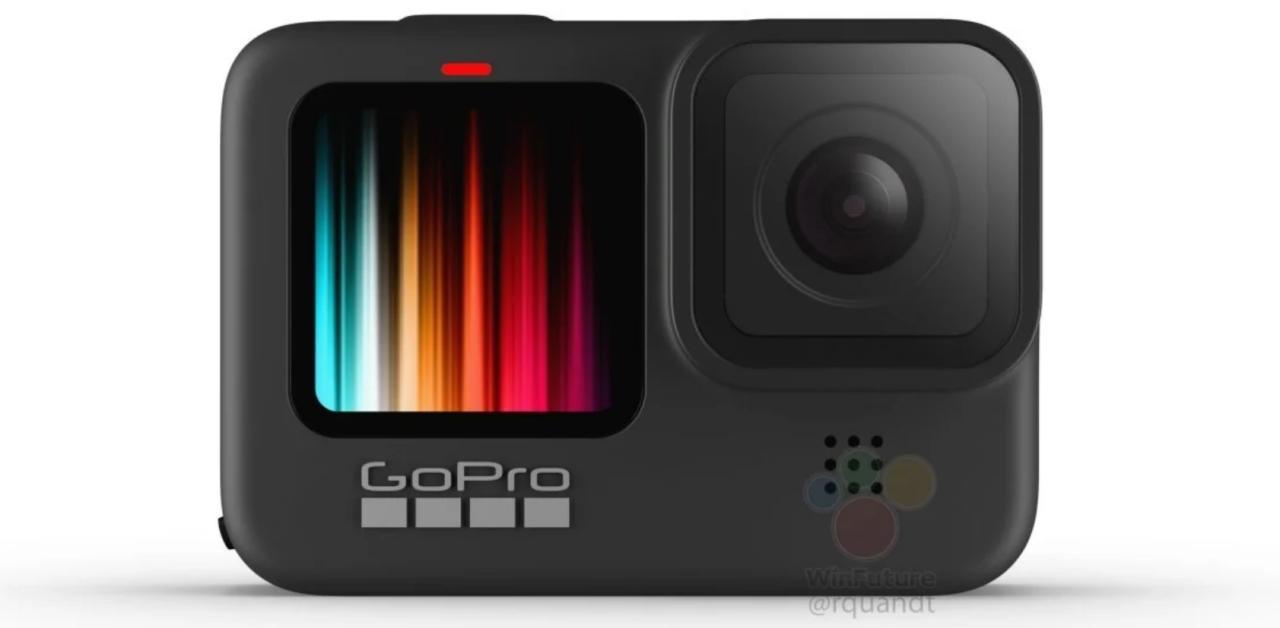
Best Camera For Southeast Asia: GoPro Hero9 Black
For most of us, our smartphones now feature cameras with stunning photo capabilities.
But… if you are an aspiring photographer who wants to take next-level photos and video beyond iPhone selfies, I recommend going with an action camera like the GoPro Hero9 Black .
It does deliver pro-quality video and gives you a bunch of a different angle options and shooting speeds to work with for photos (including a selfie-mode).
Think of a camera purchase like this as a long term investment that will have you capturing epic shots well beyond your time exploring here.
If you are looking for something cheaper for video specifically, check out these epic GoPro Alternatives .

Best Sim For Southeast Asia – HolaFly eSim
The good news about Southeast Asia is that there is extensive 4g and 5g Internet coverage, taxi apps and food delivery apps. The bad news is that your native SIM card will not work and so you will not be able to access any of this online goodness until you rectify that particular situation.
You can waste time hanging around Thai phone shops queuing to get a local SIM card or you can is,ply install a eSim onto your phone before you leave home. You just access the HolaFly site, choose the packages for the country you need, download it and off you go – you are online the moment you land at the airport.
eSims are easier to set up and better than the environment than plastic sims. The downside is that not all phones are eSim ready.
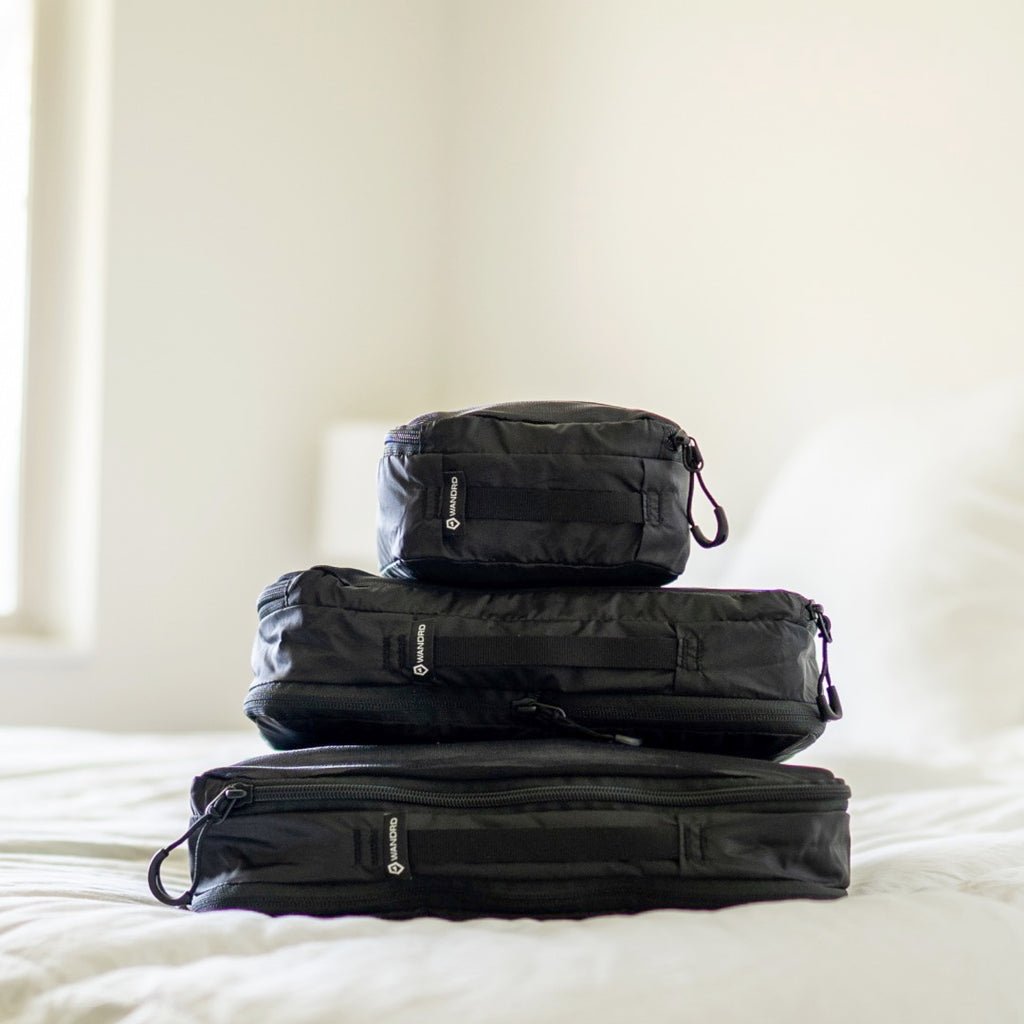
Packing Cubes For Southeast Asia – Wandrd Packing Cubes
In case you have never used them, packing cubes are little compression cubes that allow you to neatly pack clothes in in order to help facilitate better packing. They allow you to pack more stuff, and to keep it all better organised.
For the longest time, I thought that packing cubes were a superfluous indulgence, but boy was I wrong. Now I never travel without a few.
These ones from WANDRD are great quality and excellent value for money. If you decide to pack light, then just buy the smaller ones.
Here is a packing tip and a life lesson – never leave home without underwear. Now that’s out the way, let’s run through our Southeast Asia checklist (drum roll please…).
Packing for Southeast Asia is for the most part pretty simple – a few pairs of shorts and flip flops will take you pretty fair and there is no shortage of markets selling funky shirts and “Leo Beer” vests.
However, it does pay to have a think about the time of year you are visiting and about any activities you wish to do. For example, if you are going trekking or camping you need good gear. If you are visiting in rainy season you may need a poncho!
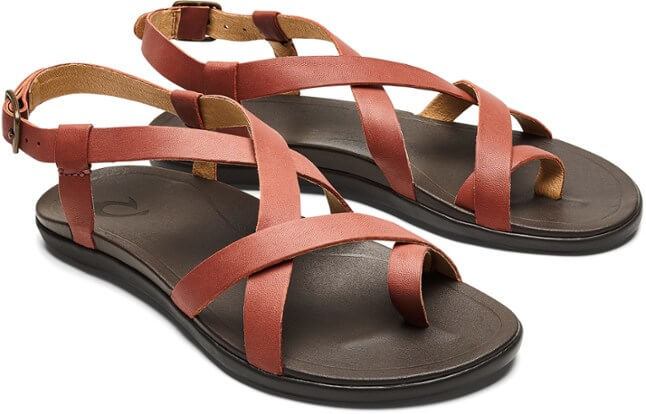
Sandals: OluKai ‘Ohana Flip-Flops
Circling back to the footwear question, now we are going to talk about sandals. Sandals or flip flips or thongs (whatever) are very useful for travelling Southeast Asia. Just remember to trim your toe nails and I personally would not drive a scooter or motorbike wearing these unless you are open to the idea of losing a toe.
Your feet will be tired and sweaty from those long days wearing shoes so do yourself a favor: pack sandals and give your feet some well-deserved cushion and fresh air. These Olukai flip flops are ultra-comfortable, well-made, and come in a variety of colors.
Check out the women’s OluKai ‘Ohana Flip-Flops .
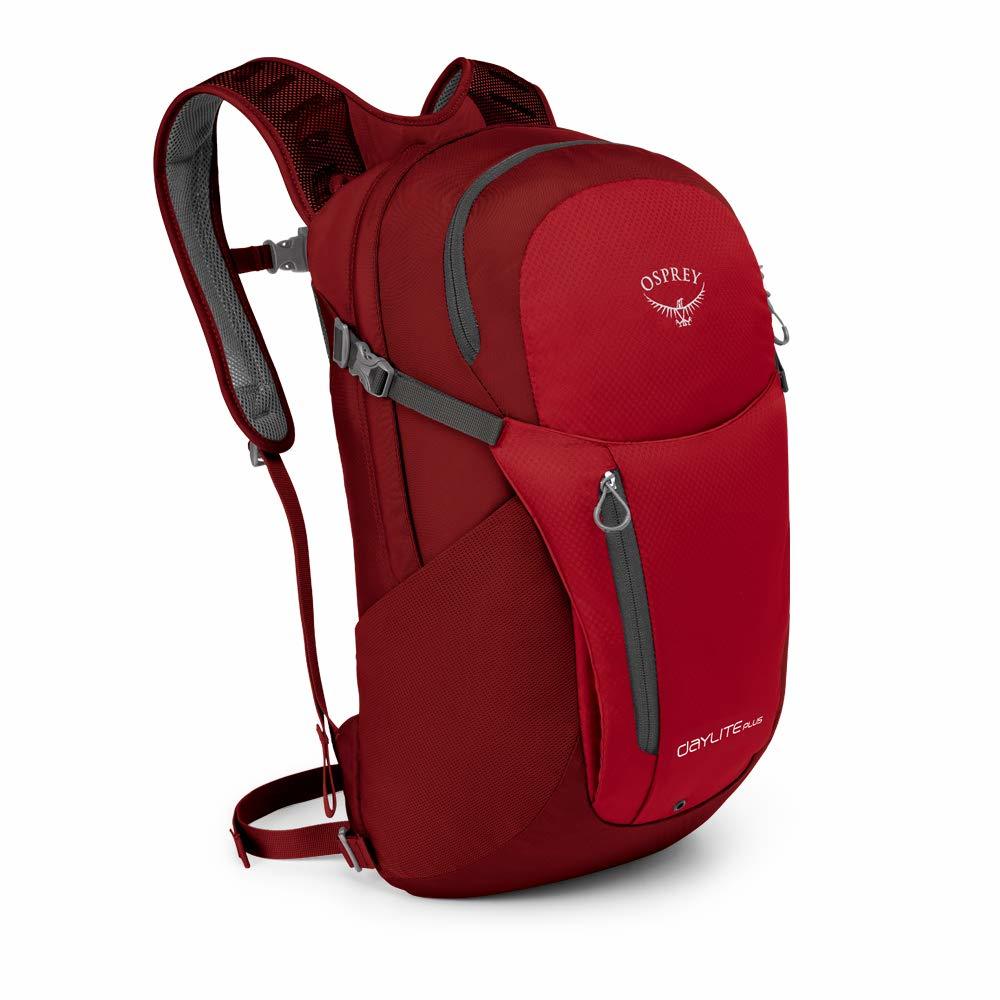
A Good Daypack for Hiking – Osprey Daylite Plus
If you intend on doing any hiking, camping, day trips or even going to temples during your Southeast Asia trip then you will need a daypack. They are great for carrying water, hat’s and gloves and for packing sandwiches for lunch. We love Osprey products and this daypack is our personal pick. It is also very good for beach days and you can fit in your towel, speaker and an inflatable dinghy.
The Osprey Daylite Plus has a mesh-covered panel to keep your back cool and fresh by minimizing contact with the back of the pack itself and allowing air to get between you and the pack.
Check out our full review of the Osprey Daylite plus for more details.
Additionally, you can attach it to other Osprey packs in case you want to add more capacity and carry just one piece of luggage… but the reviews on this feature are mixed.
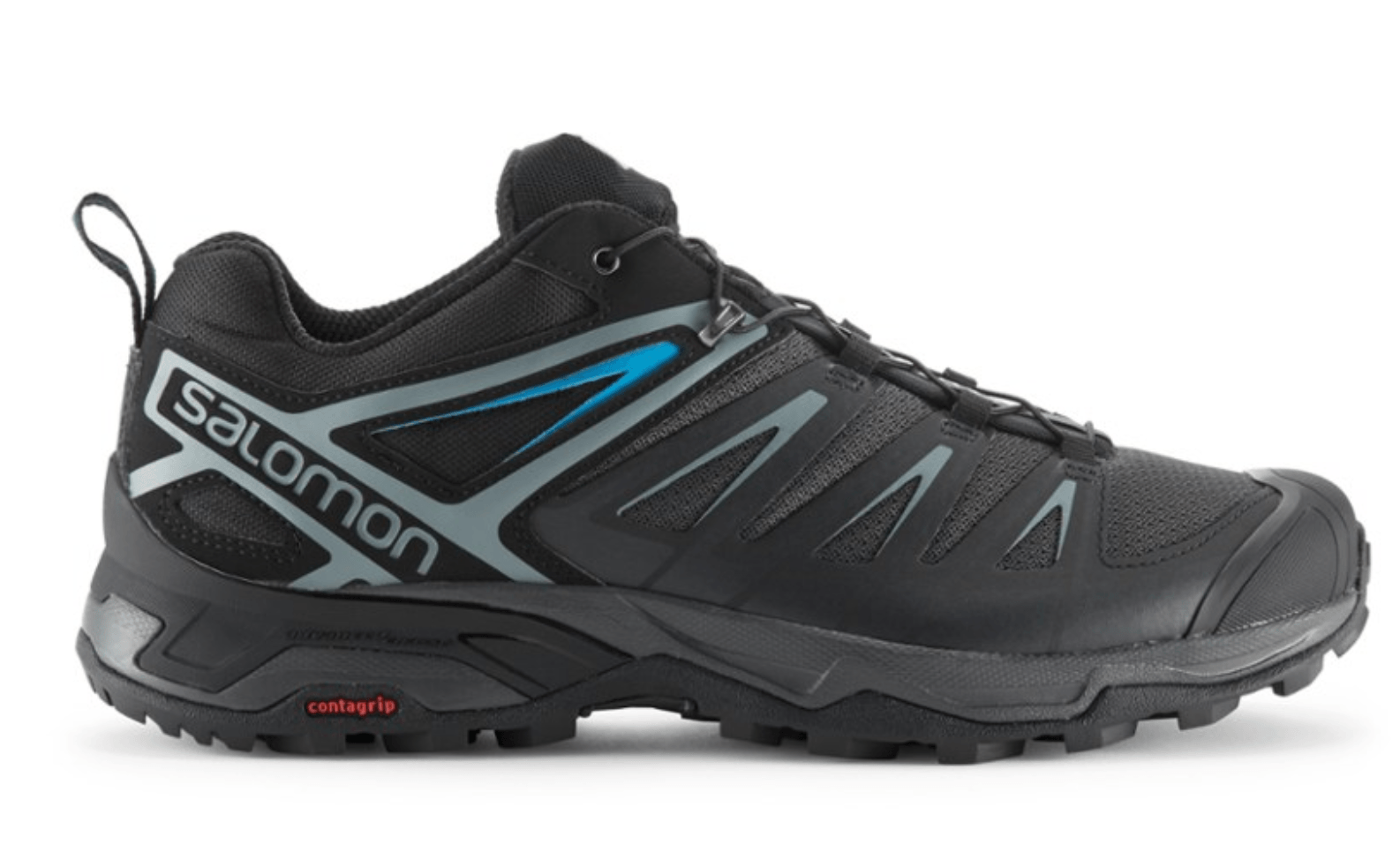
Good Shoes For Southeast Asia – Salomon X Ultra 3 Low Aero
I won’t lie to you, a lot of backpackers in Southeast Asia survive the entire trip in flip flops. Other’s go barefoot a lot of the time. However, we recommend a good pair of tactical shoes – and remember, we are the professionals.
These are useful for hiking, for exploring cities and offer your feet some protection in the event they get mangled in a scooter – believe us, it happens. Take this opportunity to be good to your feet and buy pair today. I mean, your body is already going to be suffering enough from all of those full moon booze buckets you’ll be drinking and all that unprotected sex you’ll be having.
Showing the souls of your feet is also considered to be a faux-pas in many parts of SEA – you won’t have that problem with these!
Check out the women’s Salomon X Ultra 3 Low Aero .
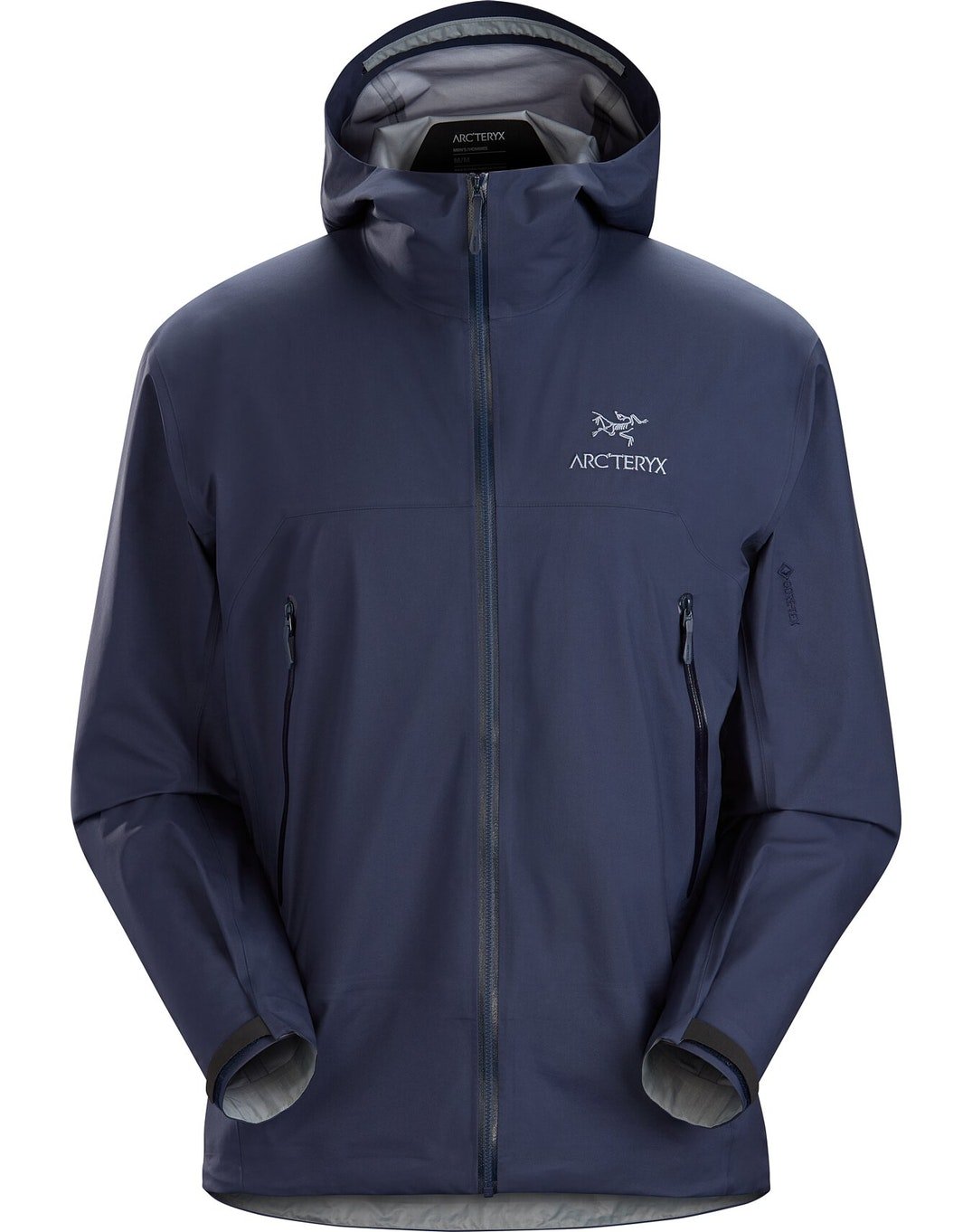
Good Rain Jacket For South East Asia – Arcteryx Beta AR
Did you know that the surface of the earth is 70% covered in water? And you know how that water got there? Yep because it tends to here rain here on planet earth quite a lot!
There is no such thing as bad weather, only the wrong gear for it. Don’t let a bit (of a lot) of rain ruin your trip and make sure you are ready with some top notch rain gear. I was recently in Bali during the rainy season – it rained – everyday. Thankfully I had a rain jacket. If you are packing for Southeast Asia in rainy season, then remember to bring a rain jacket yeah?
This is our pick of the many rain jackets we have tried. It’s reliable & stylish and looks good worn out in the mountains or in city bars.
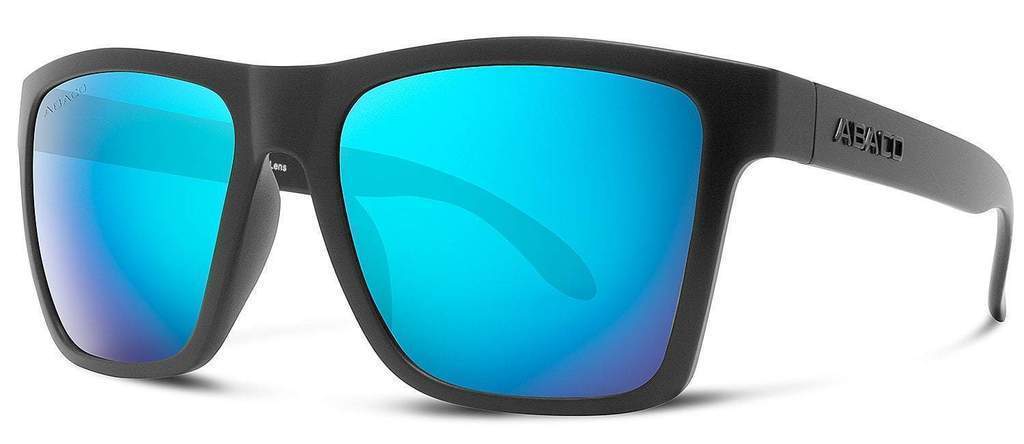
Best Sunglasses For Southeast Asia – Abaco Sunglasses
A reliable pair of sunglasses is undoubtedly one of your Southeast Asia packing essentials. Our favorites are Abaco Polarized Sunglasses because they deliver on quality and style.
They’re built tough with triple-layer scratch-resistant lenses and trademarked Adventure-proof Frame Material. You can also customize them with your choice of lens and frame colors to reflect your own style.

In Southeast Asia, you’re never more than a drunken belly flop away from a blue ocean, an infinity pool or a “what could possibly go wrong” drunken river rapid inflatable ring. So make sure you pack your newest, nicest, cleanest and sexiest swimwear.
We’re not going to tell you what to wear in Southeast Asia (but elephant pants are a thing) but don’t forget Swimming clothes. Please. If you only pack one thing on this list, make it this (and your passport and insurance).
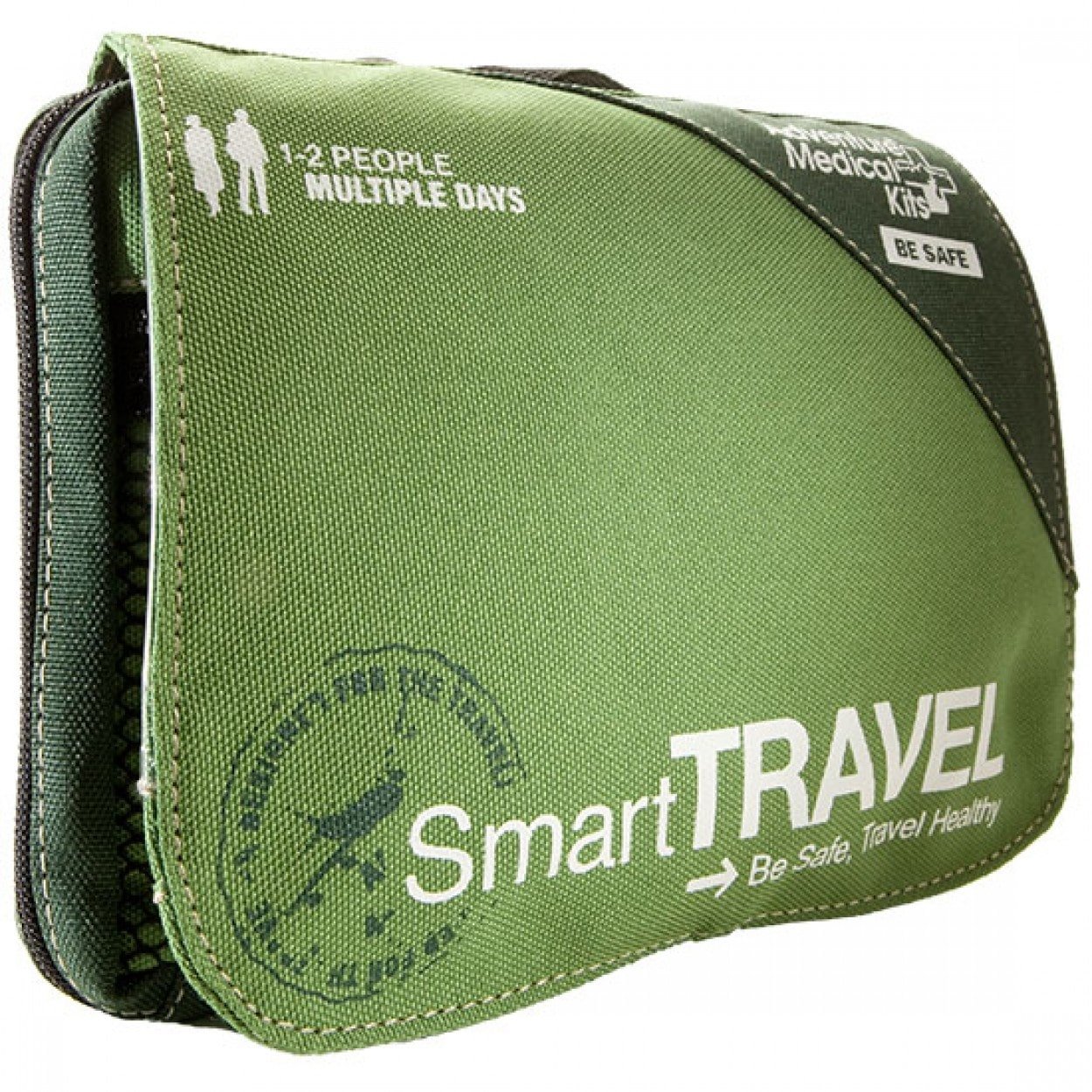
Travel First Aid Kit
You don’t need to tote around half a pharmacy, but a well-stocked first aid kit should be in all our backpacks. Stuff happens on the road and it’s inconvenient and embarrassing when you can’t manage small situations like a cut finger or hangover migraine.
You can tuck this lifesaver away in a forgotten pocket – and it’ll be there when you need it.
Tip: Add a few bits and pieces to the first aid kit after you purchase it, like extra headache medicine, any personal meds you need (like allergy pills), whatever you take to calm your stomach and a few more plasters.
Planner/Travel Journal
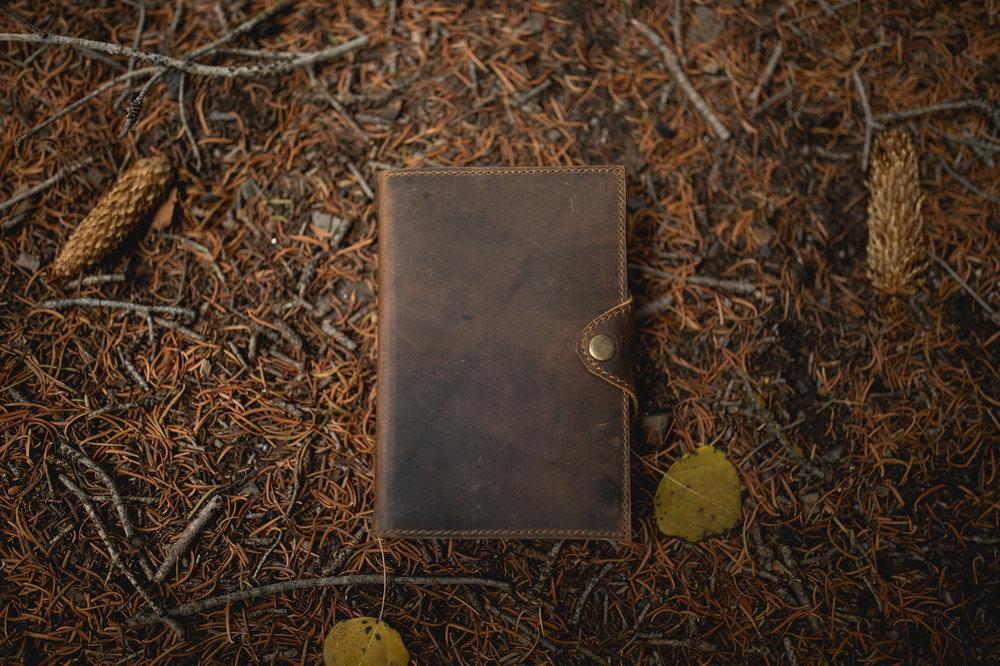
Keeping a journal is one of the best things to do when traveling. The Drifter Leather Journal by Kodiak is our favorite, it works great for digital nomads and organized backpackers and can be used as planner or a dream diary – whatever you want!
Keep on track with your goals, travels and save those precious memories, especially the ones you do not want to share online. This one is bound in beautiful leather so it looks beautiful and will withstand life on the road.
Travel Insurance From World Nomads
ALWAYS sort out your backpacker insurance before your trip. There’s plenty to choose from in that department, but a good place to start is Safety Wing .
They offer month-to-month payments, no lock-in contracts, and require absolutely no itineraries: that’s the exact kind of insurance long-term travellers and digital nomads need.

SafetyWing is cheap, easy, and admin-free: just sign up lickety-split so you can get back to it!
Click the button below to learn more about SafetyWing’s setup or read our insider review for the full tasty scoop.
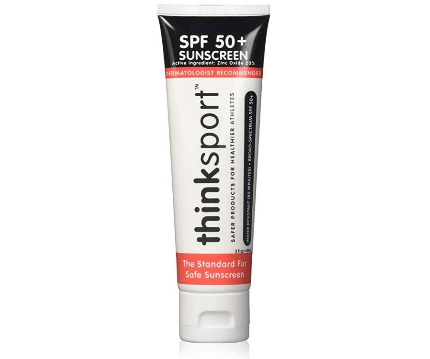
Suncream: Thinksport Safe SPF 50+
Backpackers in Southeast Asia can be neatly divided into 2 categories – the ones who packed & use sunscreen and the reddened, perma-peeling lobsters. Which side do you wanna be on?
Thinksport Safe SPF 50+ sunscreen gives folks strong sun protection in a non-oily formula that’s free of gluten, paraben, phthalates and biologically harmful chemicals.
Seriously guys, it is all too easy to neglect to put sunscreen on but please dont. Getting burned can cause long term health damage.
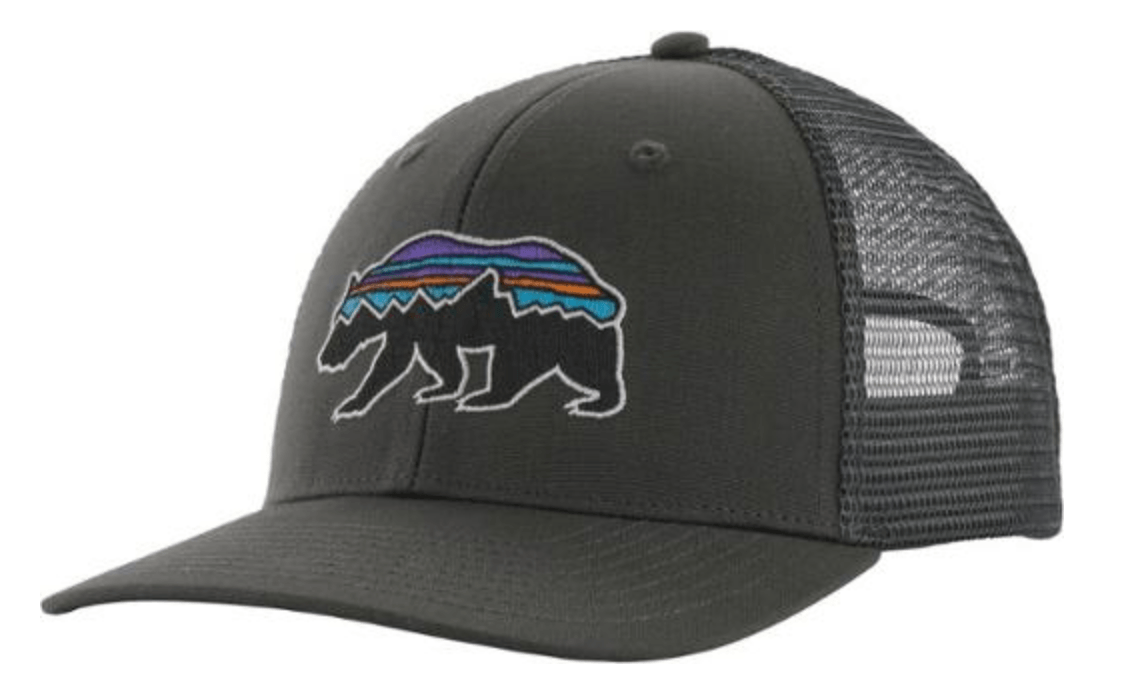
A Hat – Patagonia Fitz Roy Trucker
The poet and songwriter Pete Doherty once said, “there are few more distressing sights than that of an Englishman in a baseball cap” . Well let me assure you that one infinitely more distressing sight is that of this particular Englishmens sunburned forehead hiding beneath monsoon- humid hair.
Baseball caps are great sun-blockers and great for hiding unsightly backpacker hair. I bought one and never looked back. They’re presumably also good for playing baseball.
Patagonia makes great hats. I have probably bought three or four of these over the last five years. Simple. Practical. Comfortable. That is what you are after.
On top of the essential items listed above, here is an additional suggested checklist of what to pack for a trip to Southeast Asia:
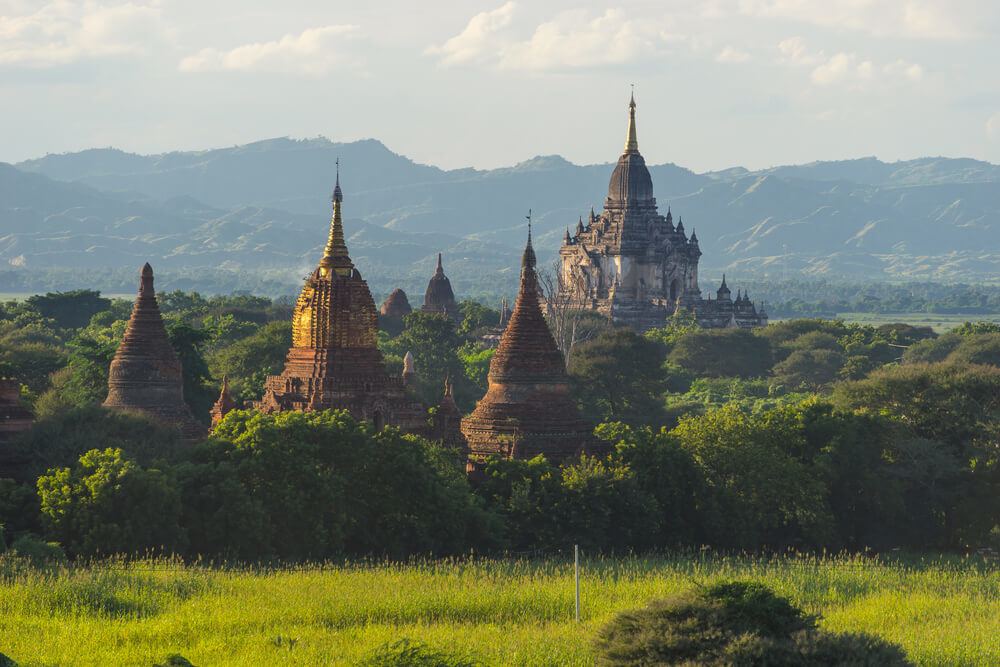
- 1-2 pairs of comfortable pants/jeans
- 1-2 pairs of shorts (summer/late spring)
- A few pairs of socks
- (Sexy) underwear x 5
- Smartphone with a good camera for photos if you are not bringing an actual camera
- Portable power bank for charging your phone on the go
- Phone charger
- Amazon Kindle for reading by the pool
- Condoms. STI’s are not as much fun as they are cracked up to be.
- Copy of your passport just in case
- Cash (not too much, there are ATM machines in major cities and tourist spots)
- Packable Towel
- A packable backpack

Our GREATEST Travel Secrets…
Pop your email here & get the original Broke Backpacker Bible for FREE.
There you have it, adventurous friends! Your ultimate Southeast Asian survival guide complete with a top-22 needs packing list, a seasonal breakdown of weather conditions with wardrobe recommendations, what NOT to pack to save yourself space and extra weight, and our favorite travel bag to pack it all into.
Now you know all you need to know about what to pack for Southeast Asia – so set your mind at ease. Just keep in mind every backpacker’s golden rule – less is more. Stay focused on the essentials that will ensure comfortable and safe travels, and you’re good to.
Now – get excited – because you’re about to embark on the adventure of a lifetime in all the splendor that is Southeast Asia!

And for transparency’s sake, please know that some of the links in our content are affiliate links . That means that if you book your accommodation, buy your gear, or sort your insurance through our link, we earn a small commission (at no extra cost to you). That said, we only link to the gear we trust and never recommend services we don’t believe are up to scratch. Again, thank you!
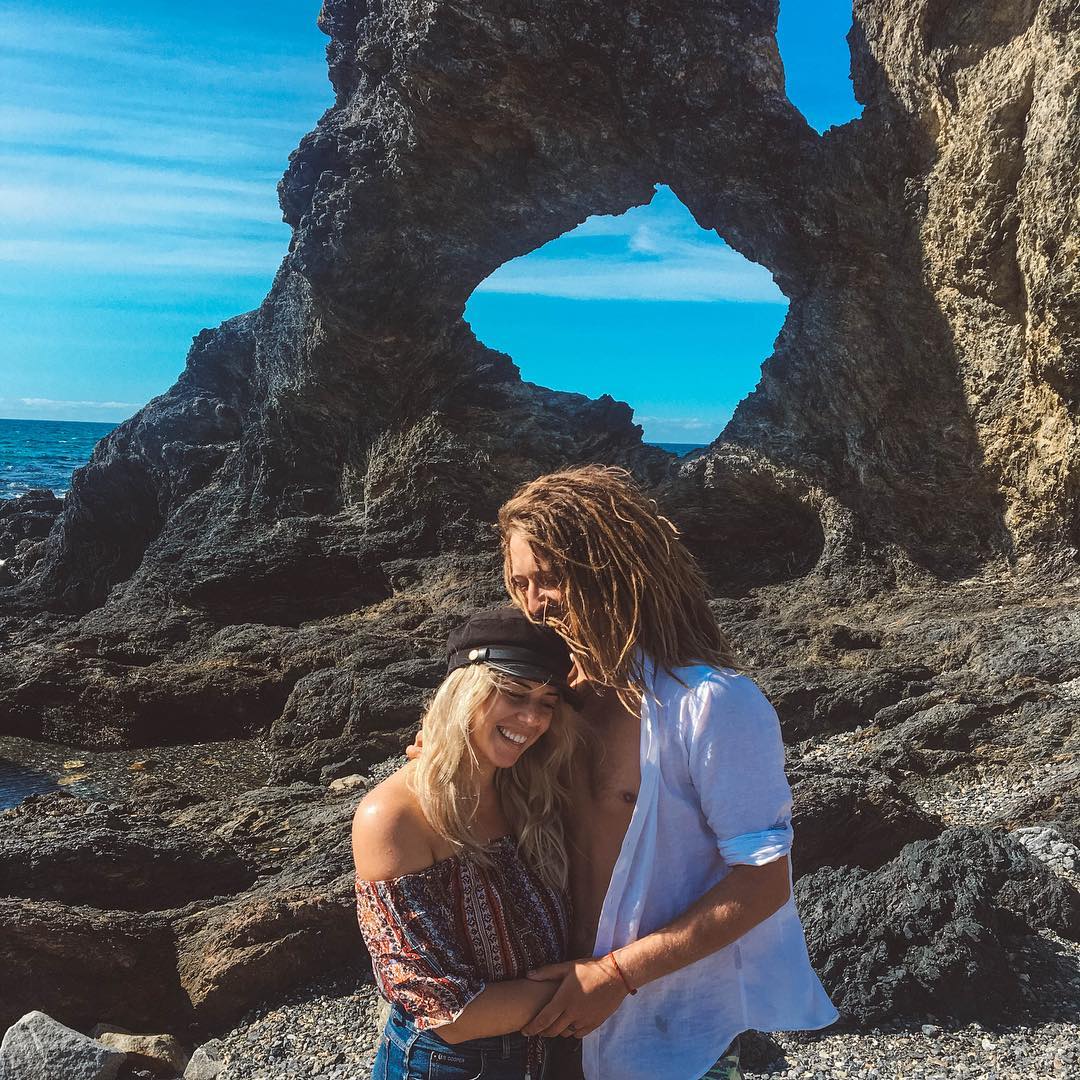
Monique MacPhail
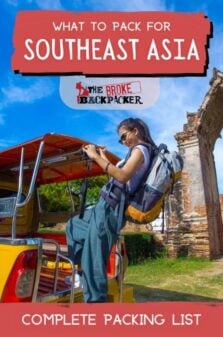
Share or save this post

Leave a Reply Cancel reply
Your email address will not be published. Required fields are marked *
Save my name, email, and website in this browser for the next time I comment.
Notify me of followup comments via e-mail.

Southeast Asia Packing List | Backpacking Essentials Asia
by Melissa Giroux | Last updated Apr 4, 2023 | Asia , Travel Gear , Travel Tips
Backpacking Southeast Asia soon? In this guide, we’ll help you figure out what to pack for backpacking Southeast Asia.
We’ll divide our Southeast Asia packing list into different sections to help you pack everything you need.
Ready To Travel? Don't Go Without Travel Insurance.
Check Prices
When it comes to packing for Asia, it may be challenging at first – especially if this is your first backpacking trip to Southeast Asia!
Without further ado, let’s start with the basics. Then, we’ll cover all the backpacking essentials.

Medical Supplies And Travel Insurance
The first thing to pack for Southeast Asia is a few medical supplies and good travel insurance. If you’re planning on traveling long-term, I’d recommend Safetywing or Genki .
You can read our guide on the best long-term travel insurance to help you decide.
When in Southeast Asia, you should make sure to be careful with what you eat. After all, having a completely new diet could lead to digestion problems.
After being in Bali for so long everybody seems to know what a “ Bali Belly ” is.
We’ve all been there, struggling with a dodgy stomach and running for that toilet that suddenly appears to be super far!
Between the toilet marathon and the flu caused by a pretty powerful AC, there is a high chance that you’ll get sick at some point.
You shouldn’t have to tiptoe around what you eat because you have a big adventure planned for the day. Travelan helps you to enjoy all your experiences while traveling – including the food.
Travelan is a packing essential, especially while traveling in Southeast Asia, as you can avoid the expected and unexpected stomach issues that come with the territory.
You can take one capsule before your meal and let Travelan do the rest.
Make sure you bring a first aid kit that includes tablets for headaches and stomach troubles.
Of course, if you ask me, I’m not always prepared for the worst, but it can be pretty easy to find a pharmacy with the medical supplies you might need abroad.
If you’re about to board a plane or an overnight bus with a dodgy stomach, you might not have the time to run to the pharmacy!
I met many people who hurt themselves while they were abroad, and of course, you could be luckier than them or me! We can’t prevent everything, though!
What if you break your tooth, if you get a naughty bladder infection, or if you crash your scooter? It can be quite hard to avoid infections in Asia.
A minor cut can become pretty nasty quickly in Southeast Asia!
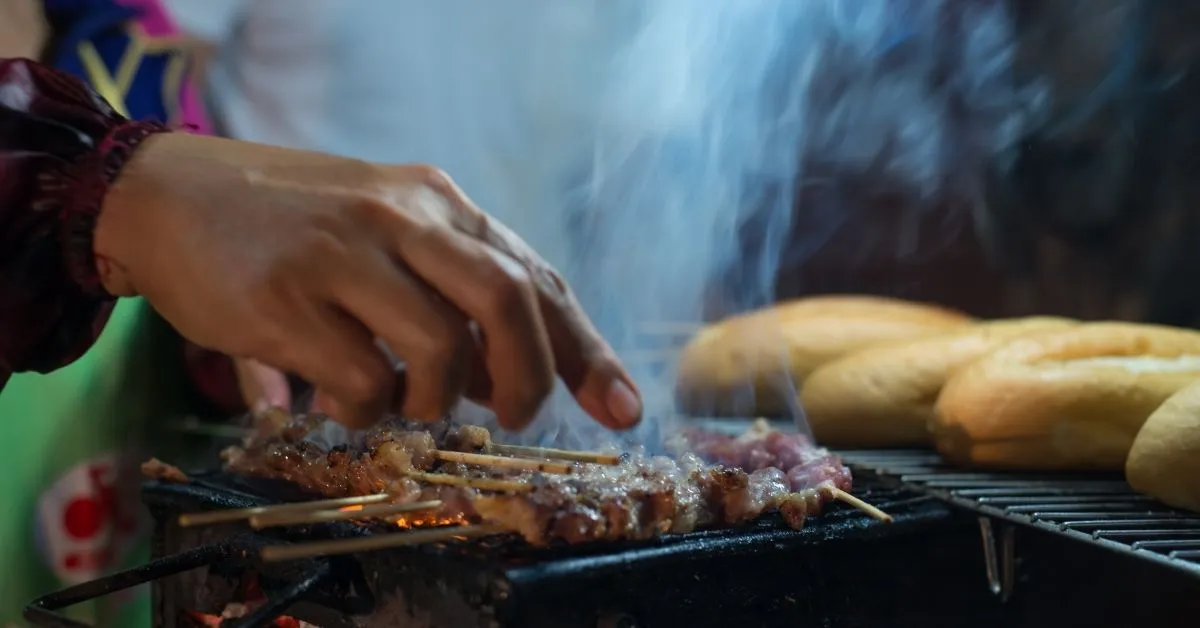
Wondering Where To Buy What You Need For Your Travels In Asia?
We love how convenient Amazon is. Do you?
Best Travel Clothes For Backpacking Asia
Make sure to have comfortable clothes for traveling to Asia.
Think of tank tops, elephant pants , and fluffy clothing. In fact, they are pretty popular amongst backpackers!
Good news – you can always shop for a new travel wardrobe in Southeast Asia, knowing that many other people will also buy some of these trendy, comfy clothes.
You should also pack comfortable travel clothing prior to your trip!
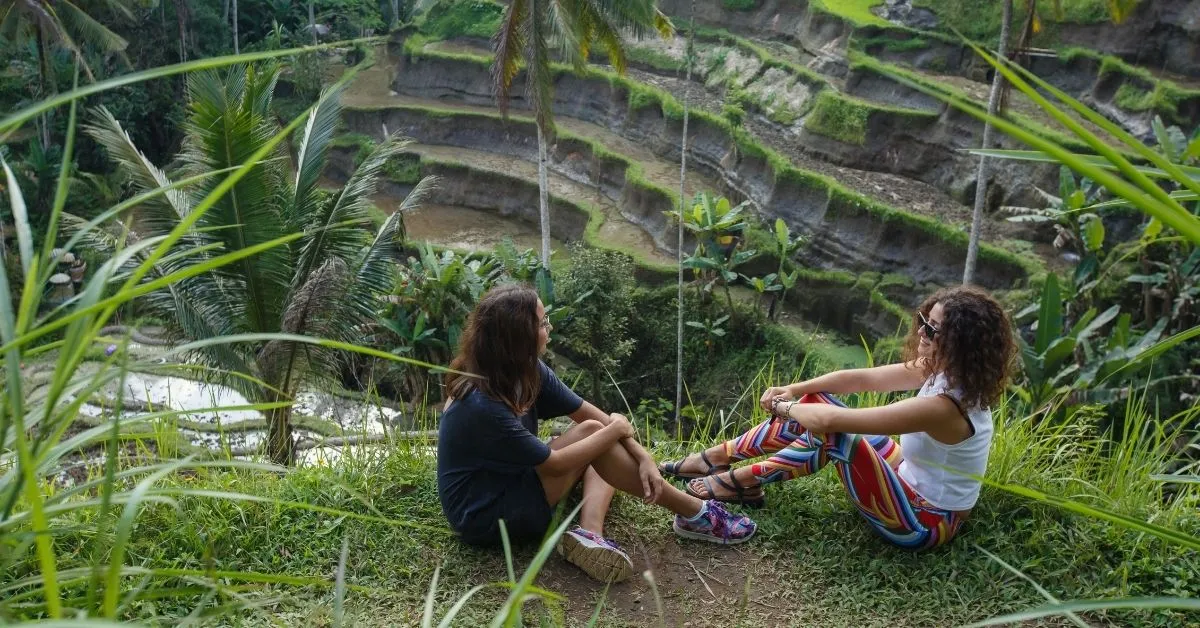
Accessories To Survive The Tropical Weather In Southeast Asia
Grab your straw hat, your sarong, and your sunnies, and put a bit of sunscreen on, and you should be ready to hit the best beaches in Southeast Asia!
Let’s talk about what to pack for Southeast Asia.
You know you want to bring all the essential backpack supplies for your upcoming trip!
- Quick-dry towel
- Waterproof bag
- Day backpack
- Universal charger and adaptors (especially since most countries have different outlets!)
- Hiking shoes
- Mosquito repellant
- Travel pillow

Camera Gear & Tech
Unless your phone takes pretty good pictures already, you could consider bringing a camera with you while you’re in Southeast Asia.
I, personally, always travel with my GoPro and with a few accessories such as a head mount, tripod, and underwater case.
If a GoPro is a bit out of your budget, you could also check out alternatives for underwater cameras.
You should also consider bringing a power bank to charge your phone and other gadgets, especially on a plane or a long bus ride.
If you work online or like to travel with a laptop, you can always find cheap and convenient travel laptops that won’t take up too much room in your backpack.
Read more on how to choose the best laptop .
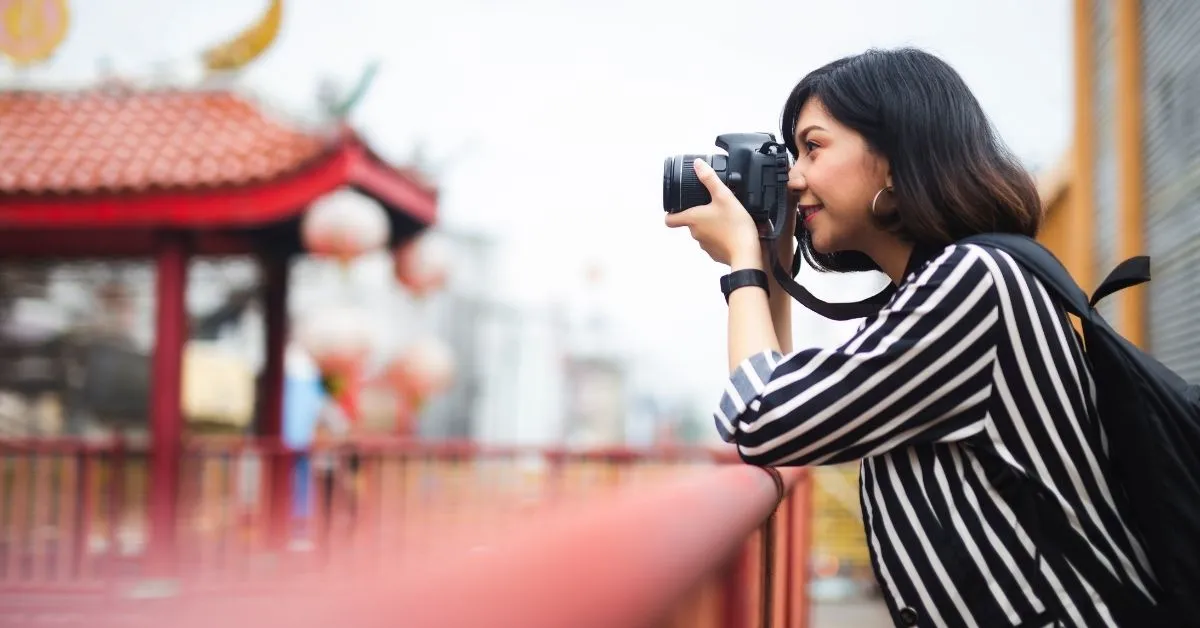
Best Luggage For Southeast Asia Travels
There are a few things to consider when choosing a piece of luggage to travel to Southeast Asia.
Here are some questions you can ask yourself to help you decide:
- Do you prefer to travel with a carry-on only?
- Are you on a budget?
- Do you have back pain?
- What do you feel more comfortable with? A suitcase or a backpack?
These questions are important because the answer can influence your choice.
For example, if you can pack light, having a carry-on can be a smart choice.
But, if you prefer to travel with large quantities of liquids, or if you have too much stuff to bring, you may want to bring a check-in luggage.
Then, if you are on a tight budget, you should know that some airlines in Asia charge for check-in luggage.
That said, the price can be much higher, so if you’re on a budget, traveling with a carry-on luggage will save you money.
Now, if you have back pain or if you don’t feel comfortable traveling with a backpack, you may want to pick a suitcase instead.
Otherwise, read our guide about the best backpacks for back pain .
Having a suitcase in Asia can be problematic if you travel by motorbike, but if you’re not planning on traveling with a scooter, the suitcase can work too.
For several years, I traveled with a carry-on backpack (33 litres), and it was perfect for my needs at the time.
Eventually, I changed my luggage and had a backpack with wheels which was the perfect mix between a backpack and a suitcase.
But now that I have more equipment for work and work out a lot, I need to bring more stuff with me when I travel.
I now travel with a check-in suitcase as well as a day backpack.
If you travel with a backpack, you can read about the best waterproof backpacks or the best backpacks with wheels .
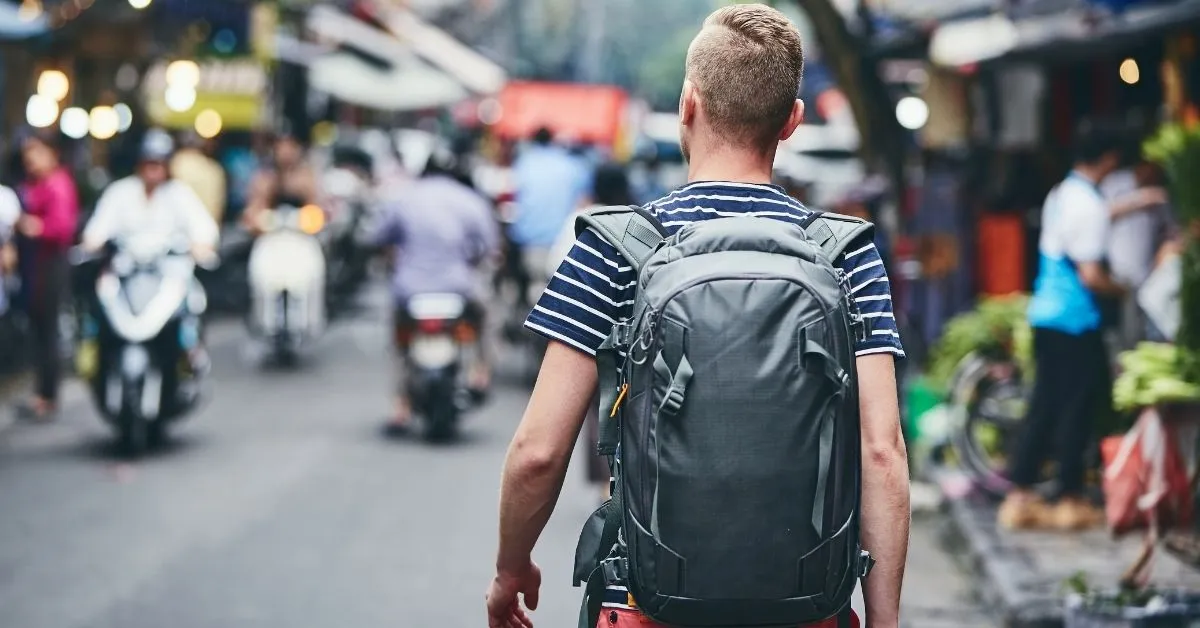
Alternatively, you could pick a carry-on suitcase, like the one below.
Take a look at the different types of luggage available on Level8 . You can also get 10% off using our coupon code: ABROKENBACKPACK10
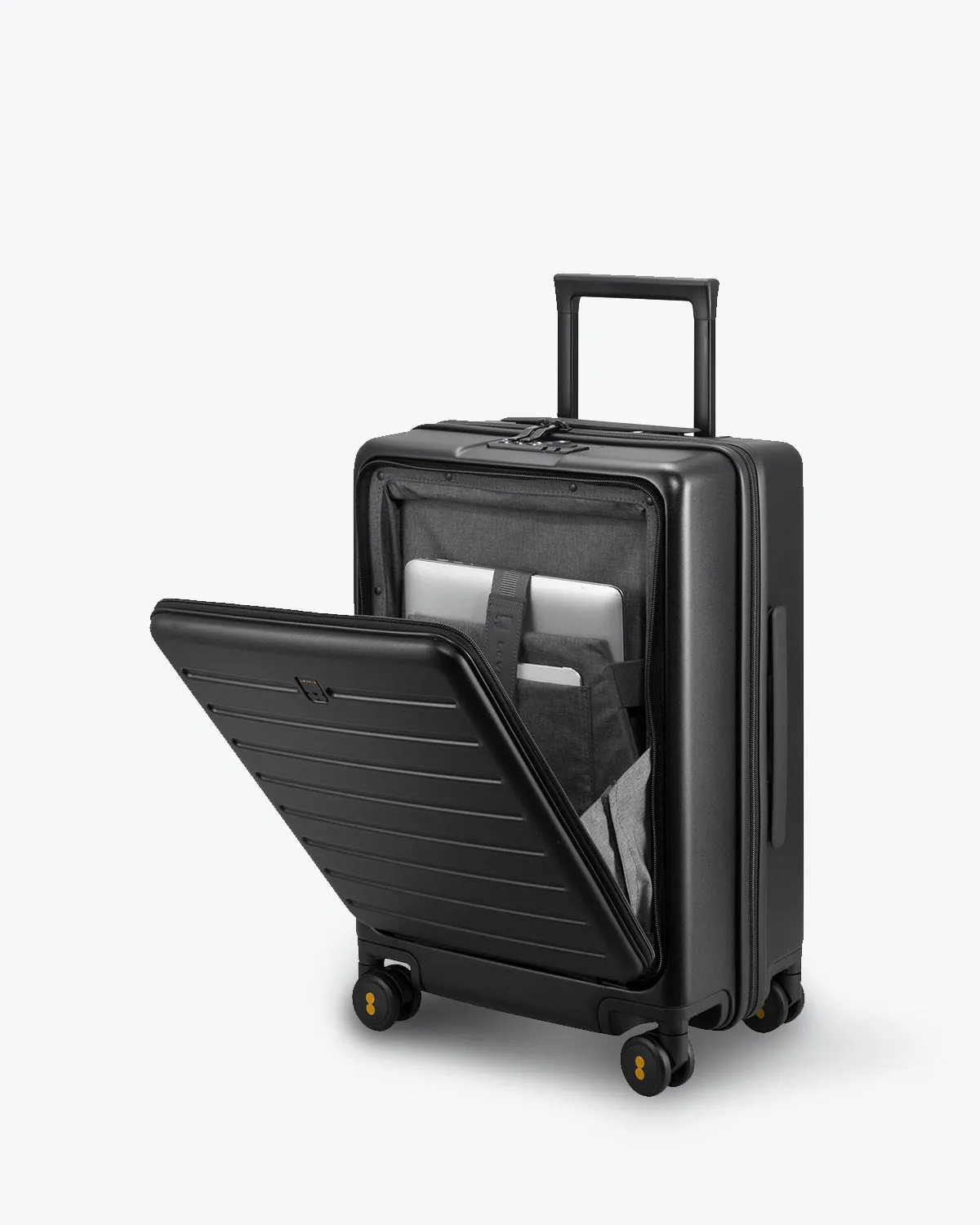
Getting Ready For A Backpacking Trip To Southeast Asia
Here’s a quick Asia checklist of what you need to prepare before going to the next country in Southeast Asia:
- Do you need a visa? If so, do you need to apply at the embassy, or can you do it online on iVisa ? (If you’re heading to Cambodia or Vietnam , I already wrote about their visas!)
- Do you know anything about the popular scams in this country? Better be safe than sorry!
- Do you need a flight out of the country as proof of onward travel?
- Do you want to purchase an Asia SIM card or an eSIM for Asia to have access to the Internet everywhere during your trip?

Final Thoughts On Backpacking Essentials For Asia
There you go, you have it – your complete backpacking Southeast Asia packing list .
By now, you should know exactly what to pack for your trip to Southeast Asia.
Remember, you don’t need to bring everything on this list. Take what you know that you will use and leave the rest at home.
Don’t get too bogged down by what you took with you, just take the essentials and enjoy your adventure!
Want more backpacking tips? Read one of the following blog posts:
- Easy backpacking meals
- Staying in a hostel
- Bali vs Thailand
- Cheapest Asian country to fly to

MY TOP RECOMMENDATIONS
BOOK HOTEL ON BOOKING.COM
BOOK HOSTEL ON HOSTELWORLD
GET YOUR TRAVEL INSURANCE
LEARN HOW TO START A TRAVEL BLOG
LEARN HOW TO VOLUNTEER ABROAD


17 Top Asia Packing List Items for 2024 + What to Wear & NOT to Bring

Asia is a vast and fascinating continent, home to some of the world’s oldest and most unique cultures. Depending on where you’re headed and how long you’re staying, it can be tricky to know what to pack for a destination with so many different things to do and see!
We’ve put together this Asia Packing List to help you navigate your way through this incredibly beautiful and diverse continent more easily. Our list includes sections on what to wear in Asia , what NOT to bring, and answers to all your Asia FAQs.

What to Pack for Asia – 17 Essentials
1. asia power adapter.
You’ll have a hard time plugging in your electronics in Asia without a reliable power adapter! Be prepared as you travel from country to country by bringing an adapter that works all over. This one is awesome because it works in over 100 countries and comes with a lifetime warranty guarantee!
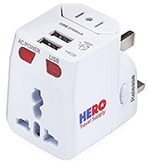
View on Amazon.com ➜
2. Lipstick Sized Portable Charger
A lipstick-size portable charger will be a real lifesaver throughout your travels in Asia. The last thing you want is for your smartphone or camera to run out of battery at an inconvenient time. Be prepared by tossing this handy backup battery in your purse or daypack and use it to recharge your devices as needed.

3. Virtual Private Network (VPN)
A VPN is super useful, and can really be a lifesaver when you’re traveling in Asia. It’ll protect you against hackers if you connect to WiFi in public places and it can be used to get around paywalls on popular news sites. A VPN will also allow you to access websites from home if information is censored in the host country.

View NordVPN.com Options ➜
4. Neck Wallet
Keep your most important belongings organized and secure by wearing them in this handy neck wallet tucked safely beneath your shirt. Keep your smartphone, passport, credit cards, cash, and more out of reach from pickpockets by using this convenient neck wallet when you visit crowded and touristy areas.

5. Jet Lag Relief
Depending on where you’re coming from, Asia can be a long way from home! When you’re crossing endless time zones, you won’t want to lose your first day of vacation. Prepare for and combat the unpleasant symptoms of jet lag with these homeopathic jet lag relief pills. We swear by them!
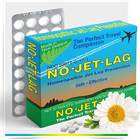
6. Packing Cubes
Packing cubes are every savvy traveler’s must-have item. They’ll help you avoid overpacking and will keep you organized. This set comes in different sizes, so you can keep your similar items together in their own cubes. They also come with cases specifically for shoes and laundry!

7. Pashmina Shawl
A pashmina shawl will come in handy more than you think in Asia. Whether you want to enter a temple or holy place, are in the mood to spice up your outfit, or want to keep warm on a chilly evening, you’ll have endless occasions to use a lightweight shawl or wrap.

8. Windproof Travel Umbrella
It is likely to rain AT LEAST once during your trip to Asia, so come prepared! This windproof travel umbrella is perfect to toss into your daypack because it packs down small but extends wide when open to cover up to two people. Trust us, you’ll be glad you remembered an umbrella!
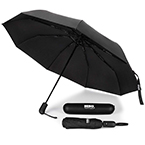
9. Activated Charcoal
Activated charcoal will almost definitely come in handy during your visit to Asia. The continent is filled with unique spices and cuisine, and you’ll surely want to try it all! If you eat or drink something that doesn’t sit quite right, however, be sure to take these activated charcoal pills to expel the toxins in your body and keep you feeling healthy.

10. Electrolytes
I can’t stress enough the importance of bringing along electrolytes for your trip to Asia. When you’re exploring in the hot sun all day, you’ll definitely need to replenish the vitamins your body has lost. Electrolytes will also help in the case of food poisoning and will even help cure a hangover!
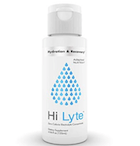
11. Sturdy Sandals
Sturdy sandals will likely be your footwear preference during your time spent in Asia. Weather throughout the continent tends to stay mild during the entire year, and you’ll want sturdy, breathable shoes like these that will be comfortable to wear while you’re out and about exploring.

12. Asia Travel Insurance
Getting Asia travel insurance before you leave for your trip is of the utmost importance. You’ll be far from home and you never know what can go wrong, so it’s best to make sure you’re covered in case of emergency. We never travel without a plan from TravelInsurance.com . They make it easy to compare policies from top companies to find the best one for us and our travel plans.

Compare policies at TravelInsurance.com ➜
13. Affordable Underwater Camera
In Asia, you’ll have lots of opportunities to partake in watersports and activities, and you’ll definitely want a reliable underwater camera to capture all your favorite memories! This one is super affordable, plus it’s compact and durable which is perfect for travel.

14. Daypack
A daypack will come in handy every day of your trip in Asia. Use it for your daytime activities and excursions to carry everything you need with you while leaving the rest of your belongings safely in your accommodation. This one’s large enough to carry your water bottle, umbrella, snacks, change of clothes, and more!
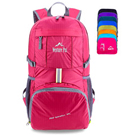
15. Long Skirt
A long skirt is a great way to withstand the heat in Asia, plus it will help you to remain modest when entering temples or holy sites throughout the region. This one is lightweight and breezy and will easily fit in your luggage or daypack to throw on quickly over your shorts if need be.
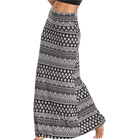
16. LifeStraw Water Bottle
You’ll need to stay hydrated during your trip to Asia, and there’s no better way to do that than by bringing along a handy reusable water bottle. This one has a built-in filter to ensure the water you’re drinking is safe and clean. It’s also a great alternative to spending tons of money on single-use plastic water bottles.
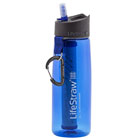
17. Swimsuit Cover Up
Don’t forget to pack a trendy swimsuit cover up for your trip! You’re likely to spend a lot of time in and out of the water in Asia, so be prepared to throw this on over your suit after a dip to easily move on to your next activity.
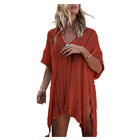
Other Asia packing list items not to forget
- Quick Dry Travel Towel
- Noise Cancelling Headphonesk
- Over the Counter Medications
- Passport Photos
- Hard Copies of Vital Documents
- ATM and Credit Cards without International
- Travel Neck Pillow
- Travel Sheet
- Protein Bars
- Insect Repellent
- Deodorant Wipes
- Motion Sickness Relief
- Contact Solution
- Other Asia packing lists you may like:
- Annapurna |
- Everest Base Camp |
- Hong Kong |
- Indonesia |
- New Delhi |
- Philippines |
- Singapore |
- South Korea |
- Southeast Asia |
- Sri Lanka |
What to Wear in Asia
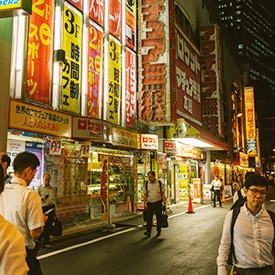
Women will want to dress for the weather and the season in Asia, all while keeping in mind cultural norms and customs, which may require women to cover their shoulders and knees when entering temples and holy sites. Regardless of the season, women traveling in Asia will want to bring a good pair of sturdy shoes that are well broken in, as you’re sure to do a ton of walking and exploring! What Should MEN Wear to Asia?– (Click to expand) Below is a sample men’s clothing list. (All items link to Amazon.com for your convenience).

Packing for the Seasons in Asia
Most Asian countries only have two seasons, the wet season and the dry season. Due to Asia’s proximity to the equator, most of the continent is mild to hot during the entire year. You’ll want to be prepared for a bit of rain regardless of when you visit, so don’t forget a rain jacket and an umbrella! Also be sure to bring a pair of sturdy, breathable sandals so you’ll be ready to do plenty of walking and exploring.
WET SEASON – June, July, August, September, October:
It’s no surprise that during Asia’s wet season you can expect an abundance of rain! This is the off-season for tourists and temperatures are warm and humid. Don’t completely write off travel during this period, as it typically tends to rain heavily for a few hours at specific times every day, leaving the rest of the day open to enjoy.
DRY SEASON – November, December, January, February, March, April, May :
Asia experiences more tourism during the dry season as temperatures tend to be a bit cooler and there is less rain. Don’t expect the weather to get too cold, though, unless you’re headed into a particularly mountainous or high altitude region.
Beaches – Asia is home to some of the world’s best beaches. Be sure to bring a swimsuit, cover-up, flip flops, and plenty of sun protection.
Exploring Cities – Asian cities are super unique and there is definitely tons to explore. Be sure to wear comfortable walking shoes and breezy clothes that can withstand the heat. Don’t forget a daypack so you can carry your rain gear and plenty of water, too!
Temples – You’re bound to encounter a wide variety of temples during your time in Asia. Be sure to dress respectfully by covering your shoulders and knees, and wear shoes that can easily be slipped off and tossed in your daypack or left outside, as many temples will require.
Nightlife – Asia is home to some of the craziest and most lively nightlife in the world! Be sure to dress for the weather and the venue on your nights out. Some higher-end clubs and bars won’t allow entrance to men who aren’t wearing long pants, a collared shirt, and closed-toe shoes, so prepare to look nice depending on where you’re headed.
What NOT to bring to Asia
1. don’t pack a hairdryer.
The humidity in Asia is such that any hair drying you do will quickly be reversed. Plus, you run the risk of ruining your devices because the voltage in Asia will be different than what your dryer can handle, and voltage adapters rarely work.
2. DON’T BRING expensive valuables
Don’t risk your expensive jewelry or electronics getting lost or stolen during your trip to Asia. Only bring the items that you absolutely need and leave the rest safe at home!
3. DON’T TAKE a winter coat
Unless you’re planning a trekking trip up into the mountains, you will likely have no need for a full winter coat during your visit to Asia. Opt for layers instead, which are versatile and will be much more useful for you.
4. DON’T PACK too much stuff
There’s so much to do and see in Asia, and you’ll likely be exploring many different locations. Pack as light as possible so you can easily move from place to place without worrying about overstuffed, heavy luggage.
5. DON’T BRING full-size toiletries
One of the best ways to get around the continent is by flight. Avoid having to dump out full-size liquids as you fly from place to place by using travel-size toiletries that can easily be refilled or replaced.
6. DON’T TAKE a regular towel
A regular towel is bulky, heavy, and takes forever to dry. Instead, opt for a lightweight, compact quick dry towel which will make your life as a traveler so much easier!
FAQs about Asia travel
1. do i need a visa to travel to asia.
Depending on where you’re headed, you will need to check ahead of time whether or not you’ll need a visa to enter the country. Some countries will allow you to purchase your visa at the airport upon arrival but others may require you to have a visa before, so be sure to leave yourself plenty of time to get what you need before you go.
2. What’s the best way to get around Asia?
Busses are definitely the cheapest way to get around Asia and they go nearly everywhere. However, distances are far and you’ll be putting yourself at risk for traffic accidents and other safety hazards if you go this route. Flights are typically inexpensive and are the fastest and safest way to get around the continent.
3. Is Asia expensive?
Many Asian countries, particularly in Southeast Asia, tend to be very cheap, especially compared to the United States. However, places like Shanghai and Singapore are more expensive, so you’ll need to budget for your specific destination before you leave.
4. Is Asia safe?
Parts of Asia are safer than others, and different threats affect different regions of the continent. In Southeast Asia, the biggest risk factors tend to be petty theft, pickpocketing, and traffic accidents, while other parts of Asia are hotbeds for terrorism. Do your research before you go to be aware of the precautions you should take for your destination.
Every Asia packing list should include these 8 items
Recently updated on July 13th, 2023 at 05:05 pm
How do you even begin to decide on what to prioritise for the perfect Asia packing list? With our help, of course! From lacing up your boots in the Himalayas to boardshorts in Bali, the world’s largest continent delivers an incredible array of diverse experiences, landscapes and climates, and that means packing smart.

Half the adventure is in figuring out what to bring to Asia . You’ll be able to buy some of what you need there, but it’s a great idea to brush up on how to dress before you get there to make the most of the continent’s rich culture and experiences in comfort and style.
RELATED CONTENT : Why everyone needs a bucket-list trip to Asia at least once in their lives
Ready to get going? We’ve covered some of the essentials below:
What to include on your Asia packing list

Layers, check. Sunscreen, check. Rain poncho, check. Your Asia packing list is getting off to a good start and there’s plenty more to add to it, but we’d recommend leaving a little space in your luggage for the fantastic souvenirs that will remind you of your epic exploration of this varied continent.
What to wear and how to dress in Asia depends greatly on the destination you’re visiting. On your journey across this vast region, you could watch the sunrise at the Taj Mahal, hike the Himalayas, sail Halong Bay, explore the lost ruins of Angkor Wat, trace the Great Wall of China or eat sushi for breakfast in Tokyo. The tried and tested tip to preparing for these diverse experiences is to keep it light, loose and dry.
Ready to learn how? Apply these principles to your Asia packing list and you’ll master what to wear in Asia, whether your travels take you from Singapore to Sri Lanka, or Thailand to Cambodia.
GET INSPIRED BY: Thailand and the Temples of Angkor
Tips for what to wear in Asia
Dress modestly .

Part of the joy of exploring Asia is getting to grips with its beautiful heritage and culture and that means extraordinary experiences in the continent’s most sacred sites. From the temples of Nepal and Pagodas of Myanmar, to sacred caves in Laos and mosques in Singapore, no visit to Asia is complete without visiting some of the sites most revered by its locals. Show your respect by kicking off your shoes and covering up – outfits covering shoulders and the knees are a must.
RELATED CONTENT : Sacred Sites in Asia: From Temples to Pagodas
Keep it loose and comfortable

Comfort is key when exploring Asia. You’ll want to keep your wardrobe loose and light-fitting, opting for outfits made from natural fibres like cotton, which dry quickly and don’t cling to you. Think wide leg trousers, button-down shirts and long skirts to keep you light and breezy no matter where your travels take you. Leave the strappy tops, short shorts and jeans at home.
Sensible footwear

You’re likely to spend a lot of time on your feet when exploring Asia and that means well-fitted footwear is a non-negotiable. Depending on your itinerary, you could opt for flipflops, sturdy sandals, walking shoes or hiking boots. Check what makes the most sense for your trip, but there’s no need to bring along anything dressy or expensive.
Warm layers

Don’t be fooled into thinking Asia is tropical and balmy year-round. Depending on the destination and the time of year you’re visiting, you may well need to pack a few warm layers to keep you comfortable at higher altitudes and at night. From the Thai highlands and Sapa in Vietnam to the ski resorts of Sapporo in Japan and the Himalayas, you’ll be grateful you switched up your short sleeves for something warmer.
8 essential items to bring to Asia

No need to panic if you’ve left any of the following at home because shopping is something your Asian hosts know how to do well. However, if you’d like to maximise your sightseeing time, you’ll do well to think ahead about what to bring to Asia. Here are our recommendations:
Translation app
Nothing beats a good translation app. While many locals do speak English, having an app could prove handy in an otherwise frustrating situation.
Insect repellent
South East Asia is particularly known for mosquitos. So, if you want to avoid dreaded itchiness and being kept up half the night, insect repellent is a must.
Plug adapter and converter
With the exceptions of Japan and Taiwan, most countries in Asia use a 230-240V system, which is where your life-saving converter comes in. If you don’t have one, it’s well worth the investment.
Umbrella/Waterproof jacket

Always check the weather report for the day as Asia is renowned for unpredictable downpours. Consequently, having a waterproof jacket or umbrella could just save the day. While we’re at it, a quick-dry towel is really handy after a surprise downpour.
Portable charger
There are 101 reasons why your devices should be charged at all times. Be sure to pick up a portable charger if you don’t have one. Nobody wants to be on the back end of a dead device in an unfamiliar destination.
Hand sanitiser, wipes and tissues
Not only are these essential during COVID times, but some bathrooms might not provide soap or toilet paper. In which case, it’s always great to have a backup.
RELATED CONTENT: What to pack in your travel hygiene kit
Sarong / Scarf

The sarong is a fantastic accessory to your “what to wear in Asia” itinerary. They’re great for evading the sunny rays on a hot day and can be also used as a quick coverup around the shoulders when visiting sacred sites.
Headphones / earplugs
These offer an excellent means to escape the bustle – one thing Asian cities aren’t is quiet.
With your Asia packing list sorted, you’re probably excited to get going. Or perhaps you’ve already travelled and have some handy tips on what to wear and bring in Asia. We’d love to hear them all in the comments below!
Want to hear more from us?
Sign up to receive inspiring travel articles, offers & news
" * " indicates required fields
Privacy Overview
Sign up for our emails.

Your Essential Asia Packing Checklist for Stress-Free Travel
Planning a trip to Asia? We’ve got you covered with our essential packing checklist for stress-free travel. Whether you’re backpacking through Southeast Asia or enjoying a relaxing vacation in Asia, it’s important to be well-prepared. With our practical packing tips and comprehensive list of must-have items, you’ll have everything you need to make your journey a breeze.

At [Company Name], we understand the importance of a well-packed suitcase or backpack. That’s why we’ve put together this handy guide to help you navigate the challenges of packing for Asia. From clothing and luggage to travel accessories and electronics, we’ve got you covered. So, let’s dive in and start planning your stress-free trip to Asia!
Table of Contents
Key Takeaways:
- Asia Packing Checklist provides essential items for stress-free travel in Asia.
- Know what to pack for a trip to Asia with our comprehensive packing list.
- Practical packing tips to ensure you have everything you need.
- Must-have items for traveling in Asia , from clothing to travel accessories .
- Stay organized with our packing checklist for backpacking in Asia .
Choosing the Right Luggage for Backpacking Asia
When embarking on a backpacking adventure in Asia, one of the most important decisions you’ll make is choosing the right luggage. Your choice can significantly impact your comfort, convenience, and overall travel experience. So, whether you opt for a travel backpack or a carry-on suitcase , it’s essential to consider your needs and preferences.
Travel backpacks are popular among backpackers for their versatility and easy maneuverability. With plenty of compartments and straps, they offer excellent organization and are suitable for navigating uneven terrain. Look for backpacks with durable materials, adjustable straps, and padded back panels for optimal comfort during long journeys. Some highly recommended travel backpack brands include Osprey, Deuter, and Kelty.
On the other hand, if you prefer a more traditional approach, a carry-on suitcase might be the right choice for you. These suitcases come in various sizes and styles, and they offer ease of mobility on smooth surfaces. Look for carry-on suitcases with sturdy wheels, lightweight materials, and expandable compartments for maximizing your packing space. Popular brands known for their quality and durability include Samsonite, Travelpro, and Briggs & Riley.
Ultimately, the decision between a backpack and a suitcase depends on your travel style, destination, and personal preferences. Consider factors such as the length of your trip, the type of activities you’ll be doing, and the transportation options available in your chosen Asian destinations. Selecting the right luggage will ensure that you can easily carry your belongings and navigate through the bustling streets, crowded markets, and diverse landscapes of Asia.
Organizing Your Clothes with Packing Cubes
When it comes to packing for your trip to Asia, organization is key. That’s where packing cubes come in. These handy travel accessories are designed to keep your clothes neat, tidy, and compact, making it easier to find what you need and maximizing space in your luggage. Whether you’re a backpacker or a suitcase traveler, packing cubes can revolutionize the way you pack.
So, how do packing cubes work? Essentially, they are small fabric containers that zip closed, creating separate compartments for your clothes. By categorizing your clothing items into different cubes, such as tops, bottoms, underwear, and accessories, you can easily locate what you need without having to rummage through your entire bag.
Not only do packing cubes help with organization, but they also compress your clothes, allowing you to fit more in your suitcase or backpack. This is especially beneficial if you’re traveling with limited space. Additionally, packing cubes keep your clothes wrinkle-free, so you can arrive at your destination looking fresh and put-together.
Benefits of Packing Cubes:
- Efficiently organize your clothes
- Maximize space in your luggage
- Keep your clothes wrinkle-free
- Easily locate items without unpacking everything
- Separate clean and dirty clothes
When it comes to choosing packing cubes, there are a variety of options available. Some cubes are made of lightweight nylon or mesh, while others provide compression features to save even more space. It’s important to consider your specific needs and preferences when selecting the right packing cubes for your trip.
Now that you know the benefits of packing cubes, it’s time to incorporate them into your packing routine. With their help, you’ll be able to keep your clothes organized, maximize space, and simplify your travel experience.
Must-Have Travel Accessories for Asia
When preparing for your trip to Southeast Asia, it’s important to pack the right travel accessories to ensure a smooth and comfortable journey. From securing your belongings to staying prepared for emergencies, these essential items will enhance your travel experience. Let’s explore the must-have travel accessories for Asia.
Luggage Locks and Cables
Keeping your belongings safe is crucial while traveling in Asia. Luggage locks provide an added layer of security, preventing unauthorized access to your bags. Look for sturdy and TSA-approved locks that are easy to use. Additionally, consider using safety cables to secure your luggage to fixed objects, such as bed frames or chairs, when you’re in shared accommodations or public areas. This will give you peace of mind knowing your belongings are protected.
Travel Shoes
Comfortable and versatile shoes are essential for exploring Asia’s diverse landscapes and cultures. Opt for lightweight, breathable sneakers or hiking shoes that provide good arch support and grip. These will come in handy when navigating uneven terrain or exploring cities on foot. Remember to break in your shoes before your trip to avoid discomfort or blisters during long walks or hikes.
Travel Towel
A travel towel is a practical and space-saving item to include in your packing list. These quick-drying microfiber towels absorb moisture efficiently and can be easily folded into a compact size. Whether you’re heading to the beach or staying in hostels without provided towels, a travel towel will come in handy for drying off after a swim or shower.
Toiletries and Travel First Aid Kit
When traveling in Southeast Asia, it’s important to pack toiletries suitable for the region’s climate and cultural norms. Include essentials such as sunscreen, insect repellent, hand sanitizer, and personal hygiene products. It’s also wise to carry a travel-sized first aid kit with basic medications , band-aids, and remedies for common ailments. This will ensure you’re prepared for any minor health issues that may arise during your journey.
By packing these must-have travel accessories, you’ll be well-prepared for your adventure in Southeast Asia. Remember to choose items that align with your personal preferences and travel needs. Bon voyage!
What to Wear in Southeast Asia
When it comes to dressing for your trip to Southeast Asia, it’s important to consider both the cultural norms and the weather conditions in the region. The dress code in Southeast Asia tends to be more conservative than in Western countries, so it’s essential to dress modestly and respectfully, especially when visiting temples or religious sites.
Appropriate attire for Southeast Asia typically includes lightweight and breathable clothing that covers your shoulders, chest, and knees. Loose-fitting clothes made from natural fabrics like cotton or linen are ideal for the hot and humid climate. You’ll also want to pack a hat, sunglasses, and sunscreen for protection against the intense sun.
In addition to modest clothing, it’s crucial to choose footwear that is comfortable and suitable for the activities you plan to engage in. Closed-toe shoes are recommended for walking tours and hikes, while sandals or flip-flops are perfect for the beach or casual outings.
Remember that Southeast Asia is a diverse region, and the dress code may vary slightly depending on the country you are visiting. It’s always a good idea to research the specific cultural norms and customs of your destination before packing. By dressing appropriately, you can show respect for the local culture while staying comfortable throughout your trip.
Table: Dress Code Guidelines in Southeast Asia
Documents and travel essentials for southeast asia.
In order to have a hassle-free trip to Southeast Asia, it’s crucial to have all the necessary documents and travel essentials with you. Here are the key items you need to include in your packing list:
Ensure that your passport is valid for at least six months beyond your intended stay in Southeast Asia. It’s also a good idea to make a few copies of your passport and keep them in separate locations, in case of loss or theft.
Travel Insurance:
Travel insurance is essential to protect yourself from unforeseen circumstances such as medical emergencies, trip cancellations, or lost luggage. Make sure to have a comprehensive travel insurance policy that covers all your needs.
Essential Addresses and Contact Numbers:
Keep a list of important addresses and contact numbers, including the contact details of your embassy or consulate, emergency services, and your accommodation. This will come in handy in case of any emergencies or if you need assistance.
Yellow Fever Vaccination:
Depending on the countries you plan to visit in Southeast Asia, you may need to get a yellow fever vaccination . Check with your doctor or local travel clinic to determine if this vaccination is required for your trip.
Medications:
If you take any prescription medications , ensure that you have enough to last your entire trip. It’s also a good idea to carry a small first aid kit with basic medications for common ailments such as headaches, stomach issues, and allergies.
Cash and Cards:
While credit and debit cards are widely accepted in many parts of Southeast Asia, it’s always a good idea to carry some cash as well. Make sure to notify your bank about your travel plans to avoid any issues with your cards. It’s also wise to carry a mix of small and large denomination bills for convenience.
Electronics for your Southeast Asia Packing List
When it comes to packing for your trip to Southeast Asia, there are a few essential electronics that you shouldn’t leave behind. These devices will not only enhance your travel experience but also keep you connected and entertained throughout your journey. From communication to capturing memories, here’s a roundup of the must-have electronics for your Southeast Asia packing list.
General Electronics for Southeast Asia
While traveling in Southeast Asia, it’s important to have a few general electronics that will make your trip more convenient. A portable charger is a must-have to ensure your devices stay powered up, especially during long bus rides or when you’re away from a power outlet. Additionally, a universal travel adapter will come in handy as the plug sockets vary across countries in the region. This will allow you to charge your devices without any hassle.
Another essential electronics item is a lightweight and compact laptop or tablet. This will enable you to stay connected, work remotely if needed, and keep yourself entertained during downtime. Additionally, a good pair of noise-canceling headphones will be your best friend on long journeys, providing you with immersive music or movie experiences while blocking out any external noise.
Photography Packing List for Southeast Asia
Southeast Asia offers breathtaking landscapes and vibrant cultures, making it a paradise for photography enthusiasts. To capture these moments, be sure to pack a reliable camera or smartphone with a high-quality camera. From stunning landscapes to bustling markets and vibrant street scenes, you’ll want to document every memorable moment.
Alongside your camera, make sure to pack extra memory cards and batteries. You don’t want to run out of storage or power when you encounter that picture-perfect moment. Consider bringing a lightweight tripod if you plan on taking long-exposure shots or capturing stunning sunset views. And don’t forget to pack a waterproof phone case or a waterproof camera if you’ll be snorkeling or visiting any water-based destinations.
With these electronics on your packing list, you’ll be well-prepared to stay connected, capture memories, and make the most of your Southeast Asia adventure.
Toiletries and First Aid Kit for Southeast Asia
When packing for your trip to Southeast Asia, it’s important to remember the essential toiletries that will keep you fresh, clean, and prepared for any situation. Here is a checklist of must-have toiletries to include in your travel bag:
- Toothbrush and toothpaste: Keep your dental hygiene in check with a compact toothbrush and a travel-sized tube of toothpaste.
- Shampoo and conditioner: Opt for travel-sized bottles of shampoo and conditioner to save space in your luggage. Look for products that are suitable for tropical climates and can keep your hair nourished and moisturized.
- Soap or body wash: Bring a travel-sized soap or body wash that suits your skin type. Consider packing a bar soap or a liquid body wash, depending on your preference.
- Sunscreen: Protect your skin from the harsh sun by packing a high SPF sunscreen. Choose a sunscreen that is water-resistant and suitable for both face and body.
- Insect repellent: Don’t forget to pack insect repellent to keep those pesky bugs at bay. Look for a repellent that contains DEET for maximum effectiveness.
- Hand sanitizer: Keep your hands clean and germ-free with a pocket-sized hand sanitizer. This is especially useful when traveling in areas where clean water may not be readily available.
- Personal hygiene products: Don’t forget essentials like tampons or pads, wet wipes, and any other personal hygiene products you may need during your trip.
In addition to toiletries, it’s vital to pack a travel first aid kit to handle any minor injuries or health issues that may arise during your journey. Here are some items to include:
- Band-Aids and adhesive bandages: Keep a variety of bandages in different sizes for cuts, blisters, or minor wounds.
- Antiseptic solution or wipes: Clean wounds with antiseptic solution or wipes to prevent infection.
- Pain relievers: Pack over-the-counter pain relievers such as ibuprofen or acetaminophen for headaches, muscle aches, or any other minor pain.
- Antihistamines: Bring antihistamines to relieve allergies or insect bites.
- Prescription medication: If you require any prescription medication, make sure you have enough supply for the duration of your trip.
- Diarrhea medication: It’s always better to be prepared for gastrointestinal issues. Pack medication that can relieve diarrhea and stomach discomfort.
Remember to check with your doctor or travel clinic for any specific vaccinations or medications recommended for Southeast Asia. Stay prepared and have a worry-free trip with these essential toiletries and first aid kit items at your disposal.
Non-Essential Items for Your Southeast Asia Packing List
When preparing for your trip to Southeast Asia, it’s important to prioritize the essential items that you’ll need for a smooth and comfortable journey. However, it’s also okay to indulge in a few non-essential items that can enhance your travel experience. These luxury items and optional travel accessories can add convenience and enjoyment to your trip, but remember to pack them sparingly to avoid excess baggage.
One non-essential item that some travelers find useful is a portable hammock. This lightweight and compact accessory allows you to relax and unwind in scenic locations, whether it’s on a pristine beach or in a lush jungle. Simply find two sturdy trees or anchor points, and you’ll have your private oasis to enjoy the beautiful surroundings.
Another optional item to consider is a portable Wi-Fi hotspot. While most accommodations and cafes in Southeast Asia offer Wi-Fi, having your own hotspot ensures that you’re always connected, especially when venturing off the beaten path. This comes in handy for researching local attractions, navigating unfamiliar streets, or staying in touch with loved ones back home.
As for luxury items, a good-quality travel pillow can greatly improve your comfort during long flights or bus rides, allowing you to arrive at your destination well-rested and refreshed. Additionally, a waterproof smartphone case can be a worthwhile investment, providing peace of mind as you explore stunning beaches, participate in water activities, or simply encounter unexpected rain showers.
Remember, the key to packing non-essential items is moderation. While these items can enhance your travel experience, it’s important not to overload your luggage and prioritize the essentials first. By striking a balance between practicality and indulgence, you’ll be well-prepared to enjoy all that Southeast Asia has to offer.
Backpack vs Suitcase for Southeast Asia?
When it comes to choosing the right luggage for your trip to Southeast Asia, the decision between a backpack and a suitcase can be a tough one. Both options have their pros and cons, and it ultimately depends on your personal preferences and travel style. Here, we’ll outline the advantages of each and help you make an informed decision.
The Advantages of a Backpack:
- Portability: Backpacks offer greater mobility and flexibility, especially when navigating crowded streets, uneven terrain, and public transportation in Southeast Asia.
- Convenience: With a backpack, you can easily carry your belongings on your back, freeing up your hands for other tasks and making it easier to move around.
- Flexibility: Backpacks are ideal for travelers who plan on moving frequently or engaging in outdoor activities such as hiking or trekking.
The Advantages of a Suitcase:
- Organization: Suitcases provide better organization and easy access to your belongings with their compartments and zippers. It’s easier to keep your clothes neat and separate from other items.
- Protection: Suitcases offer better protection for fragile items and electronics due to their hard-shell or padded construction.
- Professionalism: If you’re traveling for business or want a more polished appearance, a suitcase can convey a more professional image.
Ultimately, the choice between a backpack and a suitcase depends on your travel priorities and preferences. Consider factors like the duration of your trip, the type of activities you’ll be engaging in, and the level of organization and mobility you require. Some travelers even opt for a combination of both, using a backpack for day trips and a suitcase for longer stays. Remember to pack light, regardless of your choice, as Southeast Asia’s hot and humid weather makes it important to travel with minimal clothing and belongings.
Before making your final decision, try to test out both options and consider how each will impact your overall travel experience. A comfortable and practical choice of luggage will go a long way in ensuring a stress-free and enjoyable adventure in Southeast Asia.
As we wrap up this article, we hope you now feel confident and well-prepared for your upcoming trip to Asia. Remember, the key to a stress-free journey is careful planning and having the right essentials on hand.
By following our comprehensive packing checklist, you can ensure that you have all the necessary items to make your trip comfortable and enjoyable. From choosing the right luggage to organizing your clothes with packing cubes, we’ve covered every aspect of packing for Asia.
Additionally, we’ve provided valuable insights into what to wear, essential travel accessories, important documents and travel essentials, as well as electronics and toiletries. We’ve even discussed the pros and cons of a backpack versus a suitcase, helping you make an informed decision based on your travel preferences.
Remember to pack only the essentials and travel light, leaving room for souvenirs and personal discoveries along the way. We hope our final thoughts and recommendations have been helpful in guiding you through the packing process and ensuring a smooth and enjoyable journey through Asia. Bon voyage!
What should I pack for a trip to Asia?
The essential items you need to pack for a stress-free trip to Asia include clothing, luggage, shoes, and travel accessories. Make sure to check out our comprehensive packing checklist for Asia travel for all the details!
What kind of luggage should I use when backpacking in Asia?
When backpacking in Asia, you have the option to use a travel backpack or a carry-on suitcase . Both have their pros and cons, so it’s a matter of personal preference. Learn more about choosing the right luggage in our guide on backpack vs suitcase for Southeast Asia.
How can packing cubes help with organizing my clothes while traveling in Asia?
Packing cubes are a game-changer when it comes to keeping your clothes organized and maximizing space in your luggage. They work by compartmentalizing your items and make it easy to find what you need. Check out our article on organizing your clothes with packing cubes for more information.
What are the essential travel accessories I should pack for Asia?
Some essential travel accessories for your trip to Asia include luggage locks and cables for securing your belongings, travel shoes for comfort and versatility, a travel towel for convenience, and a travel first aid kit for emergencies. Find out more about these must-have items in our article on travel accessories for Asia.
What should I wear in Southeast Asia?
Dressing appropriately in Southeast Asia is important, taking into account the cultural norms and weather conditions. Our guide on what to wear in Southeast Asia will help you navigate through appropriate clothing for visiting temples, dressing for cities, beaches, and evenings, and tips for buying clothes in Southeast Asia.
What documents and travel essentials do I need for Southeast Asia?
When traveling to Southeast Asia, you will need essential documents such as passports, travel insurance, important addresses, and contact numbers. It’s also crucial to have vaccination proof, medications, and a plan for managing your money. Check our comprehensive article on documents and travel essentials for Southeast Asia for more details.
What electronics should I pack for Southeast Asia?
The electronics you should pack for Southeast Asia depend on your communication and entertainment needs. Our article on electronics for your Southeast Asia packing list will provide you with a general electronics checklist and a specific photography packing list to capture your travel memories.
What toiletries should I pack for Southeast Asia?
When it comes to toiletries for Southeast Asia , it’s important to pack travel-sized products and organize them efficiently. Our article on toiletries and first aid kit for Southeast Asia will give you a comprehensive list of essential items and tips for organizing them effectively.
Are there any non-essential items I should consider packing for my trip to Southeast Asia?
While it’s important to travel light, there might be some non-essential items or personal preferences you want to bring along. Our article on non-essential items for your Southeast Asia packing list will help you decide what is worth packing and what you can leave behind.
Should I use a backpack or suitcase for traveling in Southeast Asia?
The choice between a backpack or suitcase for traveling in Southeast Asia depends on your travel style and preferences. Our article on backpack vs. suitcase for Southeast Asia compares the pros and cons of each option to help you make the right decision.
Source Links
- https://breathedreamgo.com/travel-essentials-packing-list-asia/
- https://www.theglobetrottergp.com/southeast-asia-packing-list/
- https://www.travelfashiongirl.com/10-step-packing-guide-for-southeast-asia/

Hello world and fellow travelers! In my early 30s, I’ve come to believe that life is too short to follow someone else’s script. I wanted more than the nine-to-five grind, bills, and waiting for life to happen. That’s why I started this blog, to empower you to live life on your terms and make the most of every moment.
Similar Posts

Essential London Packing Checklist for Your Upcoming Trip
Planning ahead with a comprehensive London packing list is the best way to enjoy the city. When packing for…

We’ve Got You Covered with the Ultimate New York Packing Checklist
Planning a trip to the vibrant city of New York? Look no further! We’ve created the ultimate New York…

Essential Egypt Packing Checklist for Your Next Trip!
Egypt is a fascinating destination with its rich history and vibrant culture. However, packing for Egypt requires some consideration…

Ultimate Rome Packing Checklist for a Perfect Trip
Rome, the eternal city, beckons with its rich history, delectable cuisine, and effortless style. As you plan your trip…

Ultimate Russia Packing Checklist: Essential Travel Tips
When preparing for a trip to Russia, it’s important to have a comprehensive packing list to ensure you have…

Essential Australia Packing Checklist for the Perfect Trip
Gearing up for your trip to Australia? We’ve got you covered with this essential packing checklist that will ensure…

50 Essential travel tips for first time backpackers visiting Southeast Asia
- July 27, 2023
- curious goose
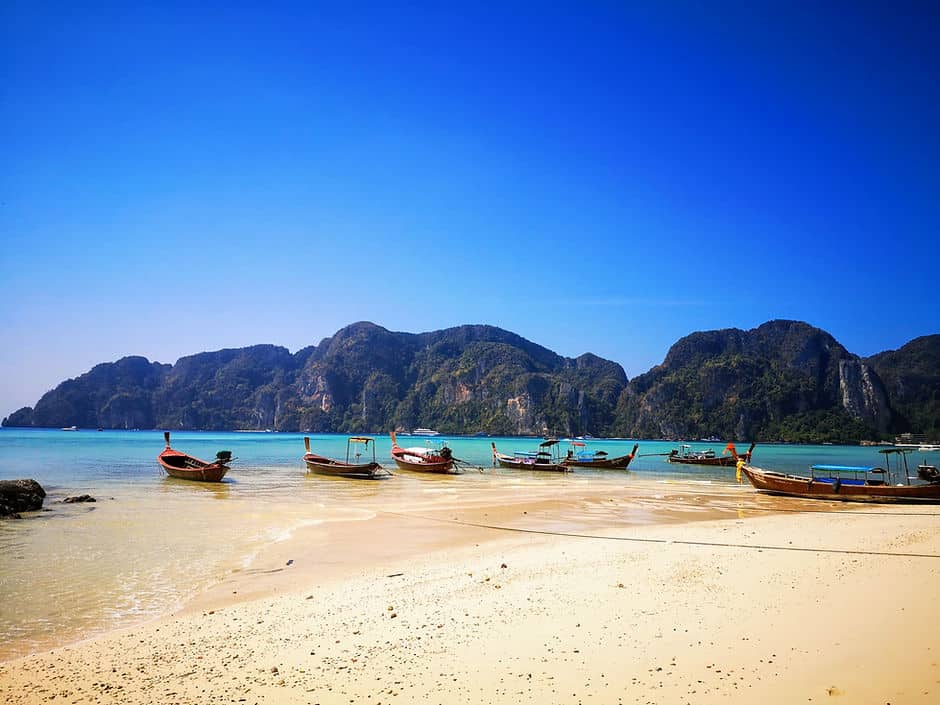
This post may contain affiliate links. I will receive a small commission if you use these links.
Make sure you read these essential tips for Southeast Asia to help plan your trip.
Southeast Asia is one of the most popular destinations for backpackers. It’s easy to see why – gorgeous sandy beaches, cultural temples, delicious food and bustling cities makes for an attractive mix. It’s also a safe and cheap place to travel, meaning that Southeast Asia is a great place for first time travellers getting to grips with backpacking and those on a budget.
Southeast Asia has been on my bucket list for years and in 2022, I spent 7 months travelling in Thailand , Vietnam , Cambodia, Malaysia and Indonesia. Based on my experience, I’ve put together 50 essential travel tips to help you plan your trip to Southeast Asia. These tips cover everything from what food and drink to avoid, to how to keep track of your budget while travelling and travel hacks to make life on the road easier.
These travel tips for Southeast Aisa will prepare you for a great trip and hopefully help to prevent you from getting into any tricky situations!
50 Essential travel tips for first-time backpackers visiting Southeast Asia
Practical information for travel in southeast asia, managing your budget and finances when travelling in southeast asia, top tips for getting around in southeast asia, food and drink in southeast asia, local cultures and traditions in southeast asia, travel health, packing tips.
- Lastly…things to remember when travelling
Travelling takes a lot of organisation and planning. Here’s a few hacks to help you have a smoother travel experience.
1. Get yourself a sim card as soon as you land
Often the best sim card deals can be found in the arrivals hall at the airport, with a ‘tourist sim’. I’d recommend getting a sim card as soon as you arrive in the country, especially if you are taking public transport from the airport / ferry / bus terminal to your accommodation. Most likely, you will be dropped off at a location in the centre of town (or at the side of the road as I experienced several times!) and having the internet to figure out where you are is very helpful.
2. Download an offline version of google maps before you arrive at a new place
Even if you have a sim card with data, you might not always have a signal to access the internet. Make sure that you download an offline version of google maps, covering the area you are travelling to. You might need to download several if the area you are travelling to is vast. Another handy tip is to ‘pin’ key locations onto your map, such as your accommodation, attractions, bus terminals and places to eat! That way, if you can’t access the internet you’ll still be able to find your way to key services and attractions.
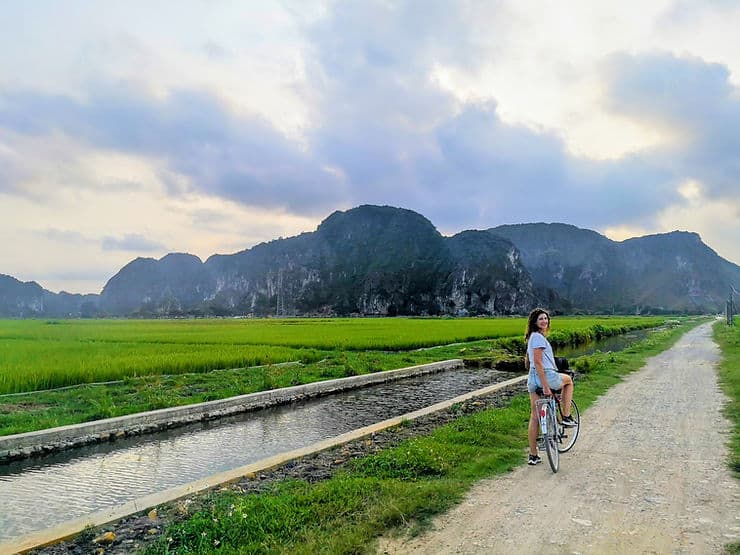
3. Screenshot or note down your accommodation booking confirmation and address
Don’t rely on being able to access the internet to retrieve the information of your accommodation. You’d be surprised how many travellers get off a bus in a new town and don’t know the address or even the name of the place they are staying at and can’t access their emails as they don’t have internet! Take a quick screenshot of your accommodation and travel bookings, or write the important information down in a notebook or in the notes folder on your phone.
4. Print any important documents you need to enter a country
For entering many of the countries in Southeast Asia, you’ll need a visa (and may need other supporting documents too). It always helps to have a printed copy of any important documents as well as the electronic version on your phone. This way, if your phone gets lost / stolen / runs out of battery, you’ll have a backup copy. If you are travelling between countries, your hostel or hotel might be able to print documents for you, or they can usually point you in the direction of a printing shop.
5. Be aware of scams
Travelling in Southeast Asia is an amazing experience and most of the local people you meet will be welcoming, friendly and helpful. However, you will also encounter locals who will try to take advantage of travellers. The most common scams usually involve taxi or tuk-tuk drivers, or money exchange kiosks. When travelling around in Southeast Asia, always negotiate the price and be clear on what the price covers. Only change money in authorised exchange kiosks – your accommodation should be able to help you with this.
How do you know if something is a scam? Usually you can tell if something doesn’t feel right. If you don’t feel comfortable and are unsure, just say no and move on. It also helps if you do your own research and plan beforehand. For example, if you research how much a specific A to B journey should cost in a tuk-tuk and the price you are being quoted is over double, you know they are trying it on.
6. Don’t put tissue paper down the toilet
As a general rule, putting tissue paper down the toilet is a no-no in Southeast Asia. There are some exceptions to this rule, for example in more modern, and usually more upscale resorts. However, in most places, the pipes cannot cope with the paper and they will block, which is not nice for anyone. Use the bin provided or embrace the water gun!
7. Read reviews
Whilst it’s not a good idea to get hung up on one negative review out of 10’s of positive ones, reading reviews is definitely worth doing. Whether this is for accommodation, attractions or transport. Filter the reviews to ‘Newest first’ and make sure you know what to expect before you part with your money.
8. Check the weather when planning your trip to Southeast Asia
Generally speaking, October – March is the best time to travel in Southeast Asia as this is the dry season and the weather is cooler and more manageable. However, research the individual countries you want to visit to plan which month would be best for you to travel.
9. Plan your route but allow for flexibility
Whether you are visiting one country or several countries in Southeast Asia, plan your itinerary beforehand. Having a rough plan of your route is a good idea so that you have an idea of what you would like to see within your time frame. However, don’t be rigid with your plans. Be flexible and embrace opportunities to visit places you hadn’t included in your original itinerary. Having unexpected experiences is one of the best things about travelling!
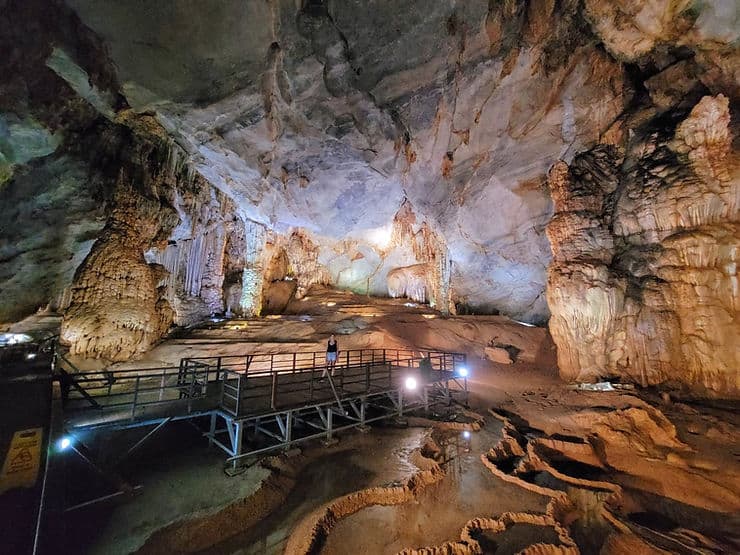
Budgeting for your trip is one of the most important things you can do, both before and during your travels. Make sure that you read these top tips to help you manage your budget and keep track of your spending when travelling.
Need help saving for your dream trip? Check out my 12 super simple tips for how to save for full time travel
10. Have a couple of good debit cards
One of the most important things you will need when travelling is a safe way to access your money. Instead of using your normal bank debit card, which may have expensive fees for use overseas, get yourself a new debit card, purely for travelling. I use a Starling Bank debit card, but I’ve also heard good things from travellers about Revolut and Monzo too. Instead of having all your money on your travelling debit card, simply ‘top it up’ when you need and keep just a small amount on the card. That way, if you lose the card, or it gets stolen, you don’t risk losing a lot of money. For this same reason, having two debit cards you can use in this way is also a great idea (just make sure you keep them in different places!).
11. Pay for large items on a credit card
When booking things like accommodation, travel (especially flights) and activities, always use a credit card. Credit cards offer a much higher protection on spending and if something goes wrong with the supplier (for example, if the service provider goes out of business), your credit card company can help you to claim your money back. I have a Halifax Clarity credit card which is great for travelling and using abroad. Shop around and find a credit card with low or zero exchange fees or charges for using it overseas.
12. Always carry some cash
When travelling in Southeast Asia, it’s a good idea to always have a bit of cash on you. If you are travelling to more remote areas, or buying something from a local shop or stall, you will need to pay for it in cash. Just be aware that many of the ATM’s in Southeast Asia charge for withdrawing money and they have a limit for how much you can withdraw, which is annoying!
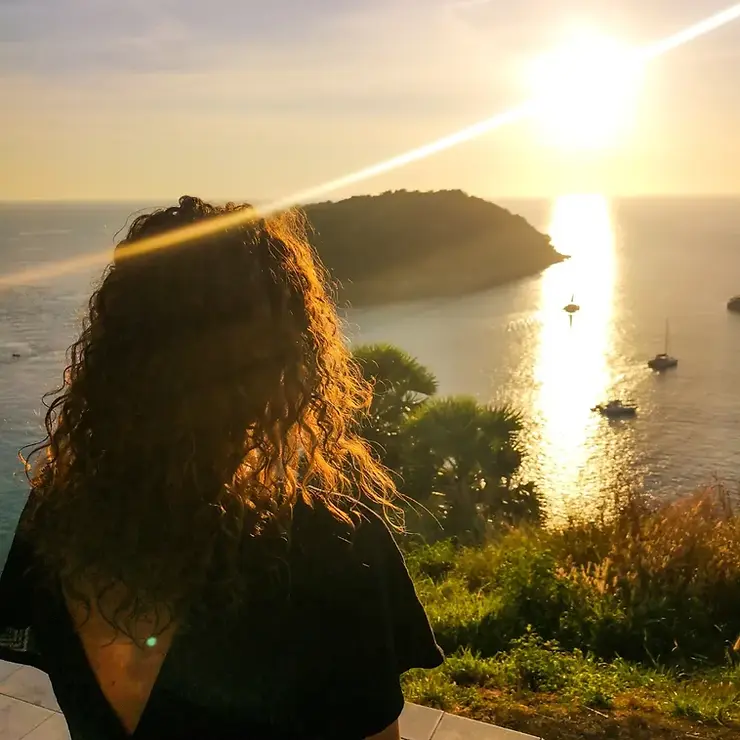
(Image: Windmill Viewpoint, Phuket, Thailand)
13. Make sure you can access your bank account if you lose your phone
Most of us manage our bank accounts via an app on our phones. However, what happens if your phone is lost or stolen? Make sure that you know how to access your bank account online or over the phone.
14. Set yourself a travel budget and track your daily spend
Possibly THE most important element of travelling is budget management! It doesn’t sound exciting (and it’s not!), but it’s vital if you don’t want your trip to end abruptly because you’ve run out of money.
When planning your trip, do your research and set a daily budget. This should be based on the prices of accommodation, food, transport and activities in your destination and also what kind of experience you want to have (on the scale of budget backpacker – luxury holiday). Read my step by step guide on How to budget for full time travel and create your own Travel Budget (you can also download my FREE Travel Budget Spreadsheet Template).
Make sure you record your daily spend to keep you on track. I use the free version of @travelspendapp . Managing your budget means that if you’re careful in some places, you can splurge on more expensive trips in others, such as an overnight luxury cruise to Halong Bay in Vietnam
15. Take advantage of travel rewards programs
There are plenty of rewards programs available to savvy travellers. One of my favourite reward programs is the Booking.com genius program. The more qualified bookings you make through your Booking.com account, the more genius points you can earn, which can get you discounts and upgrades on certain hotels, transport and experiences.
Another great rewards program, if you are from the UK, is Topcashback . Simply login to your Topcashback account and make your booking with one of the travel providers via the Topcashback site to earn cash back on your purchase.
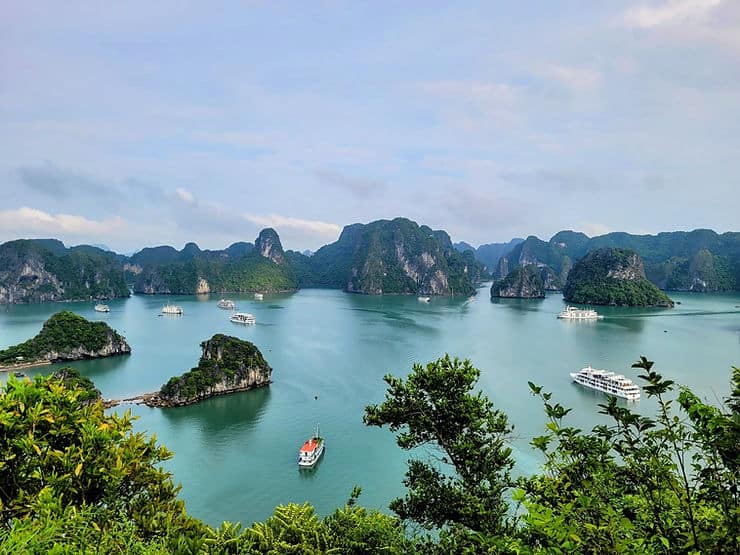
Southeast Asia is a large, diverse continent and even the individual countries within Southeast Asia are massive, so you’re going to want to travel around and explore as much of it as possible. Getting around in Southeast Asia is not always the most straightforward, so here’s some tips to help you navigate public transport.
16. Shop around for the best deal on public transport
During the 7 months I spent in Southeast Asia, I booked a lot of my bus and ferry journeys online. One of the best booking platforms for transport in Southeast Asia is 12go . Camboticket in Cambodia is also another good option. (For booking tours, Viator , Get your Guide and Klook are all great platforms). But don’t just rely on websites. Speak to your hotel or hostel and get their advice. Sometimes they can tell you about transport routes or tour companies that don’t appear on the larger comparison websites. Whatever you are booking, shop around and get a couple of prices for the best deal.
If you are travelling a longer distance, or between countries, don’t assume that travelling by plane will always be more expensive. Sometimes a flight can be cheaper, or a similar price to a long distance train, especially if you have carry-on only bags. It’s also worth taking into consideration the journey time. If a flight is only £30 more but takes 14 hours less than the bus, it may be a better option for you.
17. Travelling from A to B is not as easy as it sounds!
Travelling from A to B sounds easy (and it should be!), however travelling from A to B in Southeast Asia usually ends up being a lot more complicated than it needs to be! Don’t be surprised if you are asked to change buses several times throughout your journey as different drivers and companies take over each section of the trip. I took a journey in Thailand from Railay in Krabi to Koh Samui which took 12 hours and consisted of 1 boat, 5 buses, 1 ferry and a taxi (which was 4 more buses than expected!) Try to stay patient and go with it, it won’t make you feel any better getting stressed about it.
18. Give yourself plenty of time for transfers
As I’ve mentioned, travel in Southeast Asia is usually not a simple process. Often journeys depart later than scheduled and will take a lot longer as the drivers make random stops along the way. If you are planning a journey that has transfers with different companies (for example, a bus journey followed by a ferry), make sure that you leave plenty of time between each leg of the journey, as you are most likely going to be late!
19. Prepare for delays or things to go wrong
You can see a theme emerging here! Most journeys in Southeast Asia are late, or delayed, or there’s been a miscommunication with your booking. Try to be patient and polite with the locals. Most local people I encountered in Southeast Asia were incredibly warm and friendly and willing to help. So, be respectful and don’t be rude if things don’t go to plan, it’s all part of the travelling experience!
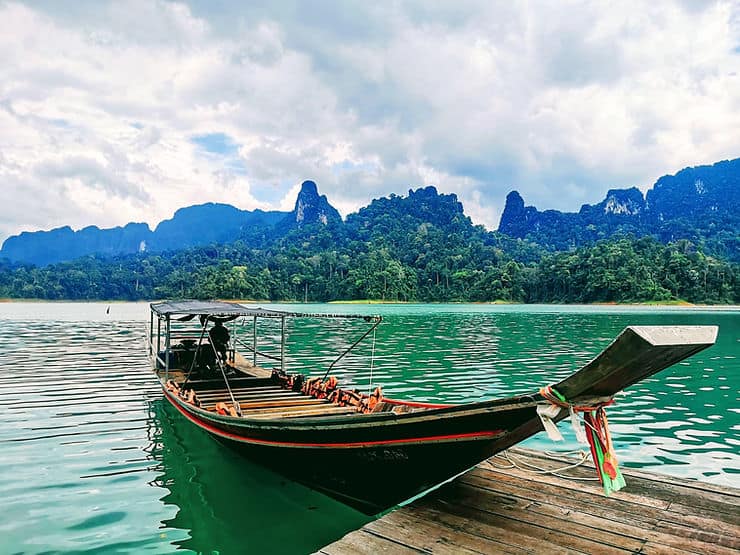
20. Don’t expect formal booking confirmations for public transport
If you’re the kind of person who likes to have written confirmation of everything, then prepare to get out of your comfort zone! As someone who is super organised and over-prepared, I had to learn to accept that formal booking confirmations don’t always exist in Southeast Asia when booking transport. Instead, you’ll be given a flimsy paper slip as confirmation, which at some point will be taken off you and replaced with a coloured sticker (which may later be replaced with another sticker!) They do love a sticker, especially in Thailand! Just take photos of your paper slip or sticker in case you lose it and you’ll be fine.
21. ALWAYS negotiate when ordering a tuk-tuk or taxi!
Rule no.1 when travelling in Southeast Asia – always negotiate! In some of the larger cities you can use Grab, Uber or Gojek which is great as it gives you an idea of what the cost should be. Even if you are getting a ride with a local driver, use the price on Grab/Uber/Gojek to help you negotiate. If that is not available, ask your hostel or hotel how much the prices should be so you have an idea of what is a good price and what is a bad price.
22. Get an international driving licence
If you are considering hiring a car or scooter in Southeast Asia, get yourself an International driving licence. If you are from the UK, you can pick these up in the Post Office for £5. Make sure you keep your licence and your international licence with you at all times when driving. Occasionally local police may stop you and ask to see your licence and if you don’t have it (or the correct one), they may fine you.
23. Don’t feel pressured into riding a scooter
Travelling in Southeast Asia and riding a scooter seem to go hand in hand (if you believe everything you see on Instagram, or read in some blogs). However, don’t feel pressured to ride a scooter if you don’t feel comfortable. The roads in Southeast Asia are uneven and windy and the traffic can be crazy, with people cutting you up and zig-zagging down the road. It is absolutely possible to travel in Southeast Asia without riding a scooter if you don’t want to. If you do want to ride a scooter, make sure your travel insurance covers you and always wear a helmet.
24. Have motion sickness tablets with you on travel days
Even if you don’t normally feel travel sick, you may find yourself feeling queasy. Many of the roads in Southeast Asia are quite hilly and windy and the drivers can be fast and erratic. Also, if you are on a small minibus, it is usually hot and cramped, making you feel even worse. (If you are in the north of Thailand, the Chiang Mai – Pai bus is notorious for making people feel ill). Buses aside, you will likely be taking several boats and ferries during your time travelling in Southeast Asia and some of the boat crossings can be bumpy. Make sure that you have some motion sickness tablets with you for your journey. These can be picked up cheaply from 7/11 in Thailand and also most pharmacies or shops.
25. Pack warm clothing in your day bag on travel days
If you are travelling long distances on a coach or sleeper bus, make sure you keep a warm top or hoodie with you. The buses in Southeast Asia are renowned for having the coldest air conditioning!
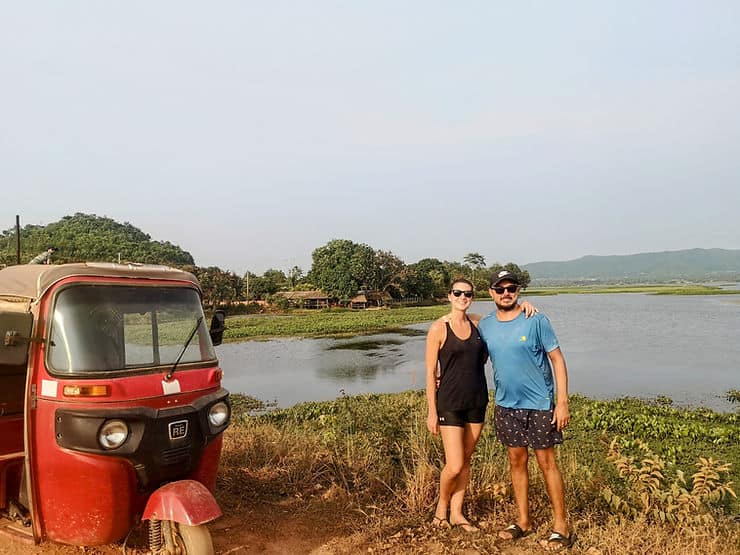
Sampling the food and drink in a new country is all part of the travelling experience and one of the best parts of visiting Southeast Asia is to eat the local food. Here’s a few tips to keep you safe and avoid the dreaded traveller’s belly!
26. Don’t drink the tap water
Unless you want to spend a couple of days being ill, don’t drink the tap water! Bottled water is very cheap to buy, Unfortunately, this does often mean that you will be using a lot of single-use plastic, which is a big problem in Southeast Asia. Some larger cities such as Bangkok, Phuket and Chiang Mai in Thailand have filtered water machines where you can top up your refillable water bottle for a fraction of the cost.
27. Be careful of the fruit!
It can be hard to stay healthy when travelling and the fruit in Southeast Asia is delicious, however, just be careful where you buy it from. There’s plenty of street stalls selling pre-cut fruit. Most of it will be fine, however you don’t know how long it has been sitting there getting warm and also whether it has been washed in clean drinking water. Eating dodgy fruit can make you really sick and wipe you out for several days – believe me! Try to pick places where they cut the fruit fresh in front of you, or buy whole fruit which you can peel/cut yourself.
28. Eat the street food!
The street food scene in Southeast Asia is brilliant (plus its great for your budget too!) The street markets are a lively buzz of noise and smells, creating a great atmosphere. Make sure you go to as many street food markets as you can, it’s all part of the Southeast Asia experience! If you buy meat from a street vendor, make sure that they fry it / cook it in front of you. Eating meat that has been left out for a while is another thing that could leave you chained to the bathroom for a day or two.
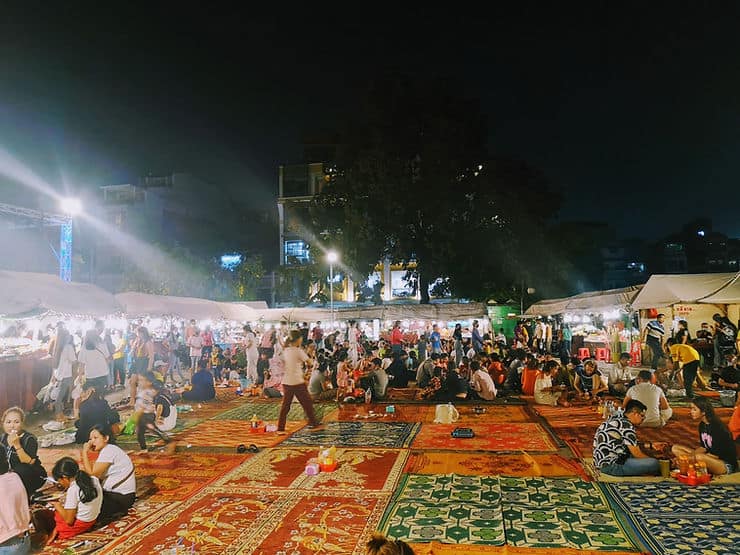
29. Try local dishes
When you visit somewhere new, make sure you know what the local dishes are and try them. Ask the locals you meet what food you should eat whilst you are there. There’s often regional variations of national dishes too.
30. Don’t be put off by the interior (or lack of!) a place
Some of the best food I’ve eaten in Southeast Asia has been whilst sitting outside on a tiny plastic stool at a metal table! In my experience, the small, family-run local restaurants have the best food and even better, they are the most budget-friendly too!

31. Bring a reusable water bottle and bag
As I’ve mentioned, some of the larger cities and towns in Southeast Asia do have places where you can top up your reusable water bottle. There are also some cafes which will allow you to top up for a small charge. Reusable water bottles are also vital for taking on some of the amazing hikes Thailand has to offer. Tip – buy an insulated bottle to keep your water cool!
Take a reusable cotton tote bag too for your shopping, rather than asking for a plastic bag each time you go to the shop. This foldable tote bag is perfect as it has a zip to keep your valuables secure too.
32. Check the spice level!
Spicy food in Southeast Asia is on a different level! A ‘mild’ dish is comparable to a medium in the UK. Don’t be afraid to ask for no chilli or for a dish to not be spicy.
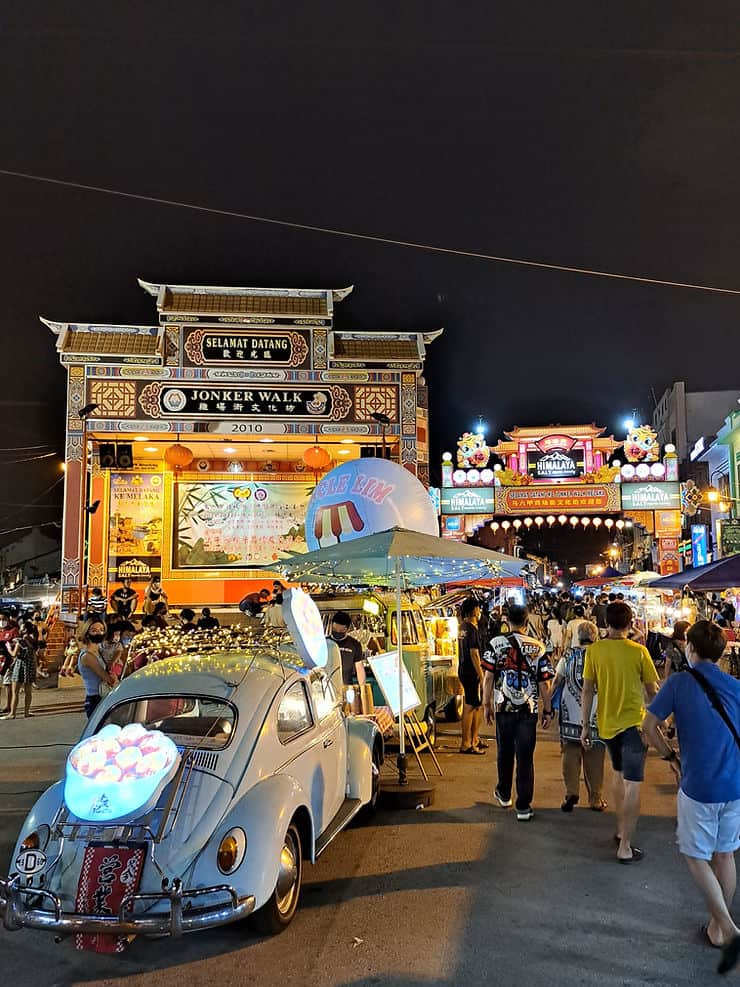
Experiencing a different culture and learning about the history and traditions of a place is one of the best bits about travelling. Read these four things you must do to make sure that you are respectful and get off to a great start with the locals when travelling in Southeast Asia.
33. Learn basic phrases
If you are travelling in another country, even just for a couple of weeks, it’s a great courtesy to know a couple of key phrases, such as Hello and Thank You. Even though English is widely spoken across Southeast Asia, locals love it when you try to speak a little of their own language and will be happy to teach you some new phrases.
34. Be respectful
Southeast Asian culture is very different to western culture and each country in Southeast Asia has their own traditions and cultural differences. Make sure that you know how to behave in certain situations and be respectful. For example, women should not approach, converse with or touch Monks. Women also cannot enter certain shrines or temples whilst menstruating.
Travelling to Bangkok? Make sure you visit these three temples
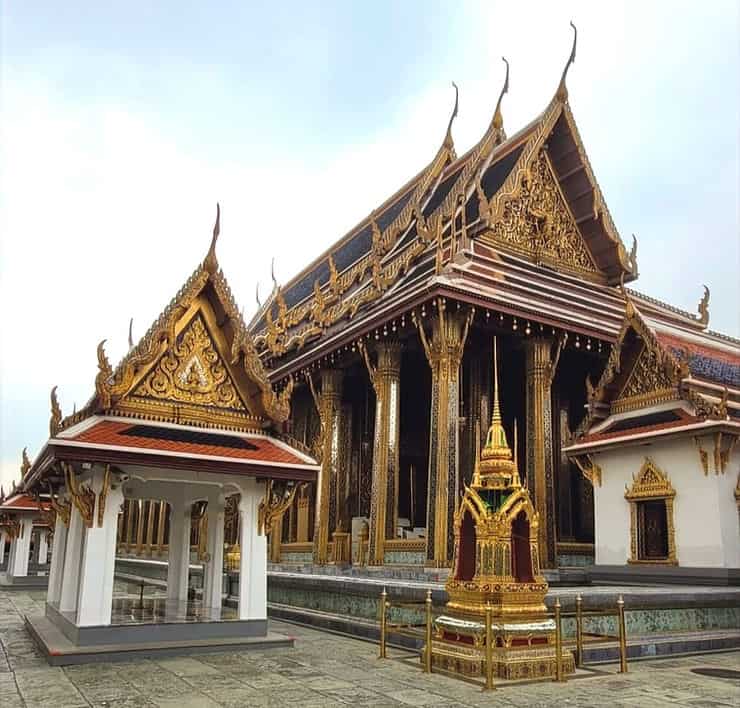
35. Dress appropriately
Whilst both men and women should make sure that they are respectfully dressed when entering a temple or government building, this mostly applies to women. Whether you’re exploring Ankor Wat , in Cambodia or the Grand Palace in Bangkok, women must always cover their knees and shoulders when visiting a temple.
When bathing in certain spots, it is respectful to cover up. Wearing a bikini is acceptable at most public beaches and in your hotel or hostel pool, however, if you are visiting a local bathing spot, you will notice that Southeast Asian women wear shorts and a t-shirt to bathe in. It is polite to do the same.
36. Take off your shoes
This is common practice in many places throughout Southeast Asia, but it is mostly associated with Thailand. Shoes should always be removed before entering a temple, but you will also need to remove shoes before entering other places too. If you are staying in a small guesthouse, or homestay, it is polite to leave your shoes outside. This is the same if you enter a small, local shop and even when you travel on certain boats and buses (especially the sleeper buses in Vietnam).
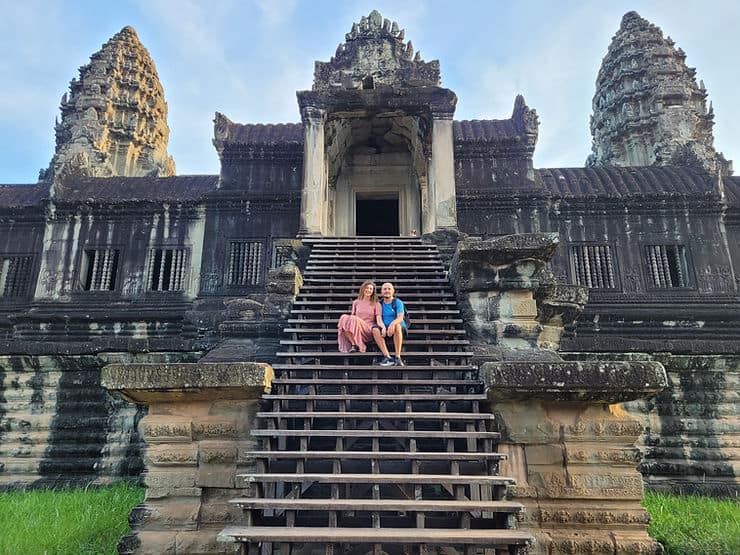
Prepare for your trip to Southeast Asia by making sure that your health requirements and needs are taken care of before you travel…
37. Check what vaccinations you need before you go
When planning a trip to any new country, it is important to make sure you have received all the relevant vaccinations beforehand. If you are in the UK, you can check the NHS website to see which vaccinations are recommended for the country you are visiting and which vaccinations you can get for free on the NHS.
38. Stock up on sunscreen
Suncream is not widely available in Southeast Asia, especially if you are travelling away from the main tourist holiday destinations. It is also very expensive. You will find lots of ‘sun serums’ or ‘daily lotions with spf’ – be careful with these, whilst they do offer some level of protection, they are not full sun creams and are not recommended for using while sunbathing. If you are only travelling for a short amount of time, take several bottles with you from home, if you have room.
39. Take any medication / feminine products with you
If you are travelling to some of the smaller islands, or more remote places in Southeast Asia, there is not always a large pharmacy available. So, if you need medication, make sure that you bring it with you and restock it before you run out. Feminine products can be expensive too, so if you can, bring these with you.
40. Always carry medication for ‘travellers belly’
It’s not nice to talk about but almost every traveller will experience an upset stomach at some point during their travels in Southeast Asia (no matter how careful you are). Although the best advice is to rest and let the bug ‘pass through’, that is not always possible, especially if you have a bus journey to get through. With that in mind, carrying some tablets for diarrhoea will be a lifesaver!
41. Always have a toilet roll with you on travel days!
This goes hand in hand with the above – most toilets in Southeast Asia don’t have toilet paper and there’s usually a small fee for using them, so carry some small change too.
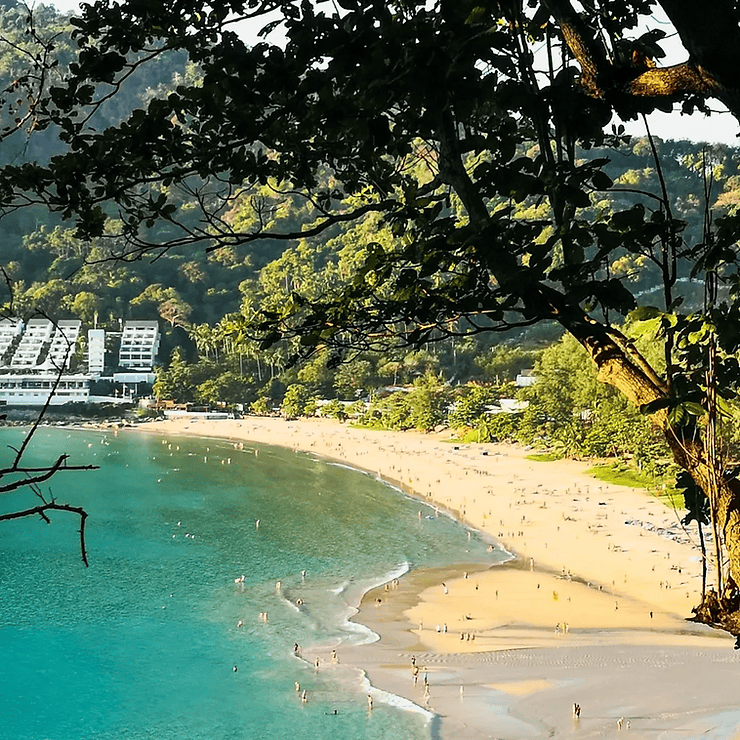
Depending on how long you are travelling in Southeast Asia for, your packing list will vary. This is also true if you are planning a long trip and are visiting other places outside of Southeast Asia too. So, rather than include a full packing list in this post, here’s a couple of top tips to help you pack better.
42. Take a Scarf or sarong
A scarf or sarong is one of the most versatile items you can pack in your bag. It is great for covering your shoulders in a temple, laying on at the beach, throwing on over a bikini, using it as a pillow on travel days or keeping you warm on the buses! Plus it takes up virtually no space in your bag!
43. Pack layers
You definitely don’t need as many clothes as you think you do, and you will end up wearing the same things over and over! Pack light things that you can layer and roll up small in your bag. In terms of shoes, one pair of trainers, one pair of flip flops and one pair of Birkenstock or chunky walking sandals will be suitable for pretty much everything in Southeast Asia. I lived in my Birkenstocks for pretty much the whole year!
44. Leave room for new clothes!
Don’t go shopping for everything before you leave home. The clothes in Southeast Asia are so cheap and let’s face it, most of the clothes you will buy at home will most likely come from Southeast Asia anyway! If there’s anything you’ve forgotten or wished you had packed, you will more than likely be able to buy it in Southeast Asia.
45. Be savvy with your chargers
There’s nothing worse than having a bag full of cables and charging wires! A lot of devices will accept the same charger cable and this is a great way to reduce the number of wires you take. For example, my laptop wire will fit my phone and my Go pro, meaning I only need one wire for three devices. (I do also have a single USB cable that will plug into an adaptor so I can charge two things at one, but this takes up hardly any room). I’d also recommend putting your wires into a small organiser case , so they are easy to locate in your bag.
46. Embrace the packing cube!
Packing cubes are a lifesaver when it comes to packing for travelling. Even if you are sceptical about it at first, you will soon realise how handy they are. It’s a great way to separate (and easily locate!) your clothes in your bag. They also help to condense things down in your bag!
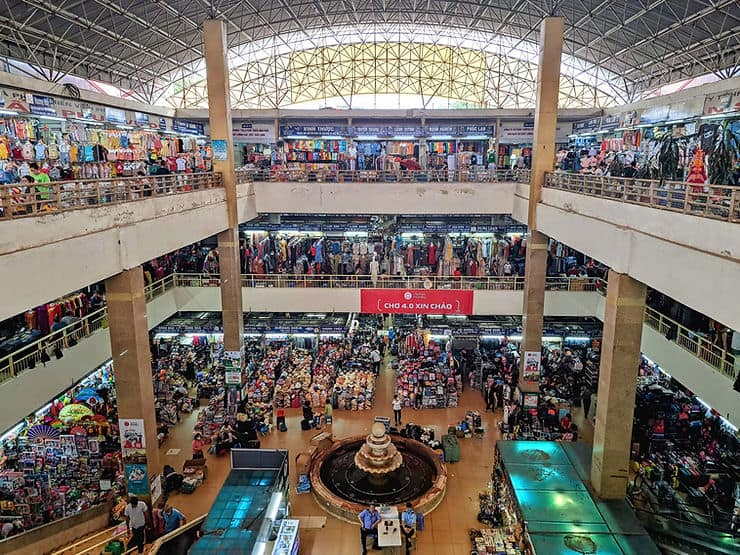
Making the decision to go travelling can be scary but it is also super exciting! Have the best time and remember that comparison is the devil!
47. Chat to others
One of the best parts of travelling is meeting other like-minded travellers. There’s a reason that Southeast Asia is one of the best places to travel solo. There’s so many great hostels and Facebook groups, where you can meet up with other people.
48. Everyone has bad days when travelling
You will have THE BEST time travelling, but there will also be some days that don’t quite go to plan and other days where you are tired or may feel homesick. The best advice I can give you is not to dwell on those days, it is completely normal and usually after a good night’s sleep and a comfy bed, you will feel much better.
49. Don’t compare your journey to others
Everyone’s travel experience is different and your trip will be unique to you. Don’t get caught up in comparing your journey to everyone else’s, just enjoy and embrace your own travel experience.
50. Have fun!
Travel is one of the best things you can do (in my totally biased opinion!). Whether you’re travelling in Southeast Asia for a few weeks or a few months, relax, go with the flow and HAVE FUN!
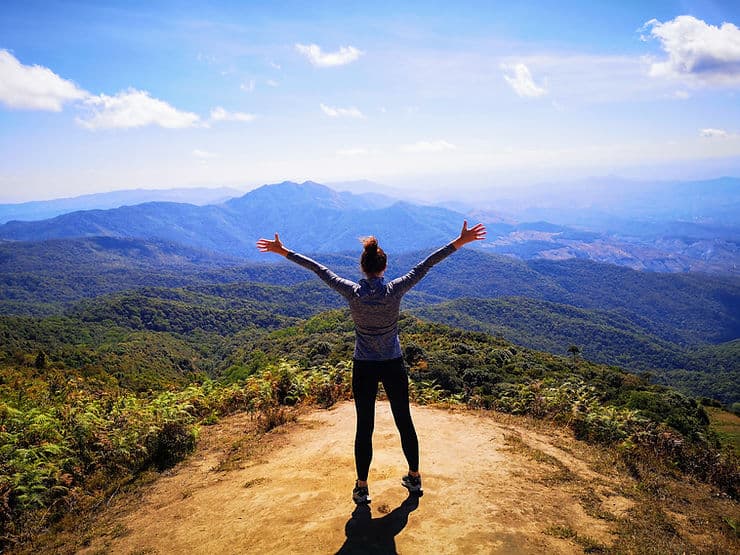
Related Posts
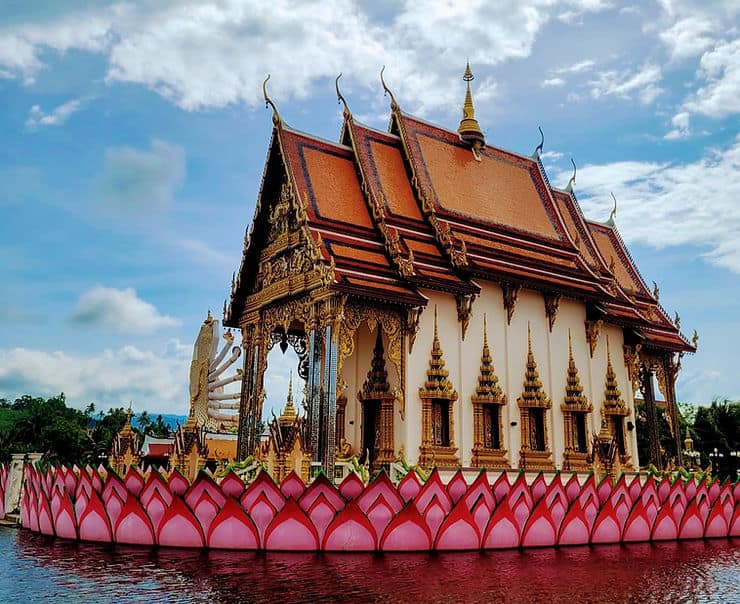
Top 15 things to do on Koh Samui, Thailand
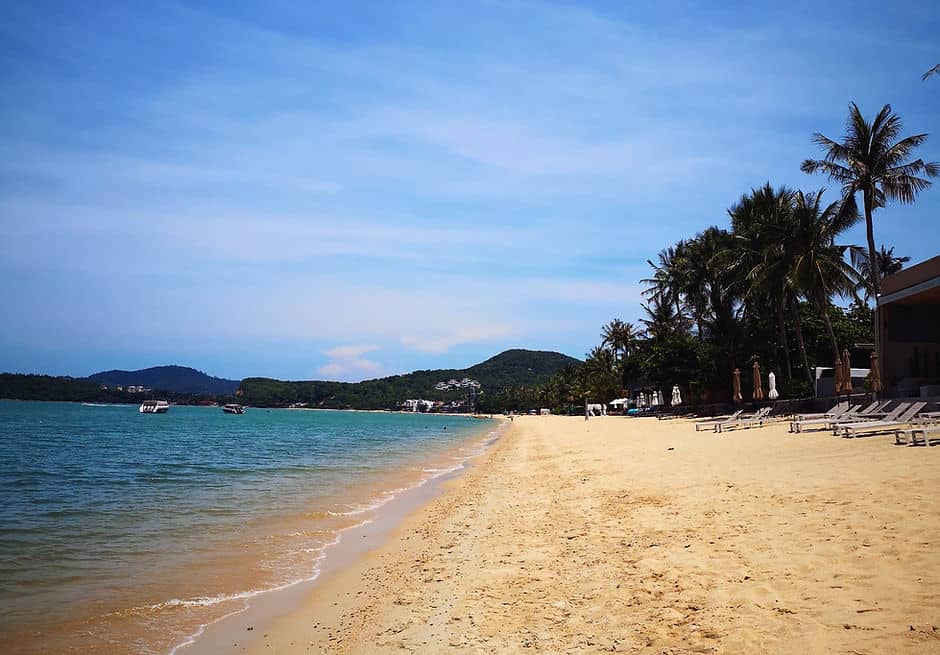
A guide to visiting Koh Samui, Thailand
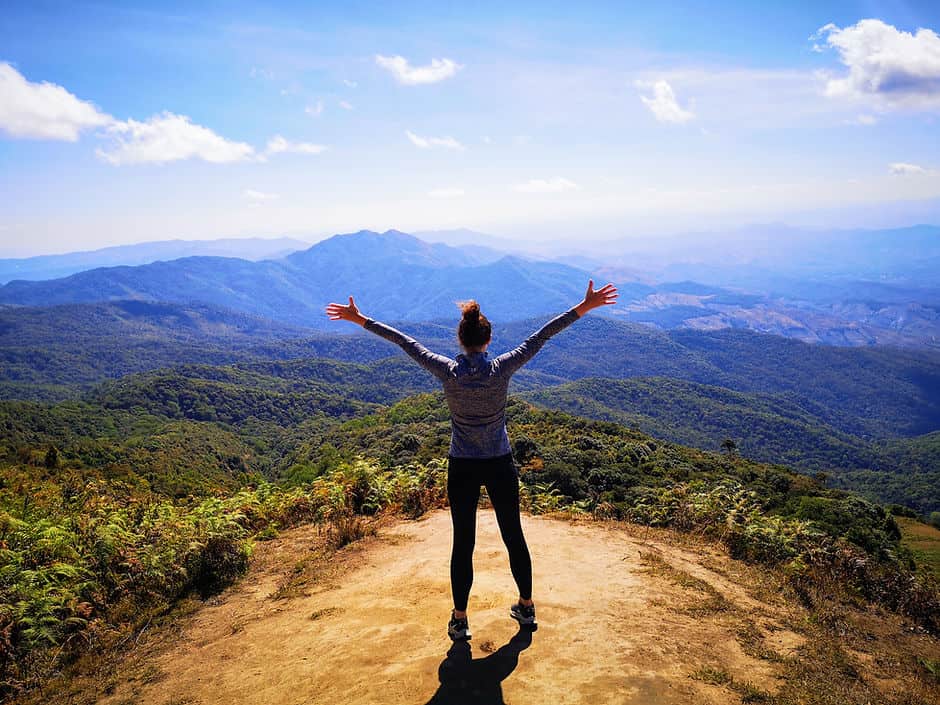
10 Unmissable hikes in Thailand

Breathedreamgo
The transformational travel guide
Travel Essentials Packing List for Asia
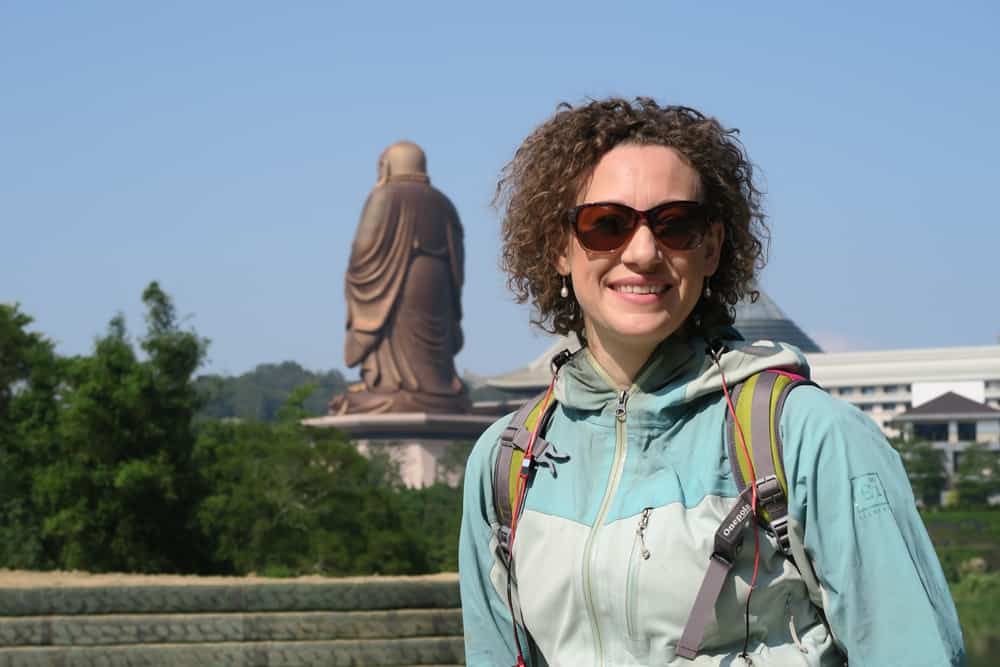
Table of Contents
Travel Essentials Packing List for Asia: What you need and what you don’t
Guest post by Deborah Provenzale.
YOU’RE EXCITED FOR your upcoming trip – you’re backpacking Southeast Asia and/or South Asia! You’ve made your plans, booked your flights, and now it’s time to pack. The only problem is, how do you know what should go on your international travel packing list? Packing for travel in Asia, especially Southeast Asia, and South Asia including India, is different than other regions due to the combination of heat, humidity, traditional cultures, and challenging travel conditions.
After living and traveling in Asia for eight years, I’ve taken my personal experience to put together the essential travel packing list for your trip. I’ll share with you the backpacking must haves, including luggage, shoes, clothing, and gear, as well as the things you can either buy on the road or simply leave at home. I want to recommend good and useful products, and also warn against things you don’t need and won’t use.
Note on the affiliate items in this post: all items were hand chosen by Deborah or by me, Mariellen, and they have our personal stamp of approval. For India, specifically, check out my post Packing for travel in India .
What to Pack for Thailand and backpacking Asia: Your travel packing checklist
Travel backpacks and luggage.
Essential luggage for backpacking Asia includes a travel backpack. The first item on your backpacking essentials list should, of course, be a good travel backpack. I bought mine several years ago at REI in the USA, so it’s no longer available, but here are some things to consider and what I like about mine.
– Opens in the front instead of the top: This makes it easier to pack it like a suitcase and quickly find what you’re looking for. I like that mine also has interior mesh pockets where I often put my socks, underwear, and all the cables, chargers, etc. for my electronics. It even has straps on the inside like a regular suitcase so I can strap everything down once I’ve finished packing.
– Adjustable torso: It’s important that your backpack fits you really well, especially if you’re going to be using it for a long duration while backpacking Asia. The torso can be adjusted to your height, and there are several other points on the backpack that are adjustable, including the hip belt and top straps.
– Capacity: The backpack I have is 80L, which holds a lot. Nowadays, the range seems to be more around 40-60L to comply with airline regulations for size and weight allowances for carry-ons. I have had no problems carrying mine on while traveling all over Asia, but you definitely need to be aware of your backpack’s dimensions and how much weight you pack. My pack can definitely get heavy, but thanks to its great design, the weight is distributed onto the hips, so it’s super comfortable to carry and doesn’t add any stress to my back or shoulders – very important when backpacking Southeast Asia and South Asia
– Removable day pack: One thing I love about my travel backpack is that there is a smaller day pack in the front pocket that’s removable. The day pack has mesh side pockets for water bottles, it has two zippered compartments – a smaller front one for pens, keys, your sunscreen, and other smaller items, and a spacious main compartment with an elastic pouch for your laptop and space for notebooks, a jacket, or whatever else you want to carry with you.
– Lockable zippers: When shopping for a good travel backpack, make sure you find one that has zippers that can be locked together. On the one I have, the zippers for the main and top compartments have rings like on a suitcase that fit together so a lock can go through. Check out this post for more anti-theft backpacks .
– Rain cover: When you’re backpacking Asia, especially during monsoon season, it’s highly likely that you’ll have some rainy days. To protect your clothes and items inside your backpack, you’ll need a good rain cover. One thing I like about mine is that the rain cover doubles as a protective bag for times when I need to check my bag for a flight. It keeps all the straps together and secure and protects from dirt and rough baggage handling.
There are many great backpacks for female travelers on the market today, so use these tips to find the right one for you. These are two of the best (note they come in different sizes):
Osprey Fairview 70 Women’s Travel Backpack
Eagle Creek 65L Women’s Travel Backpack
Carry-on suitcase
Perhaps you want the experience of traveling Southeast Asia or South Asia but you don’t want to carry a backpack. Then another option is to get an international carry-on suitcase. The brand I like is TravelPro. They have the Maxlight 5 line of suitcases that are the lightest I’ve seen on the market so far. They have a great warranty and are very good quality.
Here are some things to keep in mind when looking for a carry-on suitcase.
– Lightweight: Weight is always important when flying, but it’s more so with a carry-on. In Asia, there are many budget airlines, and their restrictions are quite strict. In my experience, most airlines will allow you to carry on a maximum of 7 kg (a little over 15 lbs) at no extra charge, but you have to pay extra if you want to increase it to 10 kg (22 lbs). More than that and you’ll have to pay to check your bag. So instead of wasting precious weight on the suitcase itself, opt for the lightest one you can find.
– 360-degree spinner wheels: This will make your life so much easier when navigating through crowds and maneuvering along uneven roads and sidewalks, all of which Asia has a lot of. Just make sure to get a suitcase with a good warranty and high-quality wheels as these are often the first items to break or get damaged while traveling.
– Fits international carry-on standards: Not all carry-on suitcases are alike. For domestic travel in the USA, the allowable dimensions are actually a bit bigger than those allowed for international travel. So check that your carry-on accommodates international dimension regulations. You can check the regulations on any airline’s website to be sure, and as a tip, when measuring your suitcase, make sure to include the wheels and handles. Travelpro has a specific international carry-on to save you the worries. Here are a couple we recommend:
TravelPro Maxlight 5
Swissgear Sion Spinner 21” Carryon
Compressible packing cubes
Packing cubes are all the rage now, and for good reason. They really are travel essentials. Not only do they keep your backpack or suitcase organized so items are easy to find, but they also come in different sizes so you have just the space you need for everything from undergarments to shirts, pants, and even jackets.
The ones I use are the Gonex Compression Packing Cubes which come in a set of three – small, medium, and large, which are the perfect sizes to put my socks in one, underwear in the other, and shirts and leggings in the largest one.
The reason I love these cubes is because once I’ve filled them up, then there’s a second zipper that compresses the cube to save on packing space. They’re made of a strong, water- and stain-resistant fabric that is woven in a box pattern to prevent tearing. I’ve been using mine for two years, and they still look brand new. Plus, they come in a variety of great colours. Eagle Creek also makes great compression packing cubes.
Gonex Compression Packing Cubes
Eagle Creek Compression Cube Set
Luggage locks and cables
When backpacking Southeast Asia and South Asia, you MUST be diligent in keeping your bags locked and your belongings secure. Due to the sheer volume of people, it’s a haven for pick-pocketing and theft, and all it takes is for you to look away for even a moment to then find that your bags have disappeared.
The best way to protect yourself is to lock the zippers on all of your luggage, even any small backpacks and bags you’re hand-carrying. In addition, when you can’t be near your luggage to keep an eye on it, lock your luggage all together with a steel luggage cable. I like the 4-foot cables because they’re long enough to thread through all the luggage handles and then wrap around something solid like the leg of a bus seat or any unbreakable poles or handrails.
I like these particular cables because they’re thick braided cable that is cut-proof, covered by a vinyl coating to protect against rusting and friction. It’s a set of two 4-foot cables, which is great because I always like to have a couple cables in case I need the extra length. The other great thing is that they’re light-weight and compact, so you won’t even notice that you’re carrying them. Just note that they don’t come with the locks, so you’ll need to buy those separately, and make sure you get TSA-approved locks.
Cable luggage lock and cables
Safety Cable
Good travel shoes are backpacking must haves
When you’re planning your packing list for Asia, one of the most important things is your shoes. However, you need to find a balance between having shoes that coordinate with any outfit and are appropriate for any function and not going overboard with too many shoes. All you really need are three essential pairs: light hikers, flip flops, and walking sandals.
One note is that it’s a good idea to have a pair of closed-toe shoes. The streets in Asia can be quite dusty and dirty, and there are times you might want to go trekking in places with grass or brush. So be sure to have one pair of shoes that covers your toes.
Flip flops Flip flops are a must for any Asia backpacker’s travel packing list and Reef is the best brand. Not only are the streets dirty, but you won’t want to be going barefoot in any public areas including swimming pools, beaches, and even showers at spas and hostels. It’s not that these places are totally disgusting and never cleaned, but just think about all the people going in and out coupled with the humid environment. It’s a breeding ground for bacteria and fungus like athlete’s foot.
Reef Stargazer flip-flops
One thing to note is that when you’re deciding what things to pack for Thailand and other Asian countries, keep in mind that many hotels and guest houses will ask you to remove your shoes before entering the building. It’s also common in many other Asian countries like India, China, Japan, Malaysia and Indonesia. Often, they will provide you with some indoor slippers, but not always. So for these cases, it’s also a good idea to have a pair of flip flops with you that you can wear indoors so you don’t have to go barefoot.
Thailand rope sandals One thing you can leave OFF your Thailand packing list and instead, put on your Thailand shopping list, is rope sandals. These amazingly comfortable sandals are not only super cute and stylish, but they’re hand-crafted in Thailand. I bought a pair in Chiang Mai while backpacking Thailand a few years ago, and I paid only around $10 USD for them. I loved them so much that I took them with me everywhere I went while backpacking Asia. If you are backpacking Southeast Asia or Thailand, get yourself a pair. You’ll love them.
READ: The best Thai food in Thailand.
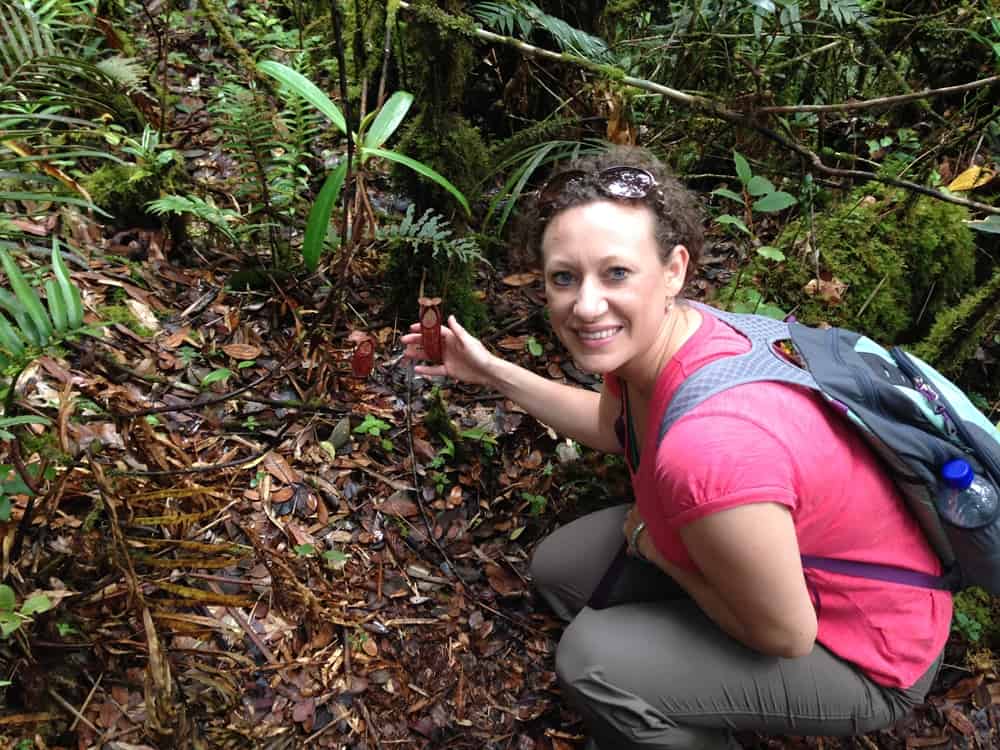
Clothing packing list for Asia
As far as clothing goes, the list is short and simple because Asia is a great place to find comfortable, stylish, and inexpensive clothing. So when you’re making your backpacking essentials list, you can save the space and weight by going light on the clothes. There are really only a few essential items you need, and the rest you can buy as you go.
Long skirt and pants This is pretty much the foundational item on every solo female traveler’s packing list. Long skirts can be paired with anything, can be worn in any circumstance like visiting temples where bare legs above the shins are not allowed, are classy and comfortable, and they keep you cool in the Southeast Asia and South Asia heat and humidity. You can’t really go wrong with any type of long skirt you like. Just make sure it’s a light-weight and breathable material as some cotton skirts can be heavy for packing and take a long time to dry when wet.
It’s also a good idea to pack very light-weight long pants in a neutral colour – you can use them for hiking, trekking, or wildlife tourism and safaris.
Loose, modest shirts
Asian countries tend to be more modest than in the USA, Canada, and Europe. So it’s important to respect the cultures and traditions by dressing modestly. As a solo female traveler, it’s also in the best interest of your safety to not draw unwanted attention to yourself.
Hiking shirt
Columbia long-sleeve travel shirt
When I’m creating my international travel packing list, my go-to clothing staples include long, loose t-shirts, shirts and tunics because I know that they will go with whatever skirt or pants I choose to wear. They also layer well, are comfortable, and they’re appropriate for temples and other sacred places where bare shoulders are prohibited. Be aware that t-shirt material – jersey cotton – is very hot and clingy in humidity and never dries when you hand wash! It’s much better to pack breathable fabrics like light, woven cotton and wicking microfibres.
Biker shorts This is one of the travel essentials that only travelers who are experienced in backpacking Asia know about. “Why biker shorts?” you’re probably asking. Because after you’ve been walking all day in the heat and humidity of Southeast Asia and South Asia in a skirt or dress, you’ll start to feel some chafing where your thighs have been rubbing together. Do this day after day, and you’ll be in some serious pain.
Biker shorts – the sporty, moisture-wicking ones, not cotton – protect your thighs from the chafing. Wear them under any skirt or dress, and you’ll have the added benefit that if an unexpected gust of wind blows your hem up, you won’t have your panties on full display. They’re great for times when you’re actually riding a bike or scooter, too. Biker shorts are light-weight and form-fitting, so no one will even notice that you’re wearing them under your skirt or dress.
You can also try bamboo capri leggings, which are cooler than cotton, and can be paired with long tunics (called kurtahs in India).
Microfibre underwear
If you haven’t noticed a pattern yet, any packing list for Asia must account for the heat and humidity. Your underwear are no different. Cotton panties are not advisable because they soak up the sweat and then stay damp all day long, which can put you at risk for yeast infections. Microfibre underwear and bras, on the other hand, wick away moisture and dry quickly. They are also easier to wash as they don’t hold onto bacteria and odours like cotton underwear do, and they can be dry within an hour or two. ExOfficio specializes in travel clothes that wick away sweat and moisture.
ExOfficio bikini underwear
Comfortable bras Much like your panties, bras can get sweaty and smelly, too, and depending on how much walking you’re doing, they can start to chafe around your bra line. After living in Taiwan and traveling throughout Asia for eight years, I tried many different options, but there is only one that has become my tried-and-true solution.
ExOfficio has some great breathable, seamless, and wireless bras and camisoles. The microfibre material wicks away moisture so you don’t get those sweaty friction points that you get with regular underwire bras. I like these, too, because they can layer as a shirt or even be worn by themselves. You just have to remember to cover up your shoulders if you go to any temples or shrines.
ExOfficio bra
ExOfficio camisole
Hat The sun can get pretty intense in Asia, so it’s a good idea to have some kind of cap or hat as sunscreen alone might not protect you all day long if you forget to reapply it. It’s best to get a wide-brimmed hat, and preferably one that can be rolled for easy packing without losing its shape.
Rain jacket Although it’s easy to find disposable plastic raincoats in any convenience store in Asia, it’s not a very earth-friendly option. Instead, opt for a light-weight, breathable wind-breaker jacket that’s waterproof. I love my Marmot rain jacket. It’s a nice colour, it packs down inside its own pocket for easy carrying, and it’s great for cooler evenings when a light jacket is needed.
Marmot lightweight rain jacket
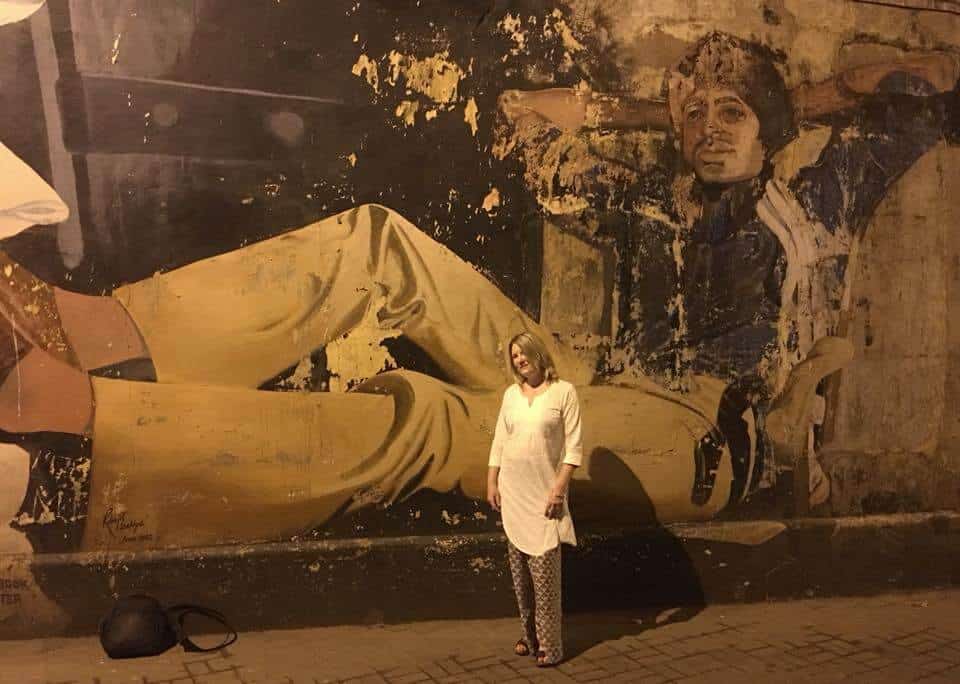
Items you can buy in Southeast Asia and South Asia
Sarong One of the travel essentials when backpacking Asia is a sarong. Sarongs are versatile and can be used for many purposes. They can be worn as a skirt, a scarf, a shawl, and a dress, and they can be used as a sheet or light blanket for those cold flights and bus rides, or when you don’t want to sleep directly on the sheets on a bed. Don’t worry about finding a sarong before your trip, though. You can find these throughout Asia, especially in places like India and Thailand, and they’re super inexpensive and come in a huge variety of colours and patterns.
Scarves If you want something lighter to keep your neck warm or just want a cute accessory to go with your outfit, you will also find an abundance of beautiful scarves during your travels in Asia. Thailand is one of my favourite places to shop for amazing scarves at unbeatable prices, and the variety in India is mind-boggling.
Tunic or kurtah Kurtah means shirt in Hindi, but refers to a long tunic that is often worn with flowing pants and a long scarf – together, these three pieces are called a “suit,” “salwar kameez,” or “Punjabi suit.” If you need to be ultra-traditional, or if you’re going to a dressy occasion, wear all three together. Otherwise, you can just wear the tunic with jeans, leggings, or a skirt.
Read my post What to wear when travelling in India for more ideas.
Thai Elephant pants Thailand wins again with its huge assortment of elephant pants. Don’t know what those are? Just a quick Google image search will show you the fun, colourful, and comfortable array of Thai elephant pants. Want some comfy lounge pants? Need some new pyjama bottoms? Just want a comfortable, light-weight pair of pants to go sight-seeing in or to do yoga? I give you elephant pants. I bought so many of these on my visits to Thailand because they’re so comfortable and inexpensive. You can get these in India, Bali, and throughout Asia, where they are popular with backpackers.
And speaking of the famous Indonesian island, here’s a great list of the best places to stay in Bali for your trip planning.
Jewelry In general, I don’t make it a habit of traveling with a lot of jewelry, but especially when backpacking Southeast Asia and South Asia, you don’t need to pack much jewelry because you can find it everywhere you go for really great prices. Thailand is a great place to buy silver, just make sure you’re getting the real stuff, Indonesia has a lot of beautiful wood and bead jewelry, you can find nice jade in Taiwan, Japan abounds with hand-painted accessories, and the bling in India is astounding. Every country in Asia seems to be known for its own unique type of jewelry, so leave the stuff you already have at home, and treat yourself to some new bling.
Read my post What to buy in India? For more ideas.
Travel toiletries list.
Toiletries is another section on the travel packing checklist that you can keep relatively short. You can buy most skin care, hair care, and cosmetic items wherever you go in Asia, and you’ll have no problem finding high-quality products, as well as products in travel sizes. There are still a few items, however, that I’d recommend packing.
Silicone travel bottles Instead of getting the cheap plastic bottles that end up leaking, breaking, and getting thrown in the landfill, try these environmentally-friendly leak-proof silicon bottles. This kit comes with four bottles for shampoo, conditioner, lotion, or whatever else you want to use them for, two toothbrush covers, and three small containers for creams, scrubs, or even pills all in a clear carrying case.
Silicone travel bottles
Shampoo, conditioner, deodorant Although you can easily find these products while traveling, I don’t know about you, but I’m picky about my hair care products and deodorant. So to avoid any bad hair days or smelling a bit riper than you would like, I recommend putting your favourite products on your backpacking essentials list. This is especially true if you are careful about what deodorant you buy.
Contact lenses & solution Being a contact wearer myself, and having really sensitive eyes, I always had a hard time finding contact solution when I was backpacking Asia. So before I go on any trip, I always make sure to stock up on travel size bottles of my preferred contact solution and more than enough contacts for each eye so I know I’m covered in case I lose or tear a lens.
One side note, however, is that in Taiwan, you can buy boxes of contacts really inexpensively without a prescription, and they had my contact solution, too. So if you’re traveling in Taiwan, you’ll be fine. I’m not sure if that’s the case in other Southeast Asian or South Asia countries, though, so it’s best to not risk it and just go prepared.
Mineral powder and tinted moisturizer Heavy make-up is not fashionable or practical when on the road, so you can get away with keeping it simple. When traveling, the only product that I could never live without was mineral powder. I had a particular kind that I liked, it was a simple, one-step process to make myself feel presentable, and it didn’t feel heavy or sticky with the heat and humidity. So if you’re a make-up wearer and can survive without all your usual products, just carrying some mineral powder and a kabuki brush will save you a lot of space and weight in your bag.
Another option is tinted moisturizer with sunscreen, also known as BB (beauty balm) cream. These can be bought easily in western countries – some great options include those by Aveda and Marcelle – and also throughout Southeast Asia. Tinted moisturizer, or mineral powder, and tinted lip balm make a great on-the-go travel make-up duo. You don’t really need anything else.
Aveda tinted moisturizer , note it comes in various shades, this is just one of them
Marcelle BB cream
Menstrual cup
Let’s face it, ladies, our cycles don’t go on vacation just because we do, but who wants to pack a big enough supply of pads or tampons to last the whole trip? Not to mention, pads and tampons create a lot of waste. On one hand, you won’t have a difficult time finding pads. Tampons are not as common in Asia, but I used to buy them in Taiwan and did see them in other countries. However, there’s another option so you can leave these unsustainable products off your travel toiletries list.
I’ll be honest, I’m a late adopter of the menstrual cup. I was grossed out by the idea, and I wasn’t sure how they worked. However, after finally having the courage to give it a try, I became a fan. I’m still not an expert, but I do know that it’s important to find one that fits properly and is comfortable. One that I like is the Pixie Cup. There are various sizes, but I like that the stem is small and round. The first cup I tried bothered me because of the rigid stem. I also like that for every cup you buy, the company gives one to a woman or girl in a country where having her period would mean staying in a hut and missing work or school. Other well-regarded makers include Diva.
As a tip, don’t waste your money on the special cleansing soaps that are promoted for menstrual cups. You could use them when you’re at home, but it’s not worth carrying the extra weight when traveling. At the end of your cycle, simply boil the menstrual cup in water, dry it carefully, or let it air dry in a clean environment, then put it in a pouch or small container to keep it clean until next time.
Pixie Cup
Diva Cup
Backpacking gear list
No international travel packing list is complete without the essential gear. From converters to drinking bottles that keep your tummy safe, these are the backpacking must haves.
Converter and surge protector
When traveling internationally, you definitely need a converter and I highly recommend a surge protector. After years of backpacking Asia, I’ve tried several different converters. Many hotels and hostels in Asia are now equipped with outlets that have the converters built-in. So all you need to do is plug your appliances or devices into the correct socket and they work great. However, it’s always a good idea to use your own converter and surge protector as you never know how stable their electrical systems are, and you wouldn’t want to risk frying your laptop, phone, or other devices.
Electrical converter
A Belkin travel surge protector is a must-have item for charging laptops and smart phones.
Portable Drinking Straw and Cutlery Set A lot of restaurants now are going away from plastic straws, thankfully, but when I was backpacking Southeast Asia, I still encountered many situations where I was served drinks with plastic straws. So to avoid these situations and to do our parts to reduce plastic waste, it’s easy to just carry your own reusable drinking straw.
I like this stainless steel telescoping straw because it’s compact, comes in its own small carrying case that fits on your key ring, and comes in a variety of fun colours. So no more forgetting your portable straw or leaving it behind because it’s too big and inconvenient. You can always have this one on you, and it even has its own telescoping cleaning brush when you’re finished.
It’s also a good idea to carry your own cutlery set to avoid having to use plastic utensils, which are still widely used in Asia. Bamboo is great because it is naturally anti-bacterial and is strong, so it won’t get moldy or mildew and will hold up to daily use over a long period of time.
Reusable straw
Bamboo utensil set
Laundry bags When going through your travel packing list, don’t forget laundry bags. You’ll undoubtedly be doing laundry when you’re on the road, and these bags can greatly extend the lives of your delicates. Personally, I like a mesh laundry bag.
Laundry detergent strips Instead of carrying more liquid with you and wasting valuable space and weight, use laundry detergent strips. You can get a package for 48 loads, and they’re light-weight and lie flat in your luggage. They can be used in any kind of washing machine, whether front load, top load, or high-efficiency, and they’re safe to use for hand-washing in the sink because they’re made of bio-based products.
Laundry detergent strips
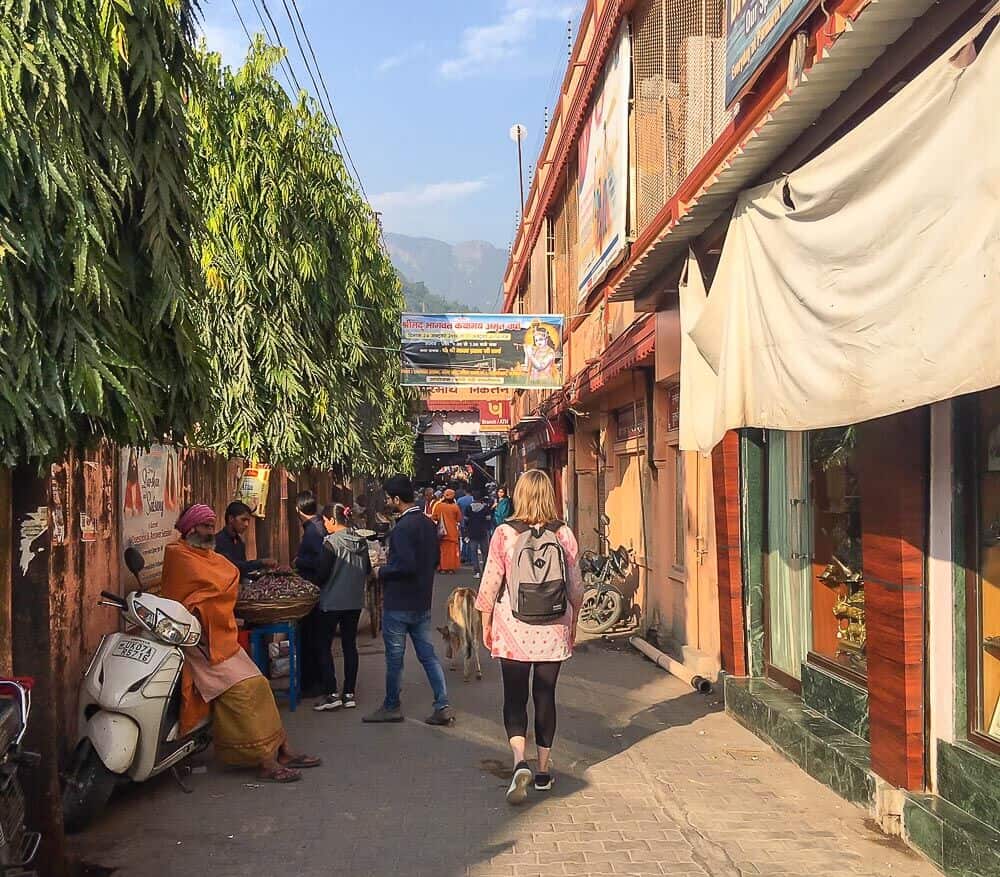
Backpacking essentials list
Lastly, when putting together your international travel packing list, there are some absolute essentials you must not forget to pack.
Prescriptions Although medical care is quite good in many parts of Asia, and pharmacies are well-stocked, you might be hard-pressed to find a prescription medication you need. So it’s better to stock up on enough to get you through your trip, plus a little extra, just in case, so you don’t have to stress about your health while traveling.
Kleenex/tissue packets & hand sanitizer Tissue packets and hand sanitizer are the “never leave home without it” items you must carry with you at all times when traveling Asia. I can’t even count how many times I needed to use a restroom while backpacking Asia only to find that there was no toilet paper and no soap to wash my hands. So without a doubt, do not forget to take these travel essentials with you wherever you go.
Reusable water bottle and filtered water bottle
Instead of wasting money on plastic bottles, and contributing to the plastic pollution problem, I recommend getting a reusable bottle. One that I like is a silicone collapsible water bottle. It’s leak-proof, and it can expand to 18 oz. You can put hot or cold beverages in it, and because it’s collapsible, you can stuff it into smaller spaces like your purse or backpack.
You can also get filtered water bottles like Lifestraw Go, Grayl, and Water-to-go, and you never have to worry about your water source, or contributing to plastic pollution, again.
Read my Responsible Travel Products post for more ideas.
Lifestraw Go filtered water bottle
Grayl filtered water bottle
Water-to-go filtered water bottle
Reef-friendly sunscreen It’s sad to know that while we’ve been diligent in protecting our skin from sunburns and ageing, we’ve also been contributing to coral reef depletion. However, the good news is that we now have more options, and they include reef-safe sunscreens. So when you’re deciding what to pack for Thailand and other destinations in Asia with great beaches, there are tons of brands and products to choose from. Just find the one that fits your required SPF, and if it’s too big to carry on in your backpack, squeeze it into one of your silicone travel bottles so you can hit the beach guilt-free.
Sun Bum reef safe sunscreen
Mosquito spray with Deet Unfortunately, malaria and dengue are real risks in a lot of countries in Asia. While you can definitely find mosquito repellants in these countries, it’s not always guaranteed that they contain Deet, which is the essential ingredient for repelling biting insects like mosquitoes and ticks. Travel-size bottles of mosquito sprays and creams can be found in the travel products section of most stores, so grab a bottle before you head out on your trip.
Thief-proof RFID purse and wallet
We talked about cut-proof safety for your luggage, but what about for your wallet? As I mentioned, when backpacking Asia, you really do need to watch out for pick-pockets and purse snatchers. That’s why I love this Travelon Anti-Theft Classic Messenger Bag that I bought three years ago and have been traveling with ever since. The purse itself is cut-proof, along with the strap that can be worn across your body. It has RFID-blocking pockets for your passport and credit cards, and it has clips on the zippers as an added measure so thieves can’t easily get into your purse. The handle also has a clip so you can wrap it around a table or chair leg. This purse is so handy and is one of the backpacking must haves.
Travelon Anti-Theft Classic Messenger Bag
Pacsafe Anti-Theft shoulder bag
Pacsafe RFID safe wallet
Ear buds, ear plugs & eye mask Whether you’re trying to catch a few winks on a bus or plane, you’re staying in a hostel dorm room, or you’re just a light sleeper in general, like I am, you’re going to want to pack ear plugs, an eye mask, and your headphones or ear buds. Asia is a noisy continent in general, and sometimes it can be hard to escape it. So it’s nice to be able to just plug in to some music to drown out the din, or to unplug and get some shut-eye without background noises disturbing you.
Quick-dry travel towel When you’re backpacking Asia, there’s never a guarantee that you’ll have a towel at every place you stay. If you’re staying in hostels, you’ll definitely need your own towel. However, there’s nothing worse than having to put a damp towel inside your backpack or suitcase. So make sure you pack a quick-drying travel towel. These towels are light-weight, compact, and the micro-fibre material dries quickly and is lint-free.
Quick-dry towels
So there you have it, your complete travel essentials packing list for Asia. By following this list, you will ensure that you have just the items you need for a safe and comfortable trip without the added bulk of things you don’t need or that you can pick up along the way. Share your favourite backpacking must haves in the comments, and happy traveling!
Deborah Provenzale is a solo female expat, world traveler, writer, and life coach. Having lived in Taiwan for eight years, she utilized her background in sales, marketing, and entrepreneurship to build an online business so she could be location independent. Now Deborah teaches other women how to escape the rat race so they, too, can travel, have more adventures, and have the freedom to pursue their dreams. Find out how on her site at DeborahProvenzale.com.
PIN it on Pinterest

If you enjoyed this post, you can….
Sign up to The Travel Newsletter in the sidebar and follow Breathedreamgo on all social media platforms including Instagram, TripAdvisor, Facebook, Pinterest, and Twitter. Thank you!
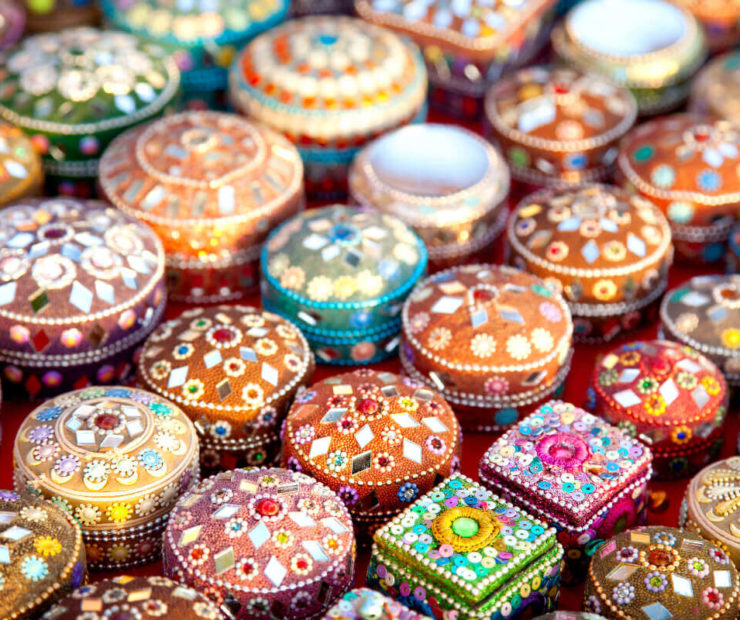
Packing for travel in India
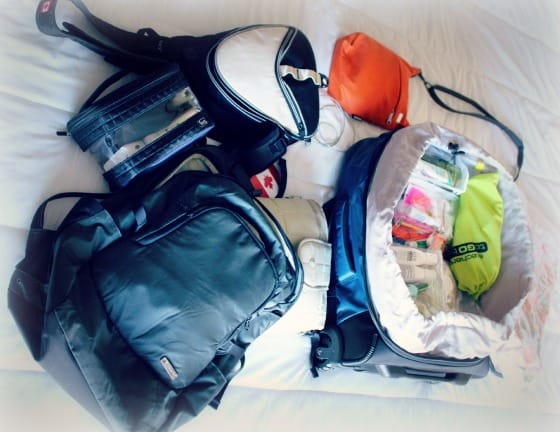
How I (finally) learned to travel light …
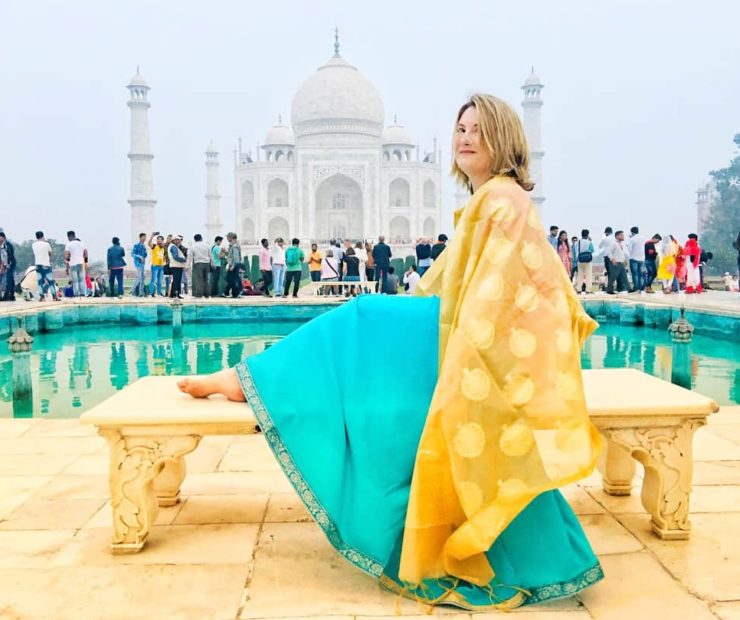
What to wear when travelling in India

About Mariellen Ward
Professional travel writer Mariellen Ward is the founder of award-winning Breathedreamgo. Mariellen has a BA in Journalism and has been travel writing and blogging since 2005. She has won many awards, including a National Tourism Award from Incredible India Tourism, and writes for some of the world’s leading publications including BBC Travel and NatGeo Traveller India.
Sign up for my newsletter and get inspiration to live your travel dreams
Privacy Overview

20 PACKING ESSENTIALS FOR SOUTH EAST ASIA
- Categories: Backpacking
*this post contains affiliate links, which means if you purchase anything through the links provided I will receive a commission at no extra cost to you!
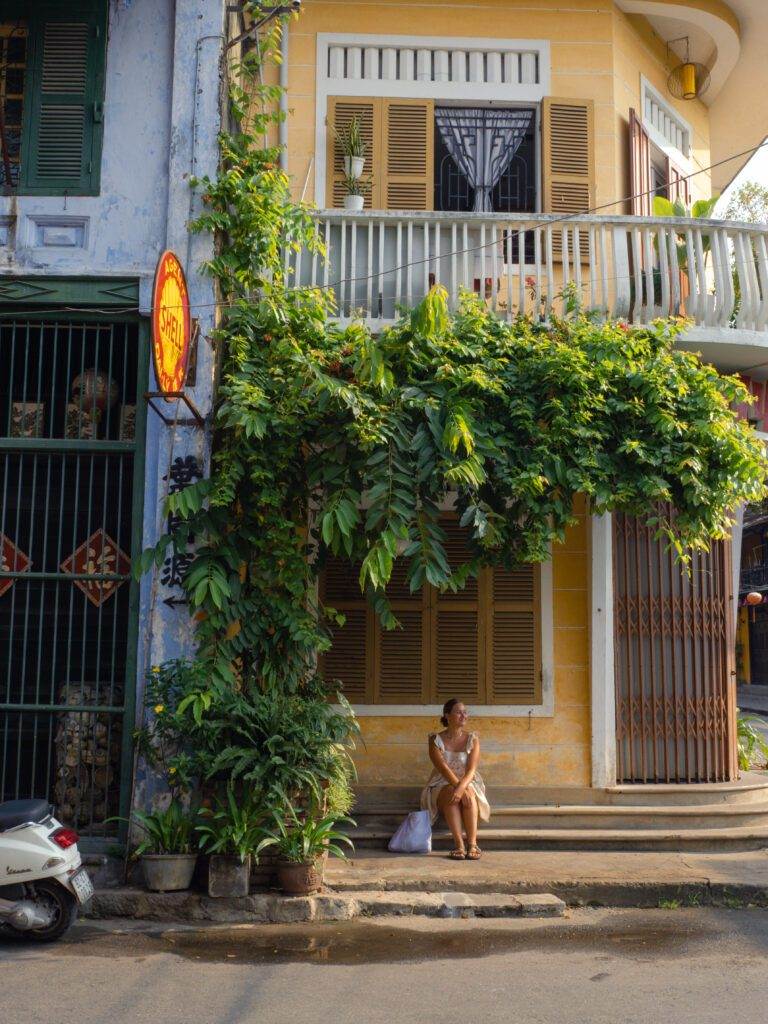
Planning your trip to South East Asia?
Here is a complete list of 20 packing essentials for South East Asia you’ll definitely need for your time there. The region is home to diverse nature, a wide variety of cultures, incredible street food and so much more. These essentials will make your time backpacking a lot easier, with some essentials you’ll definitely not want to miss out on! Take it from someone who has travelled through South East Asia more than once.
For more essentials check out my 30 must have essentials for your next backpacking trip blog post
20 packing essentials for south east asia
1. beach towel.
South East Asia is home to some of the most beautiful beaches in the world. Bringing a beach towel that is fast drying, compact and doesn’t get smelly quickly is a must, and Turkish towels are perfect for this. They are great travel towels and are ideal as beach towels as they come in a range of sizes.
Buy the Turkish towel I recommend here

2. emergency cash
Bringing some emergency cash is definitely important before heading to South East Asia. Bringing a widely used currency like USD is best, but pounds (£) or Euros (€) also work. There are a few reasons this is so important.
- Certain banks don’t accept international cards
- Paying for visas on arrival
- The unfortunate event of having to pay a bribe
This happened to me on the border crossing from Cambodia into Vietnam. The immigration officer wouldn’t stamp the passports without a bribe, and while you can pay in local currency, having some emergency cash just in case is really helpful.
South East Asia is full of water activities so a dry bag is a must. You can find dry bags in a multitude of sizes, depending on how much stuff you’re planning on keeping in there for your days out. A 20L dry bag is a good size for day out water activities and you can fit everything you need in a size like this.
Buy a dry bag here

Diarrhoea is an unfortunate consequence to travelling and in South East Asia it is often rife. This is generally because of the water food is washed in, ice in drinks or bad meat. In any case, packing some anti diarrhoea tablets/imodium can save you from a sticky situation.
Buy Imodium here

5. charcoal tablets
Another saving grace for your South East Asia trip is charcoal tablets. This is another great aid when it comes to combatting diarrhoea as it has a firm history in its ability to attract and expel ingested toxins from the gastrointestinal tract. If you’re ever feeling a little iffy after food or questionable water, take some charcoal tablets and you’ll feel a lot better!
Buy charcoal tablets here

6. motion sickness tablets
Some more medication you might want to consider bringing to South East Asia is motion sickness tablets. A lot of the roads can be windy and bumpy, as well as some choppy seas on ferries or boat rides. These ginger capsules can provide some natural relief for your journeys, or if you’re looking for something a little stronger you can pick up some dramamine (although it does have a side effect of drowsiness).
Buy motion sickness tablets here

One of the universal packing essentials for South East Asia is a sarong or scarf. You can pick these up at any local market when you’re there. They are the best piece of clothing you can bring and it is completely multi purpose for your time. Whether you need it to wrap around yourself at the beach, lay on, wrap around your shoulders before entering a temple or to use a blanket.

How to get to Wat Sam Phran: the Dragon Temple near Bangkok
8. travel wash
A lot of laundromats in South East Asia do your laundry for you, which is great until they shrink your clothes (which has happened to me too many times). To protect your delicates like linen carry some travel wash with you so you can do your own laundry as and when you need to. It’s an absolute life saver for your clothes!
Buy Travel Wash he re

9. period cup
In South East Asia it’s incredibly difficult if not completely impossible to find tampons and sometimes even pads. This can be a constant struggle for girls travelling and to avoid this stress moving to a period cup is a must. Period cups can be reused for several years as long as they are properly looked after. This is one of the best investments you can bring when packing for South East Asia and will save you scrambling to find tampons on your travels.
Buy a period cup here

10. sunscreen
An essential you definitely need to bring is sunscreen. The sun feels a lot stronger than what you’re used to and a lot of sunscreen you find in South East Asia is either really expensive or it’s fake, which means it won’t protect you. Hawaiian Tropic has a great range of sun lotion and it’s always best to go for SPF 50.
Buy Hawaiian Tropic SPF 50 here

11. tangle teaser
A tangle teaser is another packing essential you need for South East Asia. It is the ideal hairbrush for wet or dry hair and combats knots unlike any other brush on the market. After all your boat trips, surfing, pool days and days out on motorbikes you’ll definitely want something gentle on your hair and a tangle teaser is perfect for that.
Buy a tangle teaser here

12. spf lipbalm
The sun in South East Asia can feel a lot stronger than what you’re used to, and often people neglect to SPF their lips. Talking from personal experience, sunburnt lips are the worst. Bringing a reliable SPF lip balm is going to save you a lot of anguish down the line, so don’t forget to pack it!
Buy SPF lip balm here

13. bug repellent
A packing essential for South East Asia you don’t want to skip out on is bug repellent. The bugs in this region are no joke, so some strong deet bug spray is definitely needed for your time. The Jungle Formula spray is the best you can get and it’s incredibly effective for all bugs, especially mosquitos.
Buy the best bug spray on the market here

14. lightweight foundation
It’s no secret South East Asia is incredibly hot, and while most of the time you probably won’t want to be wearing foundation, on the odd occasion you do, a lightweight and breathable foundation is best. This will be perfect for when you eventually do sweat it off, it won’t go clumpy or patchy. My go to lightweight foundation I swear by is the Charlotte Tilbury Beautiful Skin foundation. It has great skincare benefits and gives a beautiful finish, all while looking very natural.
Buy Charlotte Tilbury Beautiful Skin here

15. foldable rain jacket
One of the best packing essentials for South East Asia is a foldable rain jacket. Depending on where you’re heading, unpredictable weather and intense storms can catch you out without a warning, so to save yourself from getting soaked and to save space in your bag, a foldable rain jacket is the perfect solution. This one comes in a few different colours and has a drawstring pouch for easy packing.
Check out this foldable rain jacket here

16. LInen trousers
Linen trousers are one of the best essentials you can bring to South East Asia. They are great universal trousers that are lightweight and breathable, while being perfect for exploring temples. Some of my favourite shops for linen are Glassons and Na-kd Fashion, although Amazon also offer a range of affordable linen trousers like these ones here.
Check out these linen trousers here (they come in several different colours)

17. battery operated toothbrush
The next packing essential for South East Asia is a battery operated toothbrush. These are an absolute must so you don’t have to worry about charging your toothbrush when travelling. This one is the best on the market!
Buy a battery operated toothbrush here

18. hand sanitiser
A lot of bathrooms in South East Asia won’t have soap provided, especially any public toilets you use. To avoid unwanted sickness it’s best to carry your own hand sanitiser around. You can find sanitiser while you’re travelling, however unfortunately you can also come across ‘fake’ sanitiser, which is either diluted or completely ineffective.
Buy hand sanitiser here

19. waterproof phone case
You’ll definitely want a waterproof phone case for South East Asia. This one from Amazon is a step up from the classic waterproof pouches that you can get. Instead, this case has a hard back and front and feels a lot more sturdy, as well as giving better photo and video quality in the water. I’ve used this waterproof case a few times and really love it, so can definitely recommend. Plus it comes with a wrist strap too.
Check out my go to waterproof phone case here

The final of the 20 packing essenitals for South East Asia doesn’t exactly need to be packed, but is definitely an important addition to the ‘to-do’ list before you go. There are two main reasons a VPN is really important when travelling. Firstly, is to keep your information safe while connecting to public wifi. Secondly, so you can stream TV/films anywhere in the world (this is how I keep up with UK Love Island when I’m away!). The VPN I use is Surfshark, you can click here or use SHETRAVELLEDTHEWORLD for 83% off and 3 months free. You have access to 15+ Netflix libraries and most importantly, you can use it to save anyone hacking your information.
Before using a VPN I’ve had both my Netflix and Spotify hacked after using public wifi, and now I won’t connect without connecting to a VPN as well. Protecting your accounts, especially bank accounts, is so important when travelling.
Check out Surfshark here and get 83% off + 3 months free

Share THIS Post
Related posts.
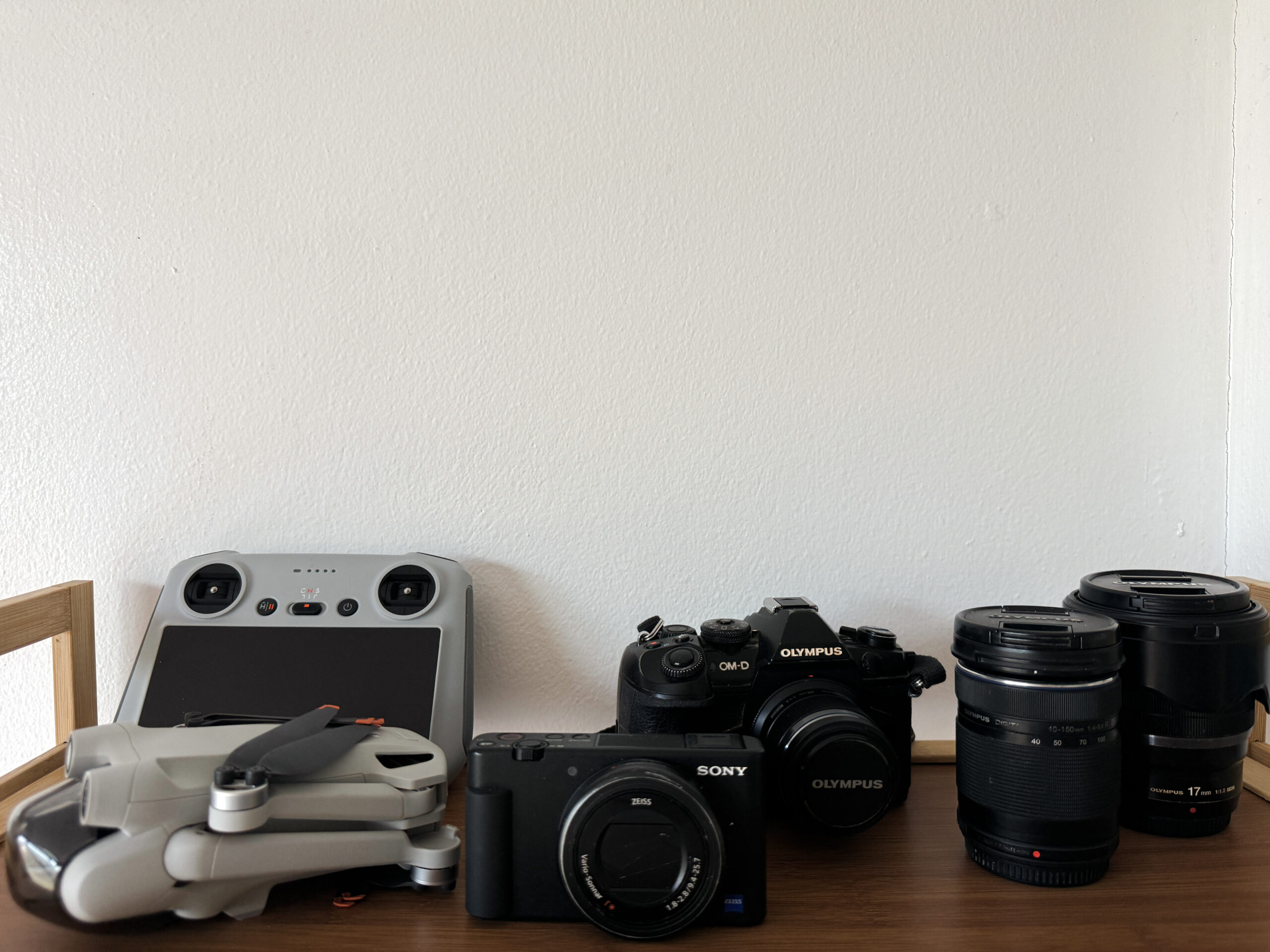
MY CAMERA EQUIPMENT
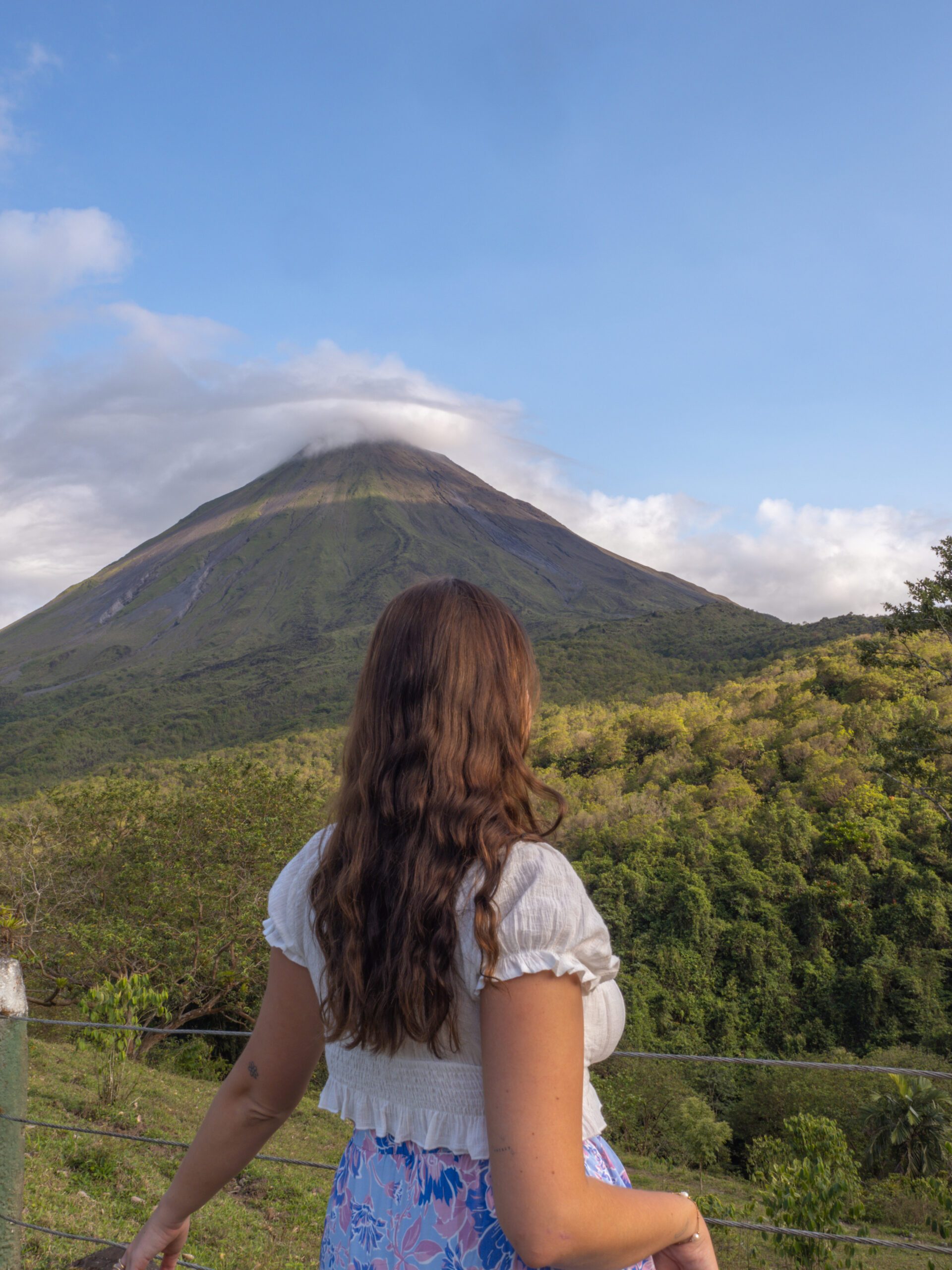
THE 15 BEST FIRST TIME SOLO TRAVEL DESTINATIONS
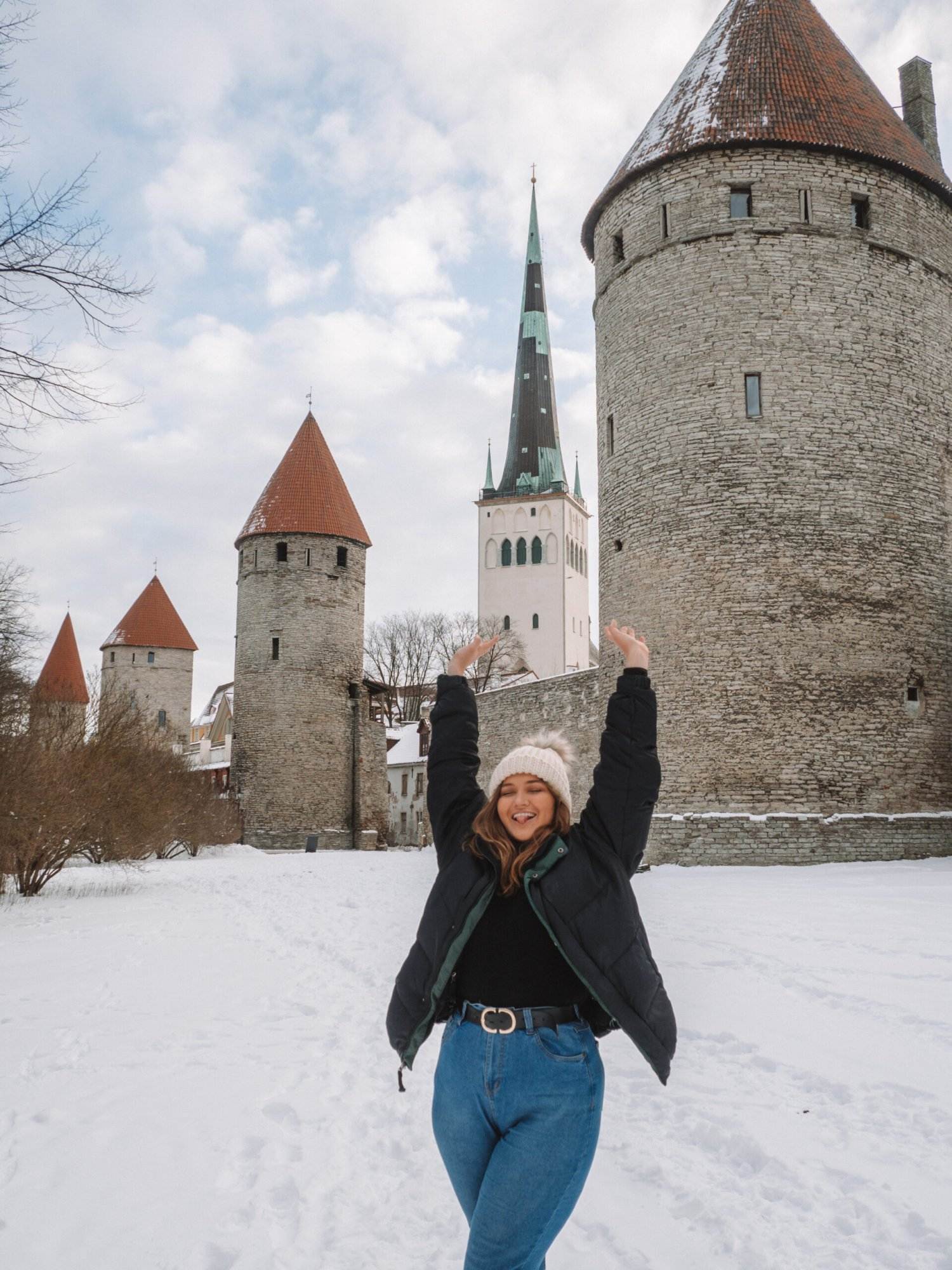
A WEEKEND IN TALLINN, ESTONIA: TRAVEL GUIDE
@shetravelledtheworld, where i'm going next.
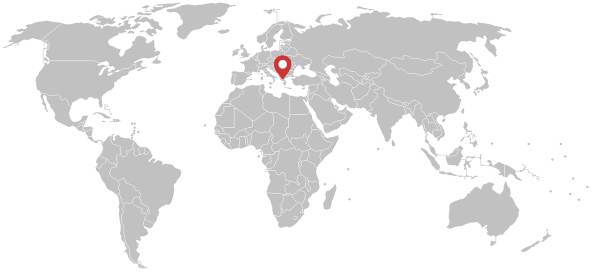
THE 'AURA' LIGHTROOM MOBILE PRESET COLLECTION
Privacy Policy

Backpacking Southeast Asia: The Ultimate Packing List
Asia Packing Lists , Backpacking , Packing Lists , Travel Packing Lists
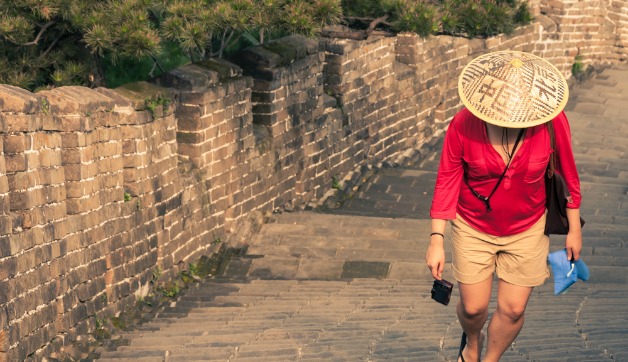
Support TFG by using the links in our articles to shop. We receive a small commission (at no extra cost to you) so we can continue to create helpful free content. We earn from qualifying purchases made to the featured retailers. Thank you, we appreciate your support!
Southeast Asia is one of my very favorite places in the world; and Thailand in particular is near and dear to my heart. This is a region rich with culture, food, fun, and a budget that all travelers can enjoy.
I spent 5 months backpacking Southeast Asia in 2010 during my RTW trip; 8 months in 2012; 6 more months between 2013/2014; and continue to live here on and off currently. Hope you enjoy my packing list for a backpacking trip to Southeast Asia!
What to Wear When Backpacking Southeast Asia
The countries that make up Southeast Asia include Thailand, Cambodia, Laos, Vietnam, Malaysia, Singapore, Brunei, Borneo, Philippines, and Indonesia. Check out my suggested South East Asia backpacking routes for itinerary ideas during your time here.
Singapore is a metropolitan city so the typical backpacking gear won’t work here. Check out this Singapore packing list for more tips.

Earrings | Sunglasses | Guide | Sunscreen
To make sure this Southeast Asia packing list is as accurate as possible, I’ve teamed up with Kaila Krayewski from the Blonde Traveler that has lived in Thailand for over 5 years and has also spent extensive time backpacking Southeast Asia. She’s passionate about making travel more fun and friendlier for western women and created Blonde Traveler to do just that.
Travel Tip: I highly recommend using the Lonely Planet Southeast Asia on a Shoestring guide book . I absolutely love the transportation guides plus – if you’re traveling alone – this is most popular guide for backpackers in the area so it can help you meet other travelers too! You can also get the eBook version .
Southeast Asia Clothing Style
Unlike other destinations, there are far fewer expectations when backpacking Southeast Asia in terms of attire. This is due largely to the climate.
With average temperatures in the 80s and 90s, the extreme humidity makes it near impossible to put together a decent outfit because you’ll be sweating buckets the entire time.
It’s not good enough to pack lightweight clothing when you travel into places like Cambodia and Vietnam. You might think natural fabrics would be ideal and take jersey cotton tees and leggings.
However, some cotton modal blends sag—a lot—once damp with your sweat. A shirt that starts off waist length will be past your hips in less than an hour. This is because cotton will hold up to 7 percent of its weight in moisture. You need to add a few quick-dry, moisture-wicking tops and pants to your travel capsule wardrobe for your journey into Southeast Asia.
Read more about the pros and cons of traveling with cotton !
Wicking fabrics are made from a high-tech polyester that is specially designed to draw moisture away from your body to the garment’s exterior. Compared to cotton, wicking fabrics hold only 0.4 percent of their weight in moisture.
This makes a huge difference when you’re nonstop sweating. I packed a couple pairs of moisture-wicking pants and tanks that I often wear to hot yoga because they’re made to hold up well in heat. They fared much better than my other knit clothes, which were stretched beyond recognition.
Don’t forget to pack moisture-wicking under garments such as these . Bras and panties are the closest thing to your skin, and they will get soaked through with sweat. I ended up living in the few sports bras and polyester panties I’d brought with me.
Read more about how to choose the best fabrics for travel !

Tank | Blouse | Top | Tee | Dress | Playsuit | Trousers | Short | Sweater | Jacket | Tank | Dress | Sandals 1 | Sandals 2 | Hat | Crossbody
12-Piece Packing List for Backpacking Southeast Asia
In the above visual, I’ve created a classic packing list of just 12 clothing items that would work well when backpacking through Southeast Asia. In the looks above you can also get outfit ideas for some major travel destinations in the region.
Tip: To pack light, use packing cubes to compress your clothing as shown in this video and keep your belongings organized!
- 1 (Maxi) Dress/Skirt – a long skirt is a cooler option to wearing pants in the heat
- 1 Sun Dress – can’t beat the comfort of light and airy summer dresses
- 1 Shorter Dress – can also be used as a beach tunic and worn as a top
- 1 Linen Cargo Pants – can be worn casually in towns and also paired with tennis shoes for trekking
- 1 Knee Length Cargo Shorts – cover the knees to stay cool and modest at all times
- 1 Denim Shorts – a SEA beach town must have
- 3 Short Sleeve Tops – flowy and breathable fabric allows you to maintain modest while staying cooler
- 1 Sleeveless Top – a SEA beach town must have, plus it’s hot!
A note on tops: pack them in varying lengths but if you prefer sleeveless, pack more sleeveless and if you prefer long sleeves, pack light, airy fabrics.
Pack a couple of warm items depending on your planned activities: if the temperature drops post-rain, if you’re trekking, or for colder areas like Sapa in Northern Vietnam. However, if you opt not to (as I do), inexpensive clothing can be easily purchased.
- 1 Fleece, Hoodie, or Cardigan
- 1 Rain Jacket or Light Jacket

- 1 Flip Flops – ESSENTIAL for a backpacking trip to Southeast Asia! Choose a pair of flip flops that can be dressed up like my favorite iPanema’s sandals . These not only work like flip flops but as a dressier pair of sandals too. Plus, they’re cute and comfy!
- 1 Comfortable Walking Shoe – Outdoor sandals or Birkenstock sandals . Your feet need to breathe. It’s too hot to wear tennis shoes/trainers every day.
- 1 Functional – depending on your activities nice sandals or tennis shoes/trainers. Read more about choosing the best shoes for travel .
Travel tip: Remember, don’t pack just in case items, anything you need you can buy here for a low price! Keep reading for more tips below.

Scarf | Bikini | Tank | Dress | Skirt | Long Shorts | Shorts | Flip Flops | Sandals
More Travel Outfit Ideas for Backpacking Southeast Asia
Everyone is in the same boat. Not a single person is going to judge you for wearing the same harem-style MC Hammer pants you bought at the market to dinner three nights in a row. They’re comfortable and cute. Not to mention every other woman will be wearing the exact same thing. You can’t shoot a dart in the dark without hitting a woman in that style of pants.
If you really want to take something nice “just in case,” consider a linen dress or flowy peasant blouse. A polyester romper would also do the trick. But limit yourself to one or two items at most. You simply won’t have a need for more.
How to Pack for Monsoon Season
Don’t let rainy season ruin your travel plans. After experiencing a taste of the Thailand monsoon in 2010, the biggest mistake I made in 2012 was allowing the rainy season to scare me into rushing through cities with the hopes of avoiding the rain. (We very much dislike the rain and avoid it at all costs.) In the end, it wasn’t so bad after all.
The point is that you can’t control these situations or foresee how the weather will turn out. Go with the flow on your South East Asia holidays, and see where your travel experience takes you.
If you end up somewhere you don’t like, jump on one of the many inexpensive transportation options and move on. It’s not uncommon to meet up with new friends over in a neighboring country.
FOR THAILAND: Any time throughout the year you will find rain somewhere in this vast country. From my observations: the western southern islands get hit May-September; the eastern southern islands get hit October – February; and the mainland can receive rain year any time although peak times are May – September.
For the most part, it would be too hot to wear rain jackets but if you have varied travel plans it may not hurt to bring one along just make sure it’s made from lightweight, breathable materials.
Kaila with Blonde Traveler says: If you’re visiting during Monsoon season,and even if you’re not, it’s a good idea to grab a cheap plastic raincoat from the 7/11, and carry it with you at all times. You never know when the monsoon will hit.
For more raincoat ideas, click here .
What to Wear in Southeast Asia for Monsoon Season
While it’s advised to pack a rain coat for the rain, I find an umbrella is convenient because the rain comes with the heat and it’s never a good combo with a muggy jacket. Plus, you can use it to block the sun. As Kaila, suggests, you can also pick up a cheap poncho if you opt against carrying a rain jacket (as I do).
TRAVEL TIP: Please keep your planned activities in mind including trekking. If you know you will be participating in outdoor activities, plan accordingly.
Backpacking Southeast Asia Packing Don’ts
I can’t stress enough that you can basically buy an entire wardrobe upon arrival when backpacking through Southeast Asia. Two of the most common travel gateways to the are Kuala Lumpur and Bangkok. You can find anything you want and you can even have clothing custom made at a low cost practically anywhere in SEA.
Whether it’s clothing or toiletries; you’ll be okay! 7-11 is a god-send providing (air conditioning!), food, beer, makeup, beauty products, and everything else in between for a small cost. For clothing, you can find markets almost everywhere and you’re never far from a fun shopping opportunity. Pack light!
Kaila with Blonde Traveler says: If shopping in Bangkok , head to Platinum Fashion Mall, which has 5 floors of everything a woman could ever dream of wearing, for most price ranges, though most of it is relatively cheap. Everywhere else, inexpensive clothing is available in local markets. Thais love clothes, so you won’t have a problem finding something you love, to fit your budget!
If you’re headed to Cambodia to see the wondrous Angkor Wat, stop by the boutique in Siem Reap which features Rany Som’s exquisite jewelry line Graines de Combodge . I love the coral inspired necklace!

Waterproof Mascara | ChapStick Sun Defense SPF 25
Makeup and Toiletries for Backpacking Southeast Asia
As for makeup and hair products when backpacking Southeast Asia, don’t worry too much about them. Cosmetics will literally melt off your face the minute you step outside of your air-conditioning. However, if you do like wearing makeup, follow these and these tips to help it stay on for longer periods of time.
Aside from lip balm, mascara, and sunscreen, I wouldn’t recommend putting anything else on your face. Bring a ponytail holder if your hair is long, and expect to wear it up the entire time. It’s hard to manage your hair, no matter the texture, in this climate.
Take a look at these tips on how to style curly hair while traveling !

Secret Bra Pouch | Hidden Waist Passport Holder
Southeast Asia Safety
So long as you practice common sense, backpacking Southeast Asia is generally safe for female travelers. The most common scam is for someone to drive by on scooters and pull off your purse. They cut the straps of your purse or they may even drive off with you in it if it’s not easy to cut. (Read one traveler’s story here .)
This is the main reason why this is one location we may not recommend an anti-theft purse – it’s difficult to slash the wired straps so you may be dragged down the street along with your bag. Instead, choose a backpack purse instead or carry your money in your pockets and use a bra stash.
Keep it simple. Leave your valuables locked away in your room and wear a money belt or other anti-theft products .
Learn more about how to keep your valuables safe while traveling !
TFG Recommends: For girls backpacking Southeast Asia solo, check out Blonde Traveler . They provide a unique resource for women if you want extra assurance during your trip. Their membership includes: live translation help, legal advice, dietary advice, tracking services, emergency assistance, live travel counseling, and travel discounts.
What are your essentials for backpacking Southeast Asia?
For more posts on backpacking Southeast Asia, please read:
- Packing List for the Thailand Islands
- Southeast Asia Packing List for Women
- What to Wear in Cambodia
- What to Wear in Vietnam
- What to Wear in Myanmar
- What to Wear in Bali
- What to Wear in Malaysia
- What to Wear in Singapore
Suggested Travel Resources:
- Lonely Planet Southeast Asia on a Shoestring
- Lonely Planet Southeast Asia Phrasebook & Dictionary
Hope you liked this Backpacking Southeast Asia Packing List. Please share it with your friends on Facebook, Twitter, and Pinterest. Thanks for reading!
46 comments.
Thanks for the tips! I’m traveling to Asia this winter. Even though I’ve traveled in the region extensively, it was some 3 years ago, and I don’t remember anymore what I wore and what I packed. Your article is very useful. 🙂
So glad you found this helpful Oona, have an amazing time!
Very helpful post – thanks!
I’m soon to be traveling Thailand and Vietnam for 3 weeks and have quite a few fitted spaghetti style tops to wear with loose fitting shorts, I am concerned that this will not be appropriate in areas but am hoping to pick up clothing there if needed…
I have cover ups for temples and more reserved areas but is it okay to be out and about like this?
Help is much appreciated
Hi Alex, so glad you found the post helpful! Have a look at this TFG article for some more ideas for Thailand: https://www.travelfashiongirl.com/what-travelers-wear-in-thailand-and-other-parts-of-southeast-asia/ You may find it helpful for your packing. Also take a look at this article on Vietnam for some specific tips: https://www.travelfashiongirl.com/what-to-wear-in-vietnam/ For some advice for what to wear when visiting temples: https://www.travelfashiongirl.com/how-to-dress-for-conservative-countries-modest-clothing-essentials/ Hope this helps! Have an amazing trip! 🙂
Hi there, I know this is an older post but do you happen to know the brand of the orange joggers?
Hi Kelly, unfortunately the product sold out some time ago so we’re not sure of the brand. Sorry we couldn’t have been more helpful ?
I’m getting married in Thailand in April 2018. We will be spending time in Denmark (30 hour layover to explore), Thailand, Cambodia, and Japan. Our entire trip will be 4 weeks and a couple days. How do you suggest packing for this type of trip and what bag? Three vastly different climates. I’m trying to only take one bag checked and a carry on. I will be shipping my dress over to a friend, so that’s not an issue. We’ve discussed getting a backpack (due to other trips we have planned where its a necessity), but can a traditional suitcase work? We will be on the move a lot hitting 8 cities.
I think it is a little bit misleading to say that you can buy clothes on arrival in a country like Thailand. I have lived there for 20 years and believe me – until recently – it has been extremely difficult to buy clothes if you are larger in any way than the mostly petite Thai women. We have had to rely mostly on imported brands which can be expensive, eg from Marks and Spencer. It has often been very difficult to find jeans/shorts/trousers to fit western figures. Thankfully now there is H&M and Zara – although Zara sizes in Thailand are quite small. Easier to buy a wider range of sizes in Malaysia, Singapore and Korea. Thailand getting better, but not really much available in Cambodia – maybe some market gear.
A cardigan is very useful to wear in all the air-conditioned shopping centres etc.
A note for visitors to Thailand: if you are going to temples you have to have your shoulders and knees covered. Also this year Thailand is still in mourning for the last King who died in October 2016. You will notice a lot of black and white worn, particularly in Bangkok.
Thank you for your feedback Karyn, we’ll make sure to note this.
My partner and I are travelling to Singapore, Vietnam, Thailand, Taiwan and Malaysia for one month, and Korea and Japan for another month from April to June. I have no idea what kind of backpack I should be purchasing. How many litres do you think is appropriate for a 160cm girl travelling for 2 months?
Thanks for your question Juliet, I wouldn’t go too much over 40L with your petite size. Those are warmer destinations that time of year, so you should be fine packing light for long term! You’ll also have no problem finding super cheap clothing that fits you while there should you need more options! Happy travels! Sounds like an awesome trip!
I love the brown medium crossbody purse in the photo “12 piece backpacking southeast asia packing list”. do you happen to know which brand it is? Thanks!
It’s this bag: Lodis Blair Gail Medium Crossbody Happy to help!
Great packing list! Personally, after backpacking in SE Asia twice, I know that I will wear more tanktops than tshirts 🙂 x
Absolutely Stephanie, I always recommend adapting our packing lists to suit your style and comfort. Happy travels!
Hi! I’m traveling solo to Cambodia for 2 weeks! I was wondering if you had problems with people steeling your things?
Hi Camille, thanks for your question! I’ve never had a problem anywhere with people stealing my things but theft can happen anywhere and it does also happen in Cambodia. Take a look at this post: https://travelfashiongirl.com/travel-safety-tips/
Great post – thanks for the advice! Just an FYI – Borneo is not a country! It’s the name of an island, the countries on Borneo island are Brunei, Malaysia & Indonesia.
Should’ve clarified! Sorry for the confusion
Currently packing for Cambodia and your post is a big help! Thank you 🙂
Chel x http://heyitschel.com
Happy to help 🙂
Great info, and great blog, thank you!
Hi, I am travelling for the first time to Thailand next month and the packing lists will definitely come in handy as I know now what are the essentials I should pack. Thanks a mill!
Thank you that’s great to hear. Have fun!
Love your blog!
So my friend and I are going to Thailand, Laos, Cambodia and Vietnam this summer (July-August) after she graduates. We just learned it is the rainy season, but heard it only rains for 30-90 minutes a day until later in the season.
What additions would you recommend packing for the rainy weather?
Thanks Jill! The most important thing is that your clothing dries quickly but other than that rainy season varies per location. In Thailand for example, the East Coast of the peninsula is dry during this time as opposed to the west coast. This packing video talks about how to choose fabrics for travel: https://www.youtube.com/watch?v=4lR5KpPikRM Avoid cotton!
Thank you for all the helpful tips. It would be even better to be able to to see all your other blogs in one place so these Amazing posts would become more visible. It’s so great that I came across your blog on Pinterest.
Hi Irene, Thanks! I’m glad you’re finding the site useful. 🙂
This is Awesome! So lucky I found this site before my Cambodia- Thailand trip that will start this weekend. Thank you 🙂
That’s awesome Lyn. Have a great time!
Great tips – thanks for sharing! I’m heading to South East Asia in February, already starting my packing list 😉
That’s great! You’ll love it here 🙂
Me to! Doing all of March and April. CAN’T WAIT! :o)
Awesome post, I’m heading to Thailand myself over Christmas, haven’t been there for eight years and Im so so very excited and lots of useful tips. One small point on shopping upon arrival though- I used that strategy last time I went but found I rather difficult – I’m 5′ 8″ and although that’s normal in western Europe, it’s not in SEA so I ended up having to do most of my shopping at top shop and Zara.
Good point Lia. Thanks for bringing it up! I hope you have a wonderful time on your visit 🙂
Same for me Lia, I’m nearly 6ft tall and slim and its very difficult to find clothes to fit properly, especially with a 36″ inside leg! I did, however, get an absolutely fantastic fully lined (and padded in the chest area!!) Grecian style maxi dress custom made in Hoi An, Vietnam for about £25 / $38US.
I’m heading to Northern Thailand, Laos, Indonesia & Philippines for 3 months in mid-March, if anyone has any tips about what to do and where to go it’d be much appreciated. I’m pretty much set on my packing but would like a couple of pieces custom made so again if anyone knows of any good tailors in any of the places I’ll be please let me know 🙂 thanks.
Alex – great article, very helpful 🙂
Thanks Michelle! I’ll post your question for travel tips on Facebook. Have a wonderful trip!
Hi, Im off to south east Asia leaving on the 28th December working my way through Thailand, Cambodia, Vietnam, Laos and finishing trip in Delhi and finding it difficult deciding what to pack…i want to travel light but still stylish! Ps your site is amazing has helped me alot x x x
That’s awesome, thanks! you’ll have a blast 🙂
I need help!!! I am going to Qatar about a month. Departure at the end of May. Please help me what to wear!!! It is HOT!!!
Please suggest me what to pack!!!
I haven’t been to Qatar so I’ll post your question on the Facebook Page to get more feedback 🙂 Thanks for reading!
This is a great and nice blog. Thank you
Thanks for reading Jana!
I can’t wait to go now!!! thanks for this timely post!!
glad I could help 🙂
Submit a Comment Cancel reply
Your email address will not be published. Required fields are marked *
Save my name, email, and website in this browser for the next time I comment.
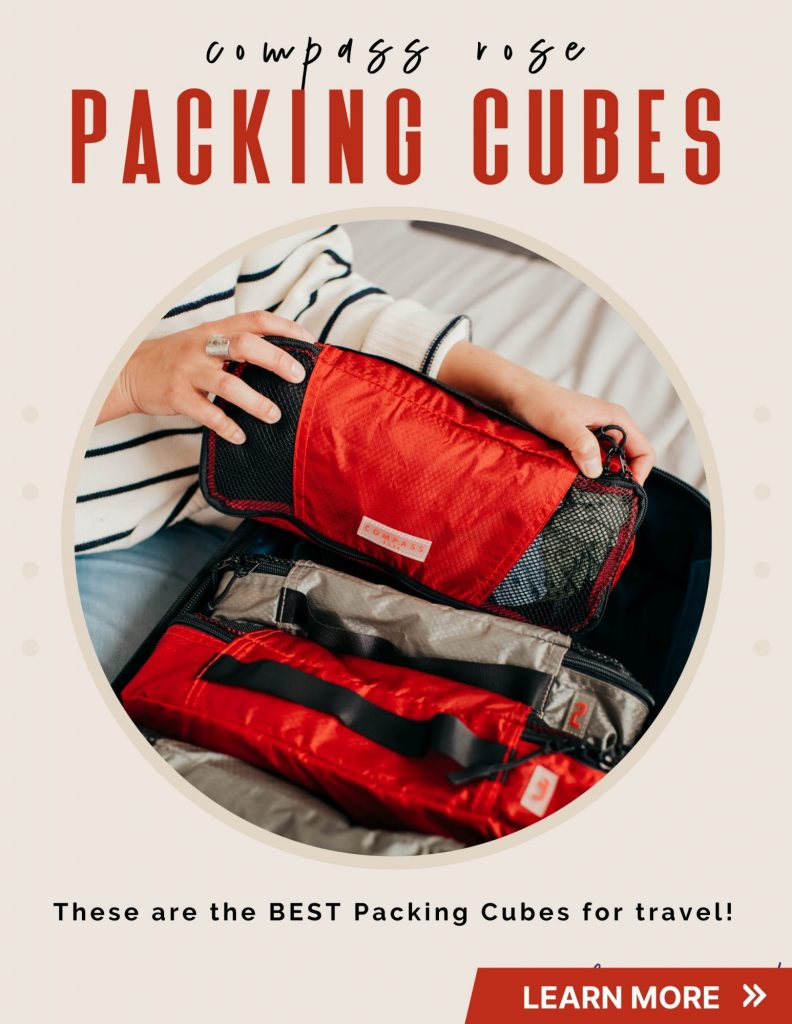
What to Pack for Backpacking in Southeast Asia
02/25/2022 by Kristin Addis 173 Comments
2022 Update: After a combined 2.5 years in Southeast Asia spread out over multiple visits and every time of year, this is my revisited, more fashionable, new and improved Southeast Asia packing list.
I’ve read about packing lists ad nauseam on the interwebs. They usually consist of various clothing options and toiletries, but lack the hindsight of someone who has been traveling around with her turtle shell (that would be my 35L backpack) for the long haul.
After over two years of traveling in Southeast Asia, in all times of year, in various climates, and doing activities from diving to hiking, you might appreciate knowing what has turned out to be completely essential, and what I ended up ditching.
This is the essential guide to packing for Southeast Asia:
Table of Contents
The right gear will make your journey 100 times easier. For your main backpack, I highly recommend testing them out with weight in person. Everyone’s different so what others swear by may not necessarily work for your body. Traveling in Southeast Asia will involve walking with all your gear on you at some point and I noticed that the size of my backpack determines how much I pack with me, so definitely think this one through. Here’s what I recommend for packing for Southeast Asia, plus some additional gear that you will need on your trip:
- If you plan to pack carry-on only, Pacsafe Venturesafe EXP45 : This is a very simple and straightforward backpack with all of the awesome anti-theft technology, and I especially like that it opens up like a suitcase.
- If you need that extra space, PacSafe Venturesafe Exp55 : Pacsafe is known for their anti-theft technology. For this bag, I like that it has locking zippers.
- Packing cubes : This has been one of the best investments I’ve made (at pretty low cost, at that) in my peace of mind and organization. I don’t have to dig through a mess of clothing to get to anything else in my pack – I simply take the cube in and out as needed and keep dirty clothing on one side, clean on the other. It also makes it possible for me to be able to fit everything into a small pack.
(Tip: roll your clothing and stack side-by-side in the cube to conserve even more space)
- Pacsafe bag protector : I’ve often found myself in dorms that did not have lockers. When you find yourself in $2 accommodation, sometimes the amenities , as it were, are lacking. In these cases, I find that I have more peace of mind when I can lock up my valuables. Simply slip the rain jacket that came with your pack over the bag, then slide the Pacsafe over it and lock it.
- Pacsafe crossbody bag : Perfect for easy access to things like your wallet, phone and passport. I love this Pacsafe Citysafe CX for its anti-theft technology and simple, yet stylish, design. Plus, the size is just right!
- A dry bag : You are in Southeast Asia, after all! Encounters with water, be it rain or ocean, is inevitable. A dry bag is also great for island hopping, or when you want to go for a swim but do not have anyone to look after your belongings.
2. Travel insurance
Though healthcare services in Southeast Asia can be cheap for minor issues, if you have an issue SCUBA diving, break a limb while trekking, or come down with an illness like dengue fever (not uncommon in SE Asia and there is nothing you can take to prevent it) and need to be hospitalized, you’re looking at some hefty bills. Travel insurance is not very expensive and can help you get home or to a country with better medical care if you need to. It can also pay for a loved one to come to you.
3. Bank account that doesn’t charge foreign transaction fees and refunds ATM fees
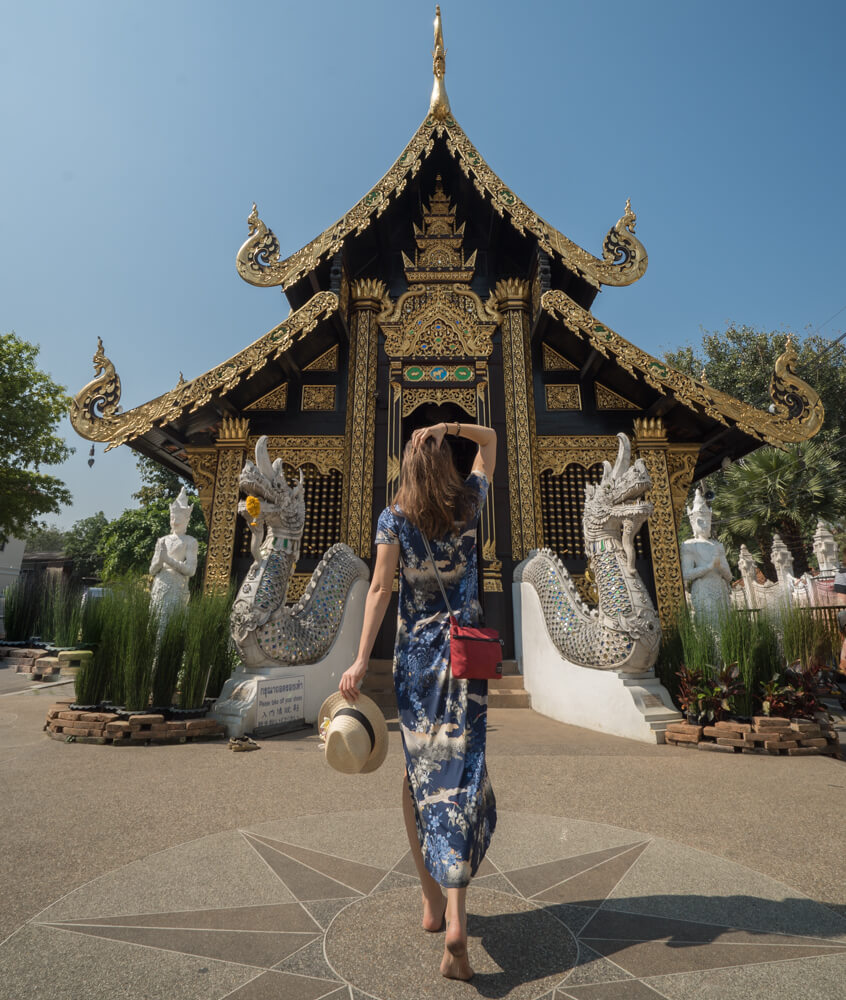
I can use any ATM I want, regardless of the fee it charges. I don’t have to worry about it, because my bank refunds all ATM fees at the end of the month – even foreign ones. What’s more, I am not charged foreign transaction fees. This amounts to a good $20, minimum, each month that I am saving. That’s a big chunk of change when you consider that $6 is the typical cost of a guesthouse room in Southeast Asia.
I use Charles Schwab, and have always found them to have great customer service. I’ve heard others say they like using PayPal. Do some searching before embarking on your trip and see what bank could work best for you.
4. Clothing
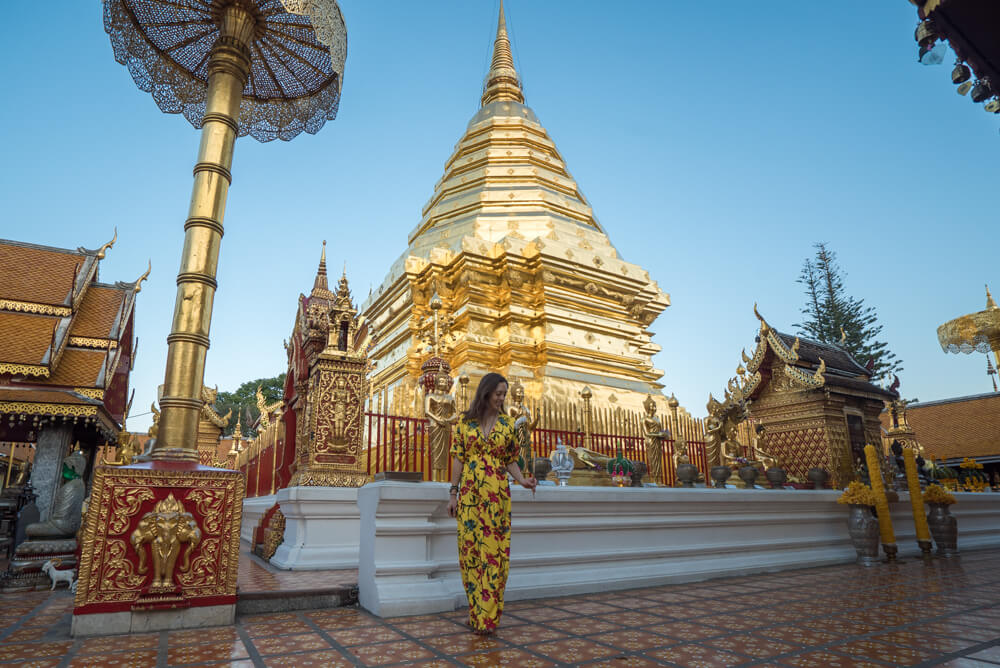
Keep in mind that in Southeast Asia in general, people tend to dress conservatively. It’s best to cover your knees and shoulders when possible, and not to show excess booty or cleavage. You’ll also need to be covered up to gain access to temples. On beaches, it’s disrespectful to go topless. This is especially true in Malaysia and Indonesia which are majority Muslim. Here’s what I tend to wear:
- 3-4 tank tops or light shirts
- 2 lightweight shirts with sleeves
- 1 long skirt
- 3 dresses – two long and one short (I bought all mine from ASOS )
- 1 pair of leggings
- 2 pairs of lightweight cotton pants bought in Southeast Asia
- 2 pairs of shorts , at least one with pockets that button or zip (easy to carry money and a key on a night out)
- a scarf for covering shoulders (buy in Southeast Asia)
- 1 lightweight rain jacket
- a fleece (if traveling up north during the winter or trekking. It does get cold!)
- 1 pair running shoes
- a pair cute sandals
- 1 pair comfy flip flops
- 1-2 hats for sun protection (I wear one in transit)
- 10 or so pairs of underwear and 2 bras
- 2-3 bathing suits
All of the above fit into my packing cube. I highly recommend the roll-and-stuff method!
5. Toiletries
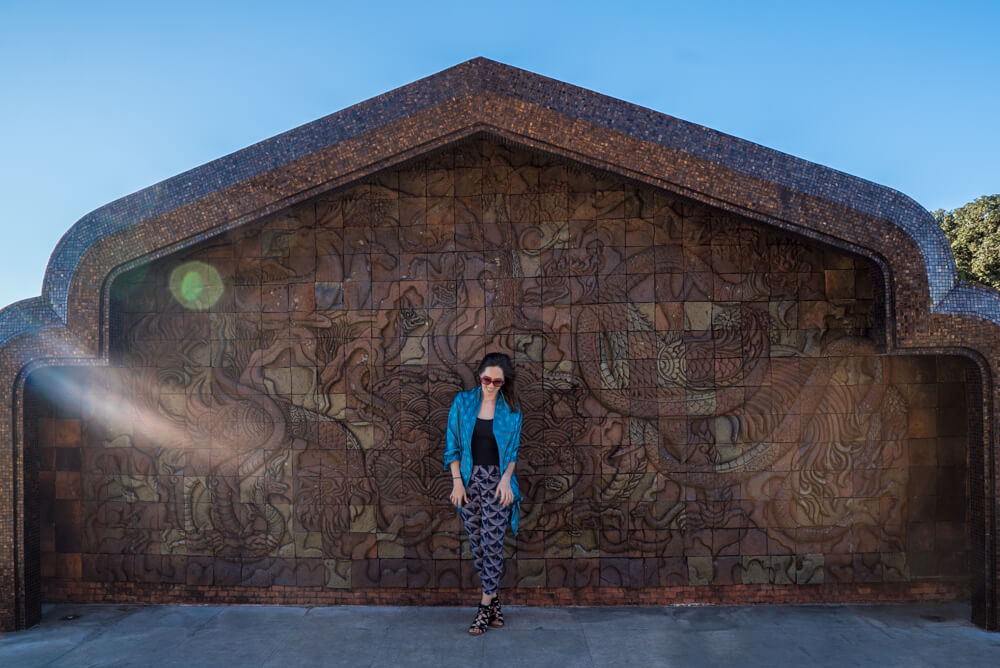
While most toiletries are easily replaced in major cities, it is rather difficult to find Venus razors, Secret Clinical Strength Deodorant (if you’re a sweaty mess like me, which Southeast Asia tends to bring out in people), and the like.
In addition, a DivaCup is a helpful investment. It’s a more environmentally friendly and less inconvenient way of dealing with the monthly visitor we ladies have all come to know and loathe.
I bring pretty much the same toiletries everywhere. When traveling in Southeast Asia, consider ditching the makeup and embracing your own skin. It’s going to be so hot and humid, your makeup isn’t going to last, anyway! Basic toiletries are easily replaced in most major cities, so just make sure to stock up before heading somewhere remote. Here’s what I bring, and everything on this list, except for the microfiber towel and razor, is environmentally friendly:
- Microfiber towel : Plenty of the dorms I’ve been in, as well as the meditation center , did not provide towels. If they did, they charged handsomely for them. My microfiber became very handy to me on many more than just one occasion. Extra points for the quick drying time.
- Toothbrush + toothpaste
- Shampoo + conditioner + body wash (fill this 100ml bottle with the body wash)
- Facial wash + moisturizer
- Razors (bring extra – it may be hard to find the one you like in Vietnam)
- Menstrual cup
6. Electronic Gadgets
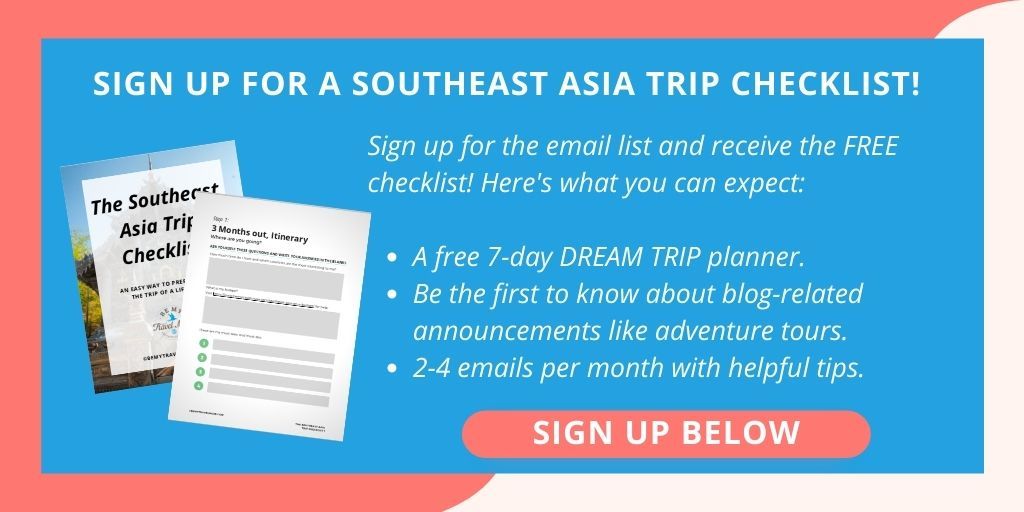
First Name:
I travel around with a pretty ridiculous amount of camera equipment . It takes up its own backpack and it’s heavy AF. If you’re not obsessive over photography and shooting video like I am, I highly recommend just bringing along a small mirrorless camera ( this one is fantastic ) and packing carry-on only . Everything mentioned here fit into a 35-liter backpack and messenger bag until I expanded my electronics.
Unless you need to do a lot of typing or photo editing, consider just bringing a tablet along. At the very least, bring along an unlocked phone so that you can get international SIM cards . They’ve saved me in many a pinch when I was lost or needed to order an Uber, communicate with friends, or call my guesthouse.
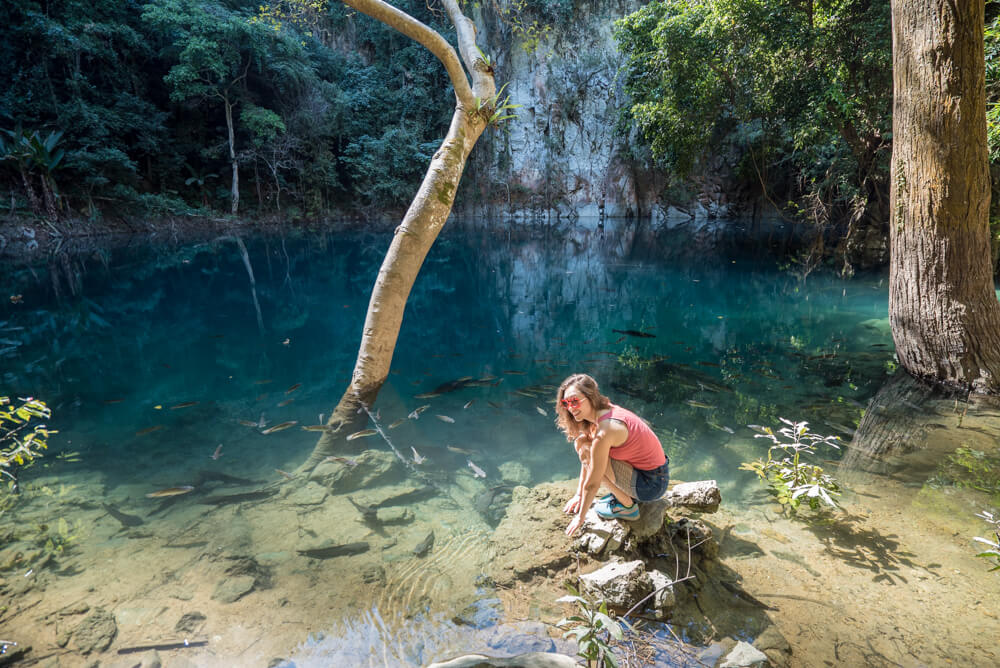
Here are a few things that may slip your mind, but definitely good to have:
- An alarm ( to attract attention during emergencies )
- A doorjamb (good to have when staying in a private room alone!)
- A LifeStraw water bottle
- A first-aid kit and your personal medications
Buy it there:
Tiger Balm – I foolishly bought this amazing camphor and menthol cream at a specialty store in California for $12, only to find it in Cambodia for $1. It helps ease mosquito bites far better than cortisone cream, and soothes muscle aches.
Some Clothing – Don’t overdo it and bring too many clothes with you. They are cheap in Southeast Asia and can be found in almost every night market for just a few dollars. You’ll lose plenty of items to the laundry service (they’ll get lost in the shuffle and you simply won’t notice), get holes in them, or might just end up changing your mind about what you want to wear.
Leave room for cheap purchases on the road. You’ll fare better in the Southeast Asian climate, too!
Most Toiletries – No need to load up on shampoo and soap. They use these things in Southeast Asia, too.
Leave it at home:
Jeans – Just don’t bring them. They never dry, will make you entirely too hot, and are likely to chafe in the humidity. None of these are pleasant things.
Laundry line – I never used mine. It’s so cheap to have laundry done for you, and takes so much less time. There’s not much use in taking an hour here and there to hand-wash clothing in a shared dorm sink, find a place to hang them up, and wait around until it’s time to take them down.
Sleeping bag liner – I ditched mine three weeks in. It took up too much space and never presented a value. It won’t protect you against bed bugs. Only knowing how to check for signs of them can help you.
Mosquito net – They’re available where needed at hostels and dorms on the road.
Packing Like a Minimalist:
I managed to pack carry-on only for the entire first year that I traveled in Southeast Asia. This video shows how I make everything fit, and a few more explanations about important things to bring with you (and what to leave behind):
I hope all of the above helps you to be more efficient with your packing for Southeast Asia. It can be confusing figuring out what to bring when it’s your first (or real talk, even your fifth) time somewhere. Thankfully I’ve made enough packing mistakes to have learned the ropes at this point.
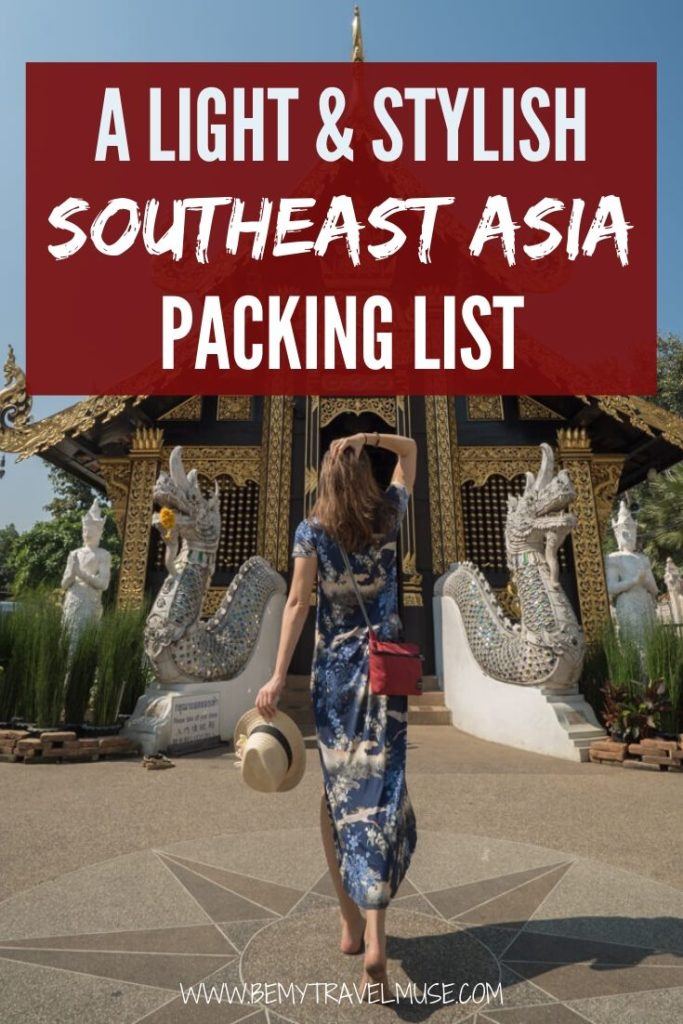
The Cost of Traveling in Southeast Asia
Best places in southeast asia for solo travelers, the ultimate southeast asia itinerary.
*These are affiliate links which earn me a small commission if you buy through the link. If this post has helped you, and if you want to support this site, please consider making your purchase through these links. Thank you!
About Kristin Addis
Kristin Addis is the founder and CEO of Be My Travel Muse, a resource for female travelers all around the world since 2012. She's traveled solo to over 65 countries and has brought over 150 women on her all-female adventure tours from Botswana to the Alaskan tundra.
Leave a Reply Cancel reply
Your email address will not be published. Required fields are marked *
Save my name, email, and website in this browser for the next time I comment.
subscribe to our newsletter
This site uses Akismet to reduce spam. Learn how your comment data is processed .
Rachel Anastasia says
01/15/2013 at 1:32 am
I totally disagree about the sleeping liner! I bought a silk one at home (and was bummed to see they were a fraction of the price in Vietnam) and it packs down really small (the size of a fat deck of cards). I love it for the temperatures here and it’s really roomy too. I didn’t use it at all in Korea or Japan but in SE Asia it’s a real comfort factor for me.
Kristin Addis says
01/15/2013 at 3:28 am
OK mine was about ten times that size. If it was smaller, I suppose I could have found a use for it. Good to know it’s cheaper in SE Asia, though!
Dave Jeffery says
11/30/2013 at 3:26 pm
Yeah, I’ve got to agree with Rachel – a sleeping bag liner is essential! Especially if you’re on a budget and not guaranteed to stay in a clean hostel every night. I used a Cocoon Travel Sheet, it was very breathable and packs down tiny.
Kate McMahon says
08/22/2016 at 4:40 am
All the sleeping bag liners I saw in Vietnam were not real silk, so you probably got your money’s worth buying at home first
Alana - Paper Planes says
01/15/2013 at 3:40 am
Definitely agree about the jeans…I wear them now that I’ve lived here for a while, but before when I was traveling I NEVER wore them. Ever.
01/15/2013 at 4:49 am
I don’t have them and I definitely don’t wish I did. I DO wish I had more room in my bag for hippie pants, though. It’s not everywhere that you can walk around in elephant print pants and it’s totally acceptable.
B in Korea says
08/02/2013 at 9:08 am
I thought the same thing. I fell in love with hippie pants in Thailand and wondered how it would go over back at my teaching gig in Korea. I still wear them all the time. This week alone, I’ve worn them 4 days. The weather gets so hot here, having a few has been a blessing!
Kristin says
08/04/2013 at 9:55 pm
I wore mine in San Diego and was complimented on them, so I’m not taking them off either!
Agness Walewinder says
01/15/2013 at 4:06 am
Great tips. Only if I knew it before. Just came back from 6 month backpacking trip from in South-East Asia and forgot to pack some things you mention. My bad!
01/15/2013 at 4:50 am
Awesome! Gotta love this part of the world
01/15/2013 at 5:15 am
The jeans one is a really good tip. I take a pair everywhere and probably would have realized that was a mistake. Will have to pickup packing cubes too. Sometimes ziplocks and plastic bags don’t do the job.
01/15/2013 at 5:43 am
haha yeah, zip locks tend to break!
Julia Hudson says
01/15/2013 at 7:28 am
I want to add to this list – a hoboroll. Google it (no I’m not paid to sponsor them!) – it’s a really great way to smash your clothes and soft objects down to a much smaller size, but it is divided so you can keep things separated and easy to find. BRILLZ.
01/15/2013 at 7:59 am
I Googled it! Looks absolutely genius! Thanks for sharing!
Lilian Doyle says
01/15/2013 at 7:55 am
Ok I’m just going to come right out and say it – I had no idea there was such a thing as a Diva Cup – some great tips there too!
01/15/2013 at 8:00 am
I hadn’t discovered it until right before my trip but it’s sooo much better than the alternative.
Anonymous says
12/08/2015 at 1:27 am
The uk version is called a mooncup!
01/15/2013 at 8:02 pm
I wanted to add — as an alternative to the Diva Cup (which I just don’t love, sorry!) get Implanon birth control before leaving.
01/20/2013 at 4:09 am
I googled that. Sounds kind of…scary? Then again, no issues with forgetting!
01/20/2013 at 4:12 am
and often, no periods. 🙂
01/20/2013 at 4:13 am
Ok, now you have my attention!
02/05/2014 at 3:58 am
I have it, it lasts 3 years, and I have no periods at all, although this can change in the last year. I had it replaced early so I don’t need to worry about carrying tampons or moon cups or anything when I leave for Asia in April (for 5 months). So excited! Great blog by the way, am making lots of notes and am going to see if I can sew myself a compression pack from all the bits of camping baggage I have in my cellar!
02/05/2014 at 7:59 pm
How crafty!
02/27/2017 at 7:38 am
Implanon doesn’t always stop periods, but it does mean that you don’t have to worry about remembering a pill when you’re on the go and it still works even if you are on antibiotics, or have sickness/diarrhea (which it’s easy to forget can stop the pill from working!) I always seem to get stomach bugs while I’m travelling, so this is essential for me.
Jessica Dawdy says
01/16/2013 at 5:36 am
I couldn’t agree more about the deodorant. I have been able to find it here, but it always has weird skin whitening ingredients in it – I don’t really know what goes into whitening products, but it doesn’t seem like something I want to be slathering on my armpits on a daily basis.
Yeahhh… I’m not super into the whitening stuff. I’m not sure why I’d be concerned about white armpits anyways. They don’t exactly face the sun. Weirdness.
Christina says
01/17/2013 at 8:47 pm
I never thought I’d say this, but this totally made me nostalgic for my packing cubes and being on the road.
Haha, the packing cubes are essential!
wibisanaud says
01/24/2013 at 6:17 am
Great list! Tiger balm is must, especially after a long hike around town. I was trying to think about what else to add, but I think you got them all…. Maybe extra battery chargers? haha
01/30/2013 at 1:23 am
Thanks! Yes, tiger balm is a complete necessity. A cell charger would be a great thing to have.
Stephanie says
02/17/2013 at 4:27 pm
This list is really useful! It’s hard to know what are essential to bring on a trip. I leave in 5 days and I plan on bringing plenty of Deodorant! I am undecided what clothes to bring though! I don’t want to bring too much but I’m scared that I won’t like the style of clothes in SE Asia
02/17/2013 at 7:28 pm
In general, I find when I travel places, I want to fit in with what people are wearing locally. Clothes in SE Asia are super comfortable, and otherwise are just tank tops and t-shirts with funny or cool prints on them. When in Rome, know what I mean?
04/08/2013 at 8:15 am
It will draw attention, so make sure you’re careful with it. Mostly other travelers have eyed it, and sadly, they sometimes are the ones you need to watch out for. I have a 13-inch and love it.
Aroundtheworldforhappiness says
04/10/2013 at 5:11 pm
Great post!!! So much useful info for us to take away! Your making us reconsider our check in packs for just carry-ons! A major thing we used in Costa Rica was a Pac-safe, Safe. Worked awesome for us, easy to roll up and store, and with a Kevlar coding and wire mesh sewn in, and great locking system it was a major must. Pelican also has a sick case built for your 13″ or 11″ notebook with double locking systems. you may find them cheaper over there. And the best part is they are water tight and almost indestructible.
Thankx again for the great tips.
04/20/2013 at 4:06 am
Glad to hear it!
Travel Junkie Indonesia says
05/12/2013 at 10:49 am
wow, what a great tips. hugs from Indonesia 😉
Lindsay says
05/12/2013 at 1:50 pm
Great suggestions for SE Asia! I would add that the quick wick technology or lycra is good to have- lightweight clothes that you could hand wash and hang to dry, which dry quickly (and also absorb your inevitable sweat- so hot and humid there!) Love your blog! I’ve nominated you for a few blogging awards! You can read about and accept them here! http://thetraveluster.com/2013/05/07/more-blogging-awards/
07/11/2013 at 12:26 pm
Very useful summary and glad to hear your ideas on technology as well! We’re busy refining down our list after a year of travelling so its interesting to read other peoples ideas!
Would love some feedback on ours!
http://www.worldlynomads.com/index.php/backpacking-packing-list/
Thanks and happy travelling!
07/23/2013 at 6:18 am
Hey Laura, I tried to respond on your post but it won’t let me comment 🙁
Here’s my take: You had asked me for some feedback on your list and I’m sorry I’m a little late getting back to you. I love the opener, what do you want on your back when you’re in a hot environment? I’d have to say, not a 60-litre bag! Cut the size down! I travel with a bag almost half that size and I’m so glad that I do. I can’t think of a time when I needed duct tape – plus, it’s heavy. That’s a lot of socks when you’ll mostly be wearing flip flops. You can buy sunscreen abroad. Bring one pair of trainers. Do not bring jeans – they never dry and they’re horrible in humidity. Just bring the jacket and leave out the long-sleeved shirts. There, I just cut your pack in half for you 😉
08/20/2013 at 11:05 am
I’ll be traveling soon in a month, looking for that little house 🙂 My strategy was taking a small backpack and a carry-on suitcase. But you inspired me to ditch the suitcase, the less the better. I will bring supplements though, they are hard to find (or expensive) in SE-A (and I guess in Central America too) Good probiotics saved me from food poisoning twice, so that’s a must have. Those Packit-cubes are super!
09/07/2013 at 7:43 am
There is only one thing i don’t agree on : JEANS! I am so glad i brought them with me (also traveling trough south east asia)
They saved me big time for many occasions, and i wear them almost every day now! If i had to choose only ONE item to bring with me i’d had no doubt: Jeans 100% 🙂
09/07/2013 at 5:58 pm
Wow really? I would look at people in jeans and could only think one thing: chafing. I love them at home but in 90 degrees with 90% humidity? Wow, we’re going to have to agree to disagree on that one!
10/08/2013 at 6:28 am
Love the packing list – i’ll be heading out on my own SE asia trip in a few months and am soo looking forward to it!
One question I have is what shoes did you travel SE asia with, i’m thinking some type of sturdy walking/hiking shoe and then sandals. My go to is genearlly flip flops but those kind of suck for walking in, just curious what you went with?
10/09/2013 at 8:07 am
I had a pair of running shoes and went through several pairs of cheap flip flops. I live in them in California so I don’t think they suck to walk in. You’d be surprised how many of my friends didn’t even use shoes!
11/16/2013 at 8:52 am
I tried not bringing a lot of clothes but in SEAsia the size large doesn’t seem to exist. Any suggestion on this? I am size 10 not that is called XL.
11/17/2013 at 11:21 pm
I still see large sizes but you’re right, it’s not as easy to find. I remember shoes were almost impossible for me in Taiwan.
Rachael says
06/09/2016 at 1:08 pm
Trying to find a t-shirt for my 6’1″, broad shouldered husband in Taiwan after he had a spectacular nose bleed down his remaining t-shirt was one of the funniest travel experiences we have had. One shop keeper insisted that a shirt would fit him and made him go and try it on and he very nearly had to be cut out of it :p
Easy to buy clothes on the go for little 5’3″ me 🙂 We now carry a few extra for him though!
06/13/2016 at 3:10 am
True if you are a bigger person it’s definitely a good idea to bring more clothing from home!
01/01/2014 at 9:32 am
Hi Kristin!
Great pointers, especially regarding the microfibre towel – they’re good to take pretty much everywhere, fast drying, they’re lightweight and they can double up as a pillow if you’re fed up of sticking your face to the windows on an overnight bus!
I found your site through this article and I’ll be sure to subscribe and stay up to date, I love what you’re doing – I’m leaving the UK in a few weeks to do similar thing myself – and reading about your experiences has put my travel bug into turbo.
I hope this comment finds you warm and safe!
Take care, Dan
01/06/2014 at 1:21 am
Thanks so much. Good point about the towel doubling as a pillow! Could be a blanket too if it’s big enough but mine’s pretty small.
02/15/2014 at 9:37 am
I bought the Scrubba Wash Bag and have saved a lot of effort and money by doing so. yes it is about $50 to start with, but if you’re on a long trip you waste so much time handwashing/ you waste so much money getting clothes washed for you (A few dollars here and there soon add up!). It also doubles as a way to keep dirty and clean clothes separate and a water bladder.
06/04/2014 at 4:34 pm
Just wondering about the pac safe bag protector… Does anyone else have experience using this and is it really worth bringing? I was wondering what I could do with my backpack/passport if theres no safe place to put them.
06/05/2014 at 1:50 am
Not many options if you don’t have a protective way to lock your bag.
Jasilyn says
06/26/2014 at 9:23 am
I’m going to SE Asia in a few weeks, and I’m one of those people with super pale skin who needs a TON of sunscreen. I read that sunscreen was really expensive and many brands had whiteners in them. I was wondering if you knew if this was the case? I don’t want to waste all my travel on liquids with sunscreen. I asked my sister who is living in the Philippines and all she said was “There’s sunscreen here.” But I don’t think she wears it so she didn’t really tell me about the price or anything.
06/26/2014 at 2:00 pm
It’s true that it’s really expensive and most of it has whitening in it. Unfortunately 🙁
12/02/2017 at 10:16 am
you can but solid sunscreen at ant drug store in the USA! Glides on like stick deod + is not a liquid/cream.
Jocelyn says
07/21/2014 at 6:30 pm
Hi there! What did your bag end up weighing? And what did you do with your extra cash while swimming? Did you shove some in your swimsuit?
I love this blog, fyi.
07/22/2014 at 2:40 am
Haha no I wouldn’t suggest putting it in your bathing suit. At least one person should always remain on the beach watching the bags, or if you’re solo, just don’t bring anything valuable to the beach with you. Leave it in the bungalow. Chances are it won’t be far away.
07/22/2014 at 3:05 am
I can’t recall what the bag weighed. When I checked into flights I kept it on my back and said I simply didn’t have any check in luggage. They never asked to weigh it. I’m sure it would have been over the limit, so don’t try that on a carrier like Ryan Air.
08/17/2014 at 2:13 pm
Hi Kristin, what type (and or brand) of shoes do you recommend for backpacking around SE Asia? I assume I will need a sturdy, durable but breathable pair for hiking/walking around Indonesia (and possibly Malaysia an Thailand) for several months this fall/winter. Your insight and advice is much appreciate. Happy Travels! Haley
08/17/2014 at 2:51 pm
I just had some running shoes and cheap rubber flip flops that I had to keep replacing on the road. I even did the Annapurna circuit hike in Nepal in running shoes, in the snow. I know that’s not advisable, though, and most people thought I was crazy. I’d suggest hiking shoes you’ve already broken in, but if you won’t be doing a ton of hiking, I think running shoes might be more useful and less bulky.
Michelle says
08/21/2014 at 12:35 pm
Awesome post – thank you so much!
I have a question about your health insurance. We have World Nomads insurance, but do you have a “back up” policy? We are worried that if something happens while we are abroad, and we have to c ome home and have surgery our an ACL, or something – that we wont be covered, and be in debt $50,000 or some other heinous amount of money. Do you have any experience/reseach/thoughts on something like that?
As always, thanks so much for any feedback!
08/22/2014 at 7:59 am
You could have major medical insurance back home to cover things like that if you’re worried about it. They do cover you if you need to be flown out to a better place for surgery, and for you to have a family member with you.
09/13/2014 at 12:19 am
Great Blog Kristin. I am planning on a three month trip next year through SE Asia…alone. I have never done any traveling like this… any books/websites/youtube channels you can recommend me reading/viewing? Thanks a lot!
09/13/2014 at 12:21 am
That’s basically what my entire blog is about, but you’d probably also like Vagabonding by Rolf Potts (though I haven’t read it myself, I certainly intend to)
09/13/2014 at 12:25 am
Okay great, I just read one blog but will now look at the others. Thanks.
golyyang says
09/15/2014 at 11:40 am
Hi! I am planning a trip to SEA next year and I’m wondering if anyone packed a hydration back/camelback? Or would a water bottle suffice? Or would I even need one?
09/15/2014 at 1:22 pm
The trouble is you’ll need a steripen or iodine tablets to clean the water unless you just pour bottled water into your camelback, which kind of defeats the purpose for me.
Kristin from MN says
09/28/2014 at 3:41 pm
Hi Kristin, I am a huge fan of your blog. You have so much useful advice. What backpack to you use? The link on this post doesn’t work and I didn’t see it listed anywhere else. Thx!
09/29/2014 at 8:56 am
I removed the link since REI changed something about the way they advertise. It’s an REI Vagabond front load 35L (although the photos say it’s 40). I’d suggest going to an REI and trying backpacks on with weight in them. The staff are super helpful there, usually.
09/29/2014 at 9:28 am
Thanks, Kristin. Great advice! I was wondering where to go for backpack shopping.
11/09/2014 at 11:24 am
That’s the one I always used on my AirAsia flights, and I took a lot! I’d wear it on my back at the check in counter so it was clear it’s a small carry on and was never forced to check it. it’s within size limits – just think about weight.
Theresa says
11/16/2014 at 1:55 pm
Hi! Thanks for writing this, this is an awesome tips article! I’m leaving on my trip to south east asia and I am super interested in that SIM card idea. I am no longer on contract and so I can unlock my phone.. just wondering, how does it work with buying sim cards in other countries? Do you pay for the sim card and pay for a new plan? Or how are you able to get 3G on your phone? just by buying and inserting the SIM card? Sorry I am totally clueless about it.. but I’d like to be able to use my phone as a hotspot.
11/17/2014 at 5:00 am
You visit a cell phone company’s store while in that country, or sometimes a convenience store like a 7-11. Sometimes there are extra steps for making 3G work and sometimes there aren’t, so ask first and make sure it’s working before you leave the store. Otherwise it’s a pay-per-month plan usually and you just pay upfront.
11/17/2014 at 11:33 am
Thanks! I also just found your post specifically about SIM cards. You rock!
11/18/2014 at 7:34 am
Glad to be helpful 🙂
11/27/2014 at 4:21 pm
Quick question (hopefully no one asked already, I only made a quick glance eek). Since you travel with the 13″ Mac, where is it when you’re ‘out and about’ for the day, say on a motorbike ride to the caves in Vietnam (think hostels/budget S.E. Asia). I need to work on my 11″ Mac Air once a week, but some of the areas I’ll be packing to are making it sounds like it’ll need to be inside a large pack/purse attached to me at all times. Any input would be great. Love all the SE Asia write-ups, fabulous for travel planning:)
11/28/2014 at 6:21 am
There are usually lockers if you’re staying in a hostel, or perhaps a safe if staying in nicer places. I lock it up with a PacSafe wire mesh bag protecter with everything else I don’t want to carry around with me.
Sinead says
01/08/2015 at 9:46 am
Hi Kristin – love your blog! I’ve been reading since I returned from 4 weeks in Indonesia last year. I’ve been inspired to take a career break for 12 months to travel east – hopefully covering Mongolia, Nepal & SEA, and maybe NZ if I don’t run out of money! I just wanted to ask your advice about ruc sacs etc. I have a 60litre back pack (which I know you will say is too big but I plan not to fill it!) with a 20l day pack which I plan to use as carry on/day treks etc. I plan to do as much trekking as I can but I am torn between the safety of using your pac safe shoulder bag or just risking it with what I have…or do I bring both? I suppose I’m worried about travelling round cities etc with a day pac on my back where I can’t see it. Maybe I should bring both?? Advice please 🙂 Thanks in advance!
01/08/2015 at 10:39 am
Well, I actually only travel with a 35L so it’s hard to picture a full 80 combined! Are you sure you need all that? You could probably also get a much, much smaller purse or sling bag for your normal daily outings that is just big enough for some cash and then hold onto what you already have and use the 20L for things like day hikes when thieves are not as much of a concern.
Christine Li says
01/13/2015 at 12:52 am
Just a quick msg to say I really enjoyed reading your post and you’ve given some really great tips that I could use for my next trip. For those who do find it hard to get plus size clothes or bigger shoes in SEA, you could try Bangkok’s Khrong Thong Plaza and Platinum Mall. Granted it’s not very cheap but they do carry a good range of clothes and shoes. I am an asian size 18 and I wear size 41 shoes here in Singapore. Hope it helps!
01/13/2015 at 1:26 am
Thanks for the tip!
01/16/2015 at 10:57 am
Hey, quick question; What would you bring, a tablet or a computer? I also have a macbook and I’m afraid I’ll destroy it, but a tablet I would be less sad if that broke. + Would you recommend buying a kindle though I already have a tablet? Would be super grateful for an response. I’ve been juggling with these questions all week and can’t seem to get a straight answer from my brain.
01/21/2015 at 11:40 pm
I have a computer because I have to work on the road. I also have a kindle since I don’t have a tablet. A kindle at least holds a charge much longer, so up to you, really, but I can’t type on a tablet happily given as much as I have to type as a travel writer.
02/09/2015 at 9:22 pm
I’m so glad I found this post! So much useful information for my upcoming trip. I also think this is handy information for anyone doing any sort of budget travel, not just for SE Asia. I think I’ll be using these tips when camping around Oz, as well 🙂
02/10/2015 at 8:38 am
Awesome! Glad to hear it.
05/07/2015 at 6:18 am
I’m a size uk 14/16 for pants and like a M with tops. I was wondering whether I’ll find clothes these sizes in SE Asia, or if i’m better off buying more lightweight pants at home.
05/07/2015 at 7:34 pm
It’s definitely harder to find clothes in SE Asia the taller and more curvey you are. I was just in Singapore and was too tall for everything I tried on, so couldn’t make any purchases! You might want to just come prepared with clothing and if you find something that fits well, bonus! The hippie pants have an elastic waist and are very loose so generally you will be able to find ones that fit.
06/01/2015 at 5:18 am
Hi Kristin, Great and very helpful article! Thanks a mil! I’m in China at the moment and planning a 3-5 month trip through Asia (mostly SE). Naturally, I want to get a good bag that will last the trip and be useful for everything I need to bring. Can you make some recommendations on what to get and where to get it?
06/02/2015 at 1:16 am
Hm, I don’t know about while IN China. Guys?
06/17/2015 at 2:31 am
I think you’d be really hot wearing it, that’s the only thing.
Muhammad says
08/19/2015 at 7:36 am
Hi Kristin,
I am wondering what time of the year you went to SE Asia? i am planing on going in September till probably March (depending on the money). I heard that time of the year in SE Asia is monsoon season and rainy weather, did that limit you in your travels? Are there any tips you can give me?
08/20/2015 at 5:45 pm
It depends on where in Southeast Asia you go. I’ve been there all year round and I never felt like the rain limited me. You’ll have a lot of rain in May-July in Phuket but the weather is perfect at that time of year in Indonesia, for example.
Jenny @ Till the Money Runs Out says
09/18/2015 at 7:37 am
I always love a good packing post! Have to agree; having a Schwab bank account is our number one piece of advice for any traveler!
09/19/2015 at 11:36 am
I love Schwab. Never thought I’d say that about a bank.
Jillian says
09/20/2015 at 12:52 pm
First of all, I love your blog! I am preparing to leave for my trip to Southeast Asia and am SO glad I stumbled upon this post. Such great advice especially about items I would have certainly left behind. Much appreciated!
09/20/2015 at 3:01 pm
Thanks Jillian! So glad that you like it! Have a great time on your trip and let me know how it goes!
I also have an ebook that will be live starting tomorrow morning at this link that is geared towards first-time solo female travelers. If you need any additional help with prep and free travel, check it out 🙂 bit.ly/solofemale
Nathan says
09/27/2015 at 7:55 pm
Great post! One thing to note – in many countries getting a local SIM card is trivial and inexpensive, but not always. In India you need to provide a passport-sized photograph and a copy of your passport. Fortunately I was able to sort that out in a few hours, but if you’re planning on going to India it would be a good idea to bring the photo and an extra copy of your passport with you.
Cest La Vibe says
10/11/2015 at 7:51 pm
Loved this post, especially the “buy it there” and “leave it home” parts.
Megaventurous says
10/24/2015 at 4:53 am
I read this post a while ago but now I have embarked on my adventures I wanted to mention that your tips about the travel cubes and PacSafe have saved my life! I have some expensive kit with me, as a fellow (beginner) blogger I feel super secure, India is my next destination and I have complete faith in the security of the PacSafe. The travel cubes speak for themselves, woohoo. Thanks so much Kristin, keep doing what your doing, you’re amazing. Lots of love xo
10/24/2015 at 5:32 am
That’s wonderful! Thanks so much for letting me know and they totally save me too. Being able to pack light and lock it all up easily gives me so much peace of mind.
11/25/2015 at 10:50 pm
Thanks for this awesome list!
Lula Knight says
11/27/2015 at 2:41 am
Fantastic list! I always travel with my book reader. In addition for China I added to my phone Google maps app. It was really helpful. Thank you for sharing your article! Best regards!
Carlos says
11/27/2015 at 2:12 pm
Kristin – thanks for the great post! Much like many of the other readers I will be embarking on trip to SEA for two months, mainly Thailand, Vietnam, and Laos and was curious about a few things.
First, I plan on packing as light as possible, but also plan on buying some things to take back for myself and family and I’m afraid that the backpack you suggested will not be enough. One thing is, that I do have a bit of a higher budget and planned on getting a private room at all of my stops. DO you think bringing an additional carry-on will not pose too much hassle? even if doing most of my traveling by bus?
Second, for the SIM card option for your phone. Would you recommend purchasing a more inexpensive, maybe used, phone? This way if I lost it I wont be too upset by it.
Lastly, what did you do for picture taking?
11/27/2015 at 11:38 pm
You could get another backpack as a carry on that is small enough to wear in front and that would probably be ok. You could definitely get a cheap local phone for local SIM cards if your smart phone is unlocked. Otherwise, I bring mine I’m just smart about not leaving it charging when I’m not around or whipping it out in a place where someone might want to mug me if they see it. Here’s my photography info: https://www.bemytravelmuse.com/how-to-improve-my-travel-photography/
12/12/2015 at 11:24 am
Do you mind if I ask why the link to your bag protector (on Amazon) from Pacsafe is for the 85L version?
12/13/2015 at 5:01 am
I find the 55L version on a 55L bag is a bit too small if you overstuff it so I used a 55L for my 35L bag and like to use the bigger one for my 55 and 65L bags.
Louise says
12/26/2015 at 12:38 pm
Hi, What backpack did you use?
12/27/2015 at 1:11 pm
REI Vagabond 35L
02/14/2016 at 1:49 am
very informative
02/29/2016 at 1:56 pm
hey girl! im going to thailand in a couple months. so the venus razor thing!…are you able to bring razors on an airplane?
03/04/2016 at 6:35 am
03/29/2016 at 12:38 am
One question about the cup! How do you do to sanitize it before using it? (Talking about South East Asia) Did you buy bottled water and boiled it with it? Did you use normal alcohol to clean it every 7 hours in between taking out the contents? Or you also rinsed it with a bottled water?
I’ve just started to use it (2 months ago) and it really is such an amazing change!
03/29/2016 at 1:35 pm
I washed it out with soap in the shower – same water I use to wash the rest of my body!
Heather says
04/16/2016 at 2:46 pm
Another alternative to the Diva Cup is the Mirena. This IUD was a pain to get inserted and the first two months were a bit rough – but I no longer get my time of month. Ecstatic about this for my upcoming 6 months of backpacking.
Christine says
06/07/2016 at 8:46 pm
Hello! I’m leaving for SE in less than a week and plan on also using my Charles Schwab account. Did you use the debit card for hostel purchases or did you have a credit card you brought with you hostel and/or hotel purchases
06/13/2016 at 3:20 am
You’ll have to do cash with those.
06/28/2016 at 4:27 am
Hey Kristin, great info! I’ll be backpacking in SE Asia for 4-6 months, and say I’ll be packing almost the same items as you with a 40L backpack, How heavy do you reckon I’d need to pack? Thanks
06/28/2016 at 12:06 pm
Heavy? I guess my bag is 10-15 kilos
Wander Pig says
07/18/2016 at 4:42 pm
I’ve got to say Tiger Balm is amazing. It really helped my sore muscles when I was training Muay Thai in Thailand. Also as you said it’s a great for moquito bites!
Warm regards, Dan
Natalie says
07/24/2016 at 11:56 am
Hi Kristen,
Thanks so much for your advice, its really helping me to get ready for our 6 months in SE Asia!!
I see there are a few different size options for the pack it cube… I am wondering what dimensions your pack-it cube is?
07/25/2016 at 4:18 am
I travel with the largest of the three that I have linked there. Four years later it’s still totally intact despite so much use!
Jasmin - Switzerland says
08/04/2016 at 2:11 am
Hi Kristin 🙂
Great post and so helpful!
I’m leaving to South Africa at the end of september. I will stay two month in Cape Town for an english course and after that I will travel trough the country for one month. I planned on using a backpack for the whole trip, since I won’t plan the last month of traveling and I think a backpack would be the most suitable for all kind of travels.
Do you recommend to pack almost the same as you did for your SE Asia trip or are there other things I should bring to South Africa?
I’m most concerned about the first two month. I’ll be in school and I’m staying with a host family. Will the backpack be enough? Which size do you recommend?
Thanks for your help.
08/04/2016 at 2:47 am
Hey Jasmin, I packed carry on only in Southern Africa as well for 4 months. I brought along a few different things like boots (I wore them in transit) and a jacket, denim shorts, and hiking stuff. It’s basically the same stuff I wore back home. South Africa isn’t hot and humid the way that Southeast Asia is so just bring stuff you’d wear in the fall and summer in Switzerland with you. Have fun!
Jasmin-Switzerland says
08/04/2016 at 4:01 am
Thanks! Is a 50L backpack enough?
08/04/2016 at 4:50 am
Yes for me it would be.
Leonie says
08/25/2016 at 3:25 am
Hey Kristin! I’m leaving for 2 months of SEA (Cambodia, Laos, Vietnam) soon and am having trouble on deciding which shoes to bring. Of course the obligatory flip flops for hostel showers, but what about sandals/lighter shoes that endure humidity and muddy puddles along the way? There is a quantity of outdoor sandals but they’re just incredibly ugly and I feel 150% tourist in them… What did you bring, any suggestions? Thanks ! 🙂
08/25/2016 at 9:09 am
I only wear flip flops because style-wise I can’t stand strappy sandals! I honestly didn’t wear flip flops in the showers either and have never had a problem. In SEA the whole bathroom is usually the shower and you’ll leave your flip flops outside when you enter the guesthouse, you’ll see 🙂
Bring flip flops and replace them with the fake Havaianas on sale everywhere when they break or you lose them
Debbie says
12/17/2016 at 5:27 am
Love your blog, Kristen! Found it by happen stance! Thanks.
Phil Anderson says
12/27/2016 at 6:14 pm
Hey Kristen!
Saw that you mentioned something about San Diego being home base?..what uppppp! haha
Im leaving in a few weeks for a 4 month thailand, cambodia, vietnam, hong kong loop. Something that hasnt been touched on is money/document storage.
-How much cash would you typically keep on you? How would you hide/carry it? (countries currency + USD) -Do you separate your cash/cards between your 2 bags incase one gets stolen? -I will have a computer on me as well, as i need to work most days. Did you typically keep that on your back where ever you went? or take the chance of leaving it in your room most days? -using your phone as a hotspot.. is that safer against cyber attacks, opposed to using wifi at a hotel/coffee shop? (I run an ecommerce business and deal with sensitive info all day, so security is a top priority).
Thanks in advance!
12/28/2016 at 9:46 am
I’m from closer to LA but yeah from Southern California 🙂
– I pull out money from ATMs when I need it. I use Charles Schwab so that the fees get refunded – yes – I lock it up with the pacsafe wire mesh bag protector linked in this post in my room – no idea!
03/13/2017 at 4:49 pm
So I am planning my own solo trip to Southeast Asia. I am planning on going carry-on only, my fear is that most of the pages like yours say don’t worry just buy new. I am not a little girl. I am a size 16. I am honestly a little worried that there won’t be an option to replace my clothes for cheap in the region. I mean I have bought stuff from wish, and it was shocking what they thought an XXL was. Did you see anything that might actually fit a non skinny/average person?
03/14/2017 at 6:44 am
You can still do carry on only. I guess it all depends on how long you plan on going for but my clothes have lasted for years and I didn’t really need to replace them on the road, I just wanted to! You never know what you might find, but yes sizes tend to be more for asian sizes.
04/10/2017 at 8:38 am
Great tips here and totally agree about the ‘leave at home’ ones. Only worn jeans in much cooler climates but as you say they take up too much room and don’t wash/dry as quickly so best to leave at home, espeically for South East Asia. Toiletry wise I found the Lush shampoo bar very handy since it doesn’t take up much room at all and lasts for ages! 🙂
Emily Barton says
06/28/2017 at 6:28 pm
I have a question about packing electronics. I was thinking that I wouldn’t want to be flaunting around an iPhone due the risk of it getting snatched or suggesting I have lots of expensive things on me. When I was in Tanzania I was told not to have an iPhone out, but I’m not sure how the levels of petty theft in SE Asia compare. Did you ever find yourself concerned about having a nice phone/camera out? I was thinking I might bring my iPhone but just use it with wifi at the hostel, bring a compact camera, and buy a cheapy phone and sim in country; however this requires me purchasing a camera while I’m perfectly happy with the quality of iPhone photos. What would you suggest?
07/04/2017 at 8:23 am
In the big cities, especially in Vietnam and Cambodia, be very careful. Otherwise I was fine.
Ana Orsolini says
07/11/2017 at 8:53 am
Hi! I got really curious: how do you higienize your diva cup in hostels!? I was thinking about not taking mine because I was afraid I wouldn’t have anything to boil it in… and one other thing… were you able to buy anticoncepcional on the road? Didn’t you need to have a medical prescription with you to buy them? Do you know if they got NuvaRing there? Thanx!
07/12/2017 at 1:22 am
I washed it with soap and water, and as for contraceptives, they do have them but maybe not NuvaRing. It’s probably available in Bangkok and other major cities but I can’t say for certain.
01/10/2018 at 1:21 am
Hi I will be travelling to Bangkok and hoping to do some trekking in Cambodia and Vietnam around Jan, Feb and March. Will I require a thicker jacket? I’ve seen some travel size down jackets and thought they might be worth buying.
01/11/2018 at 11:35 pm
I’m sitting in Chiang Rai right now freezing, so yes better safe than freezing!
Masha K says
02/06/2018 at 4:05 pm
Hi Kristin, I am graduating from my phd program soon and taking off to Southeast Asia, yay! I have a question about insurance, I notice in your instagram that you visit your home and travel in the US as well as abroad. When I was reading about travel insurance, they seemed to not cover your country of origin, or at least around your hometown. How do you deal with that, do you still have travel insurance, or did you end up getting healthcare from your state or something? I would be coming back to the US for a wedding and then maybe going traveling again after, so I was wondering how you would recommend handling insurance in this situation. Thanks so much for your time, ~Masha
02/12/2018 at 4:27 am
Hi Masha, World Nomads will cover you if you’re over 100 miles from home in the US but otherwise, to be honest, I usually just don’t have coverage when I’m at home which is probably a terrible idea. Is the wedding more than 100 miles from your home address?
02/08/2018 at 7:40 am
I refer to my back pack as my turtle shell too. I also started calling it Greg, cause the brand is Gregory. Greg was a great turtle shell to live out of for a year around SEA!
02/12/2018 at 4:21 am
Mine needs a name!
01/15/2020 at 11:34 am
victor … i don’t know why but it seems right
02/08/2018 at 10:19 am
It is great how you occasionally update older posts when revisiting places or personal experiences. So often the technology changes, links break, new, better products are available (or others aren’t available anymore): or you have something to add to a previous experience that does not need a whole new post. Plus it is a great way to QA the writing and everything else, especially for a popular post like this one. It is a testament to you and your staff’s (and any contractors you hire for design) efforts to do this type of updating.
So many companies don’t upkeep their site like this and they have whole crews of people dealing with their sites (I know as part of my job, so many broken links and outdated info…). It is hard work I imagine, the virtual world is so dynamic, you often link your new posts to older posts or suggest similar posts on similar topics and after a time they have to reviewed when doing that to make sure everything is still up to date even if only a few years later. Plus I use your posts when they have lists and recommended places to visit to compile a manual that I hope to use in future travels, so this makes it easy to make updates to it. Anyhow, just wanted to take a moment to praise you for this and I understand through this among other aspects of blogging how you and your staff have become the success you are now. I imagine my fellow readers will agree.
Best wishes.
02/09/2018 at 10:10 am
Saw your video (somehow skipped over first time around, hence this second comment). I think it is neat how you are in SE Asia while doing this, seeing what it looks like in addition to the great advice. I had a few questions for you, thanks in advance for the info. First, I seem to attract mosquitoes. However, I am also fair skinned. What do you apply to prevent both those lovely bloodsuckers but also protect yourself from the sun. Gnats eat me for breakfast. Often applying both irritates my skin or the sunscreen seems to attract the bugs that the bug spray is preventing. Plus the sunscreen makes me sweat even more (I have the same sweat a ton issue you do, thanks for being honest about that, I feel like you can answer this question from experience). By the way, for a person of similar weight and build, if you sweat more (not from nervousness) it might be a sign you are more likely to be physically fit (in addition to genetics of course, some are born with more sweat glands). I just have to bring more water with me! Thanks for the advice here, your skin looks in good shape even after that direct sun in the tropics so I value your thoughts on this stuff. You asked for video ideas, I know you did one on make-up, but maybe one on something like this?
Also, I saw some netting above your beds. Is that the mosquito netting you are all talk about? How effective is that if you don’t mind me asking? By the way, I think it is really great advice about packing more of the small items especially if it is important and related to hygiene like underwear. I think in terms of dirtiness that you can get away with many things if you can’t get to a laundry machine (or washing by hand with soap and water) but not that item. Thanks again for your authenticity, honesty and being you (I am glad you did not take out the part with the razor falling on the floor, it was a nice humor break and it happens!).
Lastly, I loved the outfits you wear in this post, the colors on the outfit you wore in the video were beautiful. And you look great without all the makeup. I can’t imagine how hard it would be for makeup in that humidity anyway! I might look through your sponsors and buy something from there as a gift.
02/12/2018 at 4:20 am
I attract mozzies too. First I do sunscreen then a layer of bug spray. I use citronella which bothers my skin less than DEET. Unfortunately they seem to just bite me anyways so I think it’s just placebo for me to go about my day. I just accept the sweat.
Yes that’s a mosquito net and they work when they don’t have holes in them but they often do. Accept that you’ll get bitten is my best advice, sadly.
May Lee says
02/09/2018 at 1:16 pm
You missed one essential item for the ladies: a sports bra!!! A cute strappy-back one like Lululemon’s range (plenty of cheaper alternatives out there too) is Uber comfortable, doubles up as a bikini top for surfing or diving when you just want it to stay in place, looks great under cutaway singlets and quick-dry. Bonus! Also I used my travel clothesline all the time for washing undies and rinsing my (microfibre) towel when I didn’t have enough time to wait around for laundry service. But your updated packing list is totally on point 🙂
02/09/2018 at 3:26 pm
Hey May, sorry to interrupt. At least for now, she mentions a sports bra and to not bring a make up bag in the video and some other cool additional recommendations beyond the post. Hope that is helpful!
I should add the bra to the list. Thanks!
02/10/2018 at 3:17 am
Great article! I love reading about what other travelers bring with them. I also love that you separated this into the “bring from home” vs “purchase there” categories. I haven’t ever seen anybody do that, and I feel it’s definitely something that should be talked about. Great idea! I will say that the “leave pants at home” comment was one I saw many times but like a fool I brought 2 pairs. I 100% do not regret them though, as I find myself in Hanoi, Vietnam where it is currently 50º F. Was not expecting that.
I will most definitely be sharing this article with my girlfriend who is planning on joining me in Southeast Asia come June. She’s always looking for more advice on packing before the trip.
terra @ terragoes.com says
02/15/2018 at 8:50 am
I swear, packing cubes have been such an enormous packing game-changer for me. They make finding things SO MUCH EASIER and instead of doing that thing where I freak out and assume I’ve lost something, I can actually find the things I need, when I need them, with minimal panic. I love those damn things.
02/15/2018 at 4:47 pm
Me too it’s one of the only things that has come with me on almost every single trip.
Emily Harper says
03/14/2018 at 6:12 am
This is very helpful, Kristin! I keep a cahier with me to list down the items I need to bring for my upcoming travel. A friend of mine advised me to bring a three-prong adapter for my gadgets but most hotels provide one.
03/14/2018 at 4:53 pm
Definitely bring adapters for countries where you don’t have the same power outlets. I wouldn’t count on hotels to have them!
Jessica says
04/30/2018 at 11:55 pm
Okay, maybe I’m a bit slow tonight (we leave for 5 months in Asia with our 6 and 9 yo in a week and I’m in a bit of a frenzy), but can someone explain the packing cube to me? I looked it up and it just looked like a bag that you put in your bag? Does it do something to compress or do you use multiple cubes to organize your various items by type? It just seems like extra weight as my backpack opens from the top and side, so not tricky to find things, and I use a couple mesh bags for dirty laundry and smaller items. Everyone is raving about them, so I’m sure I’m missing something. Any more info on how you use them and why they are so great? Thanks!
05/01/2018 at 6:11 am
It helps a lot with compressing clothes. I’m able to fit a lot more clothing into my bag thanks to mine!
Jalissa says
08/05/2018 at 3:15 pm
Hi! Just wanted to say, awesome blog! I’m just getting into it but a lot of your information is super useful! I plan on travelling for 6 months to Australia and then another 6 months in Southeast Asia and am one of those people who loves spontaneity but also loves to research things haha. Anyways, I didn’t get a chance to read every comment but I thought a good addition to things to pack would be a universal travel adapter! 🙂
08/06/2018 at 12:59 am
Thanks for the kind words and you’re right that’s important to bring, or buy cheap ones on the ground.
Kanisha says
01/06/2019 at 5:40 am
Hey Kristin, You mentioned having a purse that’s not going to be easy to steal. Do you recommend a certain brand or do you have a link to the one that you have? Thanks
01/06/2019 at 9:15 am
I have some recommendations here https://www.bemytravelmuse.com/best-theft-proof-bags-traveling/
01/13/2019 at 3:24 pm
How do you keep your stuff safe in SE Asia in a shared hostel rooms? Curious as I don’t know what to expect and how to keep stuff safe!:)
01/14/2019 at 12:24 am
I used the lockers or a portable safe like the one on this page: https://www.bemytravelmuse.com/gear
01/30/2019 at 7:18 pm
Hi! Wondering about your take on malarials. I’m considering not bringing them this time around due to side affects/ hating to take a daily pill. I’ve been so SE Asia before and the bugs didn’t bother me too much, but i was only there for 2 weeks. This time around I’m gonna be there from 3 months to a year, so I wanna know what you think in your experience with it! Is permethrin and deet good enough?
01/30/2019 at 10:10 pm
I’ve never taken them after a cumulative 3 years in Southeast Asia but I would never try to replace a doctor’s advice.
Estelle Caine says
03/06/2019 at 4:27 am
Hey! Such great tips thank you 😀 Off to SE Asia in a few weeks. Do you have a facial sun cream you recommend?
03/13/2019 at 12:04 pm
Yes DeVita SPF 30 daily moisturizer
Kelly P says
09/15/2022 at 9:47 am
Hi! First off, so glad I found this article- I’m leaving to backpack SE Asia in a month and found this all super helpful. Are you able to share where your red crossbody purse/bag is from? It looks exactly like what I’m looking for! Thank you!!
09/28/2022 at 10:24 am

34 Essential Items For Solo Backpacking Southeast Asia
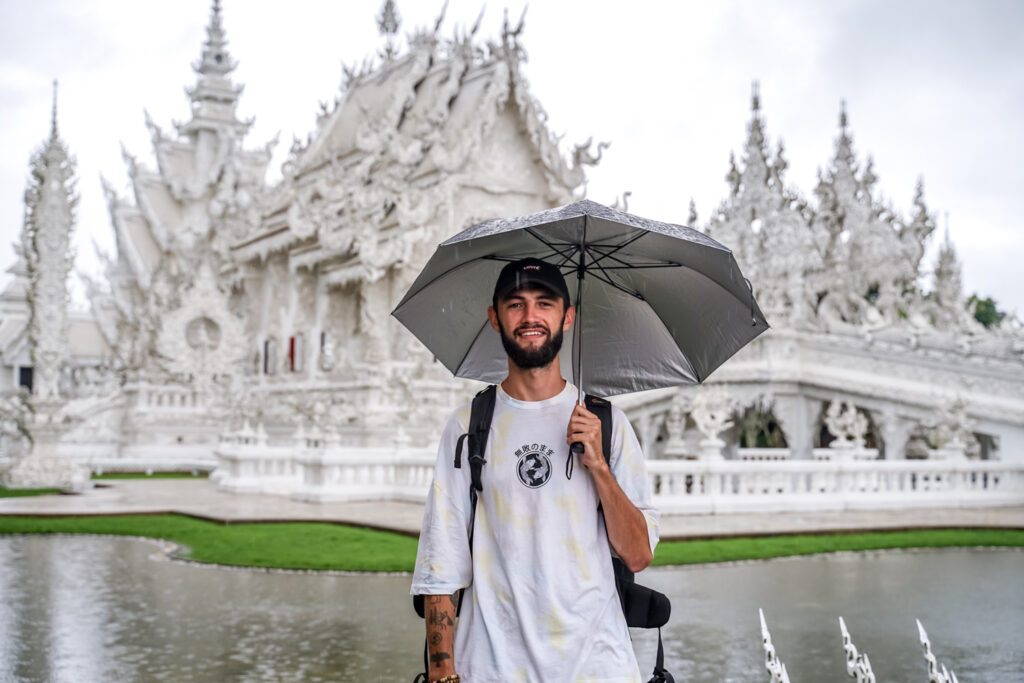
Disclosure: This post contains affiliate links that I may earn a small commission from if you purchase something through them. This comes at no extra cost to you!
Southeast Asia is a backpacking hub known across the world for it’s affordable prices, abundance of attractions, accessibility, diversity and safety, making it one of the best regions in the world for independent travel.
Although I have visited all of the 11 countries in Southeast Asia (apart from East Timor… I’m coming for you one day!), I still make some silly mistakes when it comes to packing my bag for a big trip. With what I’ve learned about travelling and organising over the years, I’ve created this list of 34 essential items and tips that need to be on your packing list so you can keep the regrets (and weight) to a minimum throughout your trip!
Check out this post too for everything you need to know before you go to Southeast Asia: 46 Need-To-Know Travel Tips Before Backpacking Southeast Asia .
Let’s dive straight into some essentials.
Table of Contents...
34 Packing Essentials
As the old saying goes; failing to prepare is preparing to fail!
Use Hostelworld or Booking.com to find the best deals on places to stay across Asia!
1. Don't pack too much
First things first, and I have been guilty of this one too many times, but you never need as much as you think you’ll need. Even better, anything you do end up needing can be found for half the price as it would be at home too!
A good rule would be if you aren’t going to use an item at-least once a week, don’t pack it. For example, I packed a hoodie on my most recent trip to Thailand… do you think I’ve used it 3 months later? Nope.
Remember, you’re going to be carrying (or dragging) this bag a lot in the coming weeks or months, so you’ve got to think about weight too.
2. International adapter
You will need an international plug adapter when you travel – fact. I use MyTravlPal which is ideal.
Most of the best adapters are set up to work in every country in the world and have multiple USB sockets so you can charge more than one gadget at a time. They are lightweight and the type of one-time investment that you’ll use for many years – a real no-brainer!
Check out other options here.
3. Packing cubes
Packing cubes are an absolute game-changer. They help to save space in your backpack and organise everything into specific sections. There’s nothing worse than looking for a certain item and having to rake through your entire bag to find it!
This way you can have different cubes for T-shirts, underwear, waterproofs, or warm clothes – up to you. You could even label them to be super-duper organised!
These are the ones I use, but there are more budget friendly options here .
4. Portable power bank
This little piece of kit doesn’t take up much space and comes in handy all the time while travelling cross-country on long bus journeys and in rural areas.
With this, you’ll never need to worry about running out of battery on your phone and gadgets, with many chargers featuring multiple USB sockets and long battery life. The best ones can be quite heavy, but once fully charged you should get at least 2 full phone charges from it. With this you’ll always feel safe in the knowledge that you can charge your phone at any time and remain connected to maps and social media or make emergency phone calls.
There are thousands of options out there. View them here .
5. Travel towel
A microfibre travel towel is an essential for any backpacker in Southeast Asia, whether you’re planning to relax on tropical beaches, swim at waterfalls or go diving somewhere like Koh Tao in Thailand.
They take up a surprisingly small amount of space when compressed into a small sleeve which is perfect for stuffing into your bag. I take mine all over the world with me. They are fast-drying much more convenient for packing than a standard towel.
Check out the best travel towels here and the one I use below.
Maybe an obvious item, a padlock is a cheap and useful thing to have so you can safely leave your bag somewhere and not be constantly worrying about theft.
Every time I leave my room, get on a plane or take a public bus I will lock my bag. The way I see it is there’s no reason not to! It can be especially ideal if you’re staying in large dorms with lots of people you don’t know – just make sure you don’t forget the combination to it!
7. Starling travel card
“The no-fees travel bank card” will save you money and hassle – a valuable asset while on the road.
I’ve been using a Starling Card for the past few years and with one of these the only fees you’ll need to pay are the standard ATM fees – you’ll never be charged for spending your money internationally.
With its super user friendly app, in my opinion no travel card comes close to this one. It’s also completely free to start using!
8. USD currency
The US Dollar is a recognised currency worldwide and it’s a good idea to always have some tucked away, just in case.
Times when you might wish you had some back-up currency are when paying for visas on arrival (which often required USD) or when ATM’s refuse to dispense money at a time of need. You can exchange USD for local currency in every country, just make sure to check current rates so you don’t lose money with a terrible one!
9. Travel journal
These are a great way to keep track of your movements and thoughts while on the road in Southeast Asia.
In the less-developed Southeast Asian countries card payments are not common and cash is predominantly used. By noting down what cash leaves your wallet, and for what, you’ll also be organised and aware of how much you spend!
Browse cool journals on Amazon here!
10. Water bottle
I always have a water bottle with me because it’s extremely important to stay hydrated in these super hot climates. The tap water is totally undrinkable in Asia for us weak-stomached foreigners, so using a bottle with a built-in filter is an even better idea so you can drink it freely.
However, there are often safe drinking water taps available in hostels and some public spaces to allow to you to refill for free and cut down on buying plastic bottles every time you’re thirsty!
It not only saves the planet by using cutting down on waste, but also saves you around $0.50 – $1 every time you’d normally buy a bottle!
11. Water purification tablets
On that note, unless using water purification tablets tap water will more than likely make you sick in most countries. Best take these just in case.
12. A good travel camera
It always surprises me how many people don’t visually document their travels.
For me, this is the number one essential because I simply couldn’t travel without a camera! There are many lightweight, compact, high-quality travel cameras available that take much nicer photos than your phone – even with technology of phones today!
I use the Sony A7ii which, for me, is absolutely perfect and very versatile albeit maybe a bit fancy for your average traveller. Check out these compact cameras on Amazon or the ultimate adventure camera, a GoPro, below.
13. A travel wallet
I always have a travel wallet with me to store certain essentials.
Use it for things like keeping your passport safe when you don’t need it, storing various currencies from previous countries (I collect money from everywhere I’ve been as a souvenir), passport photos for any required visas, emergency USD and a pen or pencil.
14. Copies of important documents
15. dry pack.
A dry pack is an absolute essential for outdoor activities like kayaking, island-hopping, trekking, beach visits or anything where there’s a risk of water damage.
They are totally waterproof and feature a roll-over locking system so they can be completely submerged and your stuff will stay dry (although I don’t recommend purposely doing that!). I bought one of these while travelling around the islands in the Philippines and it saved my gadgets more than once!
You’ll see a lot of these on the islands!
16. Flip-flops or sandals
An obvious essential for beach days and hot weather, flip flops or sliders are actually a very good thing to have for hostels and guesthouses too. Hear me out!
Many bathrooms in southeast Asia are wet rooms, meaning when you shower the entire room gets soaked. So, instead of going to the toilet and having to walk through water, having a pair of sliders (my personal preference) just makes sense. You can find lots of cheap flip flops or sliders everywhere in Southeast Asia but if you wanna be uber prepared then have a look at the options here.
17. First-aid kit
While travelling, unfortunately things can go wrong at any given moment, especially in less developed countries where road conditions are poor, food poisoning is common and health and safety is less enforced.
It’s vital to have a small bag of basic first aid items, for example:
- Paracetamol
- Imodium in case you get a violent case of “Bali belly”
- Hayfever tablets if you suffer like me
- Hand sanitiser
18. Poncho or light rain jacket
Essential if travelling in Asia in the monsoon season, it pays to buy a half-decent poncho to stay as dry as possible during a downpour.
You can find cheap plastic ones in most supermarkets like 7/11, which do the job in emergencies but tend to rip quite easily and only survive a couple of storms. Pack a lightweight rain jacket or go on a bargain-hunt for a reusable poncho once you arrive at your destination.
19. Bug spray
In the tropical climates of Southeast Asia it’s always handy to have some mosquito repellent so you don’t get eaten alive (but you probably will anyway!).
If you plan on doing any hiking in humid forests or spending time near stagnant water, best pack some decent bug spray.
20. Earplugs
Extremely handy in hostel dorms and overnight buses, earplugs take up zero space and are cost effective, so stock up if you are a light sleeper. After all, nobody enjoys trying to fall asleep when the guy above you sounds like he’s having an exorcism.
21. External hard drive
If travelling with a camera, an external hard drive is perfect to back-up the thousands of photos and videos you’ll be taking. I usually try to do a weekly back-up of everything.
I have a LaCie 4TB hard drive which has ample storage space, but I’ve have some connectivity issues with LaCie’s products in the past so I also have a 1TB Seagate One Touch which seems more reliable.
Here are the two I use on Amazon .
22. Shoes (if you have big feet!)
I hate to disappoint, but if your shoe size is bigger than UK 12-13 you will not be able to buy cheap shoes in Southeast Asia.
It’s pretty gutting because there are some real bargains in this part of the world, but I’m 6ft 3” and I have learned in the past that if I go looking for a bargain pair of shoes here, the shopkeepers will just point and laugh at my feet!
Best to pack one or two durable pairs from home instead.
23. Sunglasses, hat & suncream
These three kind of go without saying, but nevertheless, it’s important to stay protected in the heat of the day.
These are the type of international items you can pick up for a few dollars anywhere in the world, so no need to bring any designer shades with you!
24. Portable speaker
For any music lovers like me, a portable speaker is such a good tool to have. The quality is better than just blasting songs out from your phone and it can be a great way to get warmed up for a night out with friends or when chilling on a beach.
There are many lightweight speaker options but my personal favourite company is JBL – they’re products are sick!
Browse trav el speakers.
25. Multi-tool
A multi tool could come in handy on many occasions, especially one with a bottle opener on it!
It’s something that is small, lightweight and one of those “you never know” essential items.
26. Tiger balm
The cure to everything!
Tiger balm is a great addition to your backpack and something I use all the time. It is a heat rub mainly used for soothing aches and pains, but I use it on just about anything. It heals spots, bug bites and scratches overnight, and it also works for clearing a blocked nose.
27. A bum-bag/money belt
Prepare to go full tourist!
Very popular for walking around busy streets when you want to keep your money safe but don’t want the hassle of carrying around a rucksack or handbag.
Personally I don’t use one because it makes you stand out even more than normal, and I don’t need that. However they are extremely popular over here and would be the perfect handbag equivalent for cash and small items.
28. Cards/small games
Having a deck of cards at the ready can be a real ice-breaker and a great way to socialise. All small, lightweight games like this are a great item to chuck in your bag as long as you’re likely to use at-least a few times on your trip. Have a look through all these great options.
Just don’t be that one guy who takes it all too seriously!
29. Earphones
Earphones are great for those times you just want to zone out.
I listen to music and podcasts all the time and they’re an absolute essential for long flights or overland journeys. They can also be used as an earplug alternative!
30. Neck pillow
Again, coming in to play on long bus, train, car or plane journeys, a neck pillow can be compressed to nothing so takes up no space in your bag when not in use.
This admittedly isn’t something I use because I can’t sleep sitting upright anyway!
31. Travel Apps
There are an array of useful Apps out there for backpackers, aside from the standard accommodation booking ones like Hostelworld or Booking.com.
Download some before you arrive so you’re familiar with them and prepared. Simply by having Grab or Xe Currency by the time you land will save you money and allow you to avoid being potentially scammed or overcharged by a taxi.
Some great Apps are:
- Xe Currency – Real-time exchange rates that automatically update every 60 seconds.
- Google Translate – Helps to solve the language barrier problem with local people. It also has a function where you can take a photo of any foreign text and it’ll translate it – a proper game changer.
- Maps.me – Many people use Google Maps, but I find Maps.me far more suitable. Download maps to use offline, plan a route and pin destinations for later.
- Grab – Asia’s version of Uber is available in most cities and major towns and offers affordable rides that can be paid for on card and are tracked, so it’s safe too.
- TripAdvisor – Check out reviews of restaurants and sights before you go to see what sort of experience others have had recently.
- Hinge/Bumble/Tinder – Mostly used as dating apps but don’t rule these out because these are also a great way to make friends with like-minded people and share experiences.
32. Learn some local language
Okay, so it’s not something you physically put in your bag, but it is something you can take with you!
Locals absolutely love to see you try and speak their language, even if it’s just the most basic phrases. “Hello” and “thank you” are obvious pleasantries to know, but why not push the boat out and learn something like “can I have an iced coffee, please” and I promise you’ll get a good reaction. You often see people’s faces light up when you just give it a go!
33. Lonely Planet guidebooks
The Lonely Planet guides are a brilliant source of information, and they have guides for just about everywhere in Asia!
They have expect advice and recommendations on so many countries!
Check out these popular ones:
- Southeast Asia on a shoestring
- Cambodia, Laos, Vietnam & Northern Thailand
- Bali Pocket Guide
34. Local SIM cards
A true travel essential that you should get on arrival anywhere you go for a decent amount of time.
Stay connected across the world with friends and family by buying a local SIM card. I get one in every country I visit because they are extremely affordable and have high 4G speeds.
Prices vary across the continent, but you can expect to pay anything from $2-$12 for unlimited data for 30 days. They can be topped up all over the place at stalls and supermarkets, so if you run out of data it’s never the end of the world!
Note : SIM cards at airports or guesthouses are a lot more expensive than in street stalls or supermarkets, so unless you’re desperate, it’s best to wait until you’re in the center of town to buy one.

Happy travelling!
HELPFUL RESOURCES FOR PLANNING YOUR TRIP
Accommodation: Booking.com , Hostelworld
Tours : GetYourGuide , Viator , Klook , TripAdvisor
Transport : 12Go , Omio , Trip.com , Rome2Rio
WHO IN THE WORLD IS JAMES?
Click below to learn more about my story, including 5 random facts about me, some travel FAQ’s and my entire travel history.
Related posts:
Leave a comment cancel reply.
Your email address will not be published. Required fields are marked *
Save my name, email, and website in this browser for the next time I comment.
Buy me a coffee

What To Pack For SouthEast Asia Plus Tips!
Categories Asia , Packing
Working out what to pack for Southeast is quite the art! It’s hot and humid in most places in Southeast Asia but at the same time, most of us want to look good when travelling Southeast Asia and not hot and sweaty! Plus after a few days you’ll quickly realise the lighter your bag is the better!
So what is the perfect South East Asia Packing list and what Southeast Asia packing tips do I have to help you?
Well, after spending over two years in South East Asia doing multiple Southeast Asia backpacking trips I’ve made many packing mistakes and seen a lot being made too! I’ve seen people who have binned half of their bag because they realised it wasn’t South East Asia appropriate, people who have binned suitcases in turn for backpacks (spoiler alter, that may or may not have been me!), and people who carry far too much and don’t end up wearing half of it !
So along with what to pack for Southeast Asia here are some important do’s and don’ts when it comes to packing your backpack for Southeast Asia, aka – your trip of a lifetime because Southeast Asia is seriously the best part of the world!
If you do want a packing list for Southeast Asia, read my Thailand Packing List and Guide as this applies for Indonesia, the Philippines, Vietnam, Cambodia and Laos!
What to Pack for Southeast Asia!
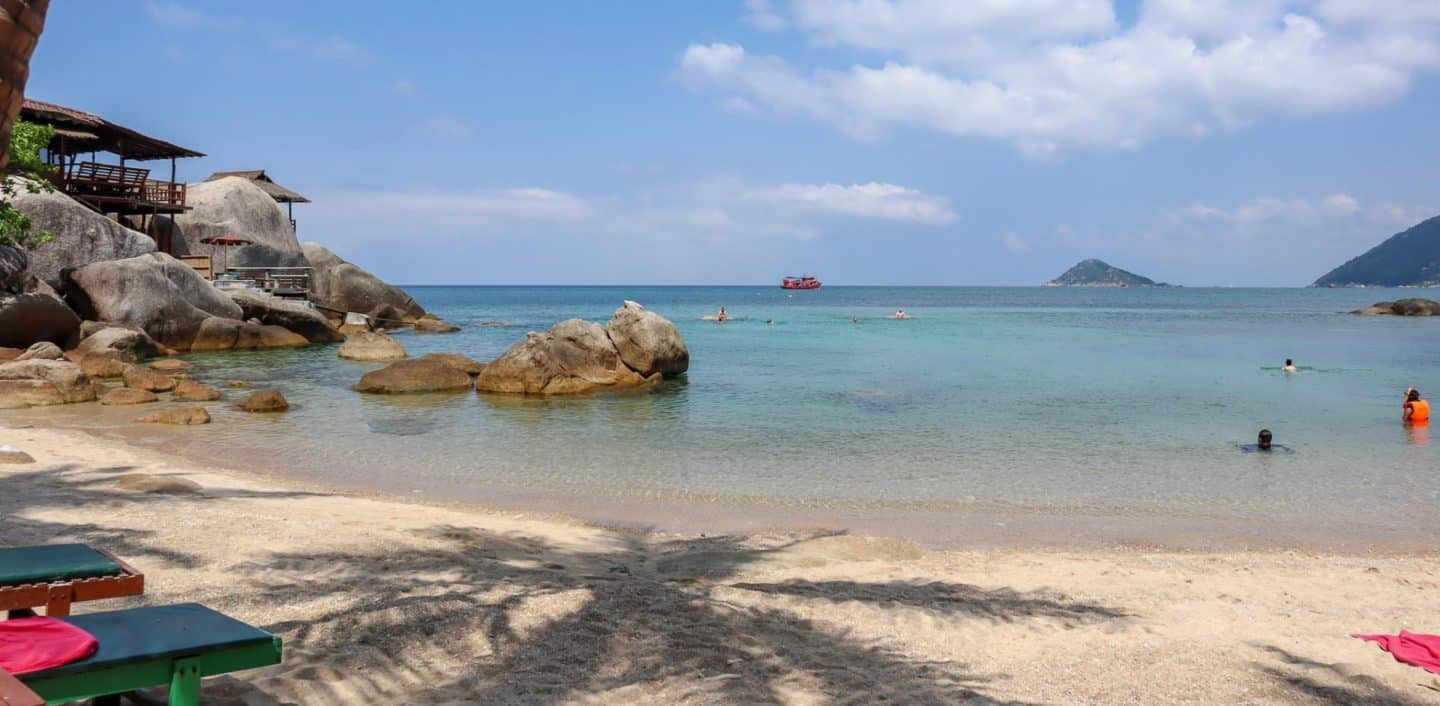
TRAVEL INSURANCE FOR SOUTHEAST ASIA!
First up, have you got travel insurance for South-East Asia yet? I am covered with World Nomad’s who I really recommend! They are designed by travellers, for travellers with excellent customer service and a range of cover options.
Only pack what you need!
I know this sounds obvious and is much easier said than done but as you go through your wardrobe if you pick something up and think ‘I probably won’t need this but I’ll take it anyway’ put it back and do not bring it as you only need South East Asia travel essentials!
For a more detailed post on what you should pack for Thailand which will apply for many of the Countries in South East Asia too, have a look at my Thailand Packing List here !
Don’t pack clingy clothes.
This is more aimed at what to pack for Southeast Asia for females. To help you work out what not to pack for Southeast Asia, one thing to think about is not taking clingy, tight clothes!
You need to imagine just how hot and humid it gets in South East Asia. The majority of the time you will be sweating during the day and night so take lightweight, floaty clothes only. Do not pack jeans (although denim shorts are ok and actually a good idea) or dresses and tops etc with lots of layers.
Even gym pants and Spanx Leggings can be hot and uncomfortable so if you pack them be sure to pack 3/4 length or gym shorts.
Not only will these clothes be more comfortable but they’ll weigh less and take up less room in your bag because minimalist packing for Southeast Asia is best!
Buy things in Southeast Asia.
When thinking about what to pack for Southeast Asia, let me tell you now that shopping in Southeast Asia is great and it’s addictive! So many times I have wanted to buy things but not had room in my bag. If you are having trouble finding lightweight, loose clothes at home, wait until you get to Asia and shop there.
Khao San Road is the best market in Bangkok for backpackers and the perfect place to shop. In fact, all of the Islands, Cities and Towns in Southeast Asia are full of markets catering for backpackers with clothing in the right material for South-East Asia Travel and weather!
Pack it all in a Backpack.
Backpack or suitcase for travelling in Southeast Asia? That’s the common question and my answer is a backpack! Even if you are reading this because you want to know what to pack for a 2 week trip to Asia, I still suggest a backpack!
Yes, it will be heavy on your back and sometimes you’ll hate it but its SO much better than the hassle of taking a suitcase for your backpacking trip around Southeast Asia. Your bag will be hauled onto buses, tuk-tuks, boats, balanced on mopeds and in some case thrown from boat to boat (yes really!) and backpacks make it a lot easier for this to be done.
It’s so awkward seeing someone with a suitcase trying to wheel it onto a boat, drag it through sand or lift it on top of a tuk-tuk! Embrace the South East Asia Backpacker life and take a backpack.
Osprey offers a really good range of Backpacks . I have their Farpoint 70L S/M backpack which I see a lot of other travellers around South East Asia with, it also benefits from a removable day pack.
If you need a wheeled case for certain reasons or are really against a backpack, rather than a hard suitcase get a Rolling Rucksack which will be easier to travel with and carry when you need to.
Related Post: What To Look For When Buying A Backpack For Travelling!
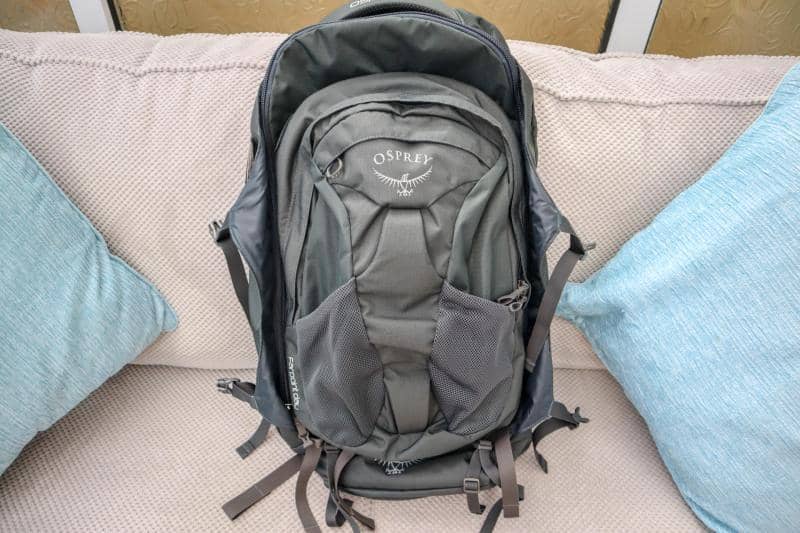
Pack packing cubes.
There’s been a hype around packing cubes the last few years and rightly so because they are so great and so handy when working out how to pack for a trip to Southeast Asia with all the stuff you need to take.
Packing cubes really help compress your clothes meaning you can pack more into a small space, however, I also find them so great for organising my clothes! If I know I won’t be in beach places for a few weeks I pack all my beachwear in one cube and I don’t have to touch it until I’m back by the beach meaning I create less mess when unpacking and it’s easier to find the clothes I do need!
I use these packing cubes from Amazon which are great, however, I only use the small sizes as the big ones that come in the back are far too big!
Don’t pack ‘extra’ toiletries.
When it comes to what to pack for Southeast Asia and toiletries, you can buy the vast majority of toiletries needed in Asia from your usual brands in the shops once in South East Asia. Whether that’s in the small convenient Supermarkets or in Shopping Malls in the big cities if you need something more specific.
Also when you think about what toiletries to pack for Southeast Asia, remember that if you’re not sure you’ll need something, don’t buy it and pack it because you’ll be able to buy it away if it’s a generic product.
Another Southeast Asia packing tip from me is that I suggest taking more Sun Cream, especially if you are going to Thailand first as suncream is expensive in Thailand and will probably be cheaper at home!
The other thing to note for females when packing for South-East Asia on your period is that Tampons are not common in South East Asia and when you do find them they are pretty expensive – £10.00 a pack in some places! So pack more Tampons, be prepared to use sanitary towels or even better, buy a menstrual cup before you go travelling.
These are the way forward for periods in general and especially when travelling, they’re so small and once you have it you have no need to purchase any more items! I use this Travel Lily Cup which is really great!

Pack a travel towel.
Big, fluffy towels are great but not when you’re trying to fit it into your bag. Most guesthouses and hotels in South East Asia will offer you towels but I recommend adding a small, quick-dry, foldable travel towe l when packing for Southeast Asia because often if you’re staying in hostels you need to pay for towels and these towels always come in handy one way or the other.
On this note don’t take a towel for sunbathing on either, the Sarongs that are sold in all markets in Southeast Asia will be your best friend for sunbathing on. They’re great because they fold up small, dry quickly and act as a shawl for temples for example and a blanket for overnight journeys!
Don’t pack all your makeup.
When thinking about what to pack for Southeast Asia, as a girl you might want to take a lot of makeup for nights out. This is always my biggest mistake, I always take the necessities and what I usually wear day to day at home- mascara, eyeliner, blusher, concealer, lipstick, foundation, eyeshadow, but when in South East Asia during the day I wear no makeup at all!
In the evenings when I’m on a night out in Southeast Asia I will wear makeup but most of the time I only wear a bit of foundation, mascara and blusher or bronzer, which usually sweats off pretty quickly anyway!
When it comes to what to wear in South East Asia in the evening and how to look, girls do dress up and wear makeup yes, but it’s not a must and will only be in the ‘party places’, most of the time you will be make up free so embrace it and pack accordingly!
Also remember that makeup tends to melt due to the heat so if you have expensive makeup, don’t bring it!

Pack trainers.
For what to pack for Southeast Asia make sure trainers are on your Southeast Asia packing list and not just Converse trainers, because at some point a hike into the jungle or up a volcano will seem tempting and you’ll need and want trainers on your packing list for South East Asia for these adventure activities, not Converse etc with no grip and that may get ruined! The best trainers for travelling are black ones because they go with everything!
Don’t pack too much underwear.
I’d say 7-10 pairs is enough even if you’re packing for 3 months in South East Asia. Getting your laundry done in South East Asia is really easy- you can drop it off at most guesthouse/hotel/hostel receptions to be done overnight and it’s ready the next day. It’s very cheap and done by weight.
Pack clothes that will cover your Legs and Shoulders.
Although most countries and places in South East Asia are used to tourists remember than these are very religious, conservative countries so when you visit temples and the more local part of town you will need to be respectful and cover-up, this even applies for a packing list for Southeast Asia for males.
I always take a sarong in my bag to put around my waist to cover my legs when I visit temples and remember to put on a t-shirt rather than a tank top. Maxi dresses and long, baggy pants will also work well for what to pack when visiting temples in South East Asia.
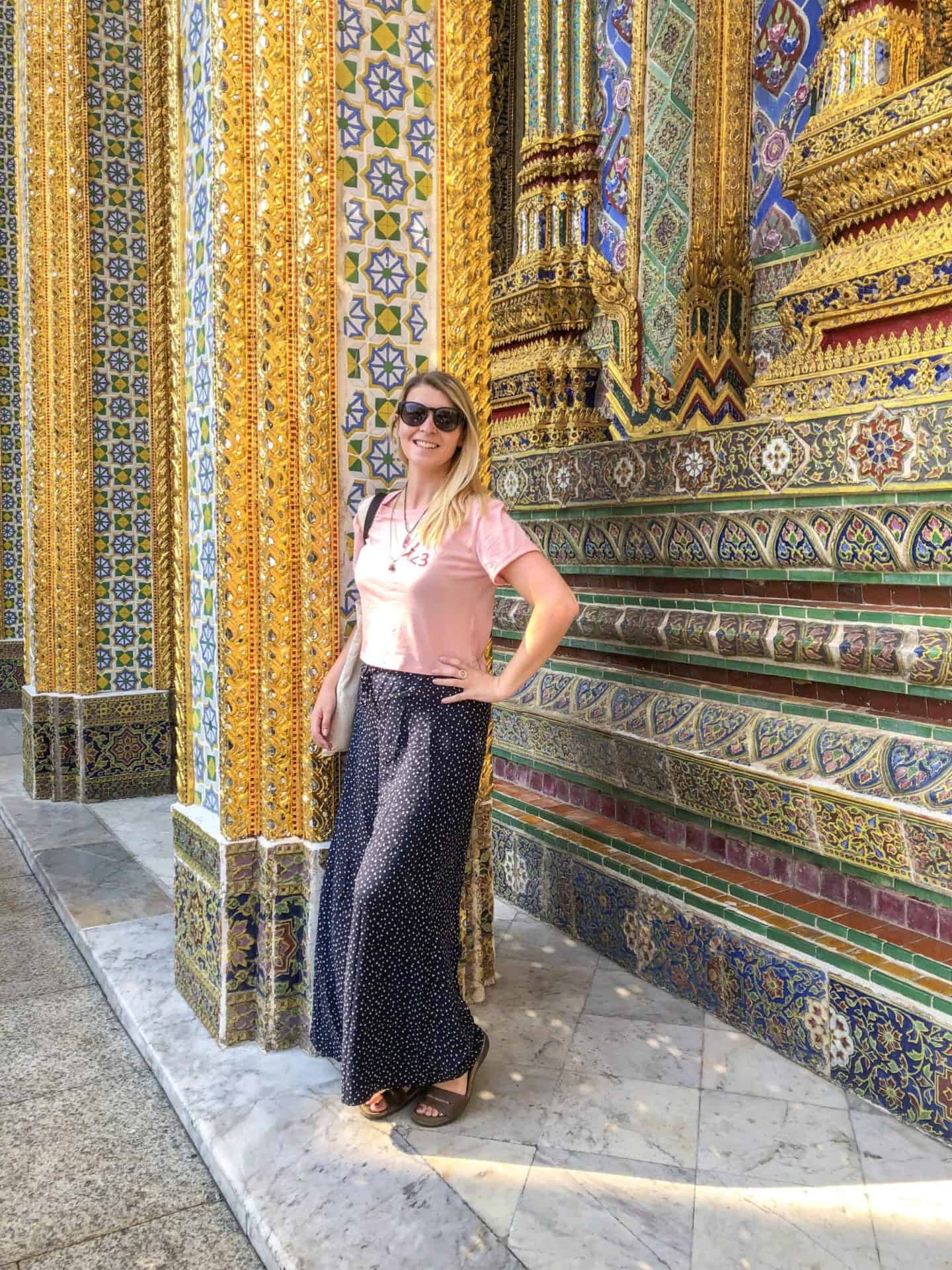
Pack a good pair of Flip-Flops/Thongs/Jandals!
I love Havaianas , they can appear expensive but they are worth it as they’re great in quality and they last a long time.
The best shoes to wear in Southeast Asia are flip-flops, not just because they are comfy and easy to pack and carry but in most places like temples, shops and restaurants you need to take your shoes off and slip-on sandals are easiest for this.
You can buy fake Havaianas in many of the markets in South East Asia, especially in Thailand, but naturally, the quality isn’t as good and real ones are much better!
Pack toilet paper.
If there was evert a backpacking essential for Southeast Asia, toilet paper is it and I recommend that you carry some with you during the day and especially on day and night journeys. Toilet roll is not always common in South East Asia because locals prefer to use the bum gun! You can, of course, use this too but if you get a bit ill in Asia, you’ll be pleased to have toilet paper on you!
Pack a Rain Jacket.
Another travel essential for Southeast Asia is a rain jacket because yes, it rains in South East Asia! Even if you’re going in the dry season you may still see a random downpour. You’ll be able to buy a one-use plastic mac in most places in South East Asia if you get caught in the rain but packing a small fold away rain jacket is a great idea just in case!
Pak the little things.
Remember to take an adapter for your electronics for Southeast Asia. You’ll need an international adapter as the plugs can be different in the different countries of South East Asia.
Take a decent padlock for your bag or locker in hostels etc.
Sunglasses are a must! I love my SunGod glasses and they are such good quality of the intensity of the South East Asian Sun.
An Eye Mask and Ear Plugs are needed for hostels!
A travel pillow is a great idea too for those long bus journeys and flights. I recommend a foldable, blow up pillow like this one so it doesn’t take up much room in your bag!
Headphones for those long Journeys and an E-Reader is a good idea too!
Hand Sanitiser is a must!
You can buy all of these things in South East Asia but it’s a good idea to have them in advance!
Don’t overpack when packing for Southeast Asia!
My final point on how to pack for Asia, and again, easier said than done I know is not to overpack and basically, if you can’t pick up your backpack or can’t close it, you’ve packed too much!
You really do not need to pack that much for South East Asia, you’ll be in beachwear a lot of the time or shorts and tops in Cities in Towns. Most clothing will be fine to wear during the day in South East Asia and at night and you’ll probably end up wearing the same outfits over and over because it’s a suitable outfit.
I know it’s harder if you’re going to Australia or somewhere else in the world afterwards but really do remember that the more you pack, the more you need to carry and you do have to carry your bag quite a bit in South East Asia!
Remember to get Travel Insurance before your trip to South East Asia!

- More posts to help you plan your South East Asia Trip:
- Female Packing List for Thailand – The Do’s and Don’ts!
- 60 Tips To Know BEFORE Going to Thailand To Have The BEST Time!
- Your Complete Guide to the Gili Islands in Indonesia!
If you liked this please share it! 🙂
- Click to share on Facebook (Opens in new window)
- Click to share on Twitter (Opens in new window)
- Click to share on Pinterest (Opens in new window)
- Click to email a link to a friend (Opens in new window)
By using this form you agree with the storage and handling of your data by this website. *
Sunday 20th of December 2015
I was just starting to worry about the dreaded packing for my first solo trip to south east asia (which is fast approaching) and then stumbled across this page. ☺ thanks for all the tips.
TheWanderingQuinn
Monday 21st of December 2015
Yay that's so great! Biggest tip- do not overpack, there's so many clothes and things to buy once in south east Asia that you'll want all of it so leave space! :) Hope you have a great trip!
10 Packing Essentials For Your Southeast Asia Adventure
What do you pack for a Southeast Asian adventure? Here, we cover ten essentials that no traveler should be without.
Southeast Asia is a vast, breathtakingly beautiful place , and there will always be something for visitors to explore. However, if venturing into this part of the world, a traveler must know what they need before they set out. Southeast Asia encompasses many countries, including Malaysia, Thailand, Vietnam, and Cambodia for example. Each of these has its own challenges that travelers may need to overcome during their trip. As with any adventure, planning should take precedence in the scheme of things.
But what does a guest to Southeast Asia have to pack when they're headed there? Travelers across the globe, and even native to the region, have a set of essential things that they would prefer to carry with them. Depending on where a visitor is headed, the list of things may vary. These ten items form the core of what visitors need, regardless of whether they're headed to Southeast Asia as a digital nomad or one of the rejuvenating resorts in the region for a casual getaway. These essentials should make up the central part of a guest's packing.
Related: 10 Dreamiest Southeast Asia Resorts For A Luxurious Vacation
The recommendations for products here come from research into these products across the Internet and through individual experiences. The criteria used for determining which products to recommend to visitors to Southeast Asia also depended on the availability of the product and what the product could be useful for while trekking through these countries. Additionally, these products offer a certain level of comfort and style the modern traveler would enjoy having in these places.
10 Lightweight Backpack
A lightweight backpack is an invaluable asset for travelers exploring Southeast Asia. Its featherweight design ensures comfort during long walks through bustling cities and trekking in humid jungles. With sweltering temperatures and diverse terrain, carrying minimal weight eases the strain on the traveler, allowing them to easily navigate crowded markets, ascend steep trails, and board various modes of transportation. Moreover, it provides the flexibility to adapt to local customs, as travelers can easily remove or store clothing layers to adhere to modesty requirements in temples or mosques.
- Product: Red Rock Outdoor 11.5L Large Rover Sling Pack
- Price: $35.99
- Usability: This backpack carries a massive amount and can even take a small tablet or a laptop (up to 13"). It is designed to be rugged yet comfortable, reducing sweating in the extreme heat of Southeast Asian climates.
9 Smartphone
A smartphone is an essential tool for any traveler exploring Southeast Asia. Its versatile camera capabilities enable easy capturing of the region's breathtaking landscapes, rich cultural heritage, and vibrant street life. Moreover, its ability to connect to multiple networks ensures uninterrupted communication and access to crucial navigation apps, enhancing the traveler's safety and convenience. Whether snapping memorable photos or staying connected in remote areas, a smartphone is a critical asset to have.
Visitors should ensure they get a SIM card with coverage in the area they are headed to. Some telecommunications providers don't cover the country visitors may want to see.
- Product: Google Pixel 4a Smartphone
- Price: $254.50
- Usability: Designed by Google, the Pixel 4a is not the newest version of the Pixel family but is a bit more rugged, making it a better choice for a phone when headed to Southeast Asia.
A raincoat is a must-have travel accessory for anyone exploring the epic and adventurous places in Southeast Asia . The region's unpredictable weather, especially during the monsoon season, often brings sudden and heavy rainfall. Carrying a lightweight and packable raincoat ensures the traveler remains dry and comfortable when caught in unexpected downpours. It's a practical addition to their gear, enabling them to continue their adventures, visit attractions, or navigate the bustling streets without being deterred by the tropical rains. Nothing is more miserable for a traveler than getting soaked in one of Southeast Asia's monsoons.
- Product: Nike Repel UV Windrunner
- Price: $73.97
- Usability: The climate of Southeast Asia ensures that there are always unexpected rains on the horizon. Having a waterproof covering that visitors can stow easily is necessary to ensure they remain dry during the rainiest months.
7 Comfortable Footwear
Comfortable footwear is a necessity for a Southeast Asia trip due to the extensive walking and exploration required. The region's diverse terrain, from bustling cities to rugged trails, demands shoes that offer support and cushioning. Ill-fitting or uncomfortable footwear can lead to discomfort, blisters, and fatigue, hindering the traveler's ability to fully enjoy the sights and experiences. With the proper footwear, they can comfortably navigate the urban streets, hike through lush jungles, and explore temples, ensuring an enjoyable and pain-free journey.
- Product: Women’s Rio Branco Alveomesh Shoe
- Price: $140.00
- Usability: This shoe is a sustainable option for visitors to Southeast Asia, made out of a combination of recycled and organic materials while maintaining ease of use and comfort for the nature-conscious user.
6 Moisture-Wicking Clothing
Moisture-wicking clothing is essential to any traveler's suitcase for a Southeast Asia adventure. The region's hot and humid climate can lead to excessive sweating, discomfort, and potential skin issues. Moisture-wicking fabrics pull sweat away from the body, keeping the traveler dry and reducing the risk of chafing and irritation. This type of clothing also dries quickly, making it ideal for on-the-go laundry or sudden rain showers. With moisture-wicking clothing, the traveler stays cool, fresh, and comfortable.
Southeast Asia's climate and culture often demand lightweight clothing, but remember to respect local customs when visiting temples or conservative areas. Pack modest clothing, like long-sleeve shirts and pants or a sarong, which can easily cover shoulders and knees.
- Product: Nike Dri-FIT ADV A.P.S.
- Price: $45.97
- Usability: Designed for workouts, this material is perfect for ensuring that visitors remain dry despite potential sweating in the climate of Southeast Asia. In colder areas, it can be worn as a layering piece.
Related: 10 Idyllic Islands In Southeast Asia (That Aren't In Thailand)
A hat is one of the most critical lines of defense while trekking through Southeast Asia. The intense tropical sun can lead to sunburn and heat exhaustion, making sun protection crucial. A hat shields the traveler's face and head from harmful UV rays, reducing the risk of sunburn and heat-related discomfort. It also provides relief by creating shade, allowing them to explore bustling markets, ancient temples, and stunning landscapes with comfort and peace of mind, making it an essential companion for a Southeast Asian adventure.
- Product: Undercover Khaki Bucket Hat
- Price: $276
- Usability: This hat's front and back flaps both serve as coverage to prevent sunburn and ward water off the wearer's neck. It's a complete solution for a Southeast Asian Adventure.
4 Travel Adapter
A travel adapter is an indispensable tool for anyone journeying to Southeast Asia. The region encompasses a variety of countries, each with its own unique plug socket and voltage standards. A travel adapter ensures travelers can charge their devices and stay connected without hassle or interruption. With this versatile accessory, they can adapt to the diverse electrical outlets in the region, from Thailand's Type A/B to Malaysia's Type G, enhancing their convenience and preparedness for the journey through Southeast Asia.
- Product: Sole Source TPAK-10EP-TAA
- Price: $8.50
- Usability: Universal worldwide adapters like this one offer a tremendous multi-point solution for electronics in Southeast Asian countries and beyond. Getting charged simply means selecting the right option for the plug mechanism.
3 Reusable Water Bottle
Southeast Asia is hot, and visitors should take as many precautions as possible to remain hydrated. As such, a reusable water bottle is quintessential for travelers exploring Southeast Asia. Carrying a refillable water bottle ensures access to clean and safe drinking water, even in areas with unreliable tap water. It not only reduces plastic waste but also provides a cost-effective and eco-friendly solution for staying hydrated while navigating bustling cities or trekking through the lush landscapes of Southeast Asia.
- Product: Nike Recharge
- Usability: Built out of metal, this reusable water bottle ensures that visitors to Southeast Asia don't need to overthink where they place their water bottles.
2 Power Bank
When traveling, especially for digital nomads or those who work on the go, losing power could spell disaster. Frequent power outages and limited access to charging points can pose challenges for charging devices like smartphones, cameras, and tablets. A power bank provides a reliable portable energy source, allowing travelers to stay connected, navigate with GPS apps, and capture memories without worrying about running out of battery. It's a travel essential that ensures peace of mind through this vibrant and diverse region.
- Product: Mobile Charging Kit: Black
- Price: $44.95
- Usability: This 5000-mAh charging bank is built to take a beating, as is typical of Otterbox products. Its small size allows it to be carried around in a pocket without any added fuss.
Related: Budgeting For Southeast Asia Is Easy With These Tips
1 Travel Documents
Losing travel documents is among the scariest things that could happen to a traveler. You should be aware of things you need to know if traveling with a US passport in this region . The region encompasses various countries, each with its own visa requirements, entry regulations, and necessary permits. Travelers must carry their passport, visa, travel insurance, and any photocopies of essential documents in a secure and waterproof pouch. This preparedness ensures a smooth entry and exit. It provides vital information in case of emergencies, making it an absolute necessity for a hassle-free and safe exploration of Southeast Asia.
- Product: Leather Passport Case
- Usability: The soft, pebbled leather is great for holding onto travel documents and has the added benefit of being waterproof - a definite plus in such a wet climate as Southeast Asia. Visitors can also add monogramming foil for a personalized product.
Physical Address
College House, 2nd Floor, 17 King Edwards Road, London, HA4 7AE
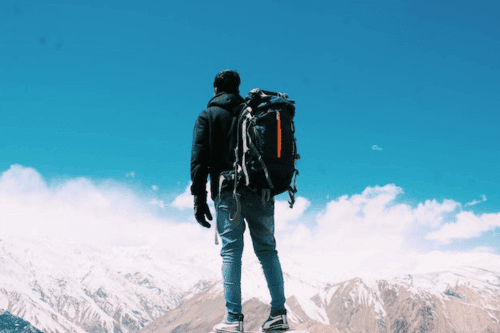
We’ve Found The 12 Best Backpacks for Traveling Around Asia!
- September 27, 2023
On the hunt for the best backpacks for traveling around Asia? Lucky you! Asia is one of the most fascinating continents on the planet.
My name is Matt, and I have been traveling the world since 1999. I have been through many backpacks over the years and love to pass on my knowledge to the next generation of globetrotters.
At Everyday Ape, we’ve researched and handpicked the best backpacks that offer durability, comfort, and intelligent organization. We’ve selected the very best backpacks, from the carry-on size Osprey Farpoint to the larger Osprey Atmos AG50.
Say goodbye to bulky luggage and hello to freedom with the perfect backpack by your side.

Key Takeaways
- Osprey Farpoint & Fairview, Nomatic 40L, Cotopaxi Allpa 42L, and Osprey Porter are the best travel backpacks for traveling Asia.
- We’ve grouped our favorite backpacks by size. The first list looks at carry-on compliant models, while the second section looks at larger backpacks that must be checked in for your flight.
- All the models on our list feature a lightweight design, comfortable harness, thoughtful organization, and durable materials.
- Consideration of travel needs, size, layout, weight, and structure are important factors when choosing a travel backpack for Asia.
Table of Contents
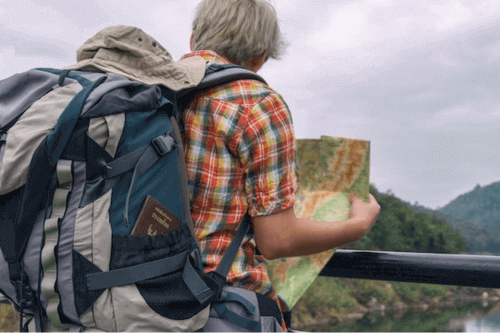
Choosing the Best Travel Backpack for Traveling in Asia
When choosing the right backpack for your trip, several important factors must be considered.
First, you’ll want to think about the size and layout of the backpack, ensuring it has enough space and compartments to accommodate your belongings.
Additionally, the backpack’s weight is crucial, as you’ll want to avoid unnecessary strain on your shoulders and back.
Size and Layout
To find the best travel backpack for your trip to Asia , consider the size and layout that will suit your needs. When backpacking through Asia, having the right backpack size is crucial.
Here are some factors to consider when choosing the best backpack:
- Ample Storage : Opt for a larger backpack that can accommodate all your travel essentials and souvenirs.
- Organizational Compartments : Look for a backpack with multiple compartments to keep your belongings organized and easily accessible.
- Comfortable Fit : Choose a travel backpack with adjustable straps and padding for a comfortable fit during long hikes and walks.
- Durable Construction : Ensure the backpack is made of high-quality materials that can withstand the rigors of backpacking.
By selecting a backpack with the right size and layout, you can enjoy the freedom to explore the Asian continent and beyond without any worries about carrying your belongings.
With so many backpacks on the market, you will surely find the perfect one for your travel adventures.
For a comfortable and hassle-free travel experience, you should prioritize weight and choose a travel backpack that’s lightweight yet durable.
When exploring Asia’s vibrant and diverse landscapes, you’ll want a backpack that won’t weigh you down. The Osprey Farpoint (for men) and Fairview (for women) are excellent options. These hiking-style backpacks feature a suitcase-style opening and a lightweight design, making them ideal for long journeys.
The Cotopaxi Allpa L Travel Pack and Nomatic 40L are also worth considering. These backpacks offer durability and comfort, with the bonus of intelligent organization.
If you’re looking for the best travel backpack, consider the price an important factor in your decision-making process. While splurging on a high-end backpack is tempting, plenty of affordable options offer incredible value.
Here are some considerations when choosing the best travel backpack:
- Explore budget-friendly models: By selecting a reasonably priced hiking backpack, you’ll have more money to spend on other essential items for your next adventure.
- Exploring backpack brands: Opting for a backpack at a lower price point allows you to try out different brands and discover hidden gems that suit your needs.
- Popular travel backpacks: Don’t be swayed by the hype surrounding expensive packs. There are affordable options that are just as popular and reliable for your backpacking journey.
You might also like to read another of our articles about why backpacks are so expensive .
Materials/Fabrics
When selecting the best travel backpack, you should always consider the durability and quality of the materials used. After all, you want a backpack that can withstand the adventures and challenges of your travel style.
Look for a backpack made from high-quality fabrics such as nylon or polyester, as these materials are known for their strength and resistance to wear and tear.
Additionally, check if the backpack has reinforced stitching and sturdy zippers, as these are crucial for the longevity of your new backpack.
Don’t forget to pay attention to the backpack straps as well. Look for padded and adjustable straps that provide comfort and support in carrying your backpack for long periods.
Weather Resistance
To ensure your belongings stay dry in unpredictable weather conditions, look for a travel backpack that’s both water-resistant and durable. When choosing a backpack for traveling to Asia, weather resistance is crucial to keep your gear safe and dry.
Here are four reasons why weather resistance should be a top priority:
- Peace of Mind: With a weather-resistant backpack, you can explore diverse landscapes without worrying about sudden rain showers or unexpected humidity.
- Freedom to Roam: A waterproof backpack gives you the freedom to venture off the beaten path, knowing that your belongings are protected from moisture and other weather elements.
- Durability for Adventure: Whether hiking through lush rainforests or navigating bustling city streets, a weather-resistant backpack ensures that your gear can withstand the rigors of your Asian adventure.
- Versatility in Any Climate: Asia’s climate can vary greatly, from hot and humid to cold and rainy. A weather-resistant backpack allows you to seamlessly transition between different weather conditions, providing the flexibility you need for your travels.
Choose a backpack with superior weather resistance, allowing you to embrace the freedom and excitement of exploring Asia without worrying about the weather.
Best Carry-on Backpacks for Traveling Asia
Are you looking for the best carry-on travel backpacks for your trip to Asia? Consider the Osprey Farpoint 40L, NOMATIC 40L, Cotopaxi Allpa 35L, Peak Design Travel Line 45L, Thule Subterra 34L, and Osprey Fairview 40L (designed for women).
These backpacks offer the perfect balance between size, functionality, and comfort, making them ideal for navigating crowded cities, exploring remote areas, and quickly hopping on and off transportation.
Osprey Farpoint 40L
The Osprey Farpoint 40L is the perfect carry-on backpack for your travels in Asia. With its spacious main compartment and comfortable weight distribution, you’ll be free to explore Asia’s vibrant streets and bustling markets without feeling weighed down.
The adjustable torso fit ensures a customized and comfortable fit, while the padded shoulder straps and hip belt provide added support. The backpack’s compact design meets carry-on standards, making it convenient for travel. The well-padded laptop and tablet sleeves keep your electronics safe and secure.
However, it’s worth noting that the backpack lacks exterior storage options and a dedicated water bottle holder.
- Adjustable torso fit
- Comfortable weight distribution
- Well-padded laptop and tablet sleeves
- Compact design meets carry-on standards
- Not so many exterior storage options
- Lack of a dedicated water bottle holder

- External Gear Attachment loops
- Padded top and side handles
NOMATIC 40L
You’ll love the NOMATIC 40L for your travels, as it offers functionality and convenience. With its 20+ innovative features, this versatile duffel/backpack is designed to make your journey hassle-free. The bag’s TSA-ready laptop sleeve ensures smooth airport security checks, while its spacious compartments allow you to stay organized.
The NOMATIC 40L is also built to withstand rough travel, ensuring durability throughout your adventures. Its stylish design adds a touch of sophistication to your travel gear, making you stand out wherever you go.
- Large capacity and easy to pack
- Well-organized with pockets for gadgets
- It is durable and fits under most airplane seats
- Bulky and feels heavy when fully packed
- Gets fingerprints easily

- TSA Ready Travel Laptop Backpack: This TSA compliant bag serves as a carry on backpack with its…
- Travel Smart: With 20+ innovative features, find your things easily with pockets designed…
- Versatile Everyday Bag: In need of a stylish business backpack, a functional backpack, or a…
Cotopaxi Allpa 35L
Pack all your essentials for your trip to Asia with the Cotopaxi Allpa 35L. This versatile and durable backpack is perfect for those who desire freedom and convenience while exploring new destinations.
With its 35L capacity, you can easily fit all your clothes, toiletries, and even a pair of shoes. The large zippered mesh compartment on the right side and the subdivided zippered mesh compartment on the left side ensure you can keep your belongings organized and easily accessible. The padded laptop and tablet sleeve provide added protection for your electronic devices.
The Cotopaxi Allpa 35L isn’t only practical but also stylish, making you stand out while on your adventures.
- Comfortable and adjustable harness system
- Plenty of storage space and compartments
- Durable and high-quality materials
- Convenient and easy access to belongings
- Stylish and eye-catching design
- Difficulty remembering which pocket each zipper opens
- Potential for scratches from overhead bin storage
- Concerns about the durability of latches on straps

- Weight-distributing, low-profile harness system.
- Carry-on-compatible 35L capacity. TPU-coated 1000D polyester. 840D ballistic nylon paneling.
- Suitcase-style, full-wrap zipper opening on the main compartment. Large zippered mesh compartment on…
Peak Design Travel Line 45L
Carry all your essentials comfortably with the versatile and durable Peak Design Travel Line 45L backpack. This backpack is designed to meet international carry-on standards, giving you the freedom to move around without worrying about checking in your luggage. With its modular bag system, you can customize the bag to fit your needs, whether carrying camera equipment, tech gadgets, or clothing.
The dual expansion zips provide extra volume, while the dual side zippers allow instant access to your belongings. The quick tablet and laptop access ensures you can easily retrieve your devices during your journey. The backpack is also compatible with various packing tools, camera cubes, tech pouches, and wash kits, making it a versatile choice for different types of travelers.
- Carry-on compliant
- Expandable storage
- Multiple pockets for organization
- Robust straps for comfortable carrying
- Comfortable back support
- High-quality materials for durability
- Waterproof design
- Sleek and stylish
- Uncomfortable chest and waist straps
- Lack of interior straps for compacting clothes
- The bag itself is slightly heavy

- Modular Bag System by Peak Design, customise the internal carry options to match your requirements
- Meets international max carry-on standards in default 35L configuration. Dual expansion zips give…
- Dual side zippers for instant camera and item access. Full rear access via large dual zips.
Osprey Fairview 40L (Designed for Women)
Don’t forget to consider the Osprey Fairview 40L backpack when searching for the best carry-on option. This backpack is specifically designed for women, providing a comfortable and efficient way to carry all your essentials.
With its spacious main compartment, lockable sliders, and multiple pockets, you’ll have plenty of room to organize your belongings and keep them secure during your adventures. The Osprey Fairview 40L also has a removable daypack, making it even more convenient for day trips and excursions. Its adjustable shoulder straps and sternum strap ensure a customized fit, allowing you to move freely and comfortably.
- Designed specifically for women
- Spacious main compartment with lockable sliders
- Removable daypack for added convenience
- Adjustable shoulder straps and sternum strap for a customized fit
- Not suitable for taller women (consider the Farpoint model)
- Some users may find it heavy when fully packed
- Limited color options are available

- Large panel zip access to main compartment
- Dual front compression straps
Thule Subterra 34L
You’ll love the Thule Subterra 34L backpack as your go-to carry-on option for your travels. This backpack offers you the freedom to explore with its practical features and ample storage space.
With the Thule Subterra 34L, you can easily manage your cords and charge your devices on the go. Its wide roll-top opening with a magnetic closure allows easy access to your belongings, while the removable packing cube keeps your clothes organized.
The padded laptop sleeve with safe edge construction ensures the protection of your laptop, and you can access it through the top-loading compartment or the side zipper.
- Neatly manages cords and keeps devices charged
- Easy access to contents with wide roll top opening
- Removable packing cube for organized packing
- Padded laptop sleeve with safe edge construction
- Multiple access points for laptop
- Zipper durability issues reported by some customers

- Cords are neatly managed between your device and your mobile charger in the internal power pocket
- Easy access to contents through wide roll top opening with magnetic closure
- Keep clothes organized while traveling thanks to removable packing cube
Best Full-size Travel Backpacks for Traveling Asia
Looking for a full-size backpack for your trip? Look no further!
Some of the best options include the Osprey Atmos AG 65L, Osprey Porter 65L, Osprey Ariel 65L (for women), Osprey Aether Plus 70L, Deuter Aircontact Core 65+10, and Osprey Renn 65L (also for women).
These backpacks offer ample storage space, comfortable carrying systems, and durable construction, making them ideal for your adventures in Asia.
Osprey Atmos AG 65L
The Osprey Atmos AG 65L is the ideal full-size travel backpack for your hiking adventures. With its lightweight design and comfortable anti-gravity suspension system, this backpack allows you to explore without feeling weighed down.
The curved zip access and floating top lid provide easy access to your belongings, while the included rain cover ensures your gear stays dry during unexpected showers. The Osprey Atmos AG 65L also features a reinforced shove-it pocket and an internal hydration sleeve, making it perfect for short and longer expeditions.
Whether trekking through the mountains or navigating bustling city streets, this backpack will keep you organized and comfortable.
- Lightweight and comfortable AntiGravity suspension system
- Curved zip access and floating top lid for easy access
- Included rain cover for protection against the elements
- Bright green rain cover may not be aesthetically pleasing to some users

- Included raincover made with PFAS-free DWR and bluesign approved materials
- Curved zip access on one side of panel
- Floating top lid with lash points
Osprey Porter 65L
Pack all your essentials and hit the road with the Osprey Porter 65L, the ultimate full-size travel backpack. With its large storage capacity and convenient organization, this backpack allows you the freedom to explore without worrying about leaving anything behind.
The U-zip zip access to the main compartment with lockable zippers ensures the security of your belongings. The padded sidewalls protect your items, while the shoulder straps and hip belt can be tucked away when checked.
The Osprey Porter 65L isn’t only durable and versatile but made with recycled fabrics and sustainable materials so that you can feel good about your purchase.
- Large storage capacity
- Convenient organization with on-the-go access
- Durable and versatile
- Discomfort caused by the flimsy backplate
- Size may not be suitable for carry-on
- Lack of a removable bladder

- Zippered top pocket provides easy access to toiletries and liquids
- U-zip full panel zip access to main compartment
- StraightJacket compression with padded sidewalls secures any size load effectively
Osprey Ariel 65L (Designed for Women)
You’ll love the Osprey Ariel 65L as your go-to full-size travel backpack for exploring the world. This backpack is designed specifically for women, providing a comfortable and adjustable fit that allows you to move freely and effortlessly. The spacious front zip access makes packing and unpacking your belongings easy, while the separate bottom compartment allows for better organization.
The Osprey Ariel 65L isn’t only durable but comes in an attractive color that adds a touch of style to your adventures. With convenient features like pole stow straps and lower-access water bottle pockets, this backpack is designed to enhance your freedom and convenience while traveling.
- Comfortable and adjustable fit
- Spacious front zip access
- Separate bottom compartment
- Attractive color
- Convenient features like pole stow straps and lower-access water bottle pockets
- Fewer pockets compared to other models
- No stow-on-the-go pole loops
- Smaller waist-belt pockets
- Lack of convenient stow for certain items

- Premium efficiency and design
- Storage tuned to the each season
- Purpose designed to help mak the most of each exploration
Osprey Aether Plus 70L
When exploring the Asian continent, carry all your essentials comfortably with the Osprey Aether Plus 70L backpack. This backpack allows you to pack everything you need for your adventure without sacrificing comfort. With its large capacity of 70 liters, you can easily fit 3-5 days worth of trekking gear. The adjustable lumbar padding and strap adjustments ensure a customized fit, while the height-adjustable back plate and load-lifter straps help distribute the weight evenly.
The multiple compartments and side mesh pockets allow easy organization and quick access to your belongings. Additionally, the backpack features a removable top lid that can be converted into a day pack, perfect for shorter excursions. The Osprey Aether Plus 70L backpack isn’t only comfortable to wear but also made of strong and durable material, ensuring it will withstand the rigors of your travels.
- Large capacity suitable for 3-5 days of trekking
- Included neon-green raincover
- Adjustable lumbar padding and strap adjustments
- Height-adjustable back plate and load-lifter straps
- Multiple compartments and side mesh pockets
- The trekking pole holder and top portion can be used as a day pack
- Comfortable and well-ventilated design
- Strong and durable material
- Pricey compared to some other brands
- Complex design with many pockets and straps
- Empty pack weight may be a concern for those aiming for a lighter pack

- Removable top lid converts to DayLid daypack
- Stow-on-the-Go trekking pole attachment
- Dual front panel zippered pockets for easy-access storage
Osprey Renn 65L (Designed for Women)
Don’t miss out on the Osprey Renn 65L backpack designed specifically for women, considered one of the best full-size travel backpacks for exploring any continent.
This backpack is perfect for women who desire the freedom to travel comfortably and efficiently. With its womens-specific sizing and fit, you can experience a pack tailored to your body, providing optimal comfort and support.
The Osprey Renn 65L features a fixed top lid with a zippered pocket, allowing quick and easy access to your essentials. It’s also compatible with the Osprey Daylite, offering additional storage options. The integrated and removable rain cover ensures your belongings stay dry in unpredictable weather.
With superb ventilation, a sleeping bag compartment, and hip belt pockets, this backpack offers convenience and functionality during your travels.
- Womens-specific sizing and fit
- Fixed top lid with zippered pocket
- Osprey Daylite compatible
- Integrated and removable rain cover
- Superb ventilation
- Sleeping bag compartment
- Hipbelt pockets
- Hard and rough shoulder straps
- Lacks side pockets
- It may not be suitable for heavy packers

- Women’s-specific sizing and fit
- Osprey Daylite compatible with front panel cord loop attachment points
Deuter Aircontact Core 65+10
Experience the comfort and versatility of the Deuter Aircontact Core 65+10, the best full-size travel backpack for exploring the planet. This backpack is designed for those seeking freedom and adventure on their journey. With a capacity of 65L and an additional 10L expansion pack, it offers ample space for all your travel essentials.
The Aircontact Core back system ensures effective load transfer, keeping the weight close to your body and center of gravity, providing full pack control and outstanding load transfer. The VariSlide adjustable back length and ActiveFit shoulder straps built on a Y-frame offer a secure and perfectly balanced fit, ensuring maximum comfort even during long treks.
- Ample storage capacity
- Effective load transfer for better control
- Adjustable back length for a personalized fit
- Comfortable and balanced shoulder straps
- Hand washing only may require additional effort
- It may be too large for some travelers
- Limited color options

- Adjustable sternum belt, VariSlide System, VariFlex System, Pull-forward hip fins, Walking pole…
- Inside compartment to keep your valuables safe, Elasticated inner compartment for storing wet/sweaty…
- Hip fins with two zippered pockets, Goggle holder on shoulder strap, Lumbar pad for effective load…
How to Pack a Backpack for Travel
To make the most of your backpacking experience, start by familiarizing yourself with the proper way to pack your backpack. Here are some tips to help you pack efficiently and enjoy the freedom of traveling with a backpack:
- Roll your clothes instead of folding them to save space and minimize wrinkles.
- Use packing cubes or compression sacks to organize your belongings and maximize space.
- Pack versatile and lightweight clothing that can be layered for different weather conditions.
- Keep your essentials easily accessible by using the outer pockets of your backpack.
By following these tips, you can ensure that your possessions are packed efficiently and ready for your backpacking adventures.
Embrace the freedom of traveling light and easily explore the diverse landscapes and cultures. Happy travels!
Travel Backpack Sizing Guide
Choose a backpack size between 30L and 70L that suits your individual needs when traveling. Different sizes can work for you depending on your travel style and the duration of your trip. Here’s a table comparing the features of various backpack sizes to help you make the right choice:
When headed to Asia, a backpack in the 40L-45L range would be a good choice. It allows you to pack the essentials without exceeding carry-on size limits. Consider investing in one of the best travel backpacks of reputable brands that offer durability and comfort, as they are designed to withstand years of travel. Find the perfect travel backpack that suits your needs and desires for freedom.
Essential Items to Pack in Your Travel Backpack
Pack essential items in your travel backpack, and remember to include a first aid kit and extra toiletries. These items can be a lifesaver when you’re on the go and need a quick fix.
But what else should you pack in your backpack to ensure a smooth and enjoyable trip? Here are some must-haves:
- A portable charger: Stay connected and never miss a moment by keeping your devices powered up.
- A microfiber towel: Lightweight and quick-drying, it’s perfect for those impromptu beach days or hostel showers.
- A reusable water bottle: Stay hydrated and reduce plastic waste by refilling your bottle wherever you go.
- A universal adapter: Keep your electronics charged no matter where you are.
What are the best backpacks for traveling Asia?
A: Some of the best carry-on backpacks for travel in Asia include the Osprey Farpoint and Peak Design backpacks. The best full-size backpacks include the Osprey Atmos and the Deuter Aircontact Core.
What makes a backpack the best for travel?
The best travel backpacks are designed with specific features that make them ideal for travel. These features include durability, comfort, ample storage space, organized compartments, a padded laptop sleeve, and a TSA-friendly design. The best travel backpack should also be lightweight and have excellent weight distribution.
What size backpack is best for traveling?
The size of the backpack you choose for traveling depends on your personal preferences and the length of your trip. However, a carry-on travel backpack with a capacity of around 40-45 liters is generally recommended. This size provides enough space for your essentials while still complying with airline carry-on size restrictions.
Can I use a backpack as a carry-on for air travel?
Many travel backpacks are designed to be used as carry-on luggage for air travel. However, checking the airline’s carry-on size restrictions is essential to ensuring your backpack meets the requirements. Generally, carry-on travel backpacks are designed to fit within the specified dimensions and provide easy access to your belongings during the flight.
What should I consider when choosing a travel backpack?
When choosing a travel backpack, you should consider factors such as the duration of your trip, your travel style, the climate of your destination, and the activities you plan to engage in. It’s also essential to consider the backpack’s features, such as size, weight, storage compartments, comfort, and durability.
What is the best backpack for hiking and backpacking in Asia?
For hiking and backpacking in Asia , choosing a backpack specifically designed for outdoor activities is recommended. Some popular hiking backpacks include the Osprey Farpoint 40, Nomatic 40L, and Cotopaxi Allpa 35L.
What are the best travel backpacks of 2024?
While it’s not possible to predict the exact best travel backpacks of 2024, some backpacks that are highly rated and expected to perform well in 2023 include the Osprey Farpoint 40, Peak Design Travel Backpack, Nomatic 40L, and Cotopaxi Allpa 35L.
What should I look for in a travel backpack for long-term travel?
When choosing a travel backpack for long-term travel, it’s crucial to prioritize durability, comfort, and ample storage space. Look for a backpack that can withstand the rigors of frequent travel, has adjustable straps for a customized fit, and offers enough room to carry your essentials for an extended period.
Can I use a laptop backpack for travel?
Yes, a laptop backpack can be an excellent option for travel, especially if you frequently travel with your laptop or other electronic devices. Some backpacks, such as the Peak Design Travel Backpack, are specifically designed to accommodate laptops and provide additional protection for your electronics.
What are the advantages of using one bag for travel?
The advantages of one-bag travel include increased mobility, convenience, and flexibility. With one-bag travel, you can navigate airports and crowded streets more easily and be free to explore your destination without the burden of multiple bags.
Matt Francis
Hi, I'm Matt Francis. A digital nomad, blogger, web developer and all-around good egg! I am the brains (and brawn) behind Everyday Ape. My website features a wide range of topics, with a focus on travelling and working online.
Related Posts

What Laptop Is Best for Zoom Meetings? – Our Top 15 Picks
- January 31, 2024

We Found The 16 Best Casio G-Shock Watches for Travel!
- October 17, 2023

Top 10 GPS Smartwatches With Google Maps Navigation
- October 13, 2023
Trending now


Passing Thru Travel
Budget Traveler’s Guide: Essential Tips for Scoring Affordable Flights and Accommodations in Asia
Posted: March 4, 2024 | Last updated: March 4, 2024
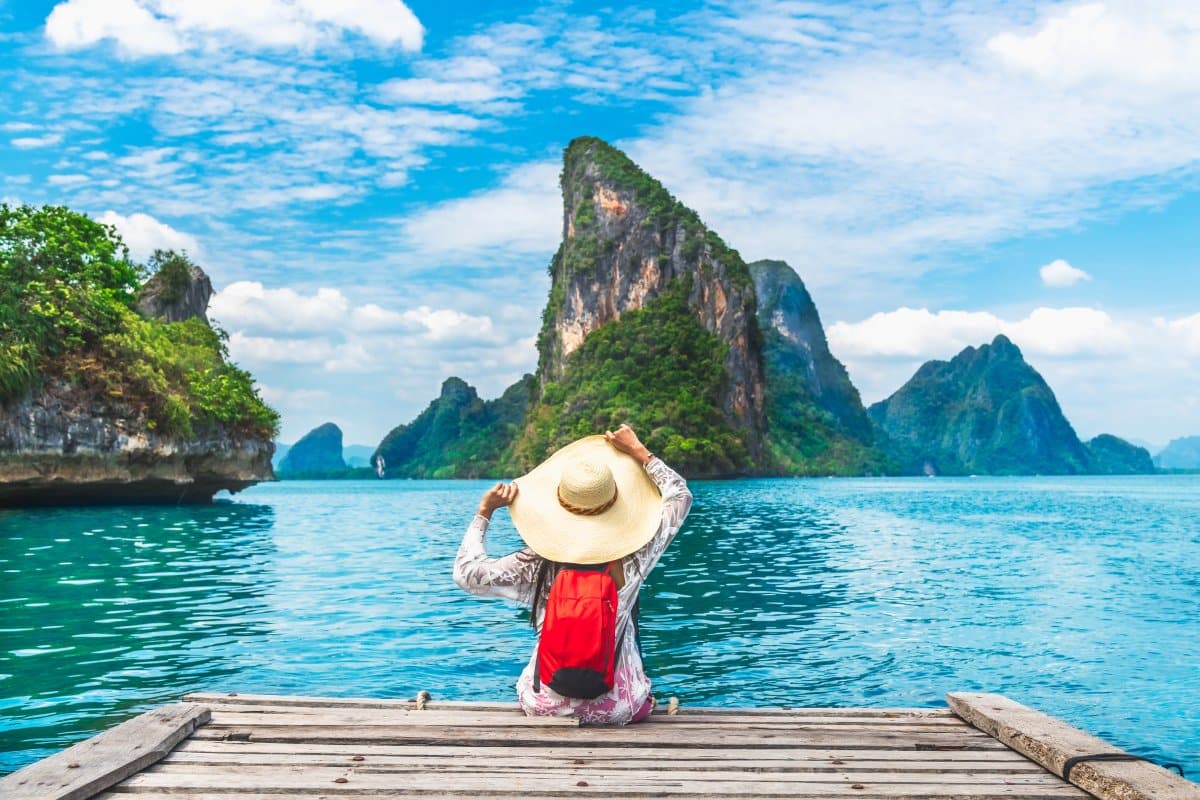
Traveling to Asia can be a dream come true for many, offering a rich tapestry of cultures, cuisines, and landscapes. However, navigating the vast array of options for flights and accommodations can be daunting, especially when trying to stick to a budget.
Fear not! This guide is packed with 15 practical tips to help you find affordable flights and accommodations in Asia, ensuring your adventure doesn’t break the bank. From timing your bookings to uncovering hidden gems, these strategies will make your Asian journey both memorable and economical.

Use Incognito Mode for Searching Flights
When searching for flights, use your browser’s incognito mode to avoid price hikes based on your search history.

Be Flexible With Travel Dates
Flying mid-week or during off-peak seasons can significantly reduce airfare costs.
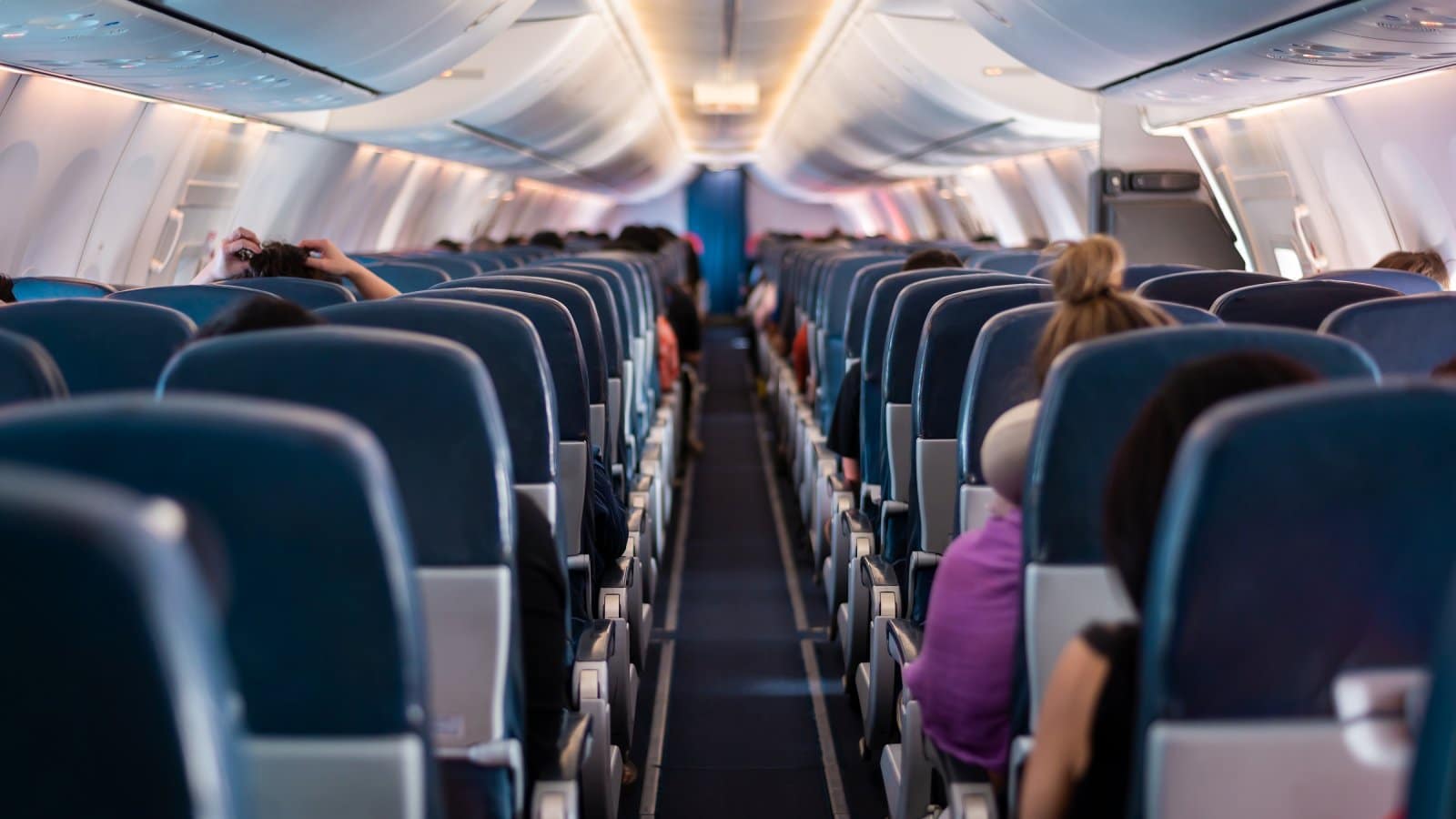
Consider Budget Airlines
Asia is home to several budget airlines like AirAsia and Scoot that offer cheap flights between major cities.

Book in Advance
For the best deals, try to book your flights and accommodations several months in advance.

Use Flight Comparison Websites
Websites like Skyscanner or Kayak allow you to compare prices from different airlines and choose the cheapest option.

Opt For Connecting Flights
Direct flights are convenient but often more expensive. Consider flights with layovers for lower prices.
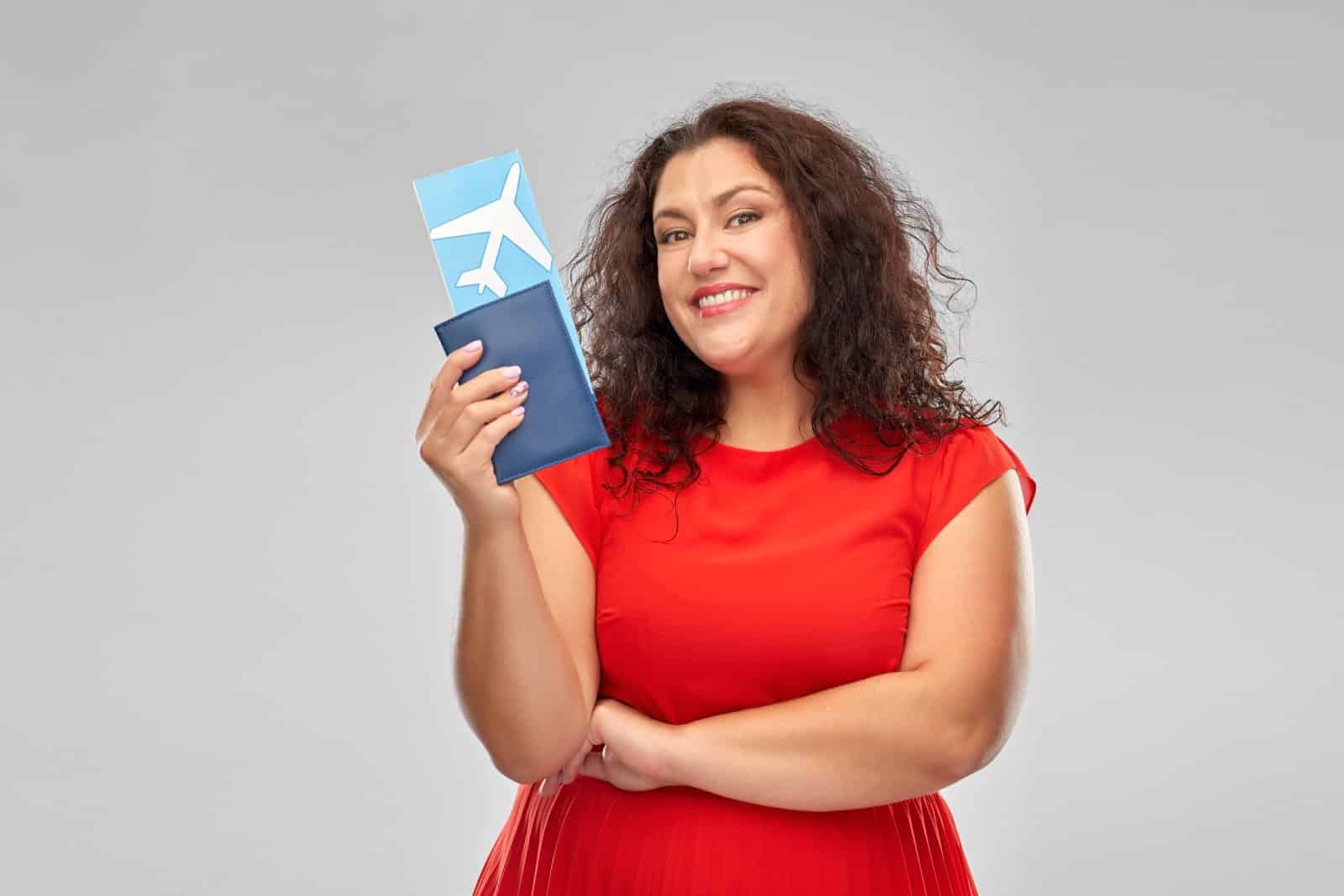
Join Frequent Flyer Programs
Collect miles with airlines’ frequent flyer programs to redeem on future flights.
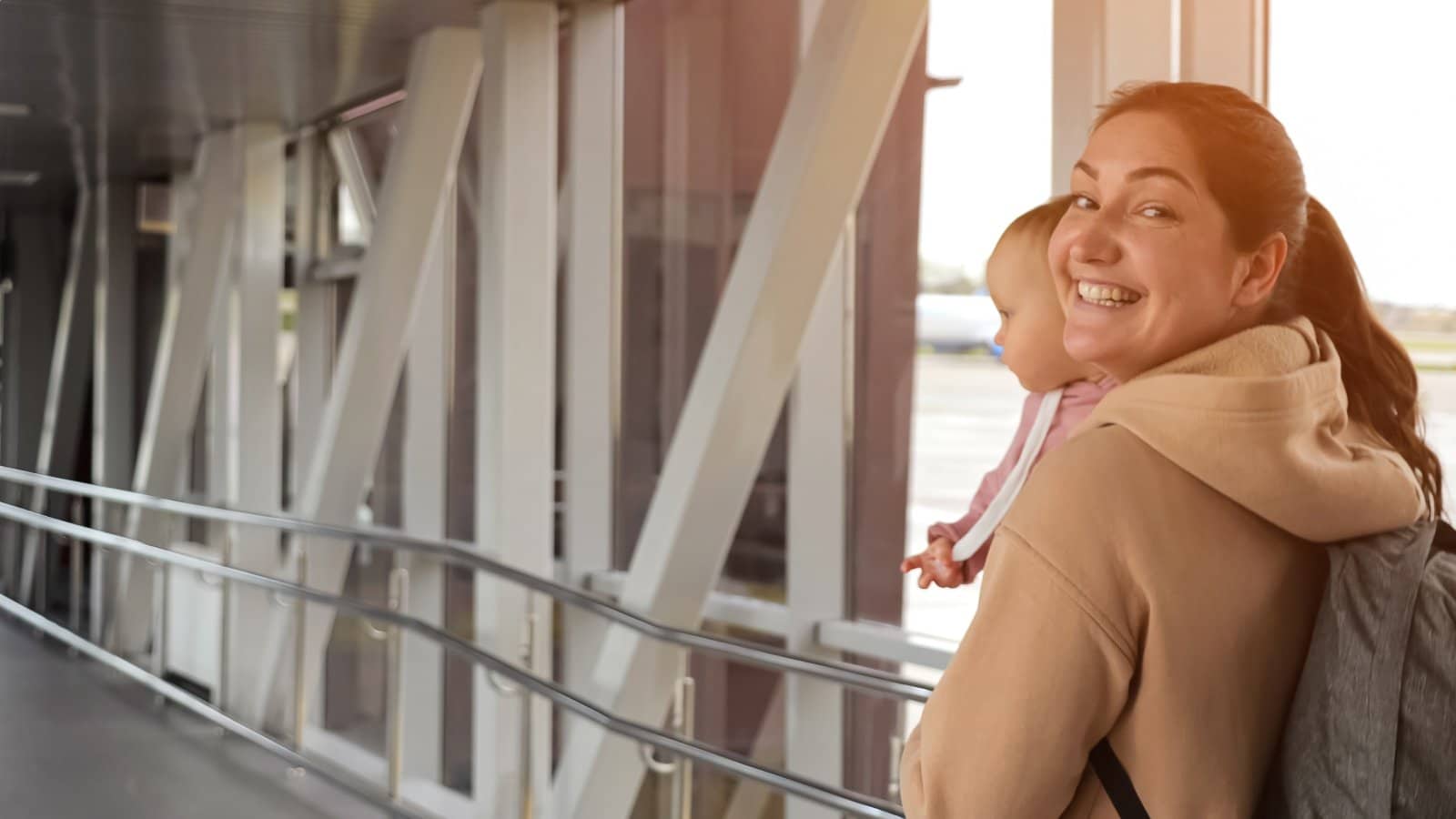
Check for Alternative Airports
Flying into lesser-known airports can sometimes be cheaper than major international hubs.
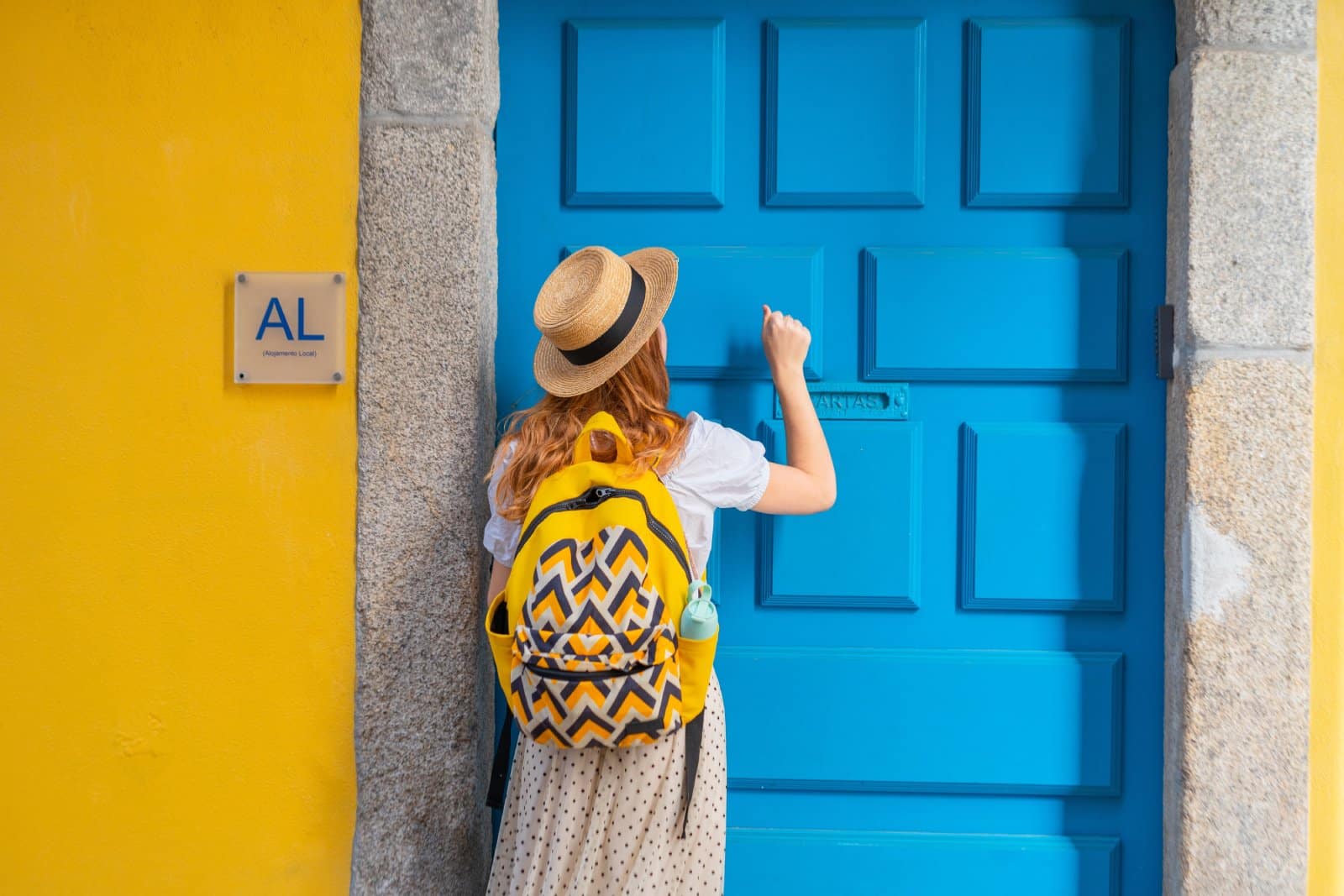
Stay In Hostels or Guesthouses
Opt for hostels, guesthouses, or homestays rather than expensive hotels.

Use Booking Platforms for Accommodation Deals
Platforms like Booking.com, Agoda, or Hostelworld often have special deals or discounts.\

Consider Long-Term Stays
For longer trips, renting apartments or rooms can be cheaper than daily rates in hotels.
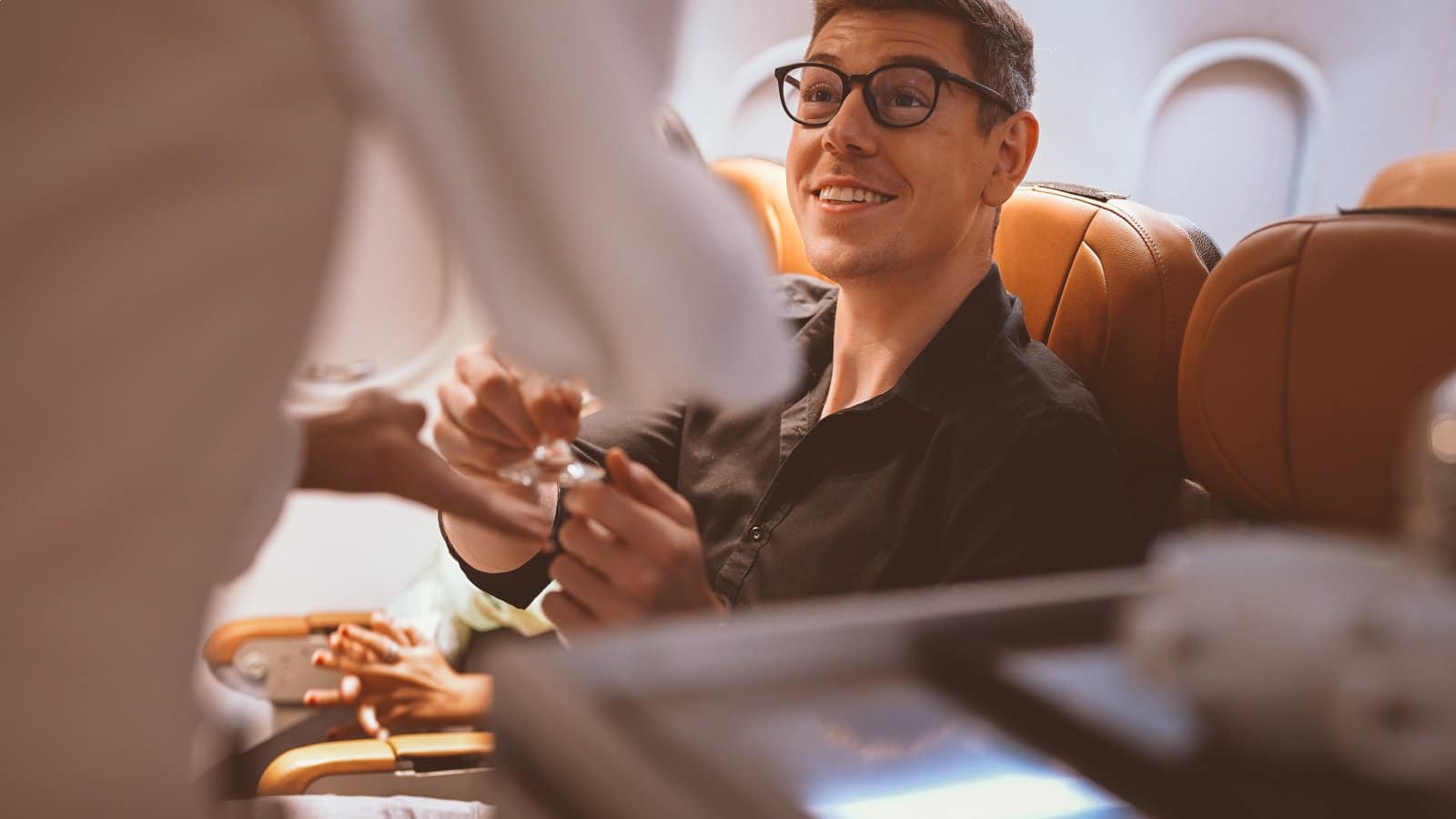
Explore Loyalty Programs of Booking Sites
Join loyalty programs of booking platforms to get access to exclusive deals or discounts.

Utilize Local Travel Agencies
Local travel agencies sometimes have special rates or packages that aren’t available online.
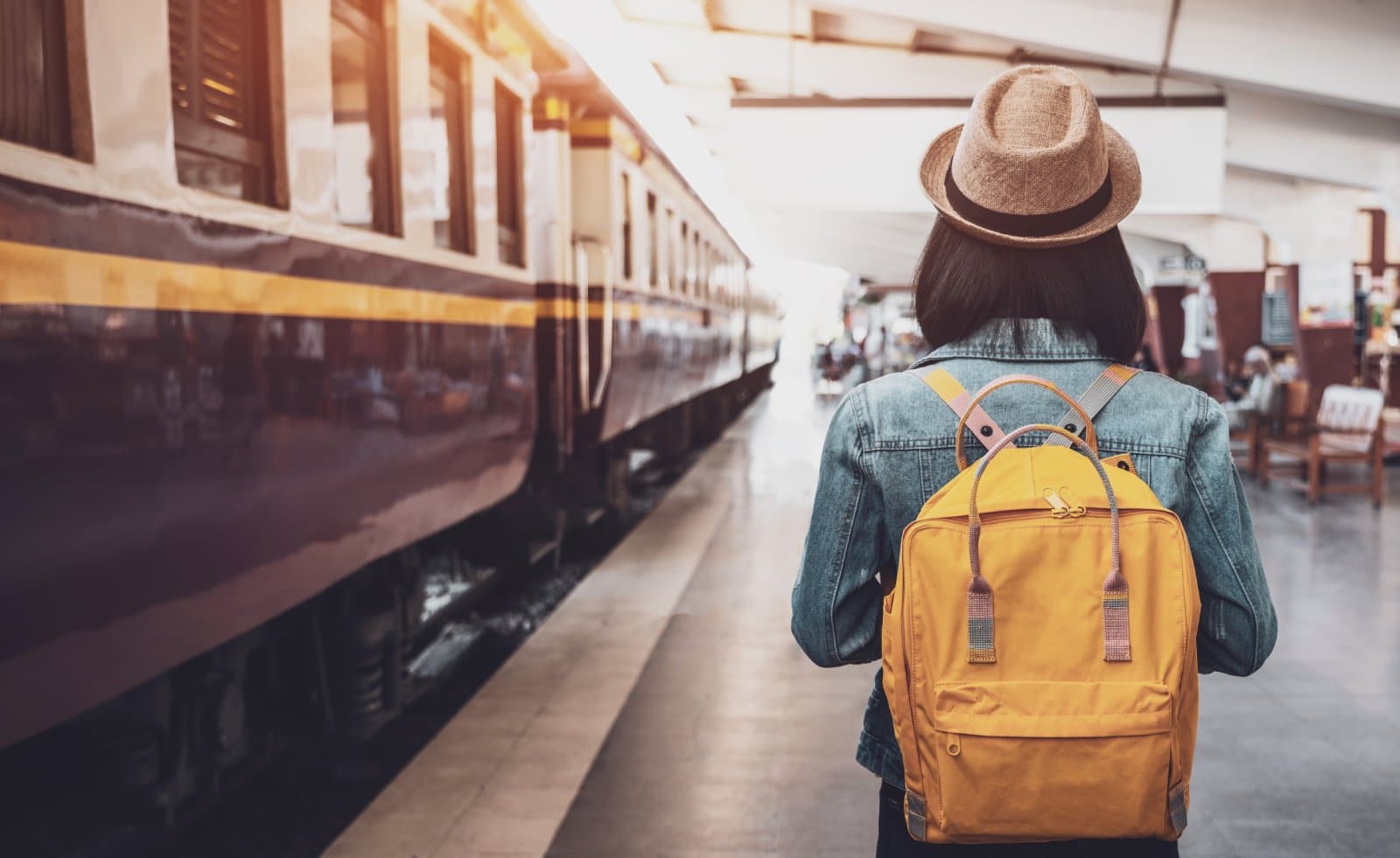
Travel Overnight
Taking night trains or buses can save you one night’s accommodation cost.

Network With Other Travelers
Other travelers can be a great resource for tips on cheap accommodations and transport.
Traveling through Asia doesn’t have to drain your wallet. With the right strategies, you can find affordable flights and accommodations that allow you to explore this diverse and vibrant continent on a budget.
Remember, being flexible and doing a bit of research can lead to significant savings. Embrace these tips, and you’ll be well on your way to an economical yet enriching Asian adventure. Safe travels and happy exploring!
More Articles Like This…
Barcelona: Discover the Top 10 Beach Clubs
2024 Global City Travel Guide – Your Passport to the World’s Top Destination Cities
Exploring Khao Yai 2024 – A Hidden Gem of Thailand
The post Budget Traveler’s Guide: Essential Tips for Scoring Affordable Flights and Accommodations in Asia republished on Passing Thru with permission from The Green Voyage .
Featured Image Credit: Shutterstock / Day2505.
For transparency, this content was partly developed with AI assistance and carefully curated by an experienced editor to be informative and ensure accuracy.
More for You
Do I have to pay off my spouse's debts when they die? Here's what you're responsible for and what you aren't after a loved one's death
Fox Host Tells Jim Jordan People Are 'Sick' of Investigations Going Nowhere
One of these pictures of me is real and the other is AI – but which is which?
20 Loyal Dog Breeds That Will Never Leave Your Side
Spacecraft spots "spiders" scattered across surface of Mars
The 10 happiest places to live in the US
Super Bowl-winning quarterback explains why Falcons drafting Michael Penix Jr was 'brilliant'
I’m 55 with no kids. I was unhappy at work so I took early retirement. I’ve more than $2.7 million in stocks and $1.6 million in real estate. Is that enough?
This is one of the most advanced humanoid robots in the world
Smartest Dog Breeds, Ranked
Scientists finally confirm what lies inside the Moon
The 25 Most Dangerous Cities to Drive In
17 Mythical Places That Actually Exist
Should you avoid living in a 55-plus community? Here are 5 big problems with adult retirement communities in America
Royal Caribbean Forced to Cancel Alaska Sailing With Guests Already Onboard
The Rules for RMDs Are Complicated. They Have Changed Yet Again.
Muskox mom teaches baby how to head-butt in rare footage
Lost Planet Theia Is Hidden Inside the Earth, New Study Says
Meet Nvidia CEO Jensen Huang, and the $2 trillion company powering today's AI
5 Things You Need To Stop Doing If Your Car Has An Automatic Transmission

IMAGES
VIDEO
COMMENTS
Vitamins: Public transportation and jet lag can be tough on the immune system until your body readjusts. Consider bringing vitamins or supplements to boost the immune system, or better yet, take advantage of the delicious fruit in Asia. Drink Mixes: The tap water in many countries in Asia isn't safe.
Welcome to our ultimate packing list for Asia travel essentials. From mountainous jungle to enticing oceans, massive religious monuments to historical ruins, Asia has so much to discover. When you also consider how cheaply you can travel much of the continent, there is no wonder it is one of the best backpacking destinations in the world.
The Basic Stuff To Pack For Southeast Asia. On top of the essential items listed above, here is an additional suggested checklist of what to pack for a trip to Southeast Asia: 1-2 pairs of comfortable pants/jeans. 1-2 pairs of shorts (summer/late spring) A few pairs of socks. (Sexy) underwear x 5.
Step 1: Choosing the Best Travel Bag. Step 2: Choosing Your Travel Clothes. Step 3: Packing Other Travel Essentials. Step 4: Choosing What Electronics to Bring. Step 5: Toiletries Packing List. Transport & Accommodation Tips Around Asia. Finding Places to Stay in Southeast Asia. Last Piece of Advice for Southeast Asia:
Travelan helps you to enjoy all your experiences while traveling - including the food. Travelan is a packing essential, especially while traveling in Southeast Asia, as you can avoid the expected and unexpected stomach issues that come with the territory. You can take one capsule before your meal and let Travelan do the rest.
View on Amazon.com . 3. Virtual Private Network (VPN) A VPN is super useful, and can really be a lifesaver when you're traveling in Asia. It'll protect you against hackers if you connect to WiFi in public places and it can be used to get around paywalls on popular news sites.
What to include on your Asia packing list. Layers, check. Sunscreen, check. Rain poncho, check. Your Asia packing list is getting off to a good start and there's plenty more to add to it, but we'd recommend leaving a little space in your luggage for the fantastic souvenirs that will remind you of your epic exploration of this varied ...
In Asia's humidity, cuts, burns and grazes can become infected really easily and it's essential to take care of the wound so that it doesn't lead to a bigger problem. Anti-septic wipes, alcohol, iodine and anti-septic cream are a must, as well as decent plasters (band-aids) and bandages to cover the cut up.
Key Takeaways: Asia Packing Checklist provides essential items for stress-free travel in Asia.; Know what to pack for a trip to Asia with our comprehensive packing list.; Practical packing tips to ensure you have everything you need. Must-have items for traveling in Asia, from clothing to travel accessories.; Stay organized with our packing checklist for backpacking in Asia.
The ultimate packing checklist: my top 12 travel essentials for Southeast Asia. Josie. 18/01/2024 09/02/2024. I've put together the ultimate packing checklist, including 12 travel essentials that I couldn't have survived without during the last 5 months in Southeast Asia.
When it comes to backpacking travel essentials for Southeast Asia, always keep a few key things in mind: Southeast Asia's climate goes from rainy and semi-cold to extremely hot and humid, so that means packing light in every sense of the word. Light clothes to wear, a light bag to hold your things, and a light number of things in that bag, so ...
Sampling the food and drink in a new country is all part of the travelling experience and one of the best parts of visiting Southeast Asia is to eat the local food. Here's a few tips to keep you safe and avoid the dreaded traveller's belly! 26. Don't drink the tap water.
Travel backpacks and luggage. Essential luggage for backpacking Asia includes a travel backpack. The first item on your backpacking essentials list should, of course, be a good travel backpack. I bought mine several years ago at REI in the USA, so it's no longer available, but here are some things to consider and what I like about mine.
17. battery operated toothbrush. The next packing essential for South East Asia is a battery operated toothbrush. These are an absolute must so you don't have to worry about charging your toothbrush when travelling. This one is the best on the market! Buy a battery operated toothbrush here.
1 Fleece, Hoodie, or Cardigan. 1 Rain Jacket or Light Jacket. 1 Flip Flops - ESSENTIAL for a backpacking trip to Southeast Asia! Choose a pair of flip flops that can be dressed up like my favorite iPanema's sandals. These not only work like flip flops but as a dressier pair of sandals too. Plus, they're cute and comfy!
1 pair of leggings. 2 pairs of lightweight cotton pants bought in Southeast Asia. 2 pairs of shorts, at least one with pockets that button or zip (easy to carry money and a key on a night out) a scarf for covering shoulders (buy in Southeast Asia) 1 lightweight rain jacket. a fleece (if traveling up north during the winter or trekking.
Essential if travelling in Asia in the monsoon season, it pays to buy a half-decent poncho to stay as dry as possible during a downpour. You can find cheap plastic ones in most supermarkets like 7/11, which do the job in emergencies but tend to rip quite easily and only survive a couple of storms. Pack a lightweight rain jacket or go on a ...
Another travel essential for Southeast Asia is a rain jacket because yes, it rains in South East Asia! Even if you're going in the dry season you may still see a random downpour. You'll be able to buy a one-use plastic mac in most places in South East Asia if you get caught in the rain but packing a small fold away rain jacket is a great ...
Travelers must carry their passport, visa, travel insurance, and any photocopies of essential documents in a secure and waterproof pouch. This preparedness ensures a smooth entry and exit. It provides vital information in case of emergencies, making it an absolute necessity for a hassle-free and safe exploration of Southeast Asia.
Osprey Fairview 40L (Designed for Women) Thule Subterra 34L. Best Full-size Travel Backpacks for Traveling Asia. Osprey Atmos AG 65L. Osprey Porter 65L. Osprey Ariel 65L (Designed for Women) Osprey Aether Plus 70L. Osprey Renn 65L (Designed for Women) Deuter Aircontact Core 65+10.
20 Backpacking Essentials for Asia: My Favorite Travel Gear. 1. A good day-trip/hiking backpack: Fjallraven - Raven 20 backpack. On any day adventure, a gal (or anyone for that matter) needs her trusty backpack, especially on long hikes. Something lightweight, durable and that can hold the essentials is a necessity.
Extended Travel: A daypack in the 50-60 liter range comes with pros and cons but the biggest pro is that you have way more room for thick clothing if your travel to Asia involves a 4 season climate! Comfort for Heavier Loads : If you anticipate carrying bulkier items or need to pack for changing weather conditions, a larger capacity allows for ...
Explore Japan with this trusty guide: essential travel tips, cultural insights, accommodations, and entertainment for an epic trip to Japan adventure. Blog; Go to app ... Bowing is a common way of greeting in many parts of Asia, with the depth of the bow indicating the level of respect. A slight bow is appropriate for a casual greeting, while a ...
Provided by Passing Thru Travel Budget Traveler's Guide: Essential Tips for Scoring Affordable Flights and Accommodations in Asia. Traveling to Asia can be a dream come true for many, offering a ...